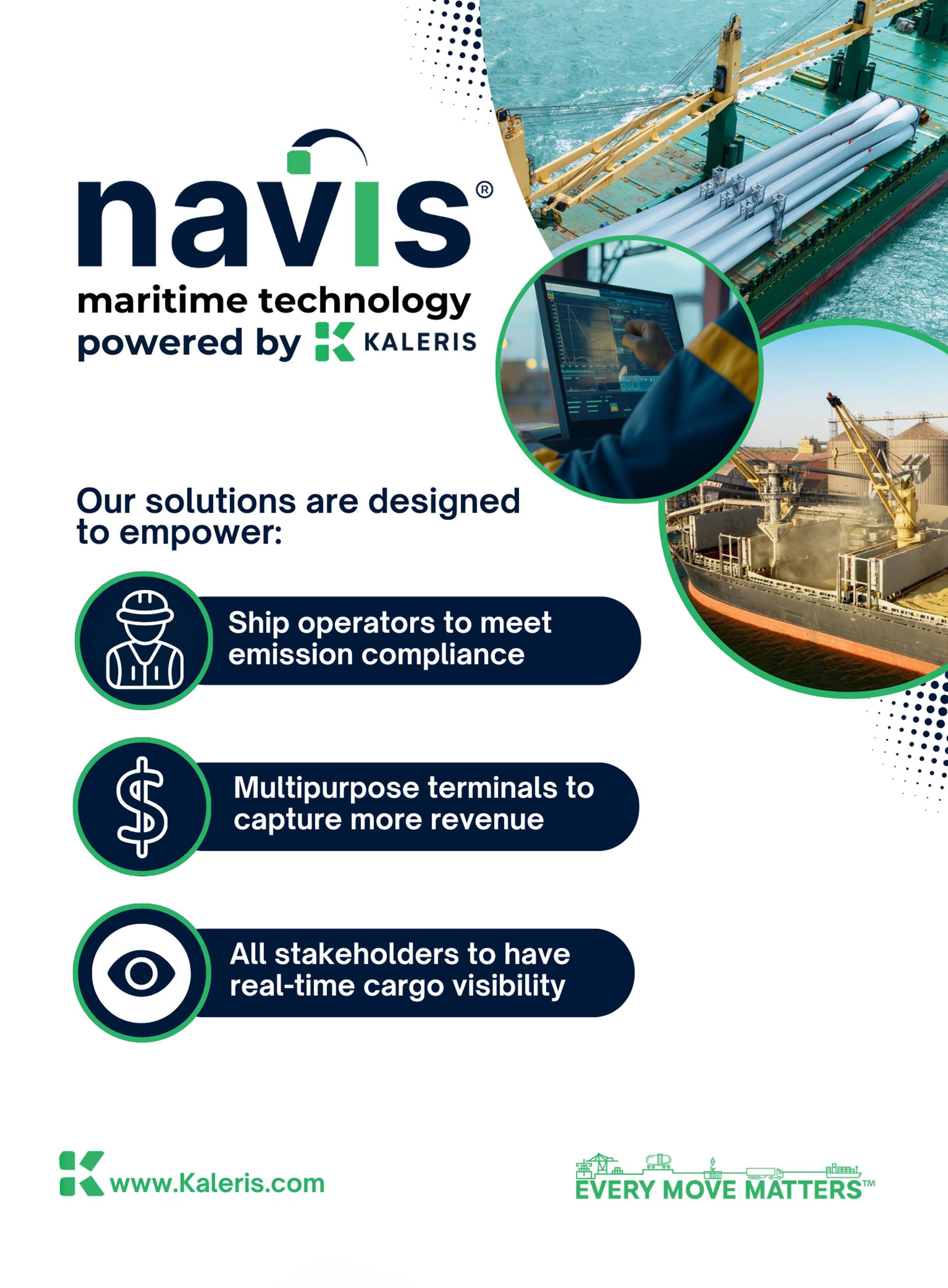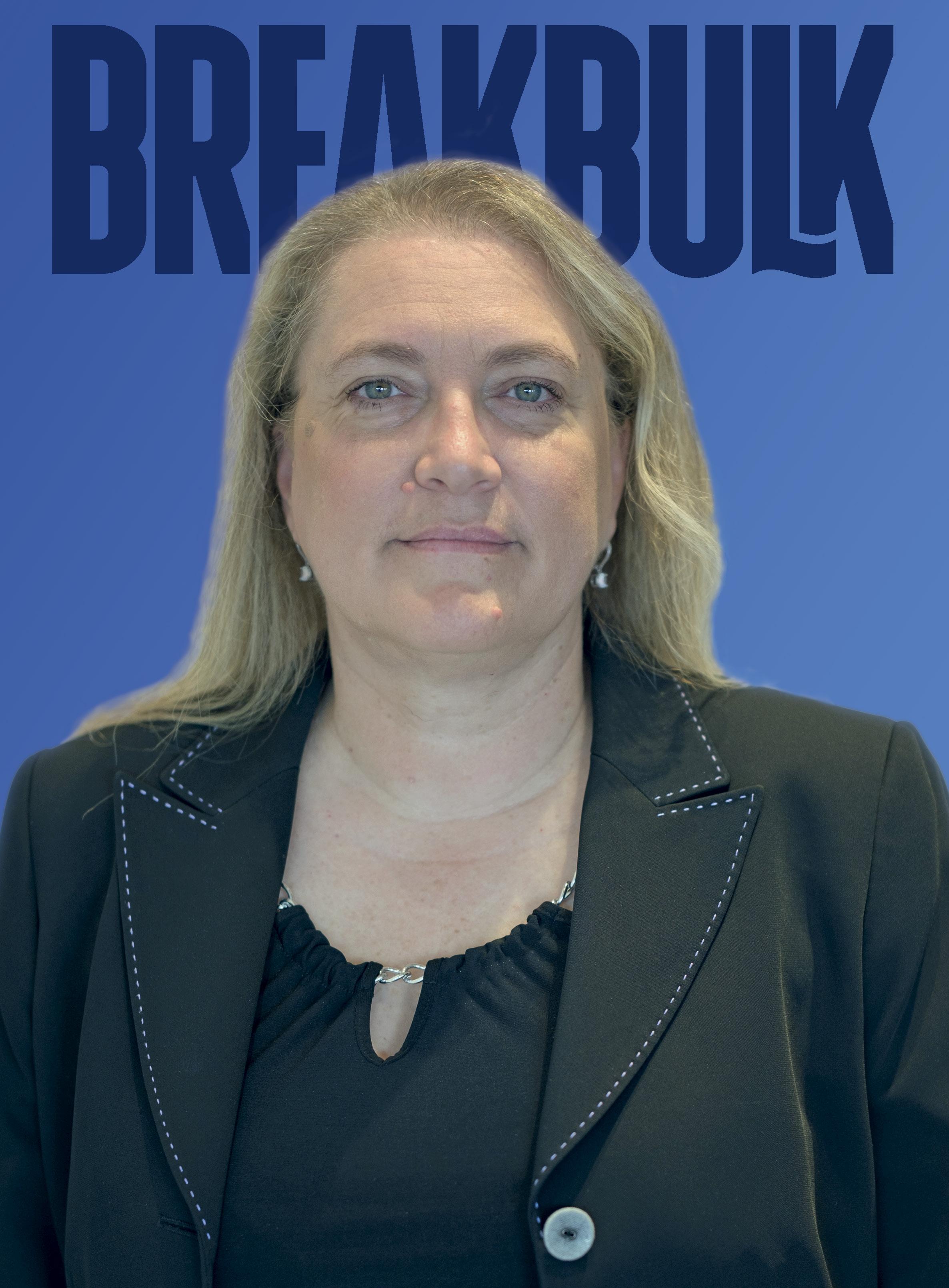

MAKING THE IMPOSSIBLE POSSIBLE
UTC’s Diana Davila on the Importance of Hard Work and Great Mentors
THE US POLICY ISSUE
Impact at Home and Abroad
Plus News and Features From Our Writers Around

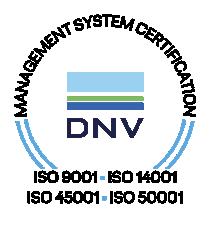
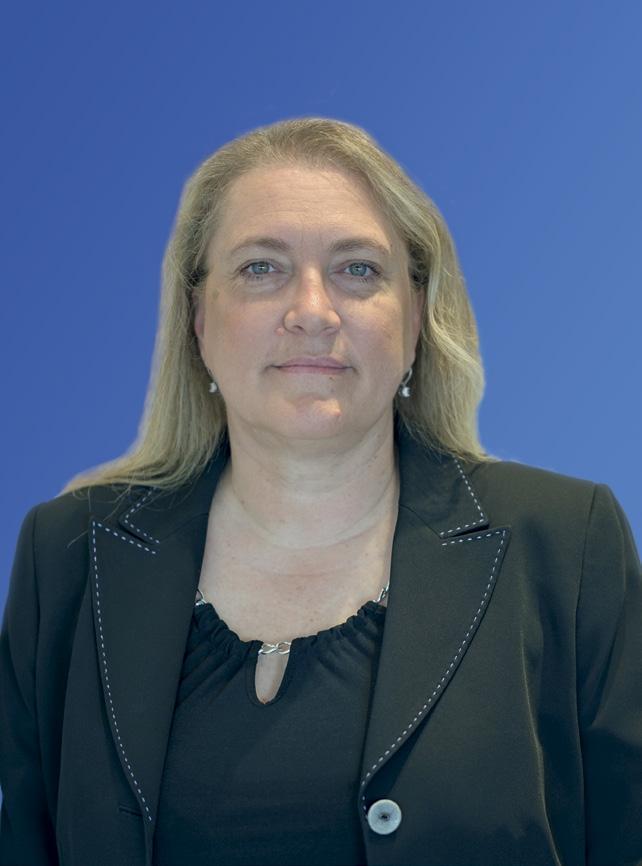
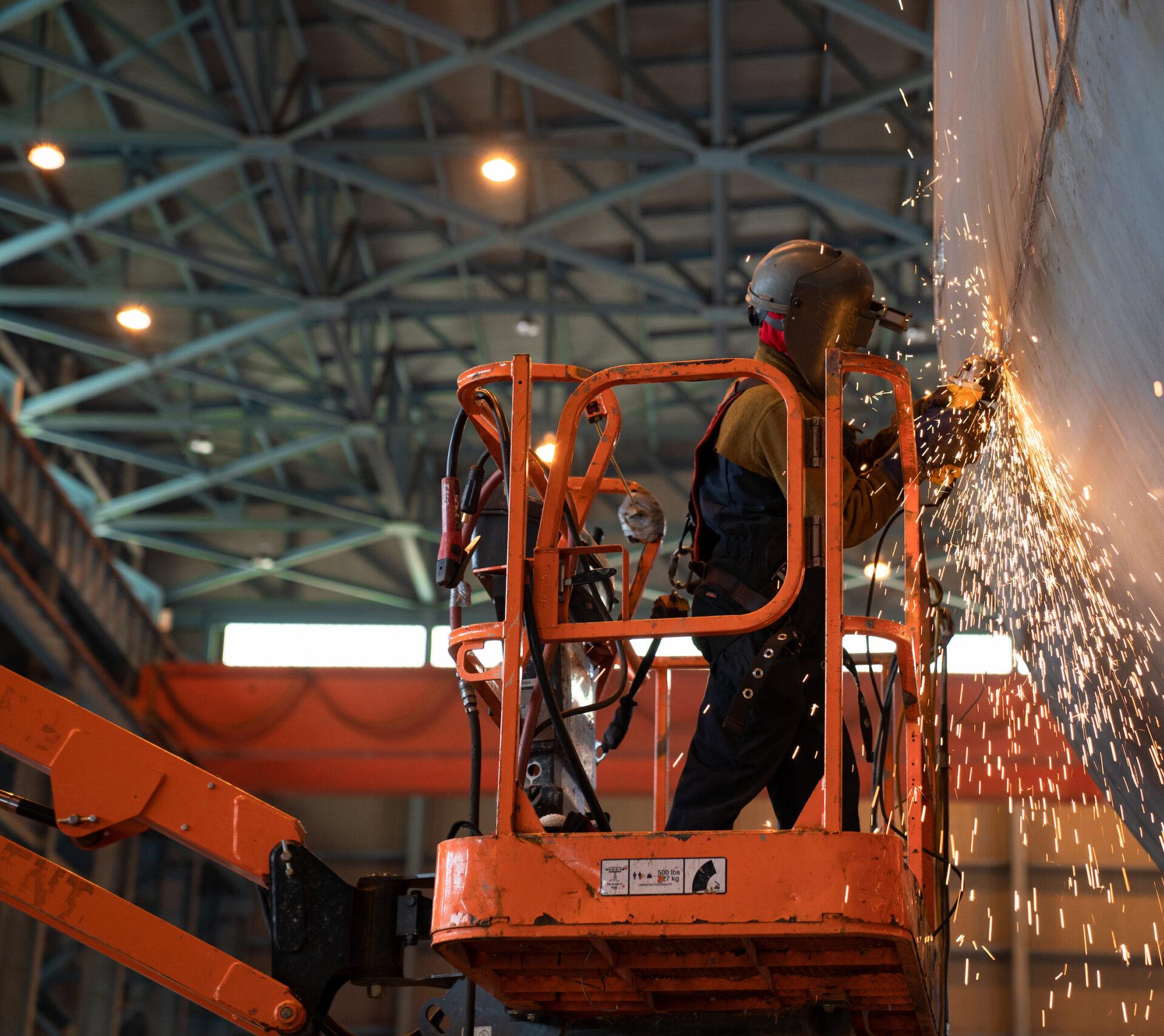
and Texas Fuel Different Cargo Booms
Policies Under Trump: Which Ones Matter to Project Cargo?
Leaders Reveal Which Federal Moves Are Driving Projects, and Those That Aren’t
of Chicken” Tariffs and
LNG Exports
Trade Wars and the Power of American Gas
Logistics Moves Critical Cargo Smarter,
and With Tighter Precision When Global Conflict Disrupts Significant Trade Lanes
92 Iberian Blackout: A “Wake-Up Call for Europe”

Be a part of Breakbulk

Breakbulk Americas Sept. 30 - Oct. 2
George R. Brown Convention Center Houston, USA
Breakbulk Middle East
Feb. 4-5
Dubai World Trade Centre Dubai, UAE
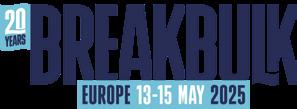
Breakbulk Europe Jun 16-18
Rotterdam Ahoy Rotterdam, Netherlands
Breakbulk Asia
Nov. 18 - 19
Singapore
74 Americas Nuclear Hopes
Stir in Latin America
Fresh Momentum Throughout Region Fuels Prospects for Project Progress
78 Americas Heavy Lifting Breaks the Bottleneck
Mammoet Raises Massive Arches for US$1.6B Rail Upgrade
82 Americas From the Forwarding Frontlines to Energy Storage Specialist
Fluence’s Lorena Alvarez on Her Move From Service Provider to Shipper
86 Africa
North Africa Gains Ground as Trade Flows Shift South Port Upgrades, Trade Corridors and Foreign Investment Are Redrawing Supply Chains — but Security Threats Loom
90 Middle East
Red Sea Gateway Terminal Expands Into Multipurpose
Port Operations
“Natural evolution” to Capture Emerging Opportunities
92 Europe Iberian Blackout: A “Wake-Up Call for Europe”
Grid Upgrades Expected to Drive Demand for Specialized Transport Services
96 Europe Evolving Expectations in Project Logistics
For Shippers, Adaptability, Trust and Data Are Key
98 Asia Logistics Providers Brace for Taiwan Energy Boom
Surging Energy Demand Fuels Need for Specialized Transportation
102 Europe J M Baxi Sets Heavy-Haul Record for IOCL Panipat
Massive Reactor Moves Required Year-Long Coordination Across Three States

Houston, TX, USA September 30October 02, 2025


FACING UNCERTAINTY, FINDING DIRECTION
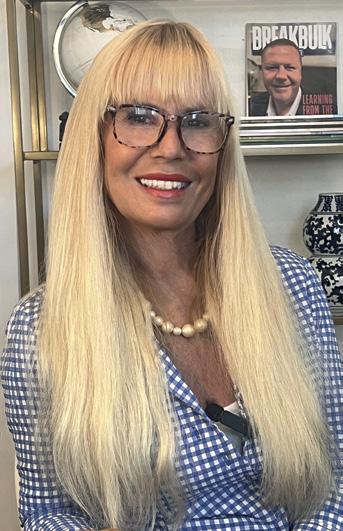
Uncertainty dominates conversations thanks in large part to the U.S. government, and the challenges around projects and their cargoes are significant. That’s why we’ve worked closely with the Breakbulk Editorial Board to put a package of stories together to make sense of what’s happening and where things are headed.
We start with our main feature: 10 U.S. policies ranked by industry leaders for their impact on project development. From tariffs to permitting shifts, port fees and reshoring incentives, this article sets the stage for deeper analysis throughout the issue. You’ll find a look at the RoRo sector, where potential fees and new tariffs could disrupt global vehicle flows, and an assessment of the feasibility of bringing shipbuilding back to America. Don’t miss “Two States, Two Strategies,” where we explore how California and Texas are responding to this political era to drive energy projects in their states.
Next, we follow U.S. LNG exports across global routes before returning stateside for two profiles in leadership. Diana Davila of forwarder UTC Overseas shares what it takes to navigate shifting U.S. policies and stay globally competitive. Lorena Alvarez, senior logistics operations manager for the Americas at Fluence, brings a perspective from the shipper side, where she discusses the company’s drive to increase domestic manufacturing.
We then head to Latin America for a story on the nuclear boom, specifically the rise of small modular reactors. Did
you know that Argentina’s CAREM25 project is the world’s first SMR to reach construction stage? This story will give you a clear picture of the opportunity throughout this region.
From Spain, don’t miss our story on the Iberian Blackout, which includes a first-person account from Laso Transportes. We also look at Taiwan’s shift from nuclear to oil and gas. You’ll also find a full recap of Breakbulk Europe, which celebrated its 20th anniversary this year.
This issue also marks the start of a new editorial track for Breakbulk Magazine focused on military logistics and infrastructure. It all came together for me during one of my recent conversations about military logistics with Fayçal Boumerkhoufa, an expert in air transport including AN-124s, who said modern logistics was born out of lessons from World Wars I and II.
Yes! We could develop editorial that would bring lessons from the military side to the Breakbulk community, while providing insight into the logistics behind today’s headlines. That idea inspired our first article in the series, featuring Tyler Sullivan, a former Army Ranger and now executive vice president of defense solutions at ICAT Logistics. If you’ve worked in this space or have a story to share, I’d love to hear it.
Not your typical beach read, but it will be time well spent under an umbrella, drink in hand and phone in the other.
The next issue is already underway with more stories to help you find clarity in a world where uncertainty is having its moment. We hope you’ll join us this fall in Houston to celebrate the 35th anniversary of Breakbulk Americas.
Best,
Leslie Meredith Editorial Director Breakbulk Events & Media
Editorial Director
Leslie Meredith
Leslie.Meredith@breakbulk.com
Senior Reporter
Simon West simon.west@breakbulk.com
Designer Mark Clubb
Reporters
Damon Evans
Luke King
Felicity Landon
Amy McLellan
Malcolm Ramsay
Liesl Venter
Breakbulk Magazine Editorial Board
John Amos Amos Logistics
Tina Benjamin-Lea Northvolt Drei Project GmbH
Fayçal Boumerkhoufa Ascent Global Logistics
Dea Chincuanco dship Carriers
Elisabeth Cosmatos Cosmatos Group of Companies/ The Heavy Lift Group
Dennis Devlin DT Project America
Payne Fischer Kuehne+Nagel
Dharmendra Gangrade Larsen & Toubro
John Hark
Bertling North America / Texas A&M University
Itoro Ibanga Air Liquide
Margaret Kidd Houston Maritime Center & Museum
Jake Swanson DHL Global Forwarding
Edward Talbot Roll Group
Grant Wattman Jade Management Group, Inc.
Andrew Young Bechtel Corporation
Portfolio Director
Jessica Dawnay Jessica.Dawnay@breakbulk.com
To advertise in Breakbulk Media products, visit: http://breakbulk.com/page/advertise
Subscriptions
To subscribe, go to https://breakbulk.com/page/ breakbulk-magazine
A publication of Hyve Group plc.
The Studios, 2 Kingdom Street Paddington, London W2 6JG, UK
Leslie Meredith
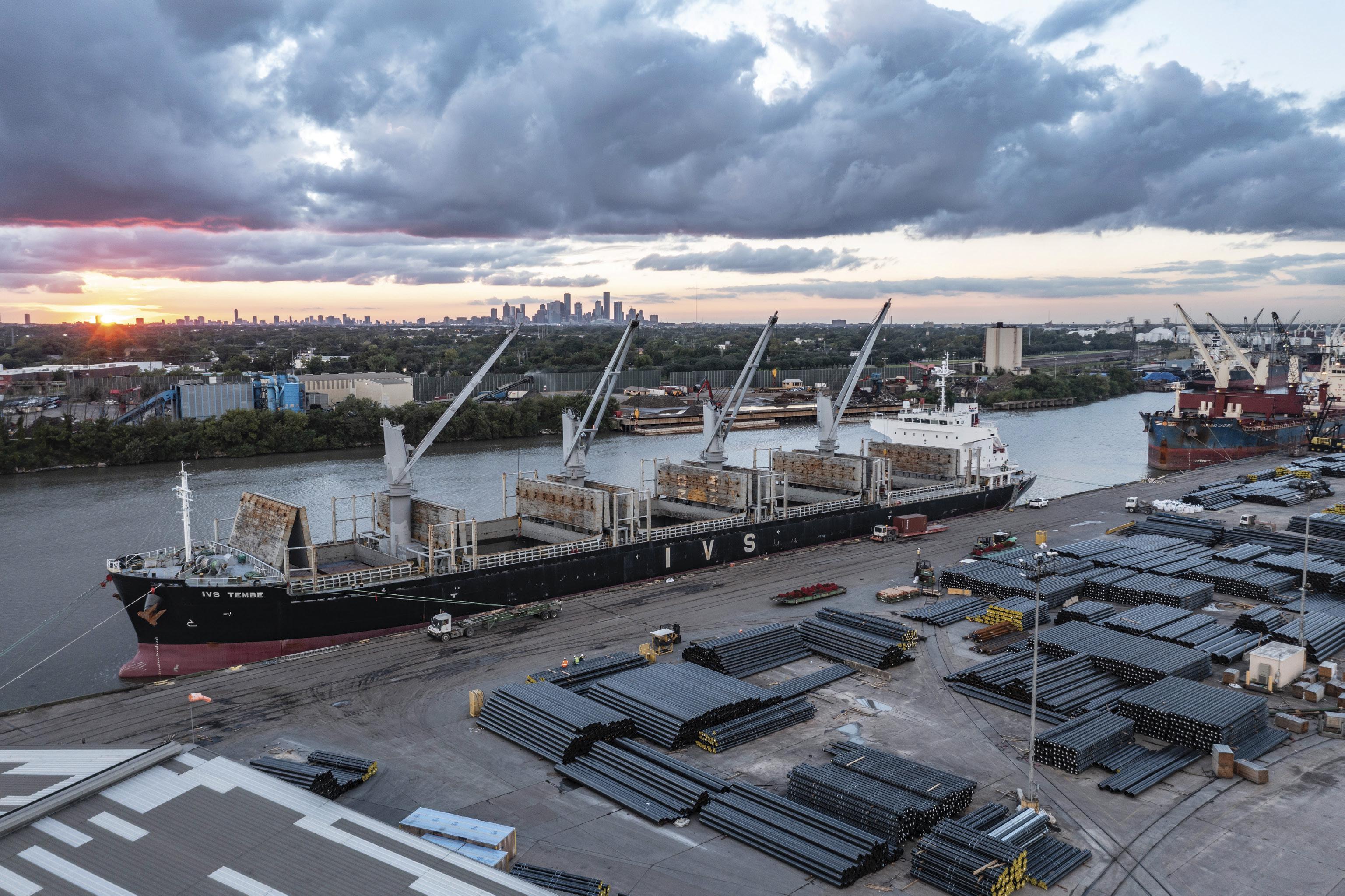
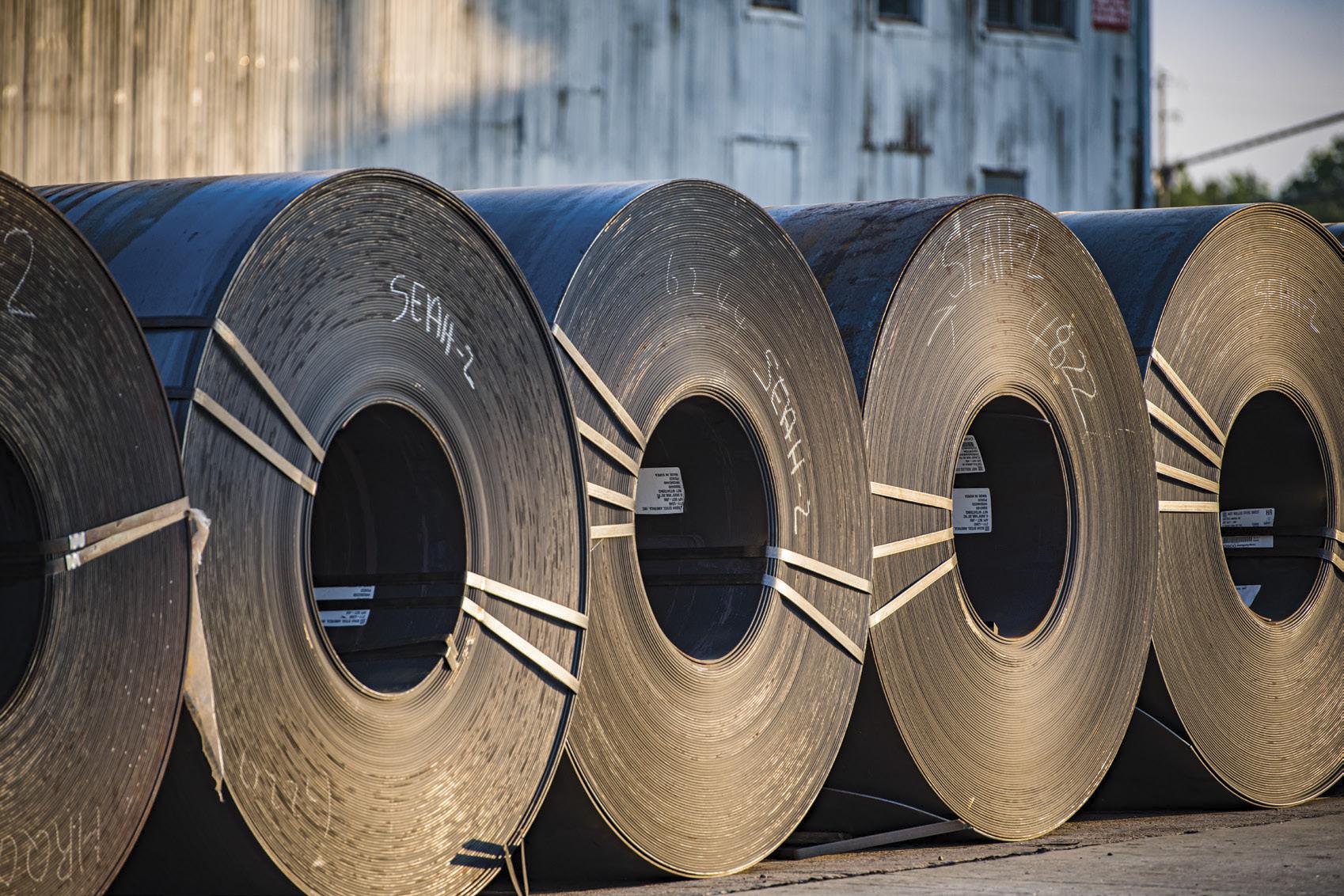
Exhibitors and Breakbulk Global Shipper Network members in this issue:
Movers & Shakers (p. 10)
DP World, QTerminals, Total Movements, deugro, Mammoet, Trans Global Projects, Maersk, Combi Lift, Gulf of America Logistics, Superior, Chevron, Konecranes
America’s Shipbuilding Comeback: Promise or Pipe Dream? (p. 34)
Bertling Logistics Services, CMA CGM, Port Houston, GE Vernova
Tariffs and Tolls Weigh on RoRo Sector (p. 40)
Wallenius Wilhelmsen, Port Freeport
Ask the Experts: Tariffs, Trade and What Comes Next (p. 44)
UTC Overseas, Casper Customs
Two States, Two Strategies (p. 50)
Port of San Diego, Port of Long Beach, Port of Corpus Christi, Bechtel
10 US Policies Under Trump: Which Ones Matter to Project Cargo? (p. 56)
UTC Overseas, Roll Group, Port of San Diego, Siemens, RWE, Bechtel
The Thrill of Making the Impossible Possible (p. 66)
UTC Overseas
Nuclear Hopes Stir in Latin America (p. 74)
Kando Global, Rowners, THLG
Heavy Lifting Breaks the Bottleneck (p. 78) Mammoet

From the Forwarding Frontlines to Energy Storage Specialist (p. 82)
Fluence, Mitsubishi Power Americas, Siemens Energy
North Africa Gains Ground as Trade Flows Shift South (p. 86)
DB Schenker, Khedivial Marine Logistics
RSGT Expands Into Multipurpose Port Operations (p. 90)
Red Sea Gateway Terminal, MAWANI Saudi Port Authority
Iberian Blackout: “A Wake-Up Call for Europe” (p. 92)
Laso Transportes, Noatum Project Cargo
Evolving Expectations in Project Logistics (p. 96)
Fracht Group, Bechtel, Air Liquide, Siemens Energy
Logistics Providers Brace for Taiwan Energy Boom (p. 98)
AAL Shipping, EZ LINK, Vestas
J M Baxi Sets Heavy-Haul Record for IOCL Plant (p. 102)
J M Baxi, Larsen & Toubro (L&T)
Key: Exhibitor
Breakbulk Global Shipper Network Member
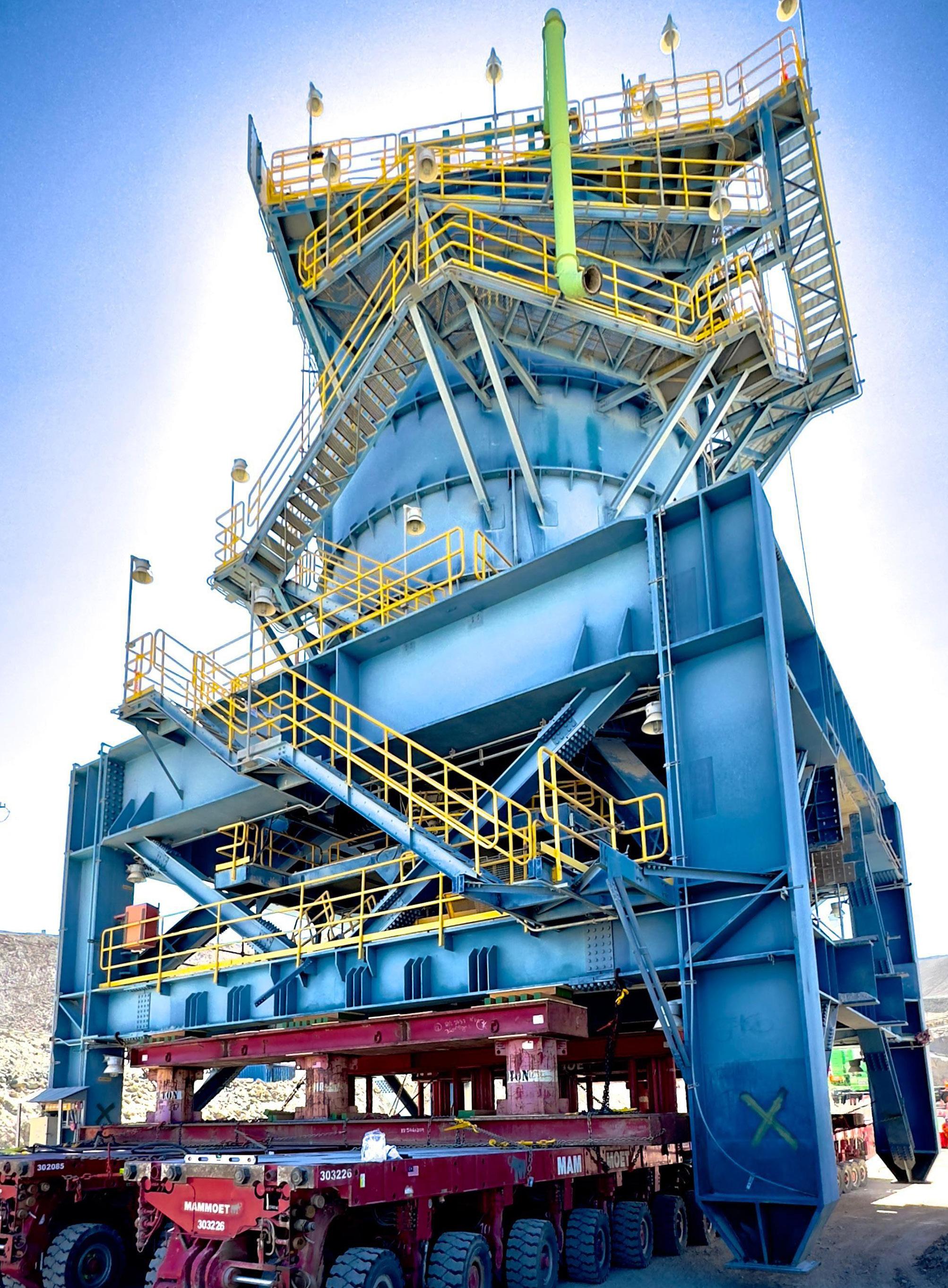
Mammoet transports crusher units between mines in Chile. Credit: Mammoet
MOVERS AND SHAKERS
Highlighting Recent Industry Hires, Promotions and Departures
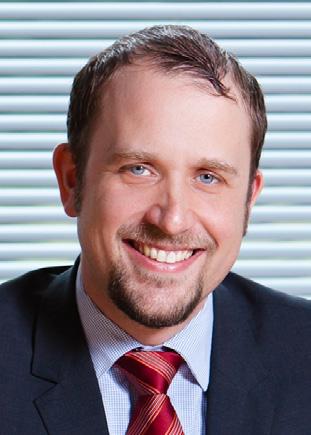
DP World
DP World has named industry veteran Mark Slade as its new vice president of freight forwarding for Canada. In his new role, Slade will focus on growing the company’s service offerings, building customer relationships and enhancing supply chain solutions. Before joining DP World, he spent 22 years with DHL Global Forwarding in Asia where he held several senior roles including managing director for Hong Kong & Macau, and Japan.
“We are thrilled to welcome Mark to the DP World team,” said Doug Smith, CEO of DP World in Canada. “His extensive industry experience and leadership will be instrumental in expanding our freight forwarding operations in Canada. His strategic vision perfectly aligns with our mission to provide agile and customer-centric supply chain solutions.”

Chevron
Laura Lane has begun her new role as vice president and chief corporate affairs officer at Chevron. The Houston-based executive will oversee Chevron’s government affairs, communications and social investment activities. She is taking over from Al Williams, who is retiring after 34 years at the company. Lane previously served as EVP and chief corporate affairs and sustainability officer at UPS, and held senior roles at Citigroup, Time Warner and the U.S. Trade Representative’s office, as well as in the U.S. Foreign Service.
“Laura’s background in both the private and public sectors, her proven leadership in complex global organizations and experience working in diverse geographic locations makes her well-suited to lead Chevron’s global corporate affairs activities,” said Mike Wirth, CEO and chairman at Chevron.
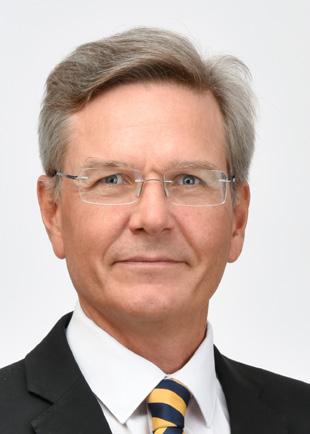
QTerminals
Charles Meaby has been named acting CEO of Qatar-headquartered port operator QTerminals, following the departure of former group chief executive Neville Bissett. Meaby was previously managing director of Hamad Port, QTerminals’ flagship facility in Doha, and before that, served as the group’s business development and commercial officer. His earlier experience includes roles at DP World, London Gateway Port Holdings, Hutchison Ports and Associated British Ports.

Total Movements
Mumbai-headquartered Total Movements has announced that Dr. Armin D. Kalyaniwalla would be joining its global supervisory board. In a career spanning more than 40 years, Kalyaniwalla, former CEO for projects at Allcargo Logistics, has worked alongside leading shippers including Siemens, ABB, Hitachi, GE, Essar and Reliance, founded MHTC Logistics, and helped shape major reforms as co-founder of the Hydraulic Trailer Owners Association.
“With over four decades of distinguished leadership in project logistics, Dr. Kalyaniwalla is a globally respected figure whose contributions have shaped the trajectory of logistics operations across major EPC projects in India,” Total Movements said. “In his role as CEO (at Allcargo Logistics), Dr. Kalyaniwalla mentored aspiring professionals and championed the cause of recognizing logistics as a vital infrastructure sector — enabling access to affordable financing, promoting innovation, and raising operational efficiency standards.”
Mark Slade
Charles Meaby
Laura Lane
Dr. Armin D. Kalyaniwalla

deugro
Ryan Blewett has been promoted to vice president and country manager of deugro USA. Blewett joined deugro in 2016 as a projects coordinator in Qatar before transferring to the U.S. in 2019 to take on the role of turnaround logistics manager. Until his promotion, the executive had been serving as the company’s Houston branch manager.
“Since joining us in 2016, Ryan has consistently demonstrated exceptional leadership and strategic insight. His role as Houston branch manager has been instrumental in driving significant growth over the past three years,” deugro said on LinkedIn. “In his new position, Ryan will oversee our five U.S. offices, including our strategically important terminal warehouse operations in Baytown, Texas, further supporting our growth and strengthening our operations across the United States.”
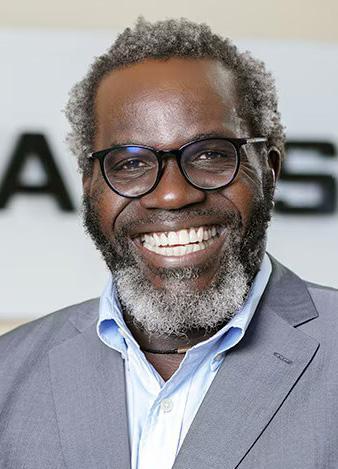
Maersk
Maersk has tapped industry heavyweight Tito Okuku to steer its East Africa operations. Okuku has more than 25 years of experience in logistics and supply chain and previously served as managing director of APM Terminals Kenya, part of the Maersk ecosystem, in 2014. In his new role, the executive will be responsible for Maersk’s commercial business in countries such as Kenya, Uganda and Tanzania.
“Tito’s appointment marks an exciting chapter for our Eastern Africa business,” said Richard Morgan, managing director of Maersk in the Indian Subcontinent, Middle East and Africa. “His proven track record, hands-on knowledge of the region and passion for developing people make him the right leader to drive sustainable growth and deliver continued value to our customers. We are confident that Maersk will deepen its presence and partnerships in Eastern Africa under his leadership.”
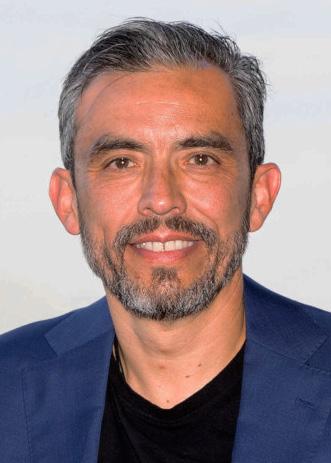
Mammoet
Rafael de los Santos Diaz has taken on a new role as business development director for Mexico at heavy-transport specialist Mammoet. He was previously managing director at logistics recruitment firm Pino Alto, and before that, spent over 15 years at the family-owned heavy transport company Tradelossa, including seven years as CEO.
“I’m thrilled to begin this new chapter in my career joining such a professional and exceptional team,” de los Santos told Breakbulk . “I look forward to meeting all my friends and colleagues in the industry!”

Trans Global Projects
Trans Global Projects has named Ling Ling Lim as managing director of its newly launched Malaysian office. The executive has spent the bulk of her career with Megalift Malaysia, a company she joined in 1995. TGP’s new base in Malaysia is located in Shah Alam, capital city of Selangor, and will serve as a central hub for TGP’s operations in the Asia-Pacific region.
“I am honored to be part of TGP and to lead the company’s efforts in Malaysia,” Lim said. “This is an exciting time for TGP, and I am eager to contribute to the company’s success by leveraging my experience and expertise. I look forward to working with the talented team at TGP and driving our operations in Malaysia to new heights.”
Rafael de los Santos Diaz
Ling Ling Lim
Ryan Blewett
Tito Okuku
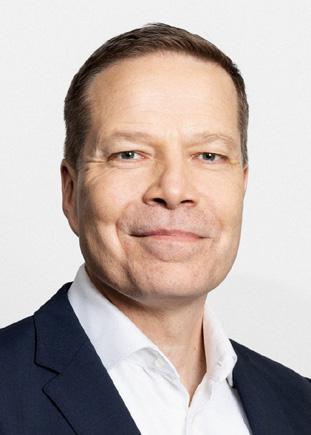
Konecranes
Konecranes has stuck with a familiar face after appointing Marko Tulokas as its new president and CEO, effective from June 1. A long-time company leader, Tulokas had been heading Konecranes’ industrial equipment business area and brings more than two decades of experience with the material handling specialist to the role.
“I am very pleased to announce the appointment of Marko Tulokas, who has extensive experience and knowledge of Konecranes’ people, customers, technology and offering, and the material handling industry overall,” said Pasi Laine, chair of Konecranes’ board of directors.” He is in an excellent position to continue building success and executing strategy on this solid foundation together with the Konecranes leadership team and personnel.”

Superior
Superior Industries, a U.S.-based manufacturer and global supplier of bulk material processing and handling systems, has welcomed George Wilcox as its first-ever channel sales manager. Wilcox brings nearly three decades of experience in the aggregates and wood reduction industries. Most recently he served as sales and marketing director for CBI and Ecotec, two divisions of Terex, where he also held a role as product manager.
In this new position, the executive will work closely with Superior’s dealer network to support development and business planning, coordinate marketing efforts, and align training, inventory, and sales strategies with company goals. “One of the primary objectives of Wilcox’s position is to give Superior’s territory managers more time to focus on field-based selling – with boots on the ground – working directly alongside dealer sales teams,” says Jeff Gray, sales director at Superior.
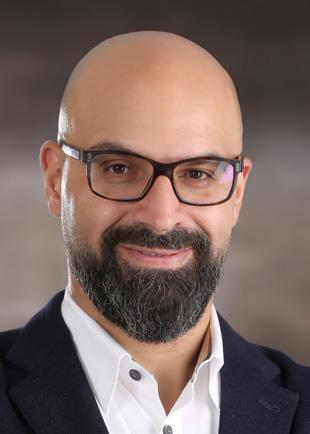
Combi Lift
Mohammad Jaber has taken on the role of CEO at Combi Lift Projects for the Middle East and Africa (MEA). With more than 24 years of experience in project logistics across the region, he began his logistics career at Agility where he rose to the position of COO and VP Projects for the Middle East and North Africa (MENA) region. Following the merger with DSV in 2021, he headed DSV Air and Sea in Abu Dhabi.
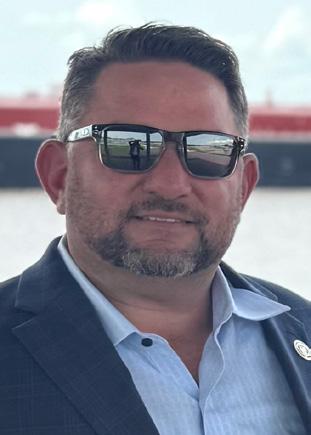
Gulf of America Logistics
Brent Patterson has launched Gulf of America Logistics (GOAL), a veteran-owned start-up based in Bossier City, Louisiana. The new company will be focusing on U.S. Gulf capital projects and domestic supply chain solutions. A former U.S. Navy logistics manager and seasoned project cargo executive, Patterson brings over 25 years of experience, including 11 years as senior VP at Blue Water Shipping and prior leadership roles at Kiewit and in the trucking sector.
According to Patterson, GOAL is targeting the region’s surging demand for logistics support across major industrial sectors, from LNG terminals and hydrogen hubs to refinery expansions. “Louisiana is one of the hottest project markets in the country,” he said. “We’re here to provide a local, American-owned solution.” The company’s leadership team includes Keith Lincoln (ex-Bertling) as VP of Operations and Chuck Paddock (formerly Ceres Barge Line) as partner.
George Wilcox
Brent Patterson
Mohammad Jaber
Marko Tulokas
ROTTERDAM TERMINALS: PREPARING FOR THE FUTURE
In a new white paper, the Port of Rotterdam explores how its terminals are adapting to major shifts – from accelerating the energy transition to attracting the next generation of logistics professionals. The Port of Rotterdam’s Twan Romeijn and Joost Eenhuizen share insight on how Europe’s largest port is preparing for the challenges ahead.
Q: Which companies currently operate breakbulk terminals in the Port of Rotterdam, and can you give us a sense of their assets – such as terminal locations, equipment and capabilities?
Romeijn: The Port of Rotterdam is home to a diverse mix of terminals, from family-owned firms to global players such as RHB Stevedoring & Warehousing, Westerstuw, Matrans Rotterdam Terminal, Metaaltransport, Broekman Logistics, Rhenus Logistics, Access World, SIF Group and Steinweg Rotterdam. Spread from Waalhaven to the second Maasvlakte, they handle everything from steel and non-ferrous metals to forest products and HLPC. Many are trimodally connected via road, rail, and barge, with water depths between 6 and 16 meters. The port is also renowned for its heavy-lift capabilities, with mobile harbor cranes capable of lifting over 300 tons and extensive floating crane capacity of up to 1,800 tons – critical assets for the energy transition.
Q: How are breakbulk terminals supporting both the energy transition and the Port of Rotterdam Authority’s goal of becoming the world’s most sustainable port? Could you share some examples of how this is being put into practice?
Eenhuizen: Breakbulk terminals in Rotterdam play a pivotal role in driving the energy transition – not only by handling the physical components that enable it, but also by operating their facilities in increasingly sustainable ways. With the necessary expertise, space, and equipment, these terminals support major industrial upgrades across the port area. Key projects include Red2Green, Porthos, Neste and Holland Hydrogen.
Q: Breakbulk terminals are playing an increasingly essential role in the raw material transition, importing more recycled metals, plastics and other secondary raw materials. How is this shift influencing cargo handling and the port’s long-term strategy?
Handling project cargo at Steinweg Rotterdam’s terminal.
Credit: Port of Rotterdam
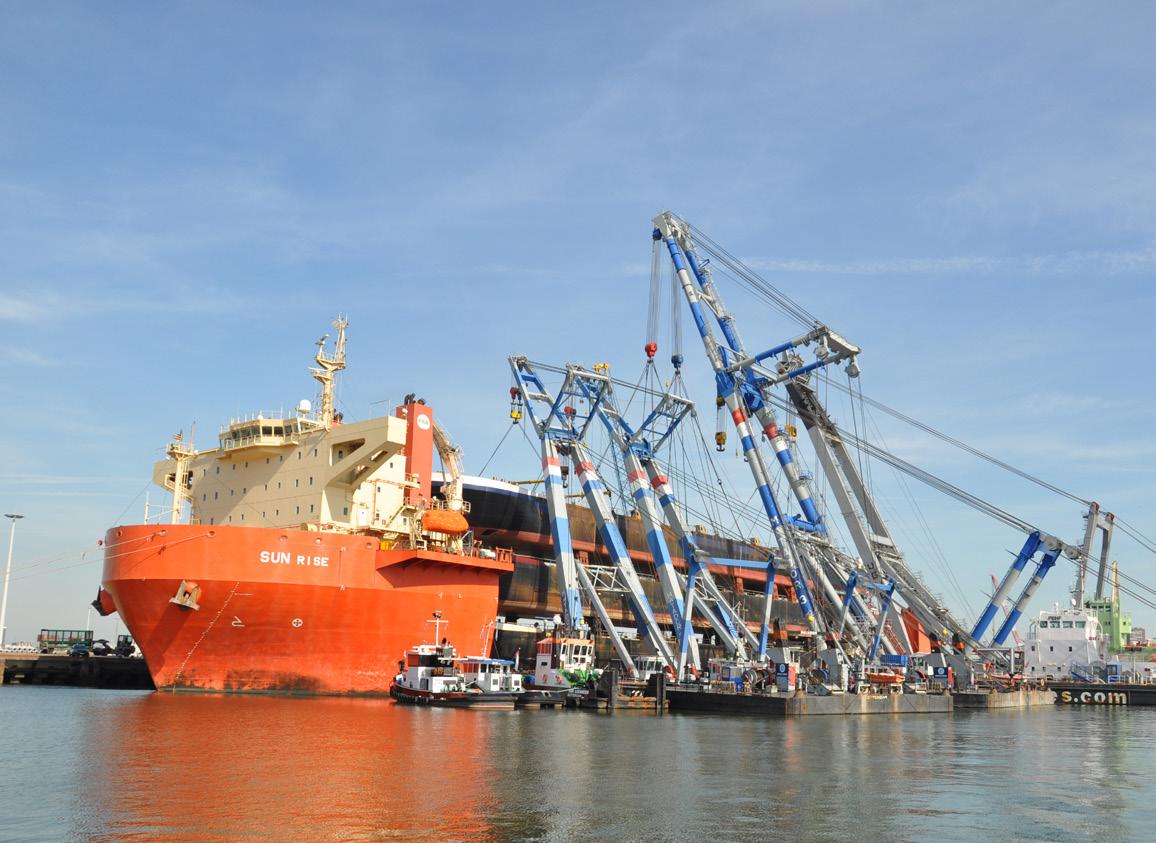
Romeijn: Rotterdam expects rising volumes of recycled metals, plastics, and other secondary raw materials, much of it arriving as “half fabricates” and therefore listed as breakbulk. While this hasn’t yet impacted operations to a great extent, terminals are fully capable of handling the shift. The port is planning ahead to ensure sufficient breakbulk capacity, and the close proximity of terminals supports efficient processing of circular materials within the industrial cluster.
Q: What are some of the main challenges breakbulk terminals face in attracting and retaining skilled personnel, and how is the port working with operators to address this issue?
Eenhuizen: Labor is essential to the breakbulk sector, which remains a hands-on, labor-intensive industry – a key reason it’s high on the Port of Rotterdam’s agenda. Attracting talent is a challenge, especially as younger generations lean toward office roles. To address this, the Port collaborates with partners like the municipality, Deltalinqs, and terminal operators to promote the sector through terminal visits, job fairs, internships, and a campaign to lure young talent (www. werkeninderotterdamsehaven.nl). A range of tools, including financial incentives, supports recruitment from both schools and career changers.
Twan Romeijn: www.linkedin.com/in/twanromeijn/ Joost Eenhuizen: www.linkedin.com/in/joosteenhuizen-8151632/
Download the whitepaper
FLEET OF THE FUTURE
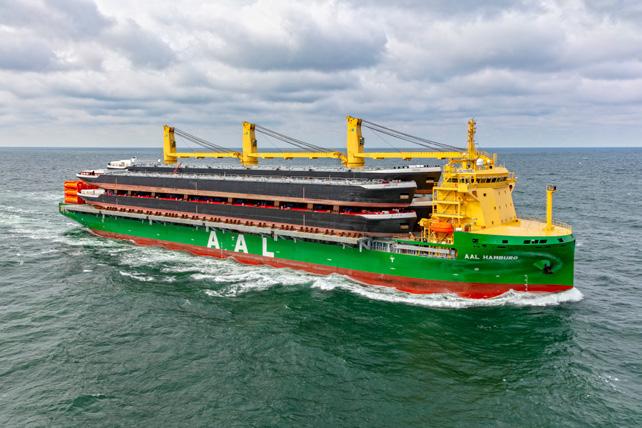
AAL SHIPPING
32,000 DWT Super B-Class dual-fuel vessels, eight in total, feature three portside cranes boasting a maximum lifting capacity of 700 tonnes, along with a retractable weather-deck system to increase clear stowage space on deck to more than 5,200 square meters
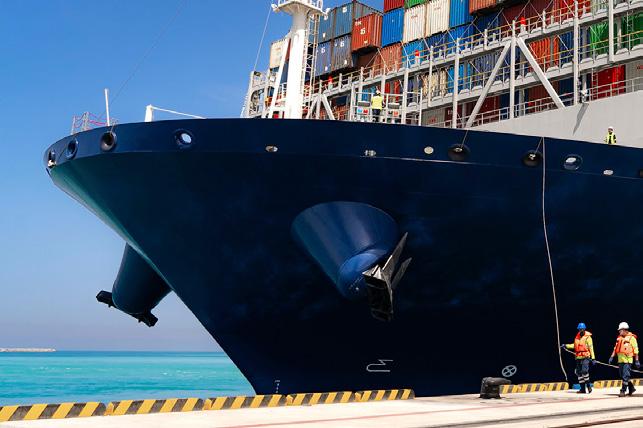
CMA CGM
CMA CGM Iron, with a container capacity of 13,000 TEUs, is the first of 12 new dualfuel methanol vessels launching this year and next
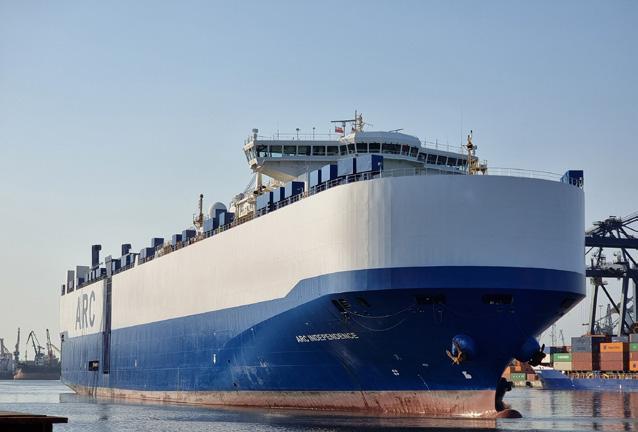
AMERICAN ROLL-ON ROLL-OFF CARRIER
ARC is advancing its decarbonization strategy by introducing biofuel into its fleet. In April 2024, the ARC Independence became the first ARC vessel to operate using a B-30 UCOME biofuel blend, which does not require engine modifications
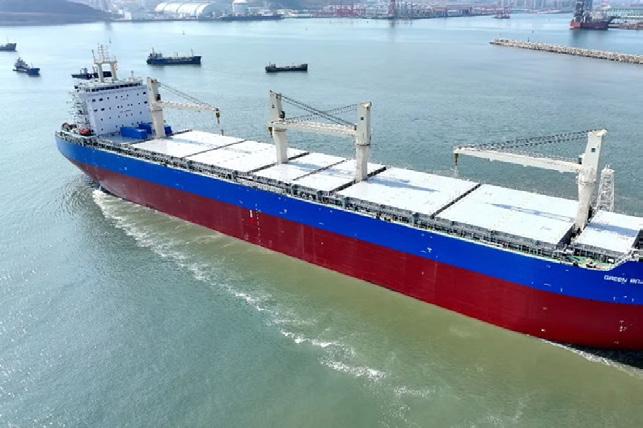
COSCO SHIPPING /SPECIALIZED CARRIERS
In February 2025, the company took delivery of the 62,000-ton Kangfu and Green Suape, designed to transport wind power equipment and other project cargoes efficiently. COSCO Shipping has also introduced vessels that are LNG ready and methanol ready
All Types of Carriers Are Investing in Their Fleets Meet Them at Breakbulk Americas

CHIPOLBROK AMERICAS, INC
New 62,000 DWT and 38,000 DWT multipurpose vessels, designed for efficiency and renewable energy cargo

DSHIP CARRIERS
Multiple methanol-fueled MPVs for delivery in 26/27
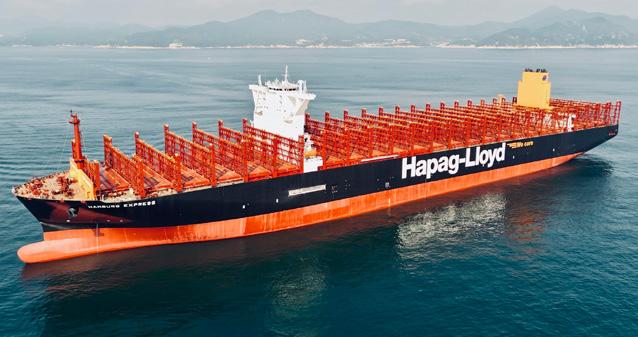
HAPAG-LLOYD
23,500+TEU dual-fuel container ships to be delivered from 2027 through 2029, with high-pressure dual-fuel engines (LNG/ biomethane), ammonia-ready, and up to 95% CO2 reduction
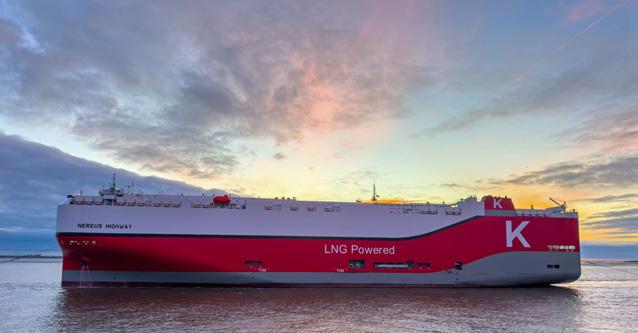
“K” LINE AMERICA INC.
LNG-fueled car carrier with capacity of 7,000 vehicles
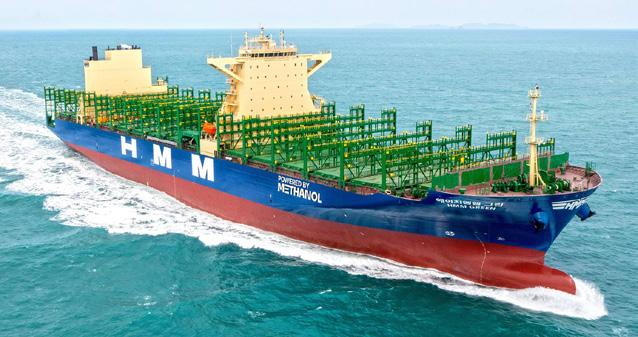
HMM
The company aims to acquire around 70 green vessels by 2030. In March 2025, HMM took delivery of its first methanolpowered vessel, HMM Green, the first of nine ordered and will be deployed on the Far East Asia–India–Mediterranean (FIM) service.The remaining eight vessels are scheduled for delivery by the end of 2026
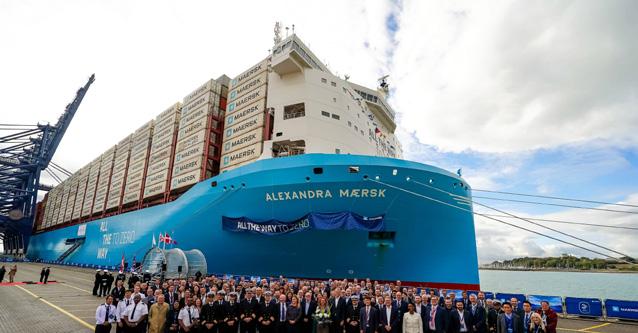
MAERSK A/S
20 ships ordered in 2024 for delivery starting in 2028, equipped with liquefied gas dual-fuel propulsion systems, vary in size from 9,000 to 17,000 TEUs
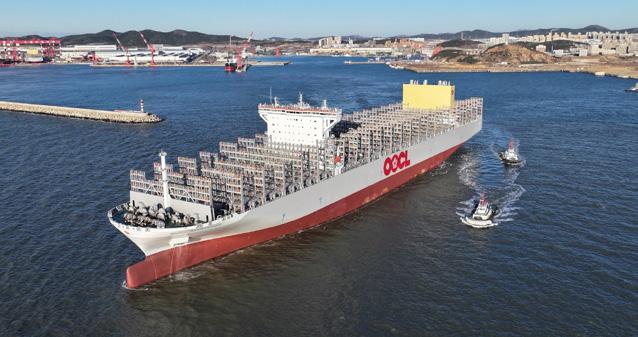
OOCL USA
In January 2025, OOCL named its third 16,828 TEU vessel, the OOCL Sunflower, featuring advanced technology for superior environmental performance. In May, OOCL announced a $3 billion order for 14 container ships with dual-fuel propulsion to be delivered in 2028 and 2029
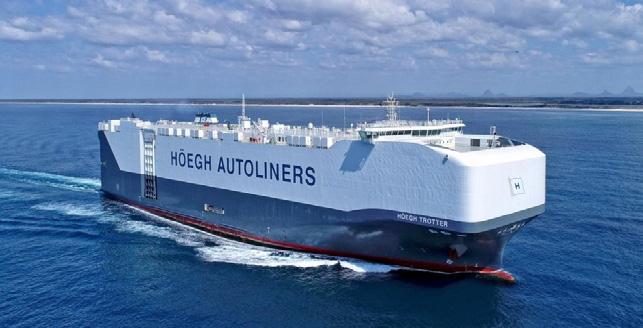
HÖEGH AUTOLINERS
Aurora Class RoRo vessels are multi-fuel ready, offer 58% CO2 cut per car and solar integration
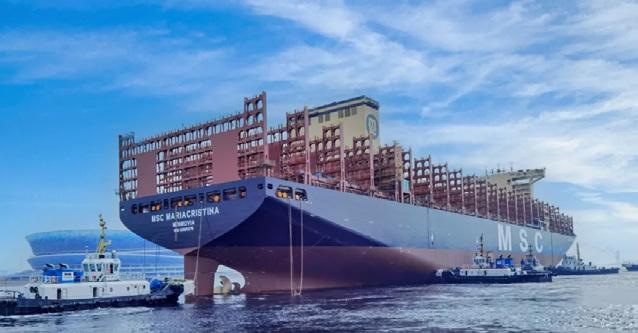
MSC MEDITERRANEAN SHIPPING COMPANY
Investing in 100+ record-size, energyefficient LNG dual-fuel newbuildings by 2027. Over 300+ retrofits on existing ships. Net zero decarbonization by 2050
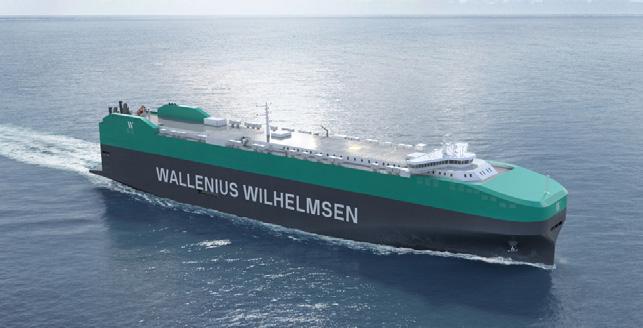
WALLENIUS WILHELMSEN
New Shaper Class RoRo vessels are methanol-capable, ammonia-ready, designed for net zero
BOOTH B46
BOOTH P10
BOOTH L13
BOOTH E16
BOOTH K20
BOOTH V40
BOOTH G16
BGSN SPONSOR
NEWS BITES FROM AROUND THE WORLD: QUICK HITS, BIG IMPACT!
A roundup of Breakbulk shippers and exhibitors in the news
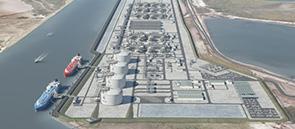
NEXTDECADE INKS DEAL WITH BECHTEL FOR RIO GRANDE LNG TRAINS
NextDecade has finalized contracts with Bechtel Energy for the construction of two liquefaction trains at the Rio Grande LNG facility in Brownsville, Texas. The deals include a US$4.77 billion updated EPC contract for train 4 and a newly signed US$4.32 billion contract for train 5, both covering full construction and related infrastructure.
About 48 million metric tonnes per
VALLOUREC TO SUPPLY TUBULAR GOODS FOR KUWAIT DRILLING OPERATIONS
Vallourec has landed a major win in the Middle East, securing a contract worth more than US$130 million to supply oil country tubular goods
year of potential liquefaction capacity is under construction or development at the Rio Grande LNG facility. Construction of Phase 1 (trains 1-3) began in late 2023, with start-up slated for 2027. According to NextDecade, the Brownsville site has sufficient space for the development of up to 10 liquefaction trains, making Rio Grande potentially one of the largest LNG production and export facilities in the world.
(OCTG) for Kuwait Oil Company’s (KOC) drilling operations. Deliveries of carbon steel OCTG with premium connections and proprietary steel grades are set for 2025 and 2026, with Vallourec selected to provide the most technically advanced segment of the tender, including high-torque flush premium connections.
Credit: Vallourec
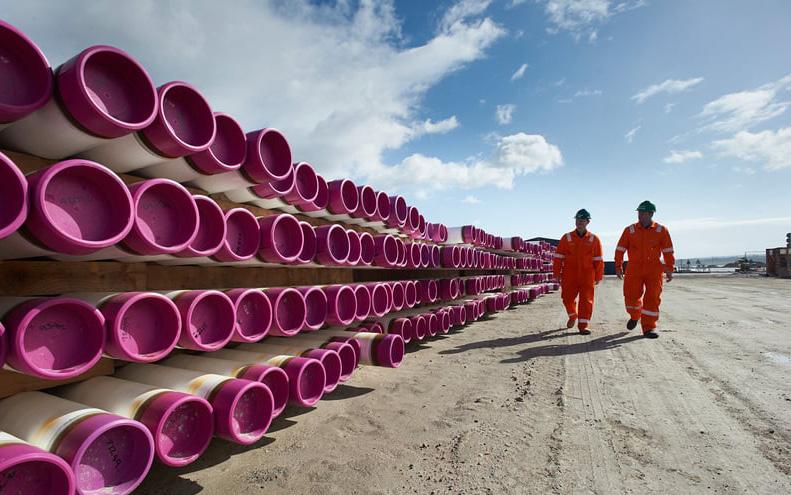
The new contract aligns with Kuwait’s drive to ramp up oil production to 4 million barrels per day by 2035 and follows KOC’s deep drilling tender issued in September 2024. Vallourec said the deal underscores its role as a strategic partner for KOC and its ability to deliver high-performance, tailormade tubular solutions.
ADNOC DRILLING ACQUIRES SLB ASSETS IN KUWAIT, OMAN
ADNOC Drilling has signed an agreement to acquire a 70% stake in SLB’s land drilling rigs business in Kuwait and Oman. The purchase comprises eight fully operational land rigs – two in Kuwait and six in Oman – under contract with the respective national oil companies of both countries.
The deal, expected to close in early 2026, gives ADNOC Drilling immediate access to earnings and cashflow while enhancing its capacity to deploy advanced technologies and AI-driven solutions, with executives calling it a profitable, long-term addition that supports disciplined growth and high returns.
PORT OF CORPUS CHRISTI COMPLETES US$625 MILLION SHIP CHANNEL EXPANSION
The Port of Corpus Christi has celebrated the near-completion of a decades-long infrastructure project. The Channel Improvement Project (CIP) deepens the Corpus Christi Ship Channel to 54 feet Mean Lower Low Water (MLLW), allowing for safer and more efficient passage of larger vessels – key to meeting growing global demand for U.S. energy exports.
Conceived more than 30 years ago, the US$625 million project is a collaboration between Corpus Chrisi, Congress, the U.S. Army Corps of Engineers, and private marine partners. The newly expanded waterway facilitates safe, navigable commerce for larger vessels and two-way traffic, enabling more efficient transport of crude, LNG and other commodities. Annual transportation cost savings are estimated to exceed US$200 million.
PEEL PORTS UNVEILS £30 MILLION RORO BERTH AT LONDON MEDWAY
Peel Ports Group has officially opened its new £30 million RoRo berth at London Medway, marking a major expansion in capacity at the port. The launch was celebrated with a ceremony in Sheerness, where guests gathered to witness the arrival of one of Finnlines’ Finneco-class hybrid RoRo vessels – a regular feature of the weekly service linking London Medway to Finland, Poland, Belgium, and Spain. The new in-river berth and floating pontoon are set to significantly enhance
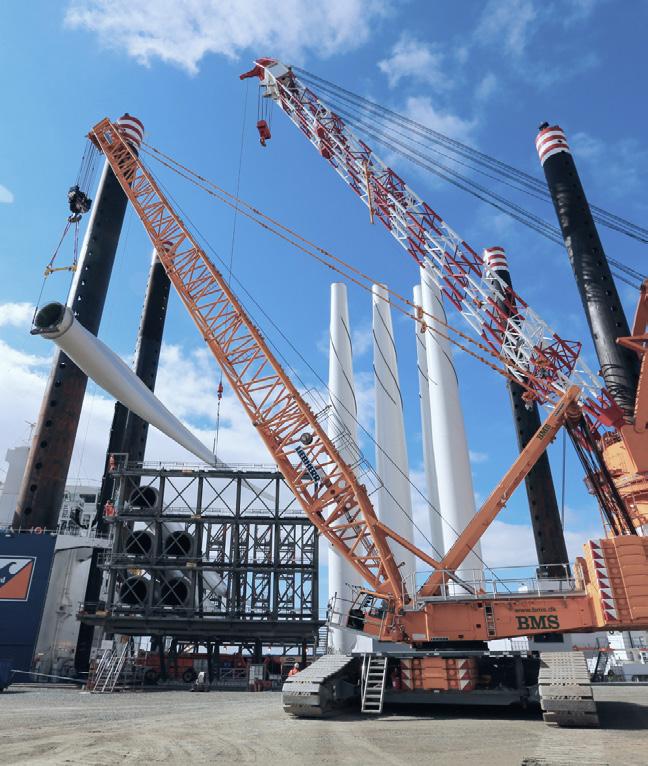
operations by enabling more efficient vessel handling and cargo transfers.
The new berth and pontoon will cater for RoRo vessels arriving at the port, carrying commodities such as automotives, paper reels and timber, construction machinery and building materials, project cargo, agribulks, and steel. Peel Ports said the investment underpins growing demand from customers like Volkswagen and CEVA, who rely on London Medway as a southern UK logistics hub.

TAIWAN’S LARGEST OFFSHORE WIND PROJECT DELIVERS FIRST POWER
The Hai Long Offshore Wind Project has officially delivered its first electricity to Taiwan’s national grid, following successful energization tests in May. At a ceremony marking the milestone, Hai Long was recognized as the country’s first offshore wind farm to surpass 1 GW in installed capacity – a major leap in Taiwan’s renewable energy ambitions.
The project has installed 14 wind turbines to date, with power
routed through a complex offshoreto-onshore transmission system into Taipower’s ChangOne Grid Substation. Key construction milestones over the past two years have included the installation of the Hai Long 2 offshore substation, 37 jacket foundations, and Taiwan’s first locally assembled 14 MW wind turbine nacelle by Siemens Gamesa. Further grid integration was enabled by successful subsea cable and substation tests completed last month.
UK GREENLIGHTS SIZEWELL C NUCLEAR PLANT
The UK government has given the go-ahead for Sizewell C, the first British-owned nuclear power station announced in more than three decades. Backed by a £14.2 billion investment, the project sees the government take a majority stake alongside EDF. The plant, expected to take at least ten years to build, will meet about 7% of the UK’s electricity demand.
Sizewell C, located on the Suffolk coast near Sizewell A and B, is being hailed as the best-prepared nuclear
site in modern history by consultants Enco. The project is expected to channel over 70% of its construction value to UK companies, boosting domestic supply chains and job creation. Energy Secretary Ed Miliband called the decision a “bold step” that will “protect family finances, take back control of our energy, and tackle the climate crisis.”
Alongside the launch of the UK’s first small modular reactors, the project is being hailed as a turning point in Britain’s nuclear renaissance.
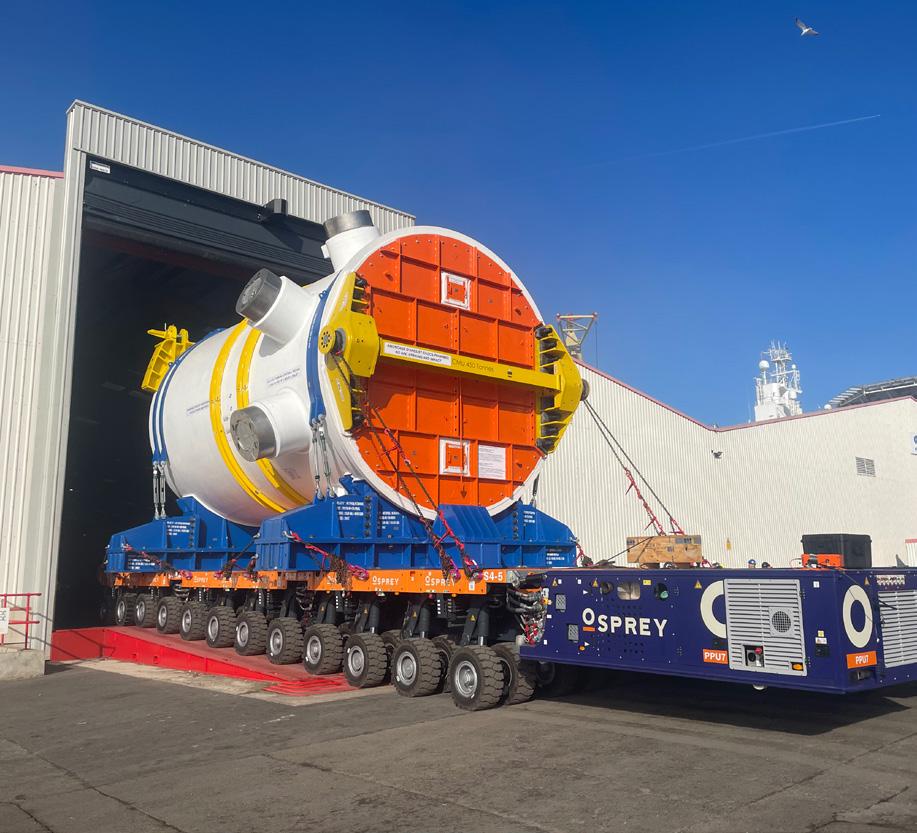
NOT YOUR TYPICAL DAY AT THE BEACH
Under sunny skies, Mammoet moved the Paal 17 Aan Zee beach pavilion 23 meters toward the sea on the island of Texel in North Holland. Local authorities had recommended the move to allow nearby sand dunes to grow. Mammoet completed the job for JLD Contracting BV, the first time a pavilion in the Netherlands had been relocated this way.
After just weeks of preparation, Mammoet maneuvered the pavilion to its new location in 10 minutes, while beachgoers livestreamed the move on YouTube. And what a show they saw! Mammoet’s SPMTs, with their precisely adjustable decks, carried the structure in one piece without deformation. After long pilings
Guiding the SPMT into position.
were installed at the new site to absorb future erosion, a new beam layer perpendicular to the original foundation was built.
Mammoet then constructed a steel platform beneath the pavilion to prevent bending and disconnected the utility lines. Two SPMTs lifted the structure, allowing the team to cut the old pilings. Mammoet’s operator then drove the pavilion over the new beams and lowered it into place.
With the pavilion in its new location, beach goers can once again enjoy a popular place to relax, while protecting the local environment.

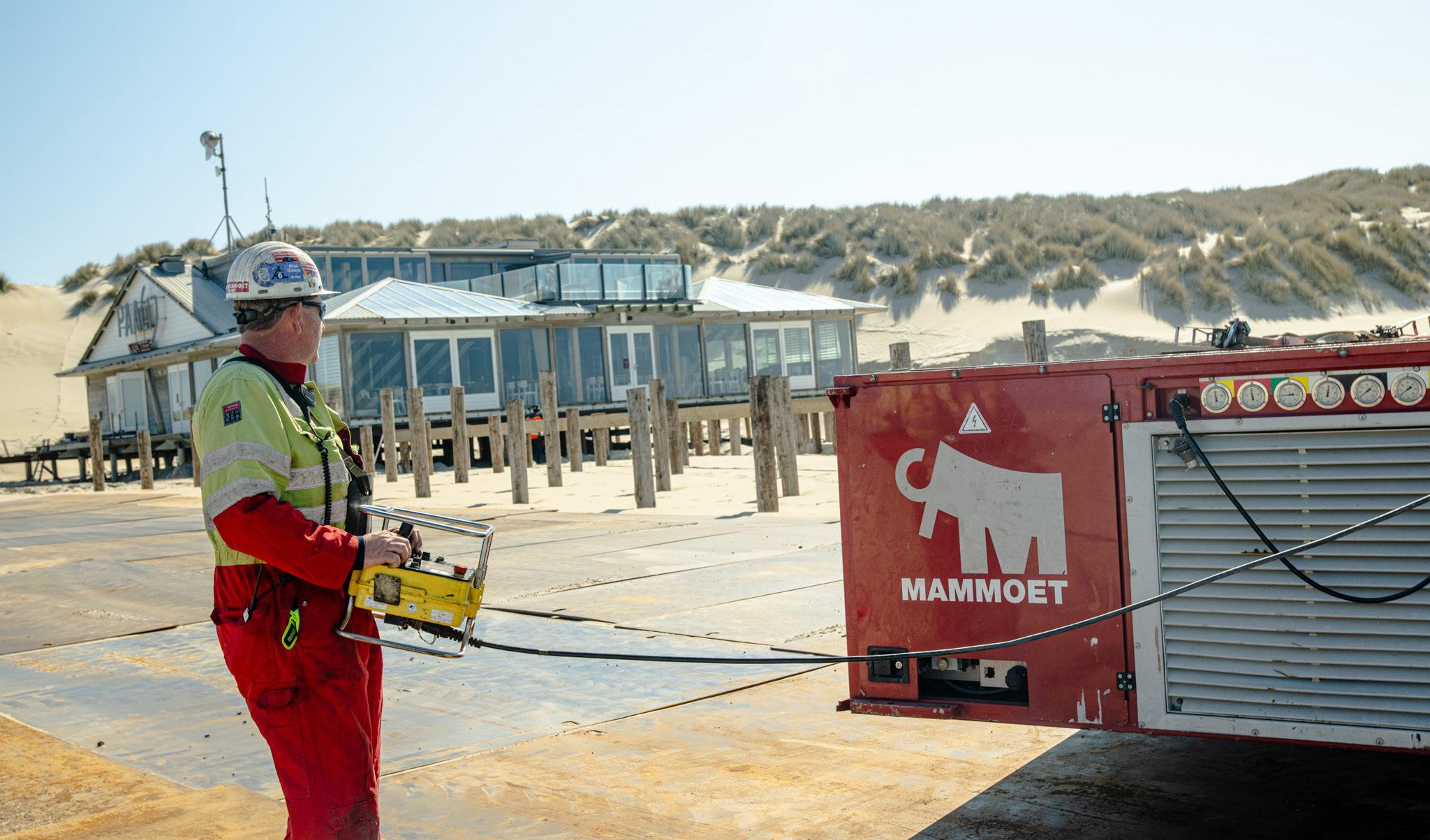
Credit: Mammoet
Mammoet Relocates Beach Pavilion to Preserve Sand Dunes
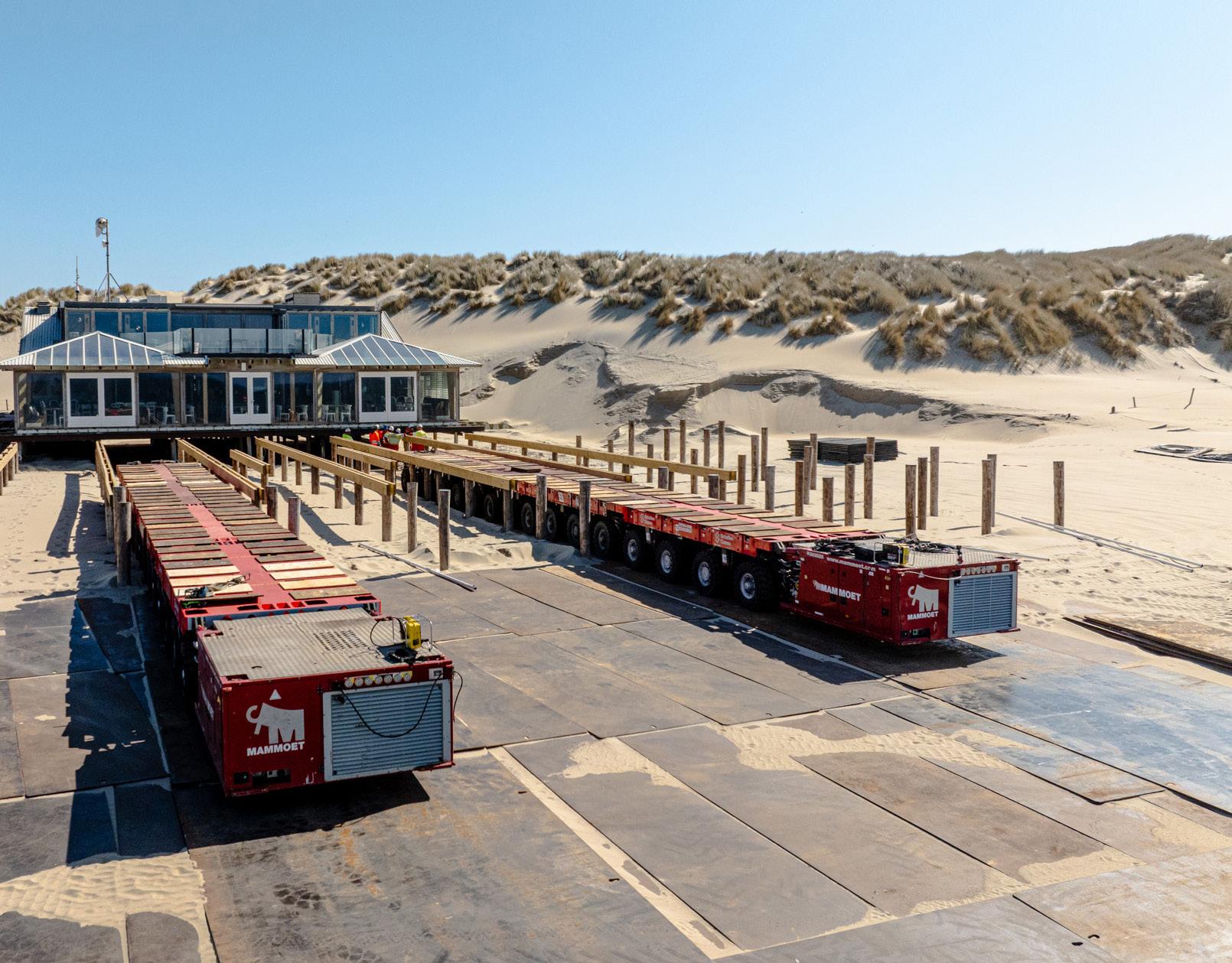
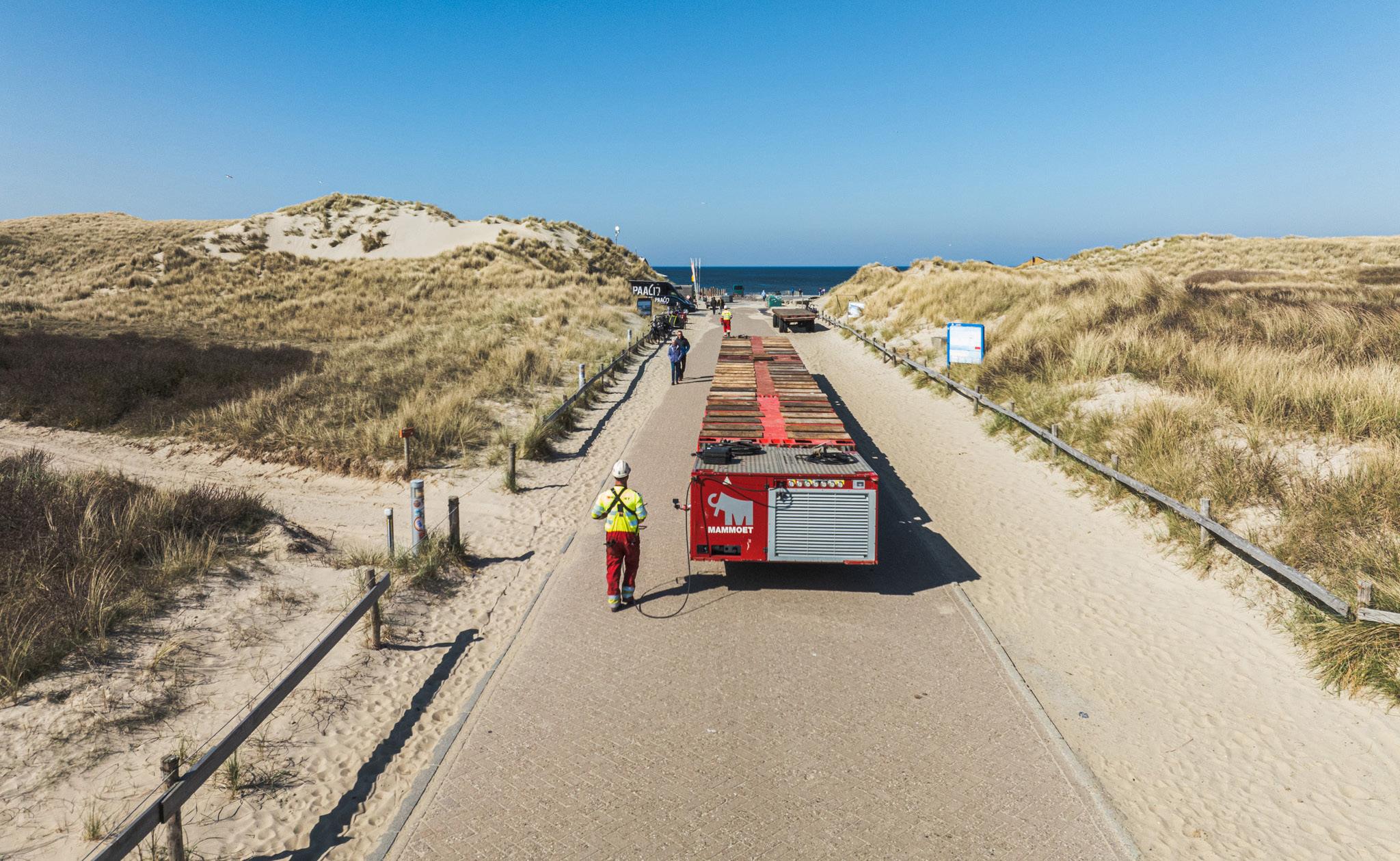
Site preparation for the big beach move. Credit: JLD Contracting
Mission accomplished on Texel island. Credit: JLD Contracting
BEACH DAY GIFT GUIDE
For rare moments of rest and relaxation.
Breakbulk professionals are always prepared, whether at work or on a day off. Here are five useful items to make this summer’s beach days even more enjoyable.

YETI Hopper Flip 8 Soft Cooler $200
Rugged, leakproof and keeps drinks cold all day. Perfect for solo trips or a family outing. www.yeti.com
Personalized Lands’ End Pavilion Stripe Beach Towel
$39.95 + $10 personalization
High-quality, oversized and customizable with initials or a name. A practical, personal touch for any beachgoer. www.landsend.com

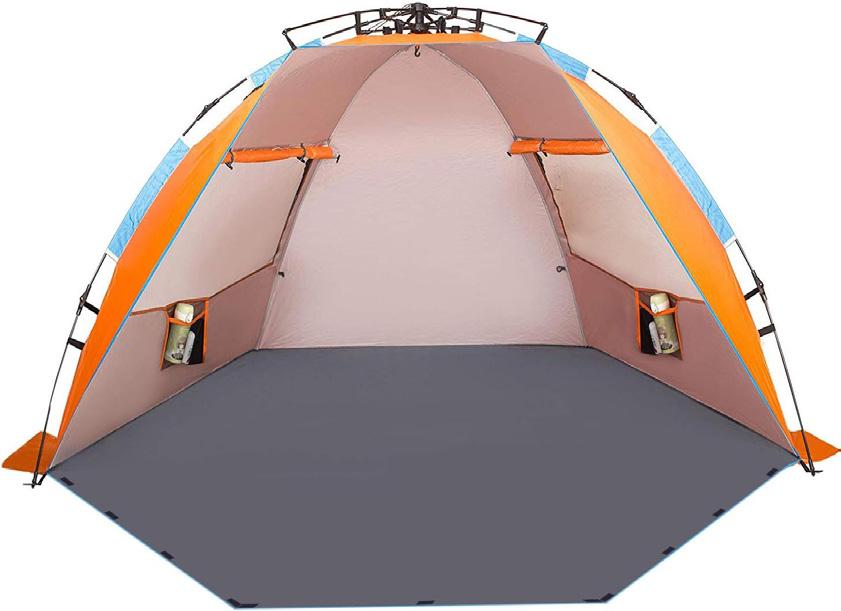

GoPro HERO13 Black Surf Bundle
$422.99
Capture every adventure with cinematic 5.3K video; waterproof to 33 feet and bundled with surfboard mount, floaty, bite mount and camera case. gopro.com
Oileus 4-Person Beach Tent
$50.31
Quick setup, portable, and provides reliable shade for spending long hours on the sand. www.amazon.com

Tommy Bahama Backpack Beach Chair
$89.99
This chair is a favorite for its comfort, durability and hands-free portability. It features multiple reclining positions, a built-in cooler pouch and backpack straps. www.amazon.com

FOR THE PROS WHO MAKE ENERGY PROJECTS HAPPEN
Don’t miss your chance to boost your visibility, connect with energy-sector leaders, and showcase what it takes to get complex energy cargo delivered - all within the framework of Breakbulk Americas 2025, the largest project cargo event in the Americas.
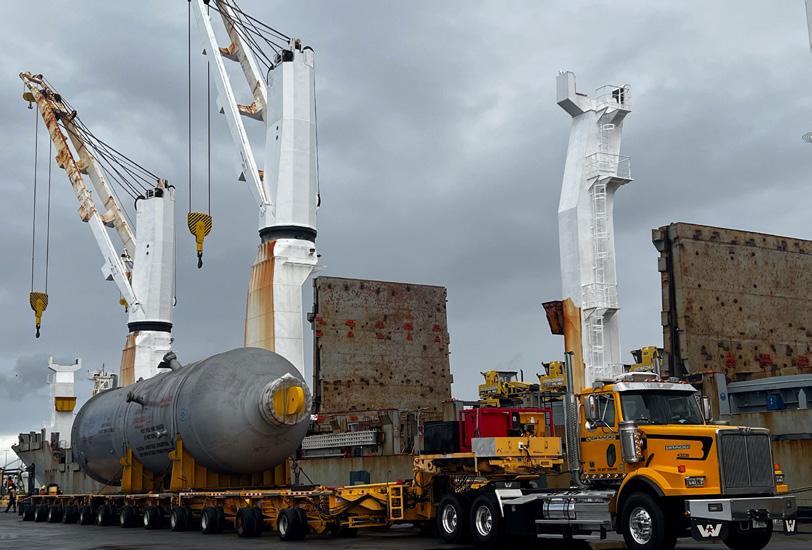
SUBMISSIONS DUE:
Friday, July 25, 2025
AWARDS CEREMONY:
Thursday, Oct. 2, 2025
8 WAYS TO WIN. WHICH CATEGORY IS YOURS?
• Power Team of the Year
• Energy Project of the Year
• Energy Champion of the Year
• Power Move: Energy Technical Innovation Award
• Power Move: Road & Rail Transport
• Power Move: Barge Transport
• Power Move: Ocean Transport
• Power Move: Air Transport
• Power Move: Best Use of Equipment
• Best Logistics Strategy for an Energy Project
WHY ENTER?
• All companies that enter will be acknowledged on the Project Power Awards website.
• Shortlisted companies will be featured in Issue 5 of Breakbulk Magazine, distributed at Breakbulk Americas.
• Shortlisted companies will be showcased at the awards ceremony on Oct. 2.
• Winners will be included in the official Project Power Awards video and featured in Issue 6 of Breakbulk Magazine.
Scan to find out more Scan to enter the awards
BREAKING INTO BREAKBULK: MY ROTTERDAM REVELATIONS
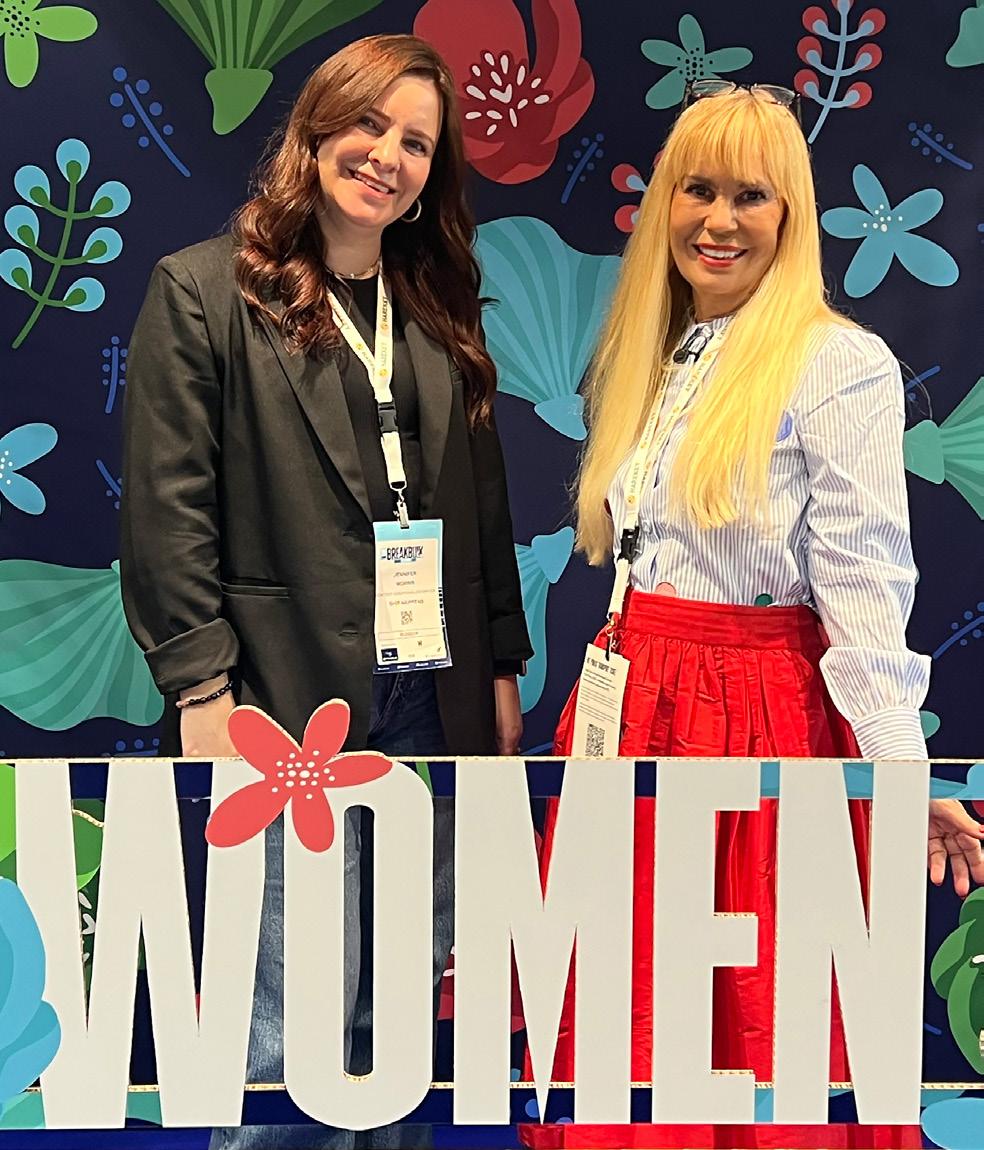
In mid-May, I found myself amidst the massive booths and cargo chatter of Breakbulk Europe 2025 in Rotterdam. As someone who’s spent 22 years navigating the lanes of overthe-road (OTR) freight, diving into the world of breakbulk and project freight was like swapping my trusty Fiat for a monster truck, very intimidating, but so energizing.
1. A Whole New (Logistics) World
Project freight and breakbulk logistics are vast, intricate, and, frankly, a bit mind-boggling. Before this conference, my knowledge was limited to the occasional oversized load story I read on LinkedIn. But walking through the exhibition halls, I realized just how expansive this sector is. With over 600 exhibitors and more than 11,000 industry professionals from 126 countries, the scale was both impressive and a tad overwhelming. I’ve only scratched the surface, but I’m eager to delve deeper and share more insights as I learn.
By Jenn Morris
2. The Sisterhood of the Shipping Pants
One of the most heartwarming aspects of the conference was the camaraderie among women in the industry. The Women in Breakbulk program was a standout, featuring exclusive events like a networking breakfast, a dinner cruise through the Port of Rotterdam, and even a dedicated lounge on the show floor. These spaces weren’t just about networking; they were about genuine connection, mentorship and mutual upliftment. The women in this space embody the concept of collaboration over competition in the most authentic way. I left with a new circle of freight friends who generously shared their knowledge and experiences.
3. Stranger in a Strange Land
Despite my extensive experience in OTR transportation, attending Breakbulk Europe felt like stepping into an entirely different universe. I was surrounded by thousands of professionals, yet I didn’t recognize a single face. It was a humbling reminder of how siloed our industry can be and the importance of stepping out of our comfort zones to broaden our horizons. While I won’t be moving a windmill any time soon, I can say learning more about breakbulk has deepened my understanding of global supply chains and that can only make me a better contributor to this industry.
4. Time: A Different Dimension
In the OTR world, timelines are tight, and delays are dreaded. But in project freight, time operates differently. Planning spans months, even years, and flexibility is key. For an OTR veteran like me, this approach was both baffling and enlightening. It challenged my perceptions and underscored the importance of adaptability in logistics.
5. Less Show, More Tell
While some conferences lean into high-tech demos and cool robots (which definitely have their place), Breakbulk Europe had a different vibe. This event was more about announcements, in-depth conversations and meaningful networking. Instead of watching robot forklifts and inventory drones, attendees were deep in discussion, making deals, building partnerships and catching up on industry shifts. It was practical, purposeful and all about connection over showmanship.
Jenn and Leslie Meredith, chair of Women in Breakbulk, in the first Women in Breakbulk lounge at Breakbulk Europe. Credit: Hyve
In Conclusion
Attending Breakbulk Europe 2025 was more than just another conference to cover; it was a transformative experience for me. It challenged my assumptions, expanded my network and ignited a newfound passion for a sector I had previously overlooked. To my fellow logistics professionals: if you ever get the chance to attend, do it. And to the incredible women of breakbulk, thank you for the warm welcome. Here’s to new adventures and the roads (and seas) ahead.
About the Author
Jenn Morris is the founder of Ship Happens, an educational and opinionated platform for logistics professionals and curious outsiders. With over two decades of experience in freight brokerage, supply chain strategy, and operational efficiency, Jenn now focuses on creating content that helps demystify logistics for professionals and business owners alike. Her work includes writing for industry publications and developing the widely shared “Gorgeous Girls Work in Supply Chain” series, spotlighting women making waves in a traditionally male-dominated field.

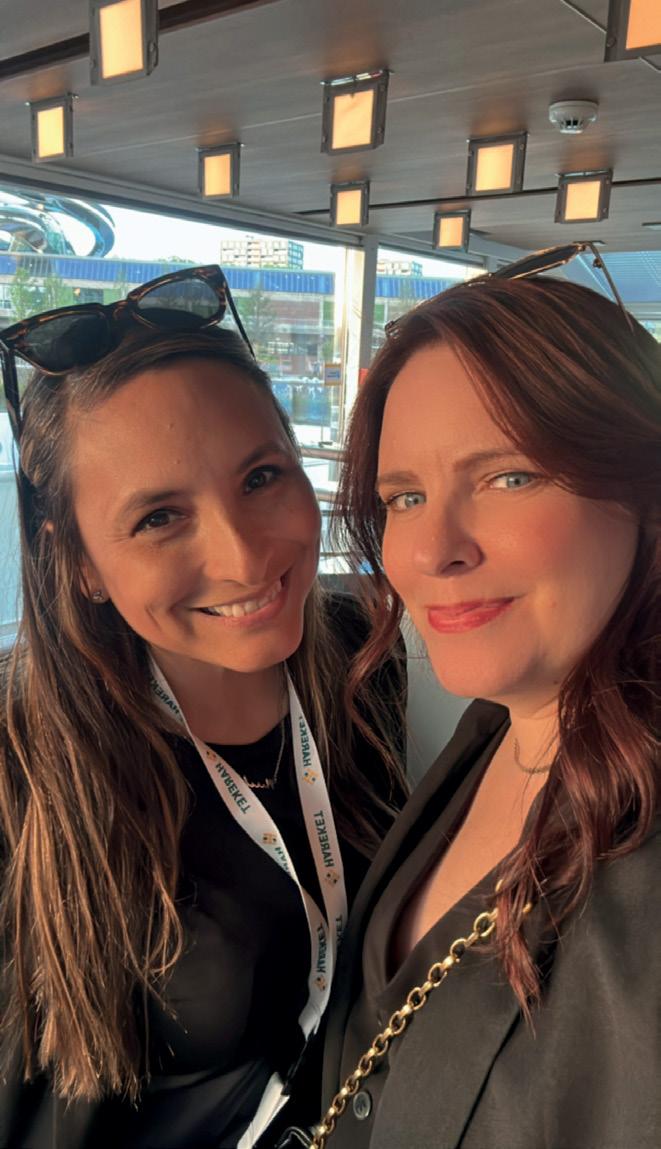
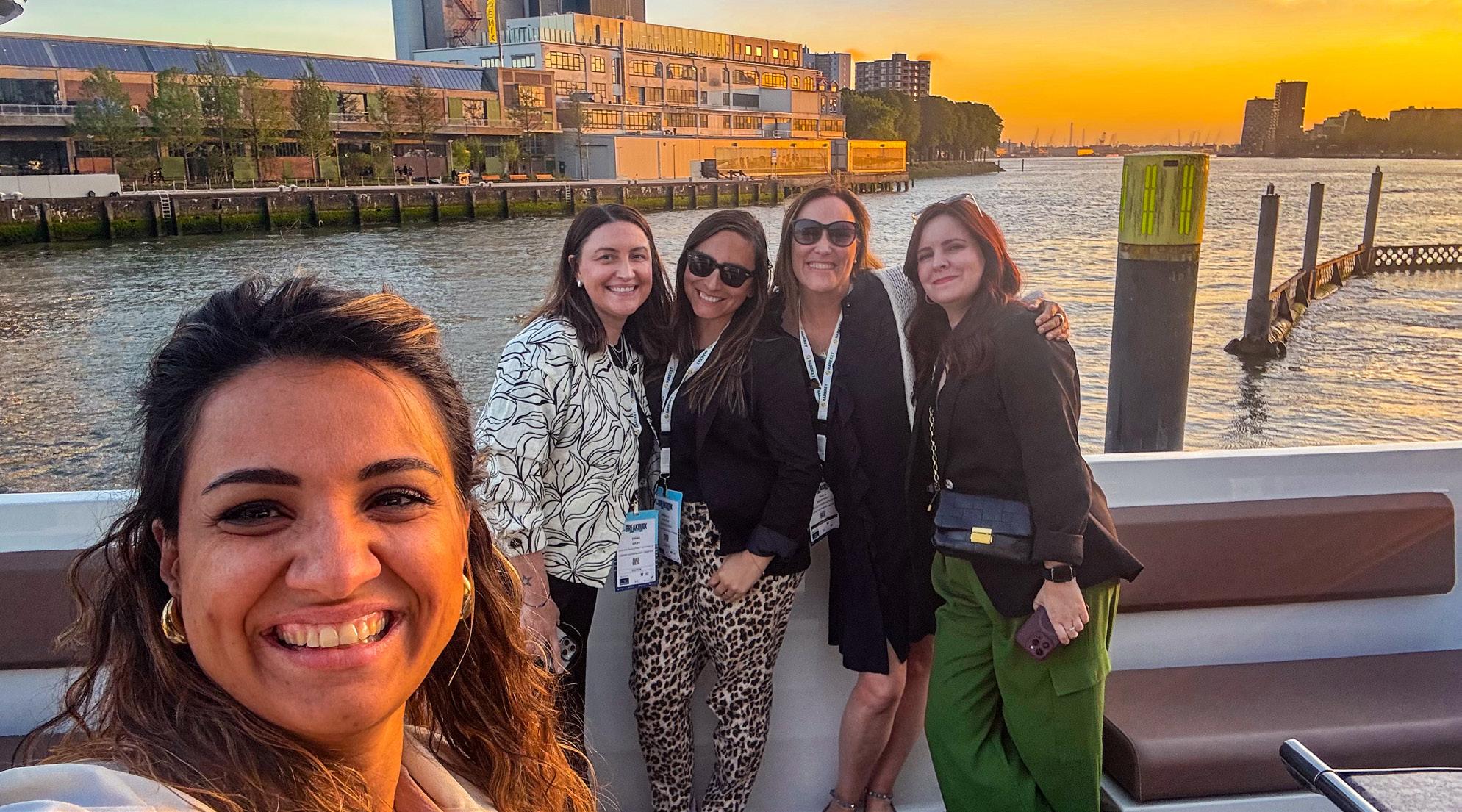
Below: Jenn joins Women in Breakbulk VIP dinner cruise aboard Port of Rotterdam’s Niewe Maze
Above: Jenn with the Breakbulk mascot.
Right: Jenn with Mirella Castle of Tuscor Lloyds and Logifem.
NETWORKING & BUSINESS HUB
The Women in Breakbulk Networking & Business Hub offers a select group of standout women-led businesses an affordable way to gain powerful exposure at the region’s largest project cargo event, Breakbulk Americas.
This shared pavilion, co-located with the Women in Breakbulk Lounge, provides high-visibility and high-credibility, designed to connect you with key decision-makers - EPCs, global forwarders, ports, and carriers - all in one dynamic space.
WHAT’S INCLUDED?
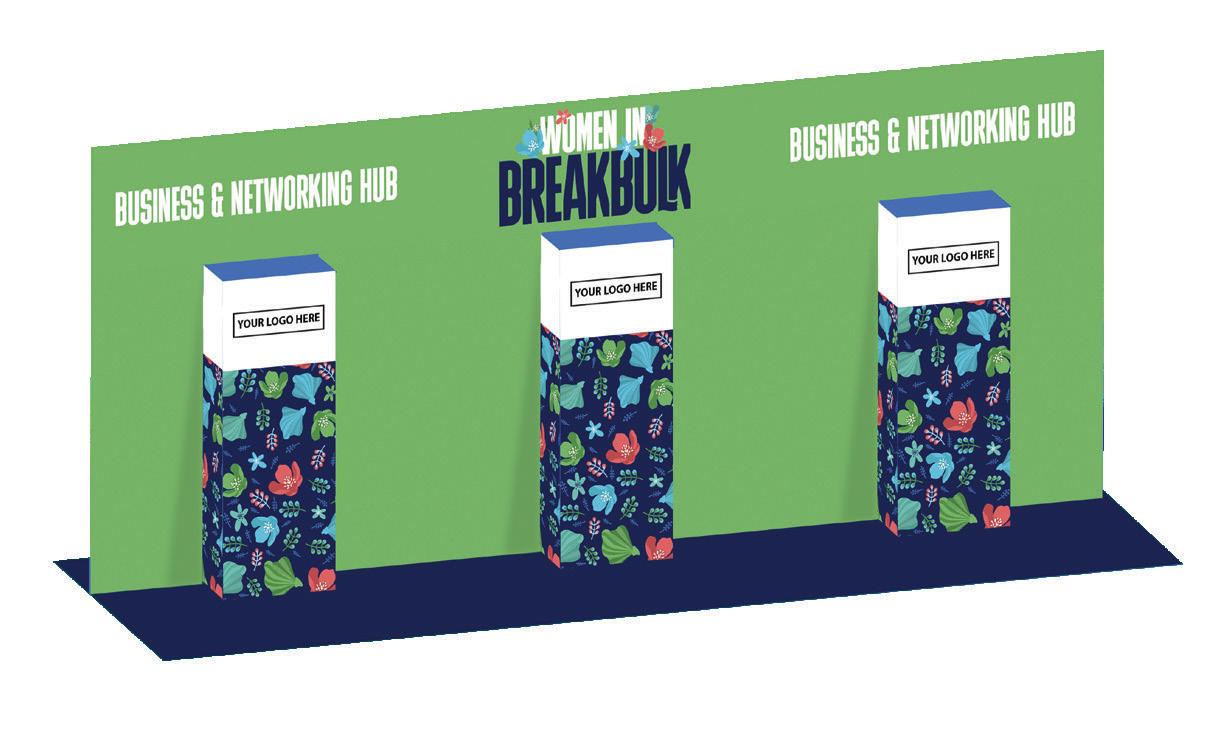
Additional Benefits (Value $1580):
• 2 free Breakbulk Americas passes
• 2 free Women In Breakbulk Networking Luncheon tickets
• Company listed in Exhibitor List on website, pocket guide and event signage
• WiB Hub listed as meeting option in app for female attendees to increase traffic
• Pre-show visibility via Breakbulk Magazine (full page ad with all participant logos accompanied by a Women In Breakbulk Hub Q&A + individual social posts – reaching 50,000+ digital followers)
Kiosk Setup - $3,000:
• A counter with space for your company logo signage
• 3D branded pillar with your company logo and graphics
• Two stools and one table for meetings and networking
• Basic utilities: 3kW of power (two plug sockets) and a spotlight
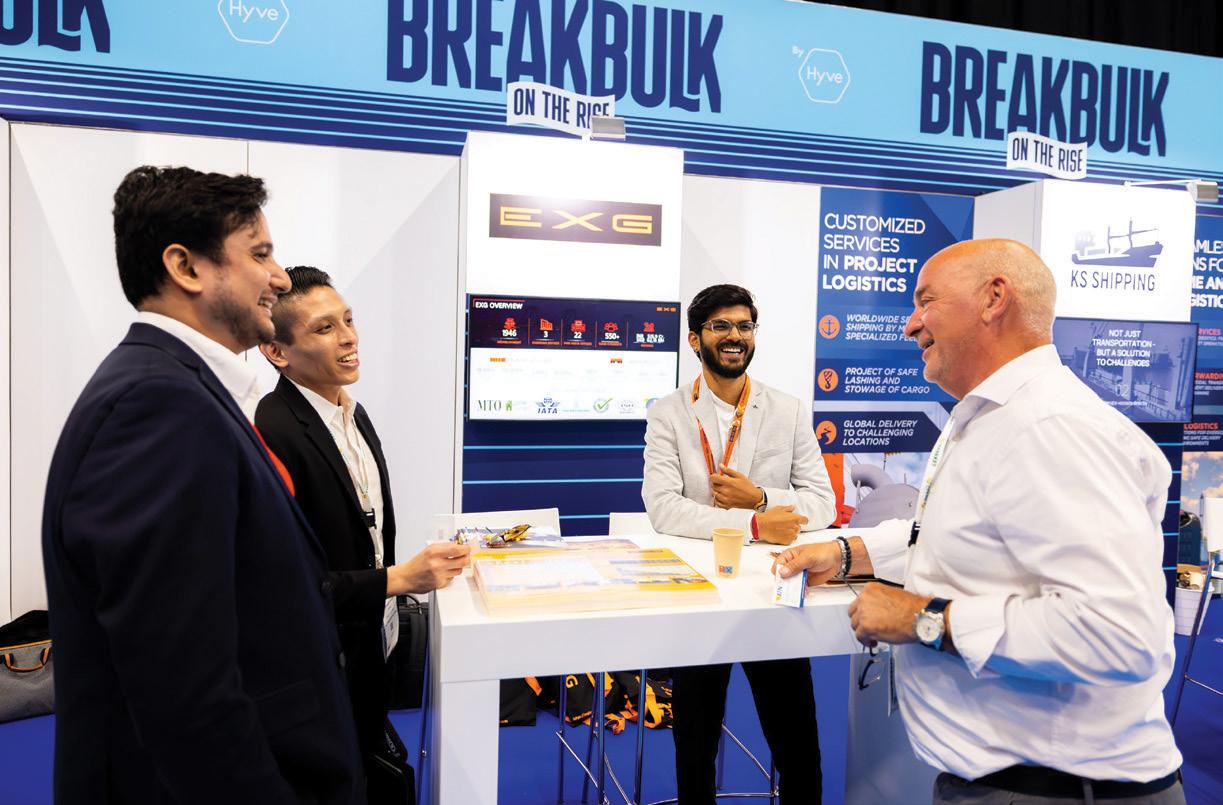
This package is an excellent step up from attending as a visitor, providing a presence at the event without the costs and commitments of building your own stand.
Limited spaces available. To reserve yours, get in touch with remi.toyobo@breakbulk.com today
Finished spaces will be similar to the Breakbulk on the Rise stations
*Kiosk visuals are not finalized. Design may change.
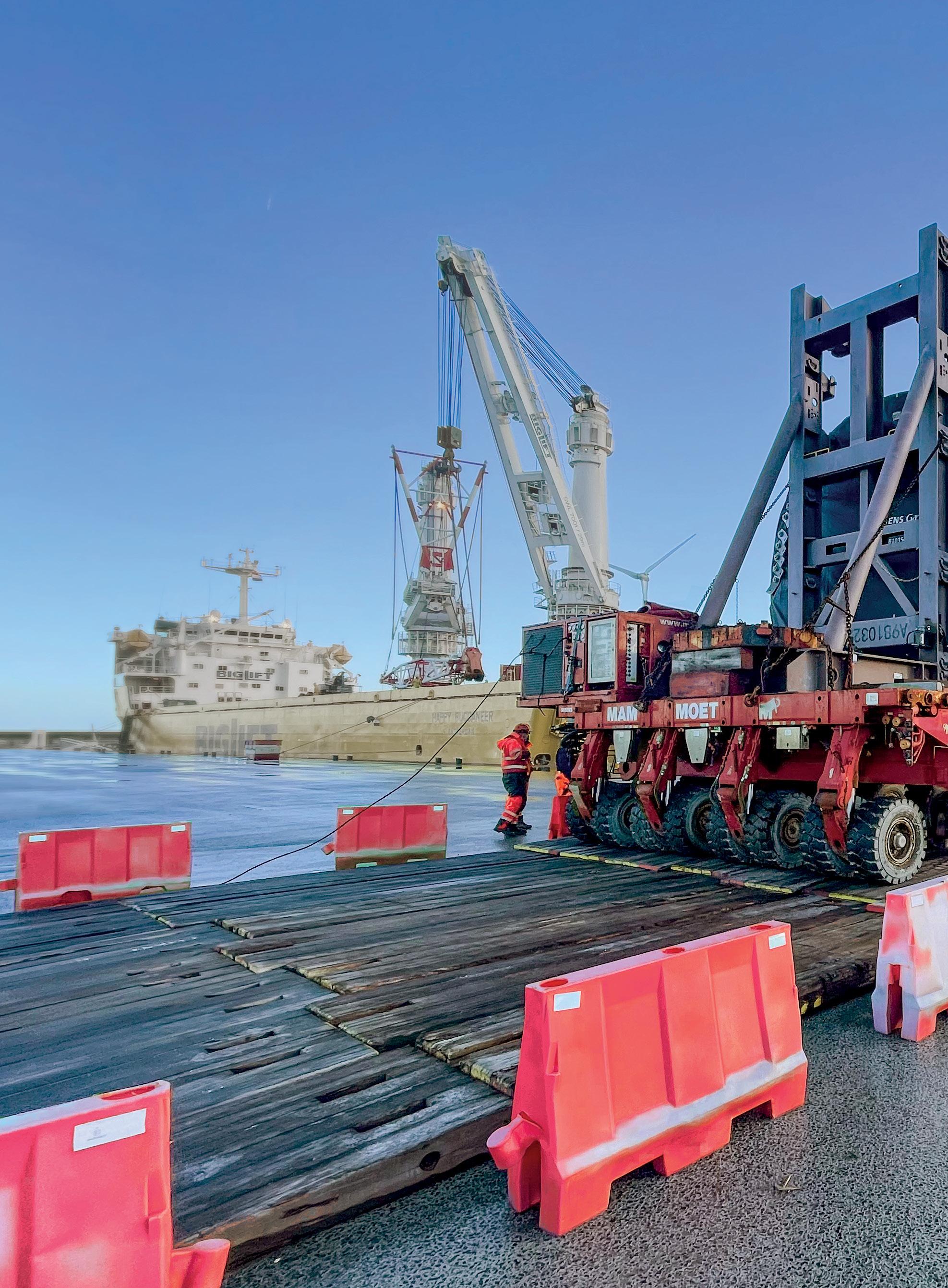


AND THE WINNERS ARE...
Breakbulk Events & Media launched its first awards program at Breakbulk Europe 2025. The ceremony was held with standing room only – a testament to the support for leaders in sustainability across the Breakbulk community. Watch the video here !
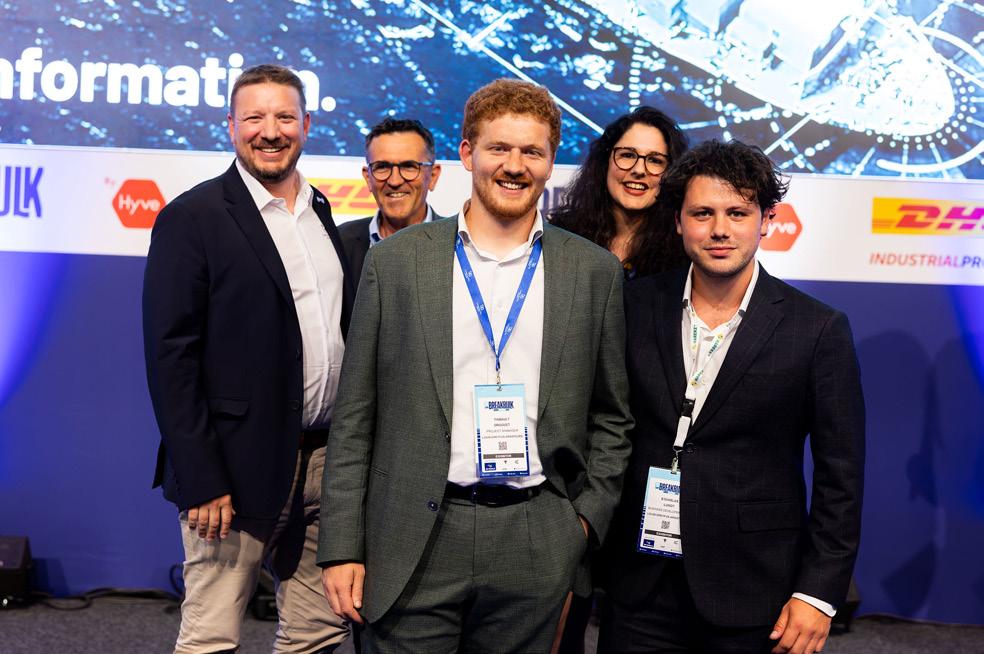
Sustainable Ship Design
LOUIS DREYFUS ARMATEURS
Photo: (Left to right) Mathieu Muzeau, Managing Director, Louis Dreyfus Armateurs; Jean-Louis Cadoret, General Manager, Louis Dreyfus Armateurs; Thibault Droguet, Project Manager, Louis Dreyfus Armateurs; Capucine Sasso Rios, Head of Communication Department, Louis Dreyfus Armateurs; Stanislas Lunot, Business Developer LDFS, Louis Dreyfus Armateurs.
Louis Dreyfus Armateurs (LDA) is building three low-emission RoRo vessels designed to minimize CO2 emissions. The three ships will be powered by six Norsepower Rotor Sails™, along with two dual-fuel engines that can run on marine diesel and e-methanol. Additionally, advanced routing software will optimize the ship’s course across the Atlantic, maximizing wind propulsion while minimizing drag from adverse ocean conditions. Finally, AI-driven control software will optimize the control of the rotor sails, adapting their performance in real time to the varying weather conditions and vessel specific aerodynamic nuances. Various other technologies have been integrated into the vessel.
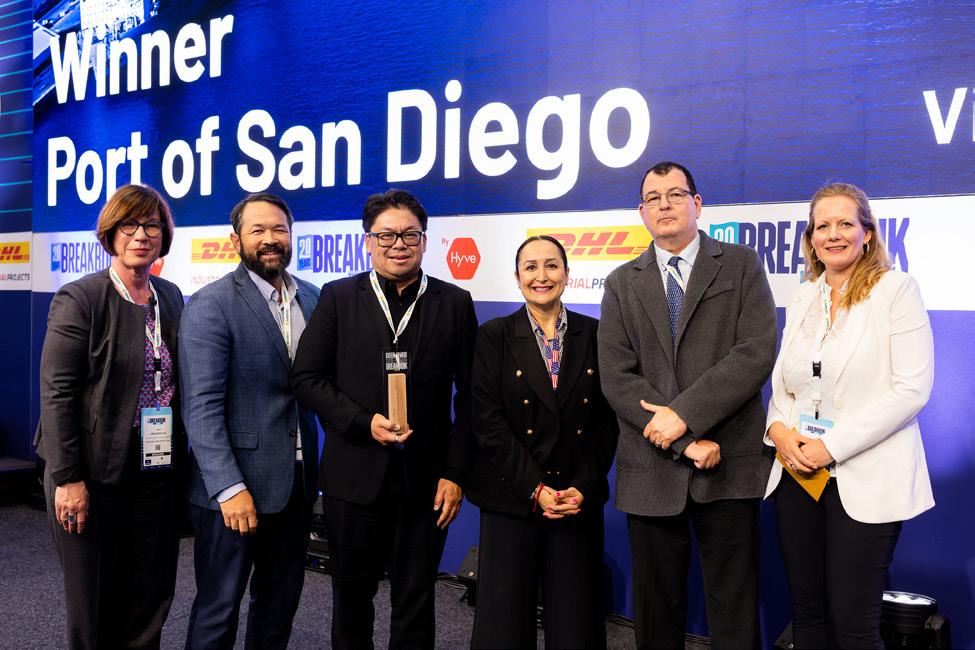
Photo: (Left to right) Tina Benjamin-Lea, Senior Logistics Manager –Construction & Project Logistics, Northvolt Drei Project and awards judge; Michael LaFleur, Vice President, Maritime, Port of San Diego; GilAnthony Ungab, Commissioner, Port of San Diego; Connie Lefevre, Senior Maritime Trade Account Manager, Port of San Diego; Greg Borossay, Principal Maritime Commercial, Port of San Diego; Martine Dekker, Co-Owner and Sales Manager, Nemag, and sponsor of this category.
The Port of San Diego has emerged as a leader in maritime sustainability through its Maritime Clean Air Strategy (MCAS), adopted in October 2021. With over 20 objectives focused on emissions reduction and environmental justice, the Port has committed $227 million to advance zero-emission (ZE) initiatives. The Tenth Avenue Marine Terminal (TAMT) Microgrid exemplifies the Port’s innovation, integrating a 700-kilowatt solar system and 2,700-kilowatt-hour battery storage to reduce emissions and ensure energy resilience. Significant milestones include deploying North America’s first allelectric mobile harbor cranes, supporting the first all-electric tugboat in the U.S., and expanding shore power for cruise and cargo vessels. Additionally, all three fueling docks in San Diego Bay now supply renewable diesel.
Green Port of the Year PORT OF SAN DIEGO

Best Maritime Transport
PRISM LOGISTICS
Photo: (Left to right) Thomas Skellingsted, President, 4D Supply Chain Consulting Inc. and awards judge; Riccardo Tippmann (consultant to Prism); Anshuman Banka, Managing Director, Prism Logistics.
Prism Logistics has set a new benchmark by executing the largest multimodal logistics project using turnkey logistics solutions. We moved 34 SODCs with a cargo volume of 75000+FRT and a weight of 13000+MT (equivalent to 130 Blue Whales) with single cargo dimensions of 60+ meters in length, 10+ meters in height, and 1,200+MT in weight. The project spanned 600+ km by road and 900+ nautical miles by sea in just 364 days. The execution involved groundbreaking innovations, including a 2,500+ MT sideways Ro-Ro operation, optimizing berthing and reducing turnaround time.

Best Overland Transport
PRISM LOGISTICS
Photo: Left to right) Łukasz Chwalczuk, President, Polish Heavy Transport Employers Association (OSPTN), Board Member ESTA and awards judge; Anshuman Banka, Managing Director, Prism Logistics.
Prism Logistics moved 34 SODCs with a cargo volume of 75000+FRT and a weight of 13000+MT with single cargo dimensions of 60+ meters in length, 10+ meters in height and 1,200+MT in weight. The project spanned 600+ km by road and 900+ nautical miles by sea in just 364 days.
We deployed 400+ SPMTs, 3 flattop barges, 8 tugs, 2 self-propelled vessels, prime movers, pullers and 1,400+ hydraulic axles. The execution involved groundbreaking innovations, including a 4+km single-lane convoy and the construction of three modular steel bridges capable of carrying 2000+MT loads.
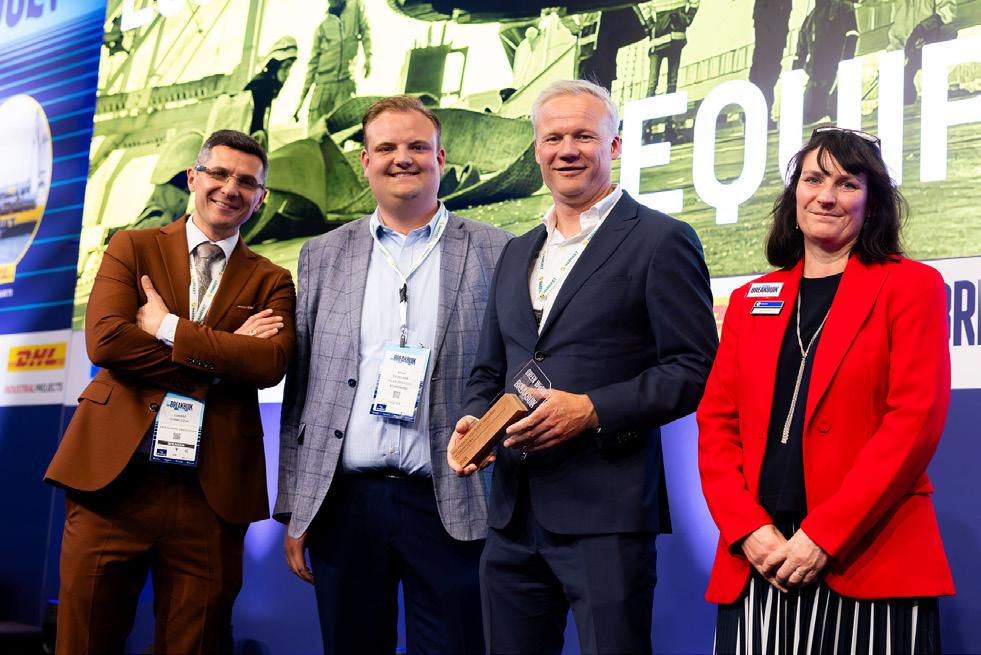
Eco-Friendly Equipment Provider of the Year
ECONOWIND B.V.
Photo: (Left to right) Łukasz Chwalczuk, President, Polish Heavy Transport Employers Association (OSPTN), Board Member ESTA and awards judge; Chiel de Leeuw, Chief Commercial Officer, Econowind; Stijn Engelage, Sales Manager, Econowind; Amanda Bouin, Global Senior Director Energy & Marine Logistics from GEODIS Project Logistics, and sponsor of this category.
Econowind develops the VentoFoil—a compact, foldable, and autonomous wind-assisted propulsion system for ships. Using advanced aerodynamics and a smart suction system, each VentoFoil delivers powerful thrust, equivalent to a sail five times its size. Weighing significantly less than alternatives, the 16-meter model is the lightest on the market and requires no extra deck reinforcement. Designed for both retrofits and newbuilds, VentoFoils come in various sizes and configurations, including containerized and flatrack options, making them suitable for a wide range of vessels. Unique features include multi-directional tilting, seamless integration, and two-directional airflow—exclusive to Econowind.
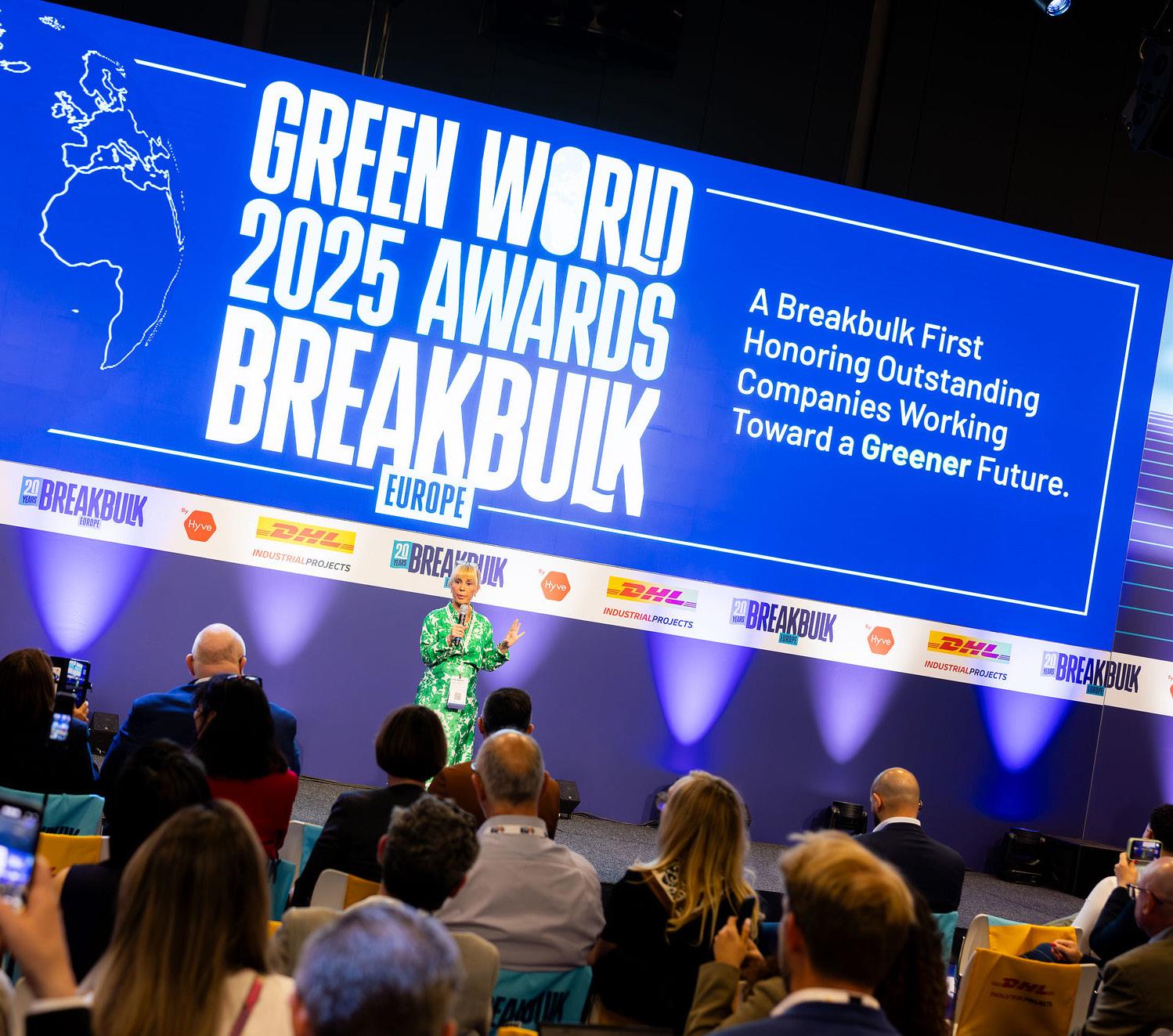

First Breakbulk awards program opens to full house at Breakbulk Europe.
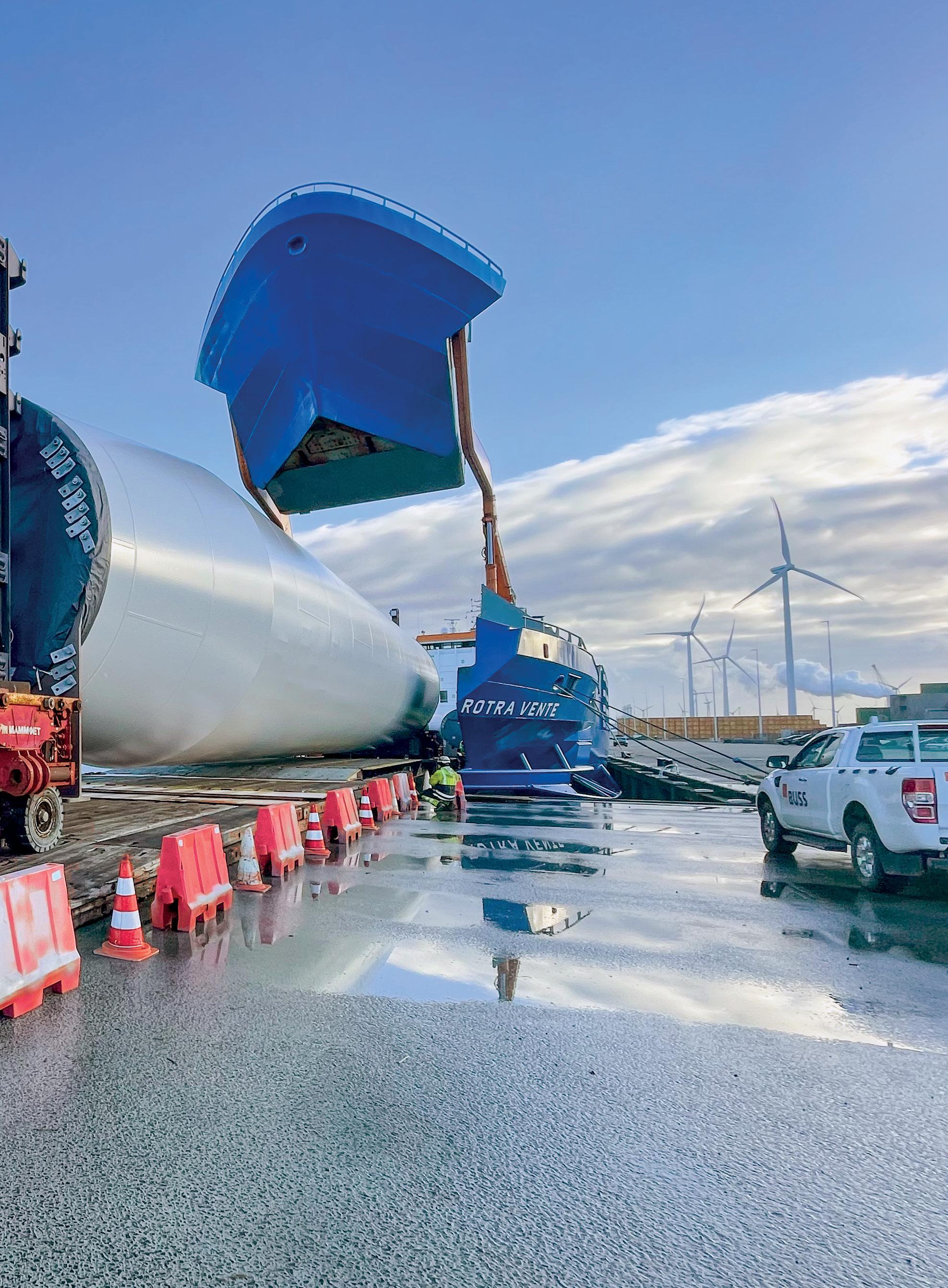
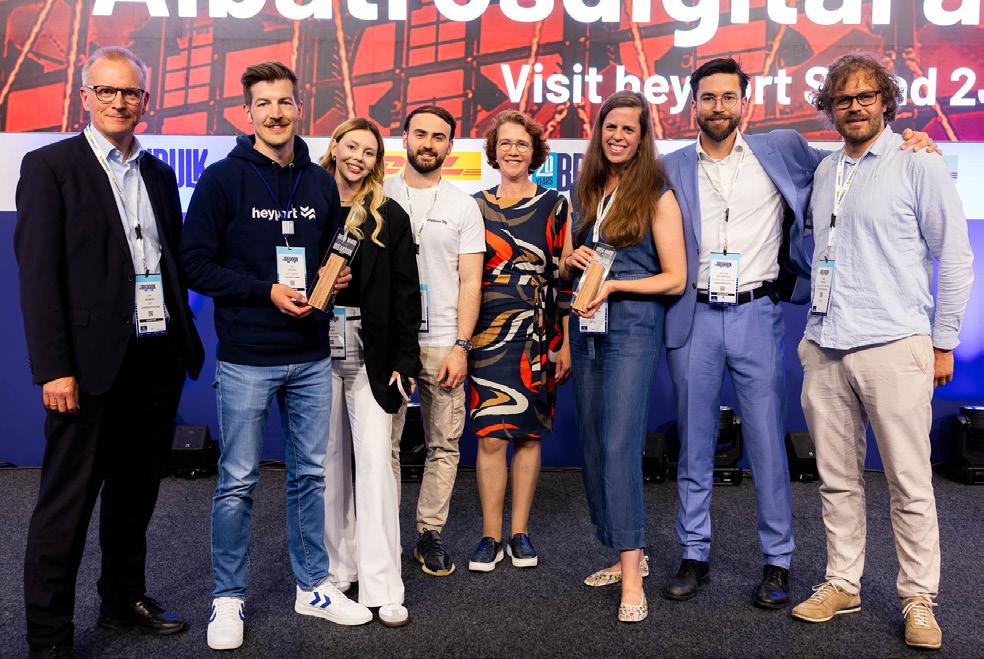
Best Digital Solution for Sustainability (tie)
HEYPORT
ALBATROS DIGITAL
Photo: (Left to right) Jan Herberg, Owner and CEO, Herberg Systems GmbH and award category sponsor; Jan Cantow, Co-founder, heyport; Melis Sumer, Sales Manager, heyport; Ashraf Bayramov, Sales Manager, heyport; Christel Pullens, director a.i. at PortXL; Ilse Rodewijk, Founder, AlbatrosDigital; Dr. Nico van der Kolk, Founder, AlbatrosDigital; Erik Verboom, Founder & Software Developer, Albatros Digital.
Heyport is revolutionizing port and terminal operations with a smart digital planning platform that reduces emissions, optimizes resources, and enhances efficiency. By enabling just-in-time vessel arrivals, real-time schedule synchronization and smarter berth planning, heyport minimizes fuel waste, congestion, and unnecessary delays—resulting in a 14% reduction in CO2 emissions and up to 180 minutes saved in planning per port call.
AlbatrosDigital builds digital solutions that predict vessel behaviour and energy consumption under any dynamic environment, making it easy to compare different vessel configurations and operational profiles. These digital innovations empower users to make informed decisions that align with both operational and environmental goals. By providing clear insights into energy use, anyone—from shipowners to charterers and design houses—can make informed decisions on vessel configurations and routing, ensuring optimal use of environmental factors for a cost efficient and greener future.
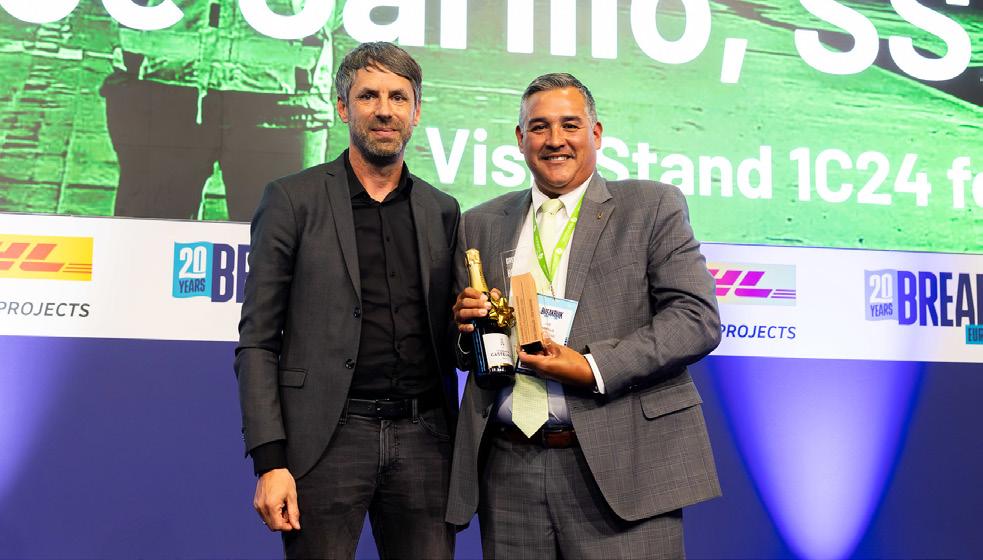
Sustainability Champion of the Year (People’s Choice Award)
SSA MARINE
Photo: (Left to right) Prof. Dr. Sven Hermann, Founder and Managing Director, ProLog Innovation and awards judge; Joe Carillo, Regional Vice President, SSA Marine.
Long before sustainability had a dedicated team at SSA Marine, Joe Carillo was already leading the charge. Undeterred by early skepticism, he pushed for cleaner operations, transforming not just his company, but the industry itself. After transitioning from a professional baseball career to SSA Marine, Joe’s commitment to sustainability took root in Panama, where he fostered a culture of environmental responsibility. He later returned to the U.S. West Coast and spearheaded the integration of zero-emission (ZE) forklifts into breakbulk cargo operations, an industry first. Beyond ZE vehicles, Joe has led solar and LED lighting initiatives, brought Green Marine certification to SSA Marine’s operations, and secured an additional $18 million for future ZE equipment.
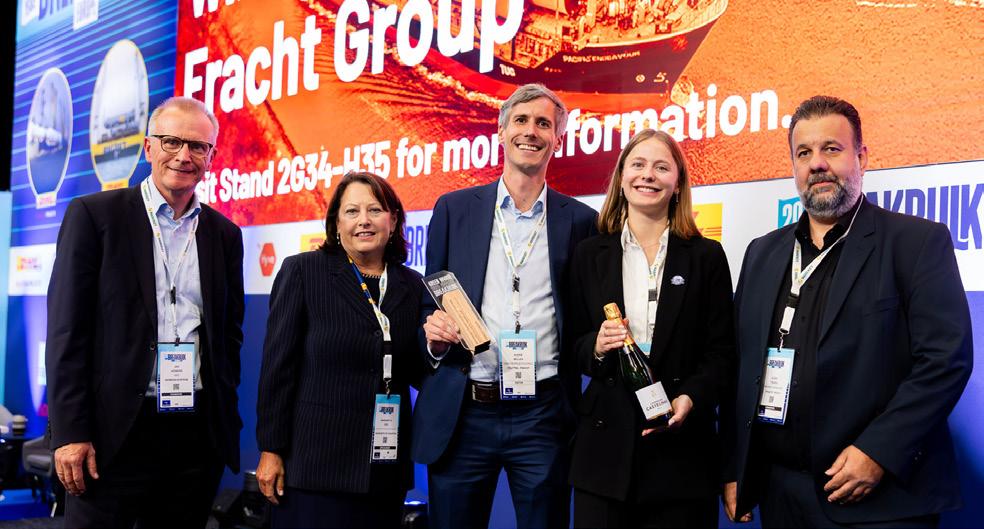
Renewable Energy Project of the Year (People’s Choice Award)
FRACHT GROUP
Photo: (Left to right) Jan Herberg, Owner and CEO, Herberg Systems GmbH and award category sponsor; Margaret A. Kidd, Program Director and Instructional Associate Professor, University of Houston and an awards judge; Alexis Mellen, Director Projects & Africa, Polytra - Fracht; Andrea Reisdorf, Director, Fracht AG; Alex Tegou, Branch Manager, Fracht Group.
The refurbishment of the INGA hydroelectric power plant stands as a testament to how large-scale infrastructure projects can be executed with sustainability at their core, through innovative design and transportation techniques. The project has prioritized environmental responsibility in order to refurbish the biggest renewable energy generation facility in Sub Sahara Africa. With the completed plant expected to provide a significant boost to the region’s renewable energy capacity, the INGA refurbishment will not only address the immediate energy needs of the DRC but also help drive long-term sustainable development for the region and all stakeholders of the region. Watch the project video here.
TOP 10 BREAKBULK EUROPE PHOTO CONTEST WINNERS
Determined by popular vote, here are the results of this year’s contest
1

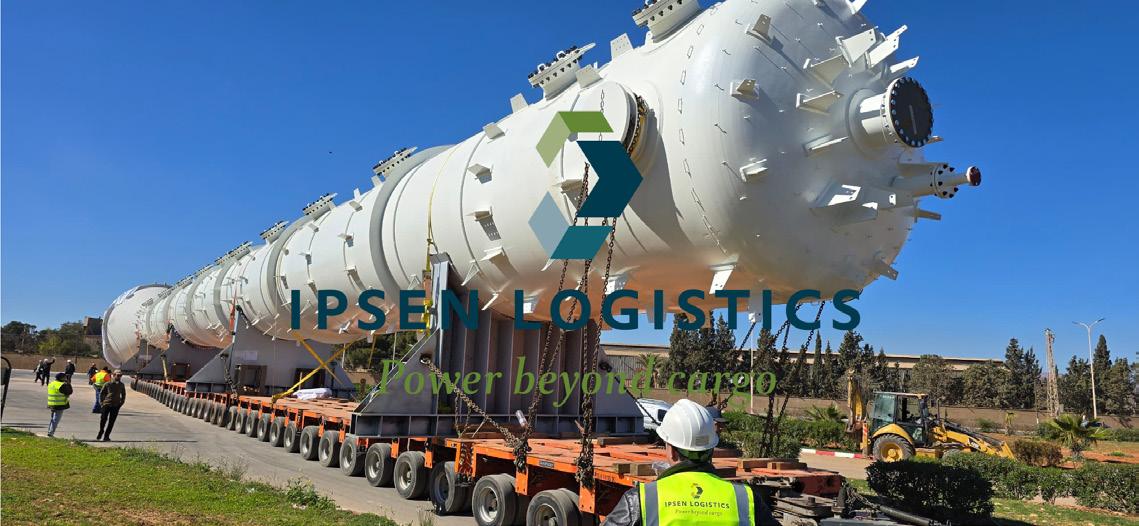
2
Ipsen Logistics 2025, Algeria
Sonatrach’s Methyl Tertiary Butyl Ether Project (MTBE) for EPC JV China National Technical within the Arzew Petrochemical Area, marked another strategic project for Ipsen Logistics in Algeria, thus exceeding 100 industrial projects handled locally.
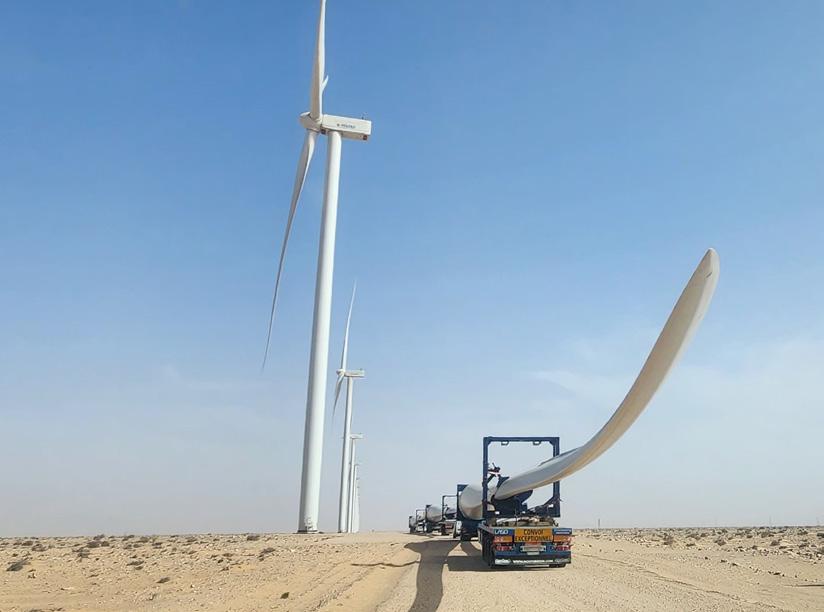
Prism Logistics 2024, India
Prism Logistics has set a new benchmark in multimodal transportation with our recent record-breaking project of transporting 34 SODCs, weighing 13000+ MT, to the remote Barmer Refinery Project site in India within 364 days.
EWA Group 2024, Egypt
Massive 92-meter-long GOS II blade transport from Adabiya Port to Gulf of Suez II.
3
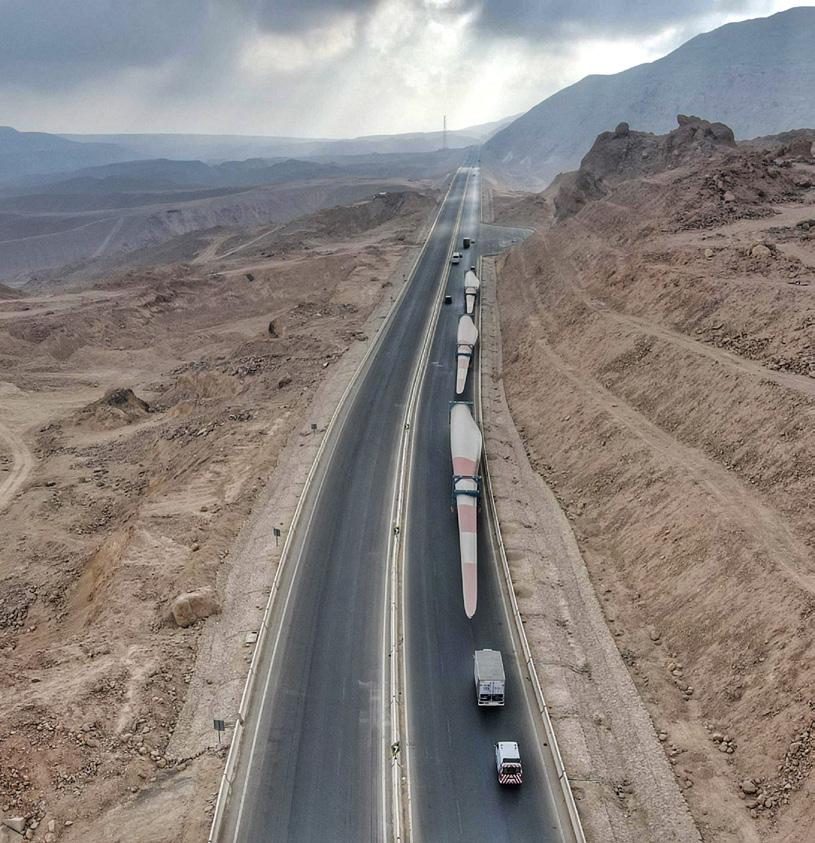
4 5
Marizon Marine Services 2025, United Arab Emirates
The heavy-lift loadout of one of three mobile harbor cranes, weighing more than 410 tonnes each at Mina Saqr.
Kaleido Logistics 2024, Morocco
Transporting massive wind blades across breathtaking desert landscapes, we pave the way for a more sustainable future, ensuring that clean energy reaches even the most distant locations.
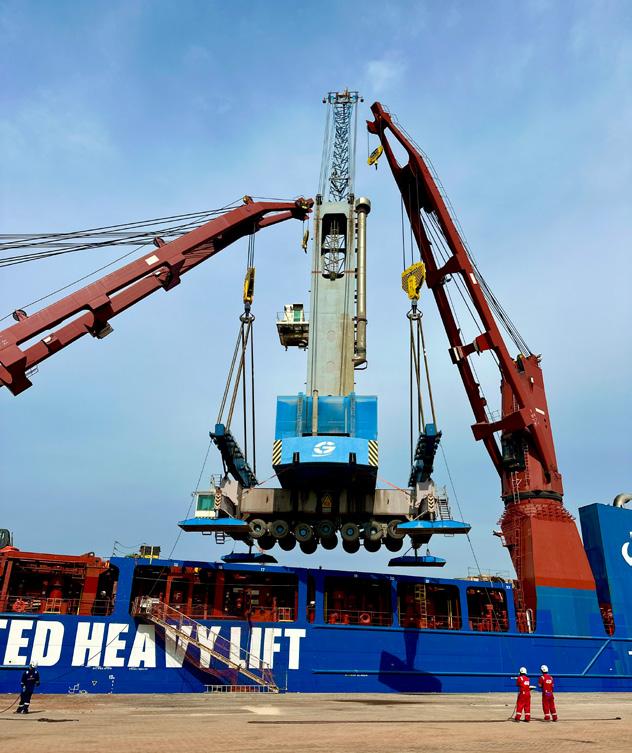
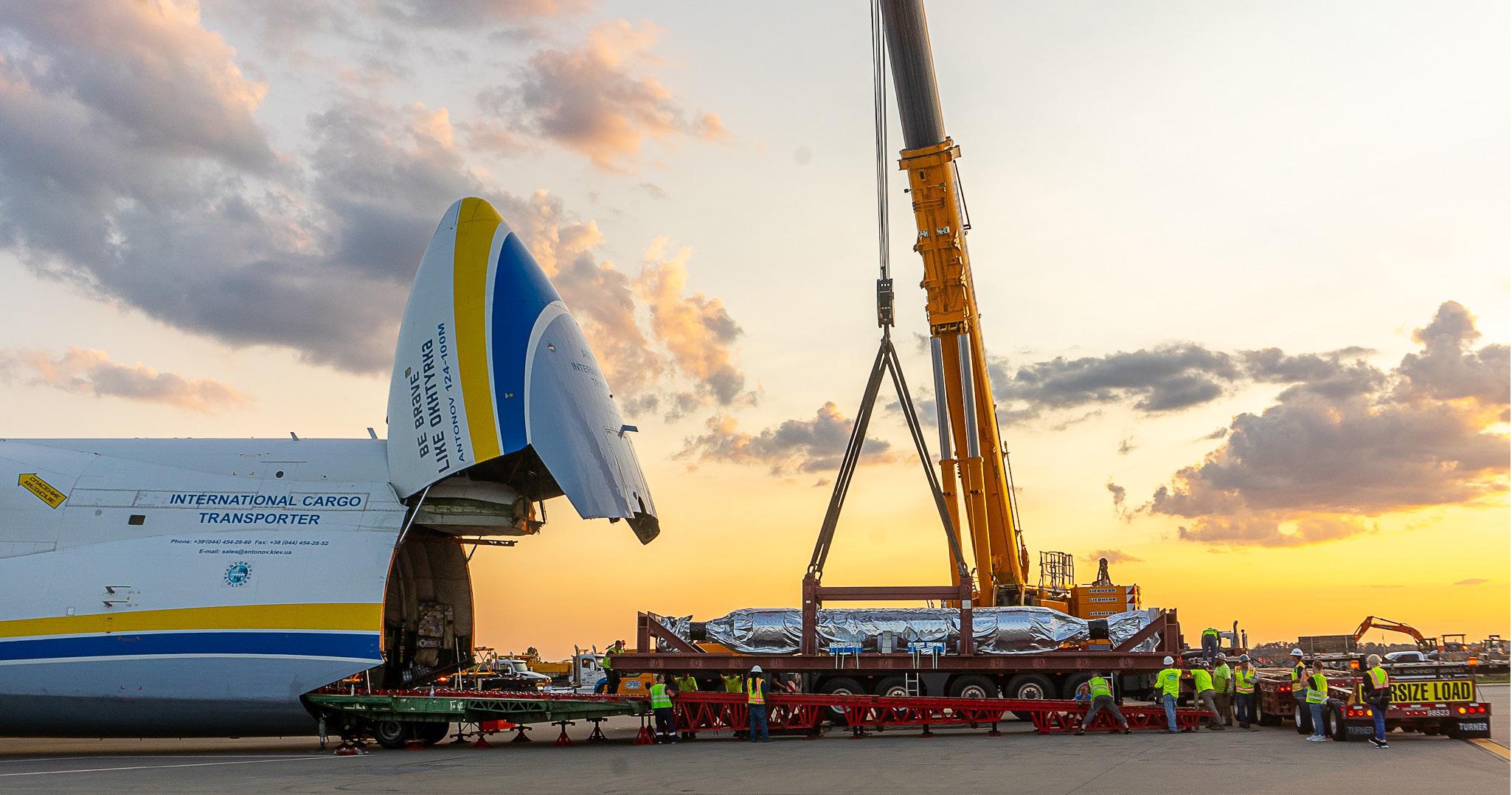
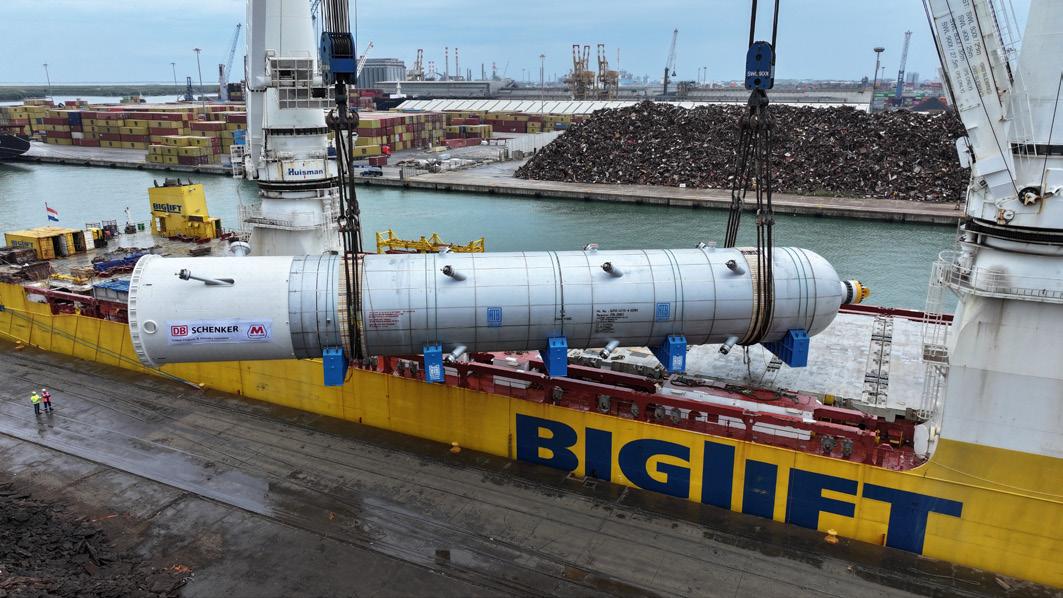
DB Schenker 2024, Italy
After nearly two years of planning, DB Schenker Global Projects and Industrial Solutions, USA, successfully executed its heaviest load to date: Two massive reactor vessels for an energy industry leader were safely loaded onto BigLift Shipping’s Happy Sky at the Port of Porto Marghera, Italy.
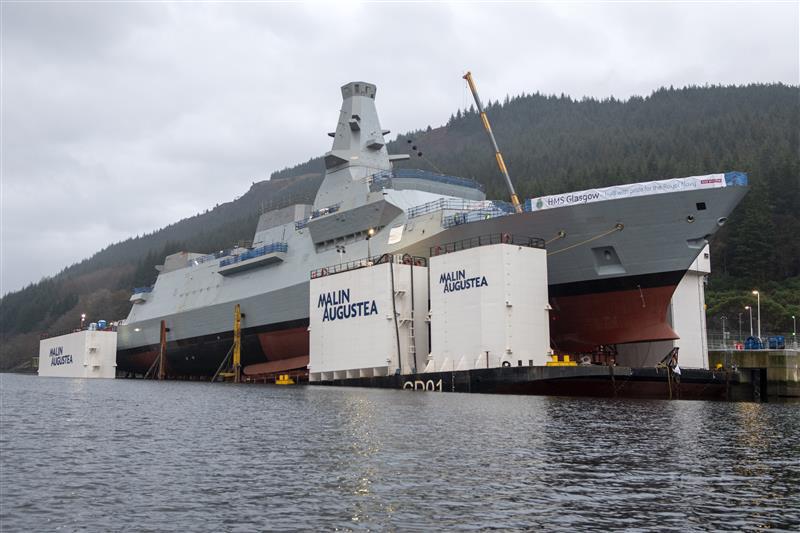
LS Cargo Logistics GmbH 2024, USA
LS Cargo USA & LS Germany delivered a time critical shipment via Antonov Airlines from Charlotte, North Carolina to the jobsite in Abu Dhabi.
CJ ICM Logistics 2025, Uzbekistan
World’s heaviest gas turbine transported over 2,100 kilometers using two girder bridge trailers simultaneously.
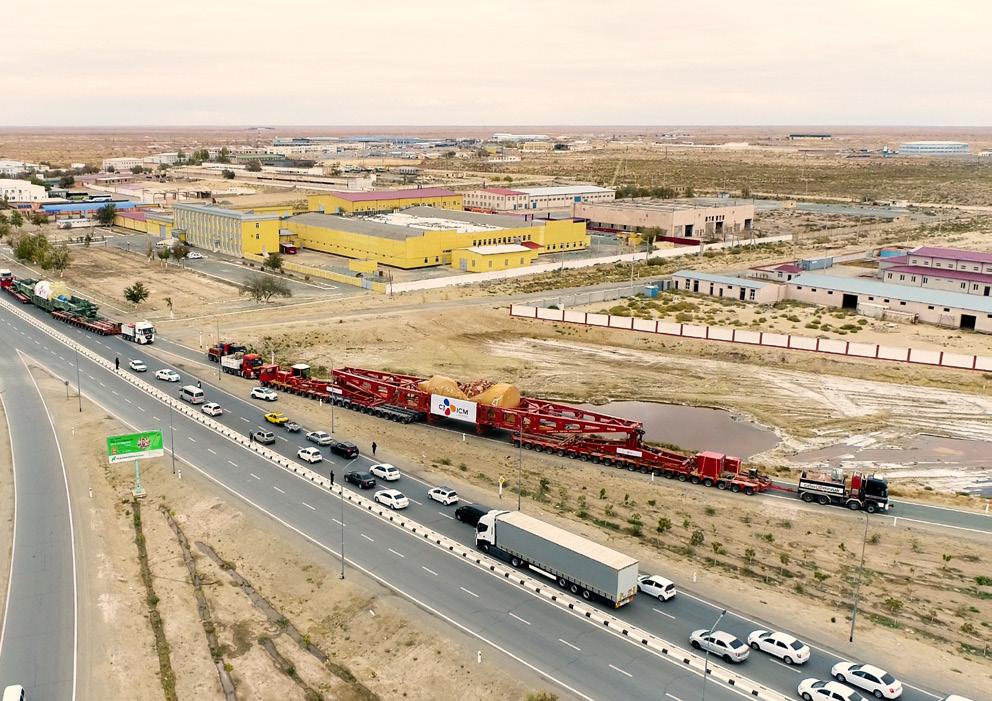
Share Logistics 2025,Brazil
Discharging a TCP reel from a breakbulk vessel at Port of Açu in Rio de Janeiro.
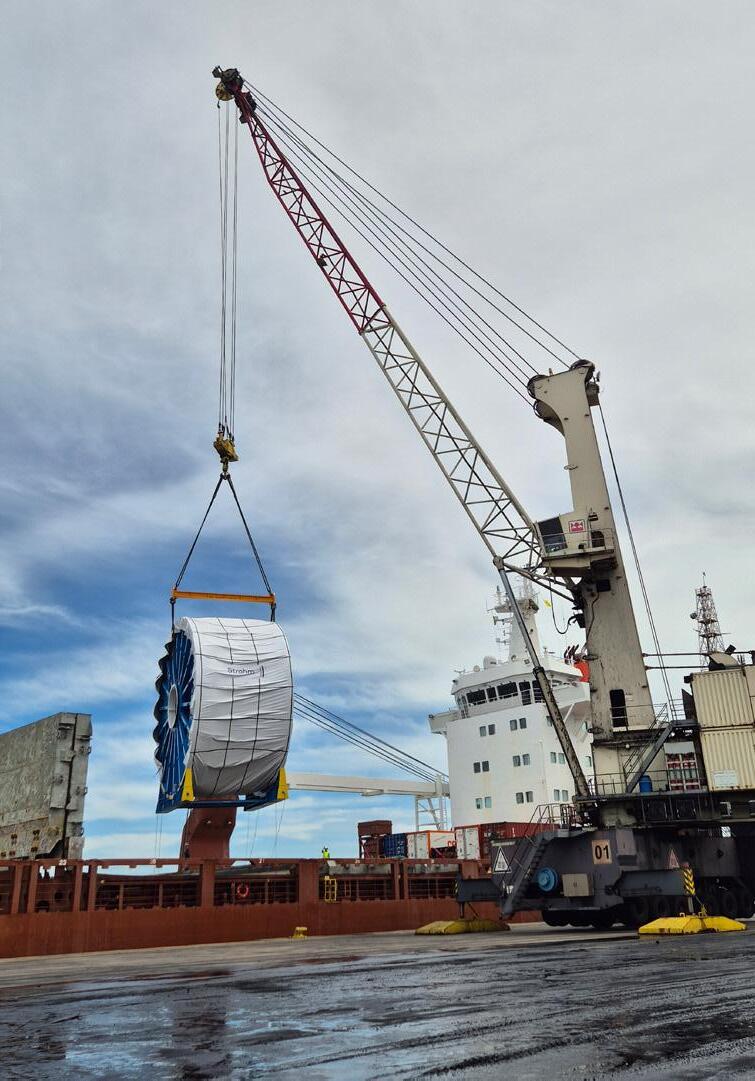
Malin Abram 2022, United Kingdom
Roll-out and float-off of the Type 26, HMS Glasgow, first in class, using the company’s customized 137m barge, the CD01, on the banks of the Clyde, Govan, Glasgow.
NEW FACES AT BREAKBULK AMERICAS 2025
Add these exhibitors to your meeting schedule at Breakbulk Americas 2025!


SHIPHUB
Dominik Bledzki Co-Founder Germany Technology
www.ShipHub.co
Booth B57
1. What is the most important thing about your company that you’d like the Breakbulk community to know about?
At ShipHub.co, we simplify global freight sourcing. We connect shippers with verified freight forwarders through a powerful lead generation platform designed for transparency, efficiency and real results. Whether you’re shipping containers from Asia or handling complex project cargo, ShipHub helps you find competitive offers quickly, without the back-and-forth. Our goal is to make freight quoting as easy as booking a hotel.
2. What made you decide to exhibit at Breakbulk Americas 2025? For 35 years Breakbulk Americas is where serious logistics decisions are made, and we want to be part of that conversation. Our platform is already used by thousands of companies seeking trusted verified logistics partners for all kinds of cargo. Exhibiting here allows us to meet face-to-face with freight forwarders and shippers and to show how ShipHub can streamline their operations and generate new business.
3. What are the biggest challenges facing industry professionals and how can coming together in Houston benefit you and your colleagues?
Today’s logistics professionals face mounting pressure: rising costs, unstable routes, compliance demands and fierce competition. In this environment, speed, trust and digital tools are more critical than ever. Breakbulk Americas offers a rare opportunity to share knowledge, form strategic partnerships and explore technology-driven solutions like ShipHub. Meeting in Houston means we can move from emails to real collaboration — faster.


TALKE USA, Inc.
Richard Heath CEO & President
Texas, United States
Road & Rail Transport
www.talke.com
Booth J50
1. What is the most important thing about your company that you’d like the Breakbulk community to know about?
TALKE USA specializes in safe, reliable logistics for the chemical and petrochemical industries. Based in the Houston area, we offer customized solutions for storage, handling and transport, with a strong focus on safety, compliance and operational excellence.
2. What made you decide to exhibit at Breakbulk Americas 2025? Breakbulk Americas brings together key players in project cargo and industrial logistics. It is the ideal platform for us to connect with partners, showcase our capabilities and explore how we can support complex logistics needs in the Gulf Coast region and beyond.
3. What are the biggest challenges facing industry professionals and how can coming together in Houston benefit you and your colleagues?
The industry is navigating supply chain disruptions, regulatory changes and growing demands for sustainability. Gathering in Houston, one of the world’s logistics and petrochemical hubs, allows us to exchange ideas, strengthen networks and find smarter, more resilient ways to move forward together.

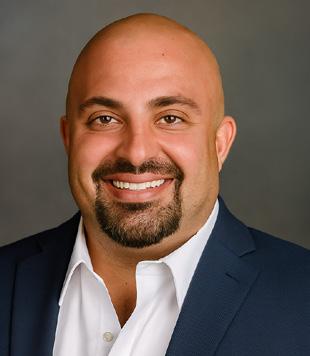
Gulf Coast Crating & XLR8
Delivery
Paul Pitman CEO/President
Texas, United States
Industry-related Services
www.gulfcoastcrating.com | www. xlr8delivery.com
Booth T48
1. What is the most important thing about your company that you’d like the Breakbulk community to know about?
The most important thing we want the breakbulk community
to know is that Gulf Coast Crating and XLR8 Delivery operate as a seamless extension of our clients’ supply chains. From custom export crating and industrial packing to time-sensitive transportation and final-mile delivery, we bring precision, reliability and responsiveness to every project. Our combined expertise means your cargo is not only protected, it’s prioritized. We understand the stakes in breakbulk logistics, and we’re built to deliver peace of mind at every stage.
2. What made you decide to exhibit at Breakbulk Americas 2025?
We decided to exhibit at Breakbulk Americas this year because it’s the premier event for connecting with key players in the project cargo and logistics industry. Our services are deeply aligned with the complex demands of breakbulk: from precision export crating to reliable transportation and final-mile execution. Being here allows us to showcase our capabilities, build meaningful partnerships and stay at the forefront of industry trends. It’s the ideal platform to demonstrate how Gulf Coast Crating and XLR8 Delivery deliver value where it matters most — in the field, on the dock and under deadline.
3. What are the biggest challenges facing industry professionals and how can coming together in Houston benefit you and your colleagues?
Managing complex operations, from custom crating and export packing, drayage, brokerage, and time-sensitive deliveries, without compromising customer experience is a top challenge in our industry. Rising costs, tight schedules and handling oversized or high-value cargo add pressure, while customers demand speed, transparency and tailored service.
At Gulf Coast Crating and XLR8 Delivery, customer satisfaction is our top priority. This event gives us the chance to connect with others who share that commitment, exchange ideas and build partnerships that help us raise the standard for service and reliability.
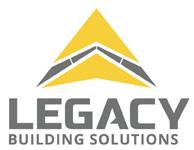

Legacy Building Solutions
Adam Laidlaw
Construction
Manager
Minnesota, United States
Equipment www.legacybuildingsolutions.com Booth C32
1. What is the most important thing about your company that you’d like the Breakbulk community to know about?
Legacy Building Solutions is redefining the possibilities of fabric structures by combining the proven benefits of rigid steel frames with high-performance architectural fabric. This allows us to deliver fully customized, engineered structures
tailored to the unique demands of breakbulk and heavy industrial operations. From port terminals and logistics hubs to bulk storage and maintenance facilities, our buildings are designed for rapid construction, long-term durability, and adaptability, meeting the exact needs of your operations, not the limitations of a pre-engineered kit.
2. What made you decide to exhibit at Breakbulk Americas 2025? Breakbulk Americas brings together a highly focused community of logistics, port and heavy-lift professionals, the exact audience who benefits from our specialized building solutions. We’re here to showcase how Legacy structures can optimize operations, reduce downtime and adapt to the complexities of breakbulk handling. It’s also an ideal venue to reconnect with partners, explore emerging trends and demonstrate the real-world value our buildings deliver in some of the most demanding environments.
3. What are the biggest challenges facing industry professionals and how can coming together in Houston benefit you and your colleagues?
Industry professionals are facing tighter timelines, increasing demands for operational flexibility and the need to remain resilient in the face of global disruptions. With space limitations and logistical bottlenecks, efficient infrastructure has become a critical advantage. Coming together in Houston allows us to share strategies, discuss innovations and form partnerships that drive better outcomes. It’s also a chance to learn firsthand how others are adapting and how purpose-built solutions like ours can help solve these pressing challenges.
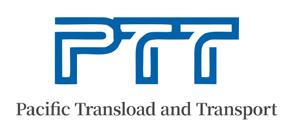

Pacific Transload and Transport
Alan Luan CEO
California, United States Freight Forwarder www.pacifictnt.com Booth E47
1. What is the most important thing about your company that you’d like the Breakbulk community to know about?
Our company is a premier logistics service provider specializing in heavy, hazardous and oversize freight throughout the United States. Backed by extensive industry experience, we are known for delivering safe, reliable and efficient transportation solutions. From large-scale industrial freight to hazardous materials, we offer the technical expertise, regulatory knowledge and fleet capacity to handle complex logistics with precision. Equipped with advanced technology and a fleet of well-maintained trucks and trailers, we ensure each load is managed with the highest standards of safety and care. We pride ourselves on responsive customer service, working
closely with clients to customize logistics strategies that meet their specific needs.
2. What made you decide to exhibit at Breakbulk Americas 2025?
We decided to exhibit at Breakbulk Americas this year because it’s the largest and most influential event for the project cargo and breakbulk industry in the region. It offers a unique opportunity to connect directly with key decisionmakers, strengthen existing partnerships and showcase our capabilities to a highly targeted audience. With the industry continuing to evolve post-pandemic and global supply chains facing new challenges, we felt it was the right time to increase our visibility, explore new business opportunities and stay ahead of market trends.
We want to increase our visibility in the North American market, connect with key players in the project cargo industry and explore new business opportunities. It’s a premier platform for networking, staying informed on industry trends and demonstrating our commitment to serving the breakbulk and logistics community.
3. What are the biggest challenges facing industry professionals and how can coming together in Houston benefit you and your colleagues?
One of the biggest challenges industry professionals face today is navigating ongoing supply chain disruptions, rising transportation costs and increasing pressure to deliver more sustainable logistics solutions. There’s also a growing need for stronger collaboration across sectors to manage complex, oversized cargo movements efficiently.


JS&J Solutions Shay Downing Texas, United States Freight Forwarder
www.jsjsolns.com Booth S47
1. What is the most important thing about your company that you’d like the breakbulk community to know about?
JS&J Solutions specializes in handling, storing, rigging, transloading and transporting overdimensional, out-of-gauge and project cargo across the Gulf region. What sets us apart is our commitment to delivering tailored, high-touch logistics solutions with a focus on safety, compliance, real-time visibility and customer satisfaction. We understand the complexity of breakbulk operations and pride ourselves on being a reliable partner that makes logistics easier for our clients.
2. What made you decide to exhibit at Breakbulk Americas 2025? Breakbulk Americas is the premier gathering for project cargo and breakbulk professionals, and we saw it as the ideal platform to strengthen relationships, showcase our capabilities and connect with partners who value experience, innovation and integrity in logistics. As a Gulf-based operator, this event allows us to amplify our presence in a region we proudly serve while aligning with industry leaders driving global trade.
3. What are the biggest challenges facing industry professionals and how can coming together in Houston benefit you and your colleagues?
The industry continues to face challenges around port congestion, labor shortages, regulatory shifts and the demand for smarter, more resilient supply chains. Coming together in Houston, one of the most strategic logistics hubs in North America, creates a powerful opportunity to share knowledge, build partnerships and develop solutions that elevate performance across the breakbulk ecosystem.


Trans-United Specialized Hauling
Elijah Fleming Marketing Manager
Indiana, United States Road & Rail Transport www.transunited.com
Booth M15
1. What is the most important thing about your company that you’d like the breakbulk community to know about?
We would like the Breakbulk community to know that TransUnited can handle almost any size shipment or volume of shipments in North America. We have been in business since 1964 and understand freight forwarding partners value longevity and consistency. We manage single loads to largescale, multi-load projects while striving to be one of the most transparent transportation solution providers our customers work with. We overcome challenges, we work hard, we have integrity, and we are your trusted service provider.
2. What made you decide to exhibit at Breakbulk Americas 2025? Trans-United is your provider that still believes in the positive impact of a handwritten letter. In the modern digital world, having a personal relationship where handshakes and eye contact happen is crucial to communicating effectively and building trust. Breakbulk is easily the biggest customer visit of the year, allowing us to network with fellow industry professionals.
3. What are the biggest challenges facing industry professionals and how can coming together in Houston benefit you and your colleagues?
One of the biggest challenges facing the industry is uncertainty. Industry professionals are uncertain if the market demand for their services will shift, uncertain if suppliers of transportation are being transparent, and uncertain what the future looks like. The Breakbulk show helps us cross the barrier of uncertainty with our industry partners, who know we cannot control everything in their business, but what Trans-United does control will be communicated with transparency, which relieves stress from our customers.

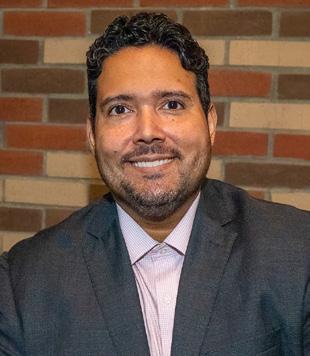
Brandlog International
Franklin L. Urriola Chief Executive Officer
Panama Freight Forwarder
www.brandlogint.com
Booth L31
1. What is the most important thing about your company that you’d like the breakbulk community to know about?
Brandlog is an innovative and fast-growing logistics company based in Panama. We take an outside-the-box approach to help our customers move cargo efficiently through the Panama Canal and across the Americas through Panama’s well known logistics hub. Our strength lies in delivering creative, flexible solutions tailored to complex logistics needs.
2. What made you decide to exhibit at Breakbulk Americas 2025? This will be our first time exhibiting at Breakbulk Americas, and we’re excited for the opportunity to connect with U.S.- and Latin America-based companies. We believe our expertise and strategic location in Panama can add significant value to partners seeking smart logistics solutions in the region.
3. What are the biggest challenges facing industry professionals and how can coming together in Houston benefit you and your colleagues?
One of the biggest challenges in today’s logistics industry is navigating shifting trade dynamics and supply chain disruptions. Events like Breakbulk Americas allow us to build new relationships, share best practices and identify opportunities for collaboration that can help overcome these challenges.

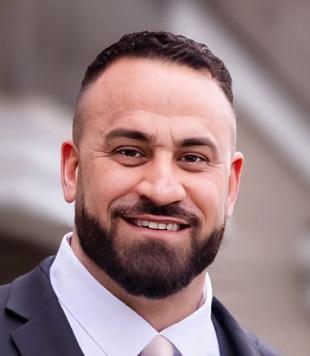
Izzi Trucking & Rigging Inc.
Martin Steenbock
New Jersey, United States
Road & Rail Transport
www.izzirigging.com
Booth H49
1. What is the most important thing about your company that you’d like the breakbulk community to know about?
Izzi is a second-generation, family-owned business with over 53 years of experience specializing in heavy haul transportation, rigging and warehousing. The company is known for delivering turnkey, professional solutions tailored to meet the complex needs of its customers. With deep industry knowledge, a hands-on approach and a strong commitment to service, IZZI has earned a reputation as a trusted partner in the breakbulk and heavy logistics space.
2. What made you decide to exhibit at Breakbulk Americas 2025? Izzi is exhibiting at Breakbulk Americas to connect with professionals both within and beyond the heavy haul and rigging industry. The company sees the event as a valuable opportunity to build meaningful relationships, engage with current customers, uncover new business opportunities and support others in finding the right vendors for their project needs. Exhibiting also allows Izzi to stay informed on the latest industry trends, technologies and insights that influence their work and their clients’ success.
3. What are the biggest challenges facing industry professionals and how can coming together in Houston benefit you and your colleagues?
One of the biggest challenges in the industry is navigating complex projects safely, efficiently and on schedule—especially amid ongoing economic pressures, rising costs and supply chain disruptions. Breakbulk Americas in Houston provides a valuable opportunity for industry professionals to connect, share capabilities and explore creative, collaborative solutions. For Izzi, these relationships are essential to evolving as a company, staying competitive and consistently delivering reliable, cost-effective service to its clients.
AMERICA’S SHIPBUILDING COMEBACK: PROMISE OR PIPE DREAM?
No Quick Fix for Domestic Production, but There’s Cautious Optimism for the Future
By Amy McLellan

From tariffs to trade disruption, the first six months of the year have continued to throw curve balls at the shipping industry. Among the many policy announcements that made headlines earlier this year, the bi-partisan SHIPS for America Act and President Trump’s Maritime Executive Order of April 2025, directing the development of a Maritime Action Plan, have the potential to be truly transformational.

Together with the actions taken by the Office of the United States Trade Representative (USTR) following a year-long Section 301 investigation into what it called China’s “unreasonable acts,” these measures set out a long-term vision to revive and reshape the U.S. maritime sector, including rebuilding its domestic shipbuilding base and a goal to establish a fleet of 250 U.S.-flagged commercial vessels.
The USTR measures include phased fees on Chinese vessel owners and operators, calculated by net tonnage per U.S. voyage; fees on operators of Chinese-built ships, based on net tonnage or container volume; and fees on foreignbuilt car carriers, determined by capacity — all of which will increase incrementally in the coming years.
After three years, the second phase will see limited restrictions on transporting LNG via foreign vessels, which will be increased incrementally over 22 years. There are also proposed tariffs on shipto-shore cranes and other port equipment, in line with the President’s Maritime Executive Order.
The comprehensive vision, and the level of detail, took many in the industry by surprise. Yet Matthew Paxton, president of the Shipbuilders Council of America, points out while the SHIPS for America Act may be new legislation, elements of it, including the Energizing American Shipbuilding Act, have been around for more than a decade.
Backers of the bill point out that China’s massive government support, through subsidies, below-market financing, tax preferences and statedirected steel supply, have created an unfair advantage, giving them the ability to produce ships at prices U.S. shipyards simply can’t match.
And this has security implications, since a strong commercial shipbuilding base underpins naval
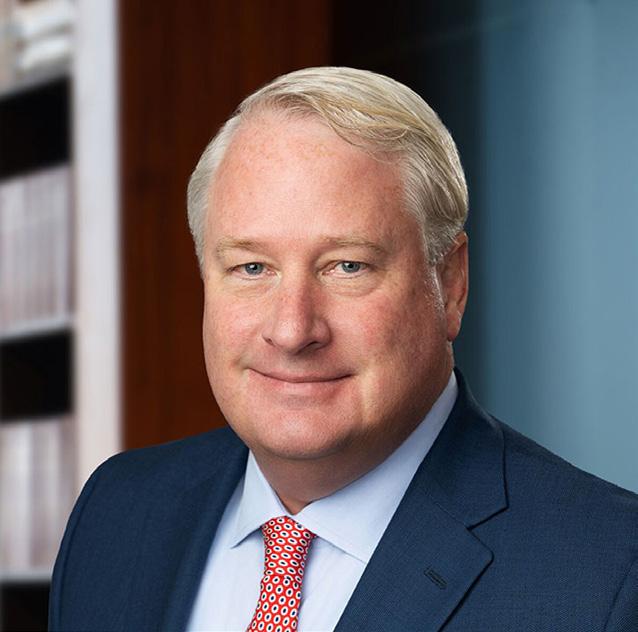
delivery. “The decline in commercial shipbuilding undermines the industrial base needed for naval shipbuilding, repair, and surge capacity, threatening both economic and national security,” says Paxton.
U.S. shipyards built just five units in 2024, compared to over 250 constructed in China’s shipyards.
“With aging fleets, outdated infrastructure and shrinking industrial capacity, the time for incremental change has passed,” said Jan Sramek, founder and CEO of California Forever, which has plans to build a new shipyard in the north of the state (of which more later). Speaking earlier this year, Sramek said the U.S. “must reestablish domestic production at scale – now.”
As highlighted in recent GAO and DoD reports, U.S. shipyards struggle with “boom and bust” cycles and underutilization from government customers. These demand signals often result in smaller orders and inconsistent requirements. “What our industry needs is a stable and predictable demand that enables investment in our facilities and people. The SHIPS Act would be critical to that effort,” says Paxton.
Challenges Ahead
The proposed revival of U.S. commercial shipbuilding has been welcomed by many, though there’s also caution about the details and the timeframe.
Matthew Paxton, SCA
Welding operations at Hanwha Philly shipyard, Philadelphia. Credit: Hanwha Philly Shipyard

“I applaud this bipartisan initiative, there’s been nothing like this since the Merchant Marine Act,” says Captain Bill Schubert, who was U.S. Maritime Administrator 2001-2005, and is the founder of Houston-based consulting company International Trade & Transportation.
“How we get there and how fast, that’s the question. There’s been a lot of good advice from people in the maritime sector, which includes the importance of focusing not just on the supply side but also the demand side.”
Quite simply, there’s no point building 250 U.S.-flagged ships unless they are commercially viable. Captain Schubert anticipated a combination of measures will address the demand side, adding that the transition time needs to be practical, given the realities of where we are now.
“I have full confidence the yards are capable, we have proven
this in the past, but we just need to be practical about the implementation timeframe.”
For John Hark, director of Bertling Logistics Services in Houston and adjunct professor at Texas A&M University College of Marine Sciences and Maritime Studies, one of the big challenges will be finding labor. “It requires people,” he says, pointing out that workforce skills gaps are not a new problem but they are becoming more intense due to long-term demographic trends.
“About 10,000 people turn 65 every day, so we have to work hard to get people interested in joining the industry,” says Hark.
Port Houston has taken a proactive approach, with a decade-old program involving businesses and education stakeholders, helping to develop career pathways into the industry for young people. “It’s been proactive and forward thinking, which gives
this area a jump start when it comes to talent and skills,” he says.
Industry watchers are now closely observing the extent to which workforce development, permitting and capital formation will keep pace with policy ambition.
Many are asking how an industry that has been outpaced by international yards, most notably in China but also in South Korea, Japan and some EU countries, can be rebuilt in the timeline set out. Many believe it will take international partnerships for American yards to catch up.
“The U.S. shipyard industry has long had partnerships with foreign companies, dating back to the late 1990s, and we welcome the continued investment in our industry,” says Paxton of the SCA. ”However, the best way to revitalize U.S. shipyards and to expand capacity is to provide work to U.S. shipyards, with stable and consistent demand.”
Site of the proposed shipyard, part of a plan to build a new city in Northern California’s Solano County.
Credit: SITELAB urban studio CMG
Demand Signals
Those demand signals may already be working. In March 2025, French shipping giant CMA CGM, the world’s third-largest container line, announced a US$20 billion investment in the U.S. maritime economy and signaled more may be to come with contracts to build container ships in U.S. yards.
Speaking in March, chairman and CEO Rodolphe Saadé announced plans to significantly grow its U.S.flagged fleet, expand the capacity of key container ports on both coasts, including New York, Los Angeles, Dutch Harbor, Houston and Miami, develop state-of-the-art warehousing across the country, and establish a significant air cargo hub in Chicago.
A spokesperson for the Parisheadquartered group, which operates in 40 states and employs more than 15,000 Americans, said the US$20 billion investment over four years “reflected a sustained strategic commitment to supporting and advancing United States maritime sovereignty and industrial resilience.
“Active discussions are underway regarding the potential construction of medium-sized container ships in the U.S., and while industrial readiness remains a challenge, the group is open to both public and private cooperation models to move the initiative forward.”
Indeed, Saade had earlier said it had been looking at the scope for vessels with a capacity of 6,000 containers, larger than ships currently built at U.S. shipyards, though smaller than the giant-sized 24,000-container vessels now on the market. Any U.S. ship orders would be in addition to the headline US$20 billion.
Growth Through Acquisition
Even so, there’s much work to be done to expand domestic capacity, which is why foreign partnerships are seen as key. The 2024 acquisition of Philly Shipyard in Philadelphia by South Korea’s Hanwha Ocean,
described by then Secretary of the U.S. Navy Carlos Del Toro as a “gamechanging milestone,” could be a model for further inward investment.
For Hanwha Ocean, the US$100 million Philly takeover was swiftly followed by a contract to overhaul a U.S. Navy ship, the first South Korean shipyard to secure such a contract.
The newly named Hanwha Philly comes with a long pedigree, having delivered more than half of the U.S.’s large Jones Act commercial vessels since 2000. But U.S. commercial shipbuilding has lagged in recent decades, and there’s a clear capacity gap to close.
Hanwha Ocean is investing heavily in expanding Philly Shipyard’s capabilities with technological advancements, workforce training and smart systems. While its qualification as a contractor to the U.S. Navy is important, Hanwha is also digging into another critical sector: domestic energy. It is, for example, the largest shareholder in NextDecade, an LNG developer advancing a major export terminal in South Texas, and has invested US$2.5 billion in its Qcells solar factories in Dalton and Cartersville, Georgia.
In June, another international shipbuilder announced plans to buy up U.S. shipbuilding capacity. Quebec-headquartered Davie, a private international shipbuilding group majority-owned by UK citizens, is buying shipbuilding assets in Galveston and Port Arthur from Gulf Copper & Manufacturing Corporation, a Texas-based leader in ship repair, construction and marine services.
Each location has two dry docks, with Galveston offering 4,000 feet of dock space and Port Arthur 1,000 feet. The facilities will focus on ship repair, offshore services and marine infrastructure for the oil and gas, marine transport, petrochemical and government sectors. When the news was announced, Davie’s CEO James Davies declared Texas was “ready to lead a new Golden Age of American shipbuilding.”
One of the opportunities is to leverage Davies’ expertise building icebreakers to help the U.S. bridge its icebreaking capacity gap, which has just three icebreakers in service, whereas Russia has heavily subsidized the construction of a fleet of nearly 50 Arctic-ready icebreakers.
“Our acquisition of Gulf Copper is directly aligned with the Ships for America Act and President Trump’s calls to rebuild U.S. shipbuilding, while delivering many new icebreakers,” says a spokesperson for Davie. “Uniquely, we will bring our Finnish capability and know-how to benefit American shipbuilding. Our Helsinki Shipyard has built around 50% of the entire global icebreaker fleet. It’s a fact that no other shipbuilder, in the East or West, comes anywhere close to this output.”
This is a long-term commitment. “In addition to buying Gulf Copper, we have put forward plans to invest around US$1 billion in its facilities and bring complex shipbuilding back to Texas in a big way,” says the spokesperson. “If the full extent of our plans are realized, it will generate around 4,000 skilled American jobs and deliver critical assets – including Arctic-ready icebreakers – faster and more affordably than current programs.”
Davie may be investing in a longestablished shipyard, but in Northern California a new venture has ambitious plans for a greenfield facility. Backed by a group of businesses, California Forever has a vision to build a new clean-energy city in Solano County, which it says will bring 53,000 permanent jobs and US$16 billion annual economic impact to the area.
And while its plans for a new city aroused local opposition, its announcement earlier this year to invest in a new shipyard had a warmer reception. The company has cited analyses conducted in 1979 and 1989, showing the location on the confluence of the Sacramento River and San Francisco Bay is
Shipbuilding and Harbor Infrastructure for Prosperity and Security for America Act of 2025, aka the SHIPS for America Act, sets out a vision for the domestic revival of U.S. shipbuilding. Here are some of its main points:
Increased oversight and funding for the U.S. maritime sector
Establish a rulemaking committee on commercial maritime regulations and standards within the Coast Guard and expansion of cargo preferences
Implement a national maritime strategy to coordinate the domestic marine transportation system and establish the Maritime Security Trust Fund as a dedicated source of funding for critical maritime security programs. This would be financed from taxes and penalties collected by U.S. Customs and Border Protection, including a new penalty on foreign vessels, particularly those vessel owners who conduct significant amounts of business with the CCP-owned China State Shipbuilding Corporation (CSSC).
A new committee would be tasked with protecting U.S. mariners and the maritime industry from foreign regulations that undermine competitiveness. This includes adjusting duties to boost the use of U.S.-flagged ships, ensuring that government-funded cargo is transported on U.S. vessels, and mandating that a share of goods imported from China moves on U.S.-flagged ships starting in 2030. A proposed “Ship America” program would help track and verify U.S.-flagged and crewed shipments.
Tax credits and financial assistance to support the expansion of domestic shipyards, for both miliary and commercial vessels Maritime workforce
Initiatives to include a 25% tax credit for investment in qualifying domestic shipyard facilities, and a 33% tax credit for investment made by a taxpayer to construct, repower, or reconstruct an eligible oceangoing vessel in the U.S. There would be further financial incentives for domestic shipbuilding, including expanded eligibility under the Department of Energy’s loan guarantee program.
Significant investment in the maritime workforce by, among other things, establishing a maritime workforce promotion and recruitment campaign and allocating additional funding to the U.S. Merchant Marine Academy and supporting state maritime academies.
Department of Defense programs
Several of the Act’s provisions are directed at the U.S. Navy and Coast Guard, including an initiative to require the Navy and Coast Guard to assess and integrate commercial best practices into the design, construction and repair of Navy and Coast Guard vessels to help shipbuilders efficiently serve both military and commercial customers.
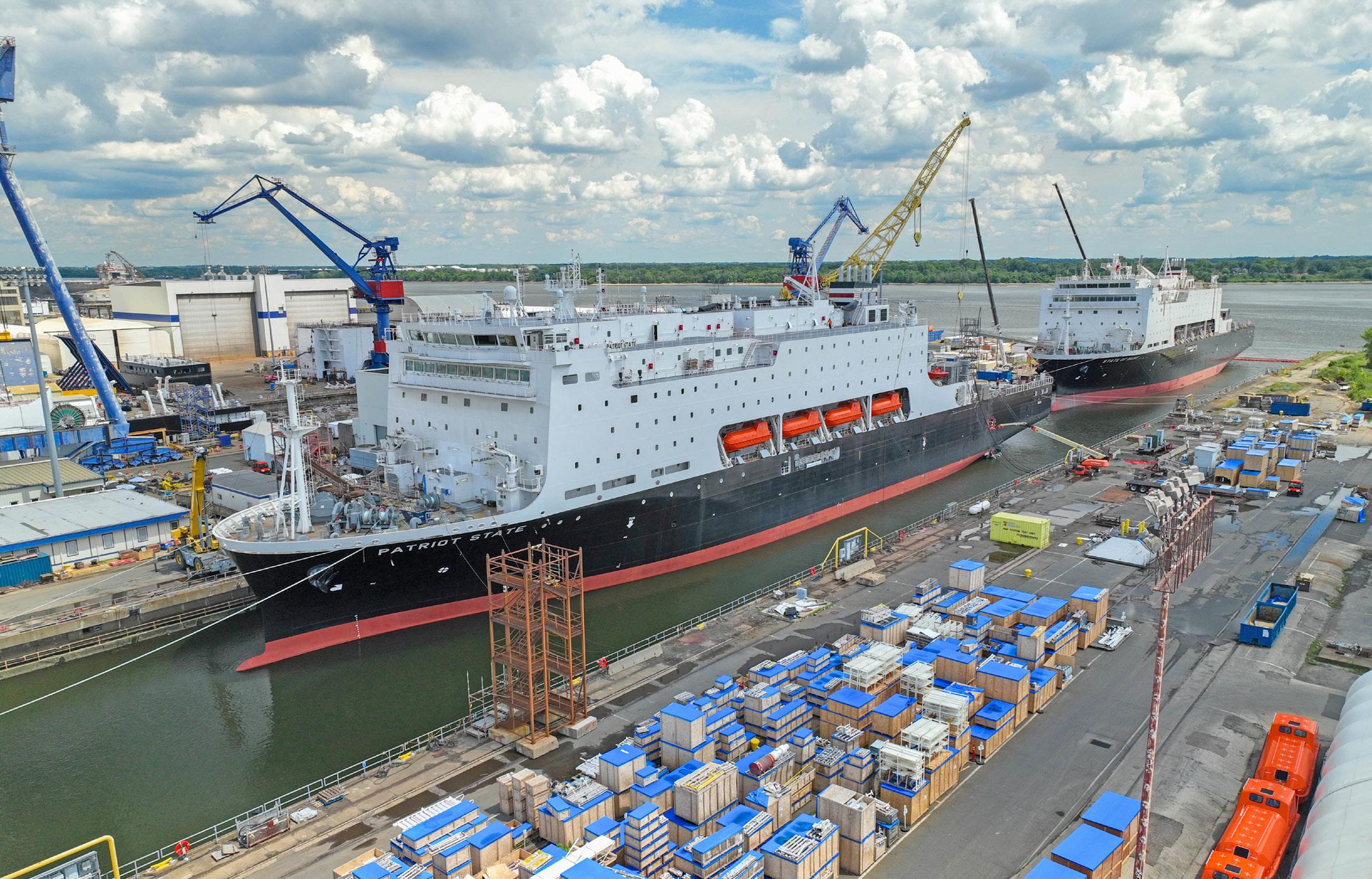
uniquely suited for large-scale shipbuilding with a deepwater site, an expansive footprint, significant existing infrastructure including transmission lines, wind turbines, and gas pipelines, and a largely artificial shoreline built from dredge spoils.
Cautiously Optimistic
Those involved in the breakbulk and project cargo sectors are still weighing the impact. The OEM power market seems to have responded with what Rocco Piccirillo III, Americas ITR logistics manager, gas power at GE Vernova, calls “cautious optimism,” though he stresses these are his personal observations, rather than his employer’s views.
“While there is broad recognition that revitalizing domestic shipbuilding could strengthen critical supply chains, sentiment is tempered by uncertainties surrounding skilled labor availability, cost competitiveness and capacity constraints.”
So far, cautious optimism does appear well-judged. There’s provision for investment in a maritime workforce in the SHIPS ACT and the
inclusion of a more tailored-approach to the Section 301 port fee policy has been welcomed as a pragmatic and critical adjustment, in light of the evolving U.S. power market.
“Ensuring the breakbulk shipments, in particular, associated with power development projects are treated with policy nuance helps support timely infrastructure delivery, mitigate logistics bottlenecks and maintain the pace of the energy system buildout,” says Piccirillo.
“This is certainly an exciting time for shipping, particularly at the nexus of energy, logistics and industrial policy, especially for power OEMs facing a significant surge in electricity demand and a rapid scale-up of energy investments,” he says.
“The extraordinary demand signals in North America driven by data centers, electrification and domestic manufacturing are certainly reshaping infrastructure needs.”
Logistics expert Grant Wattman, president of Jade Management Group, says the USTR Section 301 measures won’t impact project cargo and breakbulk as much as expected.
“Containers will be more impacted because they are mainly built in China.”
Like others, he expects U.S. shipyards to form joint ventures with “friendly” countries, such as the Europeans and South Korea. “They are already ahead, and we can learn from them. The objective is great and the vision too, but now we need the plan on how to deliver.”
For Paxton of the SCA, this is an exciting time for the industry. “The SCA believes that what we have right now is a special ‘moment in time.’ We have an Administration committed to revitalizing the industry, and we have bipartisan legislation in the SHIPs for America Act to get it done.
“The biggest challenge is not to miss this opportunity to make a long-term, generational investment in the growth and sustainment of a proud shipyard industry in the U.S.”
Award-winning freelance journalist Amy McLellan has been reporting on the highs and lows of the upstream oil and gas and maritime industries for 20 years.
*Breakbulk Exhibitor
*BGSN Member
Vessels docked at Hanwha Philly Shipyard, Philadelphia.
Credit: Hanwha Philly Shipyard
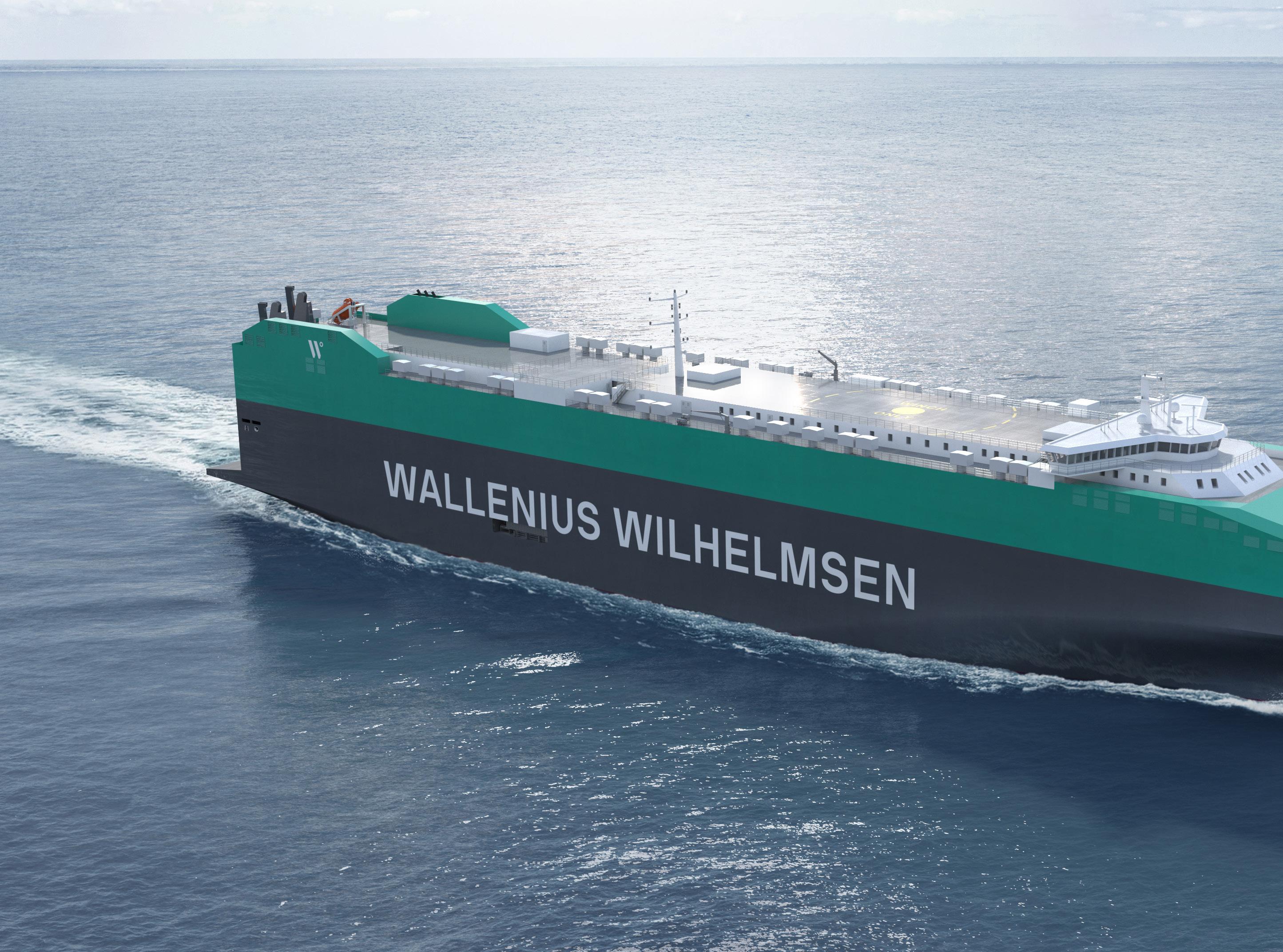
TARIFFS AND TOLLS WEIGH ON RO-RO SECTOR
Operators Warn of Falling Demand and Deepening Uncertainty in U.S. Trade
By Felicity Landon
When Wallenius Wilhelmsen
CEO Lasse Kristoffersen took to the stage to discuss the company’s first quarter 2025 results, he noted that he had found “gold” in a previous presentation – in the form of a disclaimer slide saying “we know nothing about the future.”
What has become clear, Kristoffersen told his audience, is that “volatility and uncertainty in the market is unprecedented.” In particular, the shifting sands
of President Trump’s tariff and trade policies are delivering significant challenges for roll-on, roll-off operators and shippers, particularly automotive customers.
Despite the turmoil, Wallenius Wilhelmsen turned in a strong result for the first quarter, with EBITDA of US$462m, up 5% year-on-year, he said. The second quarter was expected to be stronger, and the full year 2025 was predicted to be in line with 2024.
But Kristoffersen pointed to two
key issues in the United States: tariffs and port fees. The highest profile is naturally Trump’s 25% tariff imposed on cars imported into the U.S. “The average car price sold in the U.S. last year was $48,500. Assuming that the full tariff will not be moved over to the consumer, we estimate this will increase prices by thousands of dollars,” said Kristoffersen.
The indication from customers is that they will absorb some of the tariff costs, but they will also need to pass
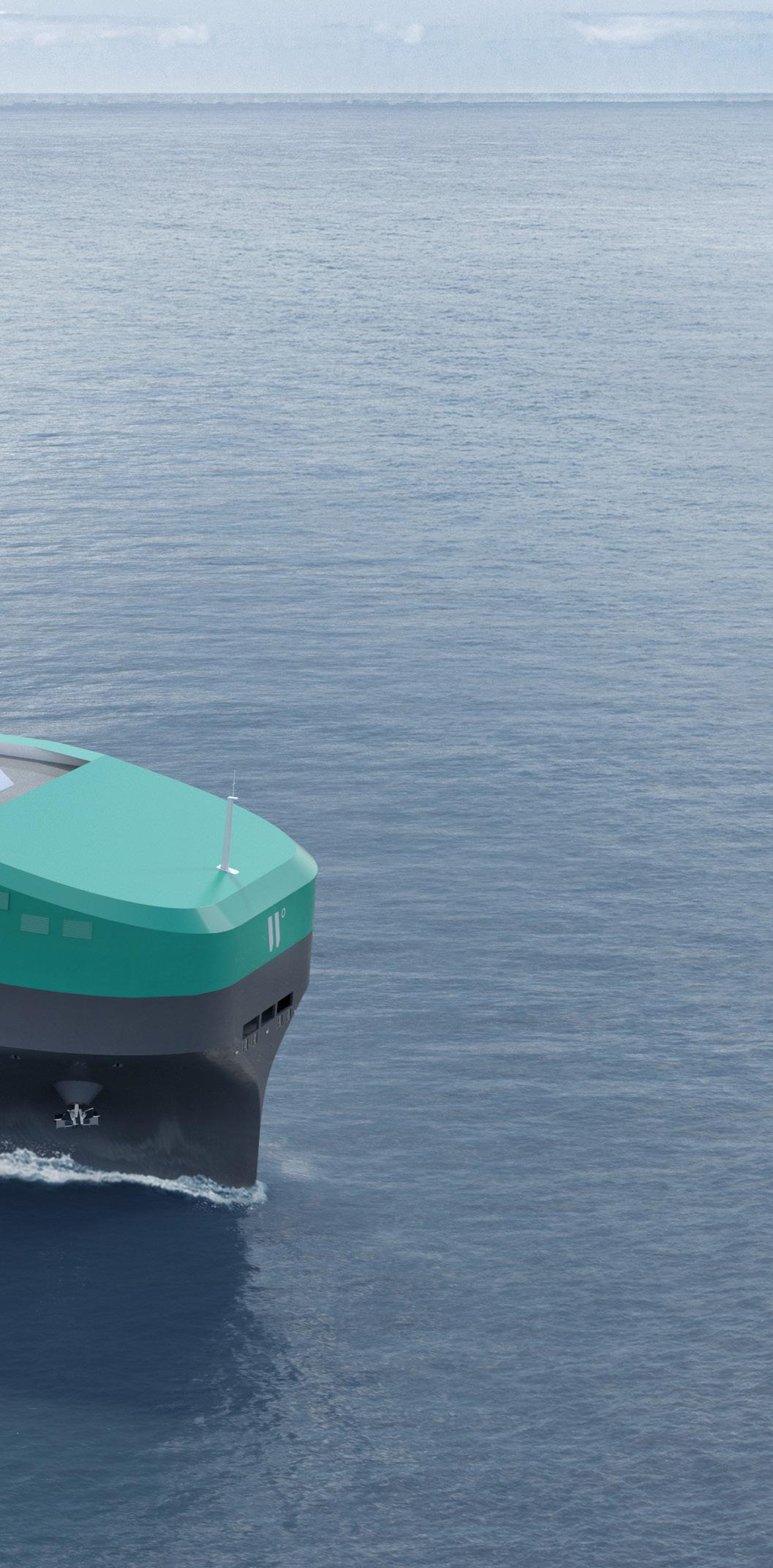
some on to the consumer, he said. “As prices go up in the U.S., they sell less cars. Last year the U.S. sold 60.2m cars. That will likely reduce this year, and there will probably be less imports because they are more expensive.”
Falling Imports
S&P has estimated that following the introduction of the 25% tariff, car imports into the U.S. will fall by 300,000 – equivalent to 7% – this year, and by another 15% next year. This, however, does not mean a stop to moving cars, said Kristoffersen.
Of the total 60.2m cars sold in the U.S, only 8.8m cars were built in the country. “There is no way the U.S. can replace imported volumes with domestic volumes. What is the potential for growth of production domestically? It is not actually that big.”
“HIGH AND HEAVY IS A CYCLICAL MARKET... WE KNOW THIS HAS TO COME BACK, AND WE ARE PREPARED.” LASSE
KRISTOFFERSEN, WALLENIUS WILHELMSEN CEO
Car factory utilization in the U.S. was now in the high 70% range, he said — and even a modest increase to 85%, considered very high, would represent an additional one million cars in production.
“Then of course you could add new manufacturing sites, but that takes years to come into production. No car producer has a perfect match between the models they can produce and the models the market needs.”
Port Dues Uncertainty
The second issue, port dues, is much less politicized regulation, he said. While tariffs are “a very deliberate political decision by the administration,” port dues are a consequence of a long-term process that started under the Biden administration, seeking to curb China’s dominance in the maritime area.
“There was quite a reduction in the impact on shipping and port dues but for some reason, vehicle carriers were singled out,” Kristoffersen explained. “So we are still exposed to port dues not only for Chinese-built vessels but every foreign-built vessel, meaning the global fleet of vehicle carriers.
“We don’t think that was intentional – we are seeing how this can be adjusted and more in line with other segments. But right now it is a very big uncertainty how this will
hit us in terms of cost per vehicle. We are confident that this will be significantly lower than [the impact of] tariffs but adding this will reduce imports and demand for cars.”
Wallenius Wilhelmsen has “significant exposure” to the U.S., said Kristoffersen, noting that U.S. exports and imports accounted for 38% of the company’s shipping revenue in 2024. About 17% of shipping revenue originates from U.S. automotive trades – including 11% from Asia and 5% from Europe.
Non-automotive – the import and export of high-and-heavy and breakbulk cargoes – accounts for 55% of U.S. shipping revenue. The first quarter saw low volumes of that trade, but the CEO said: “High and heavy is a cyclical market, we will not stop buying excavators or harvesting machines. We know this has to come back and we are prepared for that.
“We believe that the return of these volumes has been a little bit delayed by tariffs, but our customers are still optimistic we will see improved demand by the end of this year, or early next year.”
All the upheavals only add to the growing trade imbalance that has developed since 2019, warned Kristoffersen. Vessels are full coming out of Asia – “we don’t have enough vessels to cover the needs out of Asia” – but there is less cargo going back.
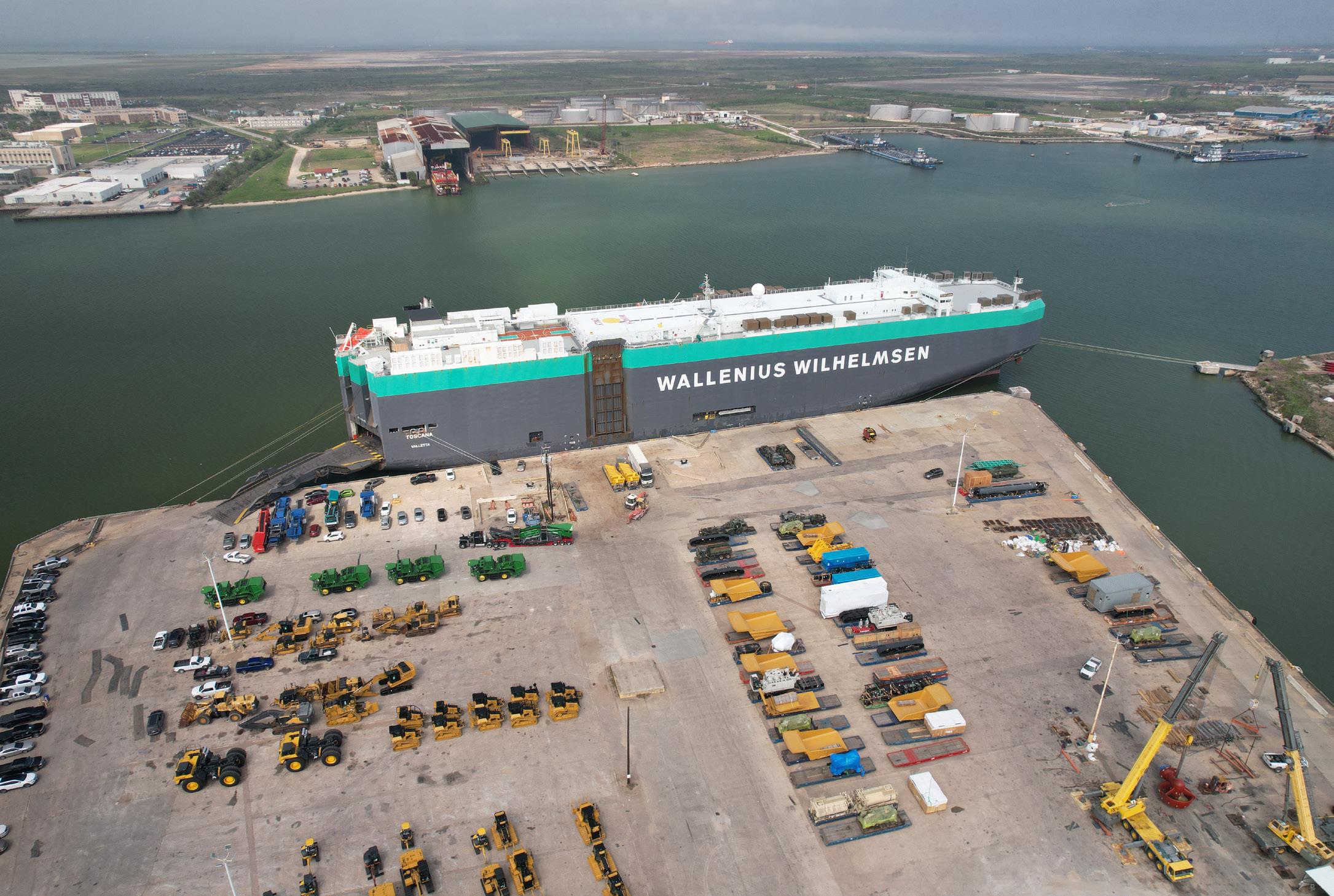
No Clarity
Automotive customers are entirely focused on trying to figure out their next moves, according to Fayçal Boumerkhoufa, VP project cargo sales at Ascent Global Logistics. “There is no clarity. These companies are thinking – what is our next step?”
“It’s about cost per car – how many cars am I going to sell, and who to? That’s the equation they are trying to format,” he said.
Boumerkhoufa said lower imports of finished cars into the U.S. has an obvious knock-on effect for ro-ro carriers. “However, ro-ro vessels are also heavily involved in breakbulk and moving quite a lot of heavy equipment on Mafis. Some ro-ro operators out of Germany, for example, have a mix of 60% standard finished vehicles and the remaining 40% is heavy machinery, rolling machinery and tracked machinery. Because of the tariffs, you can imagine there is an impact there too.”
“It’s human nature, and it’s the same for business – uncertainty is the least favorable,” he added.
“You don’t even know what you are preparing for, so typically you will prepare for the worst-case scenario.”
He noted that some manufacturers are exploring relocation to places like Mexico or Brazil, although challenges remain.
“Relocating industrial manufacturing involves permitting, getting funding and investment, setting up facilities and production lines and going through tests,” he said. “That becomes challenging for how you plan your supply chain.”
Overall, Boumerkhoufa said the world had learned an important lesson in Trump’s first six months: to hold on, because the President may well change his mind again a week later. “We have another three-and-a-half years of the current administration and what if it all changes then?”
“What next?” he concluded. “The key advice is to keep up with information and be agile enough to make decisions – but know that to stand by and wait a bit is probably the best option.”
Integrated Supply Chains
The current turmoil proves the need for an integrated supply chain partner, said Kristoffersen at Wallenius Wilhelmsen. “Our market sees a structural, political and regulatory change that we have never seen before, and that is exactly why we have redefined our strategy; and why we have said that the real value we can create for customers is to be their integrated supply chain partner.
“When we speak to the executives of Volvo or Mercedes or others, they don’t know where they will produce cars; they don’t know where they will send them; and they don’t know how many they will sell. They need help to have a flexible, fully integrated supply chain that is adaptable to their needs, and they struggle to make that happen themselves.
“We have all the building blocks –we have vessels, we have terminals, we can process, we can move inland and we can orchestrate it all through digital products. That’s why we are confident that maybe even more than ever before, our
A Wallenius Wilhelmsen vessel pictured at the Port of Galveston, Texas.
Credit: Wallenius Wilhelmsen
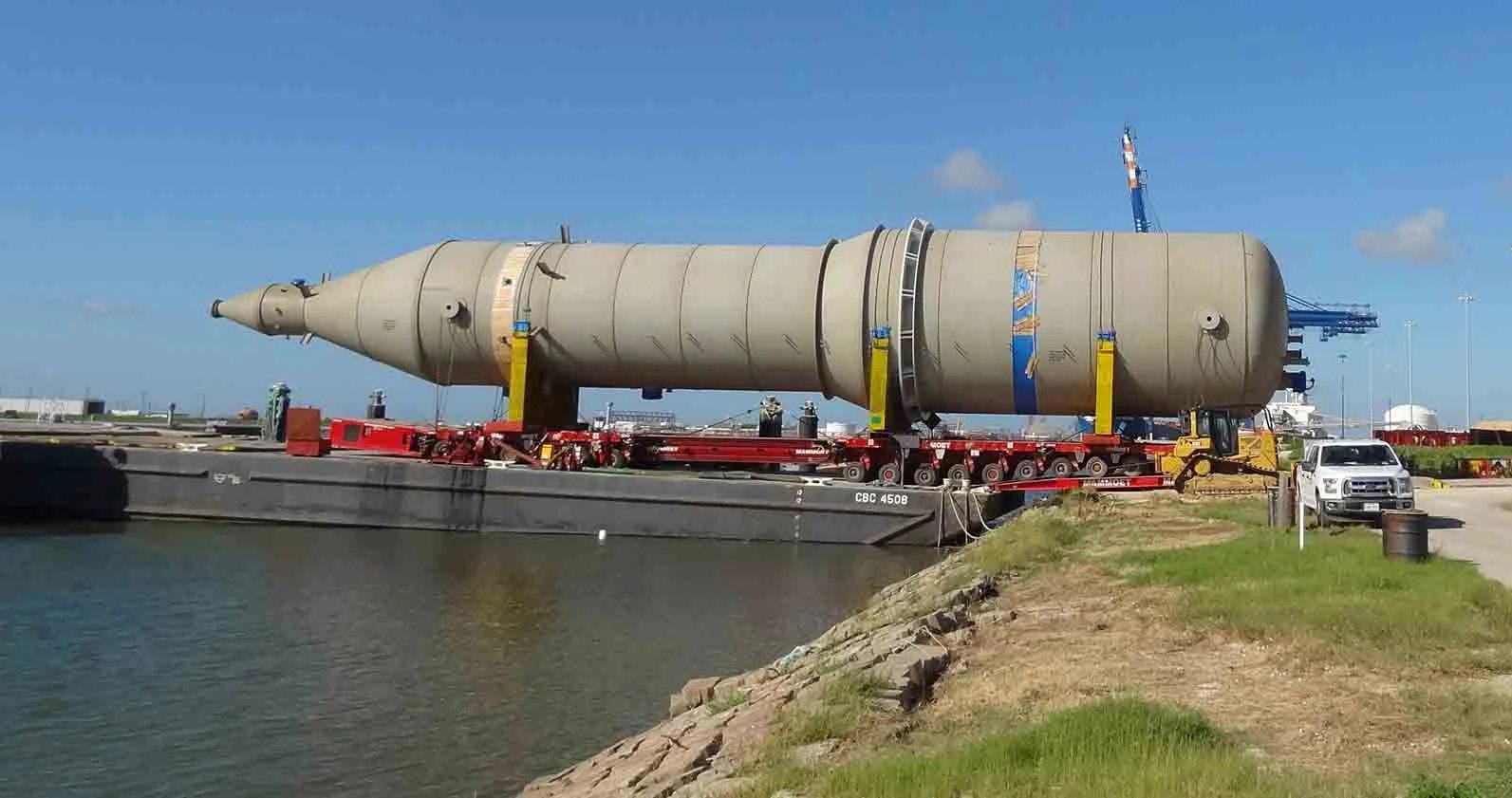
customers need us to help them in that ever-changing market.”
Wallenius Wilhelmsen has the necessary global footprint to minimize the impact of U.S. tariffs, he said. As for the threatened charges for Chinese-built ships calling into the U.S., a spokesperson for Wallenius Wilhelmsen said: “While we support the U.S. administration’s ambition to strengthen its maritime sector, certain measures under Section 301 could have unintended consequences.
“We believe in fair global trade and regularly engage in public consultation processes that may affect our operations, customers or the broader industry.”
Port Optimism
Port Freeport in Texas continues to experience strong performance across all business lines, said a spokesperson. “As trade activity through the port remains steady, we remain optimistic about the upcoming months.”
A landlord port, responsible for overseeing the Freeport Harbor Channel which serves privately
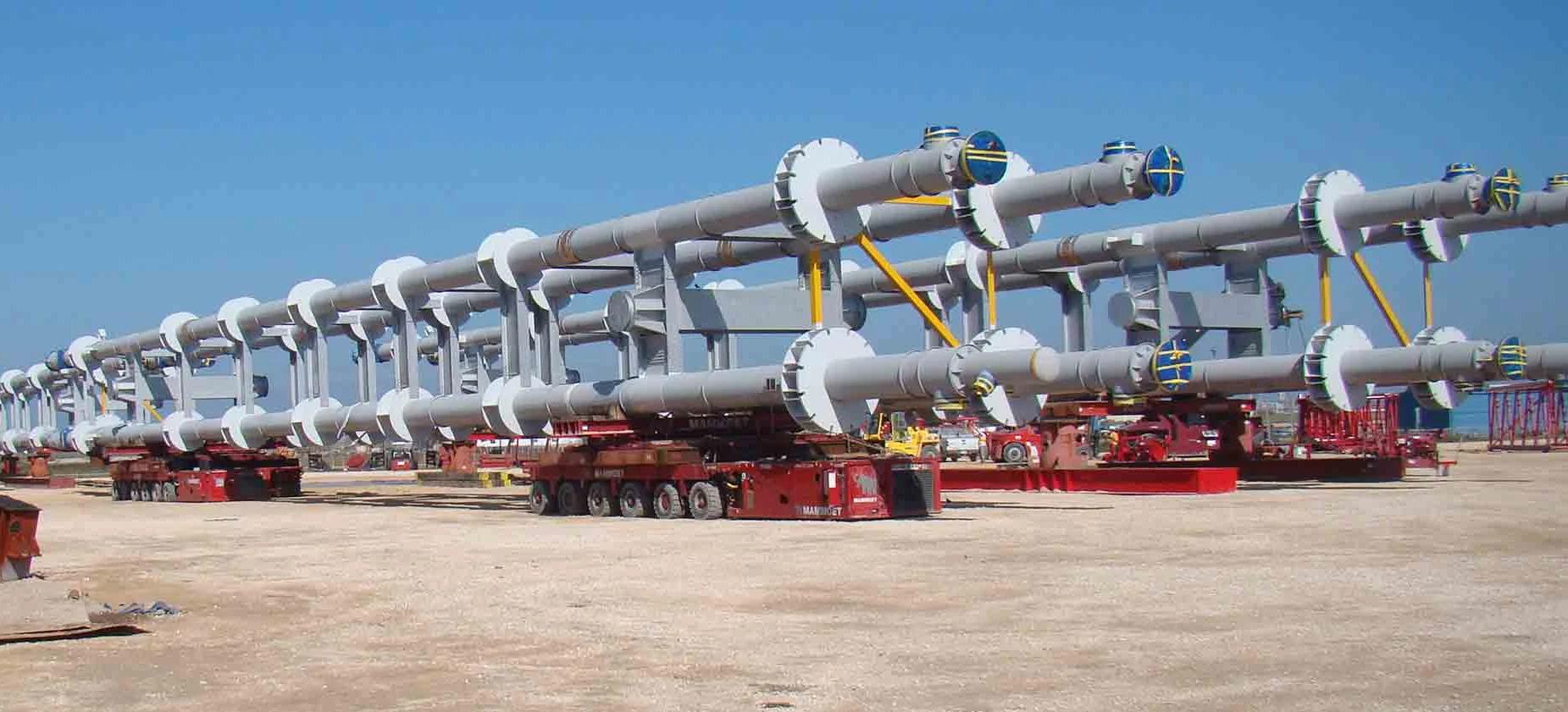
operated terminals and public docks, Port Freeport owns and maintains the public port infrastructure, while port tenants and users manage day-today operations and cargo handling.
“Although we do not directly control import or export decisions, Port Freeport supports its customers by providing efficient, secure and reliable infrastructure to ensure the smooth movement of goods. We recognize the importance of trade policy developments and are closely monitoring any potential long-term effects on the economy and the supply chain,” said the spokesperson.
Several infrastructure projects are under way to enhance safety
and operational efficiency at Port Freeport. The Velasco Terminal Area 5 improvement project will pave and upgrade an outdoor storage area for ro-ro, containers, high-and-heavy and breakbulk cargoes, while road access improvements and new truck queuing areas are being provided in an expansion area next to the terminal. Other work includes widening the Gate 4 access road, required for ro-ro and breakbulk operations.
Felicity Landon is an award-winning freelance journalist specializing in the ports, shipping, transport and logistics sectors.
*Breakbulk Exhibitor
Project cargo being handled at Port Freeport, Texas, which is currently upgrading an outdoor storage area for breakbulk and oversize cargo.
Credit: Port Freeport
Credit: Port Freeport
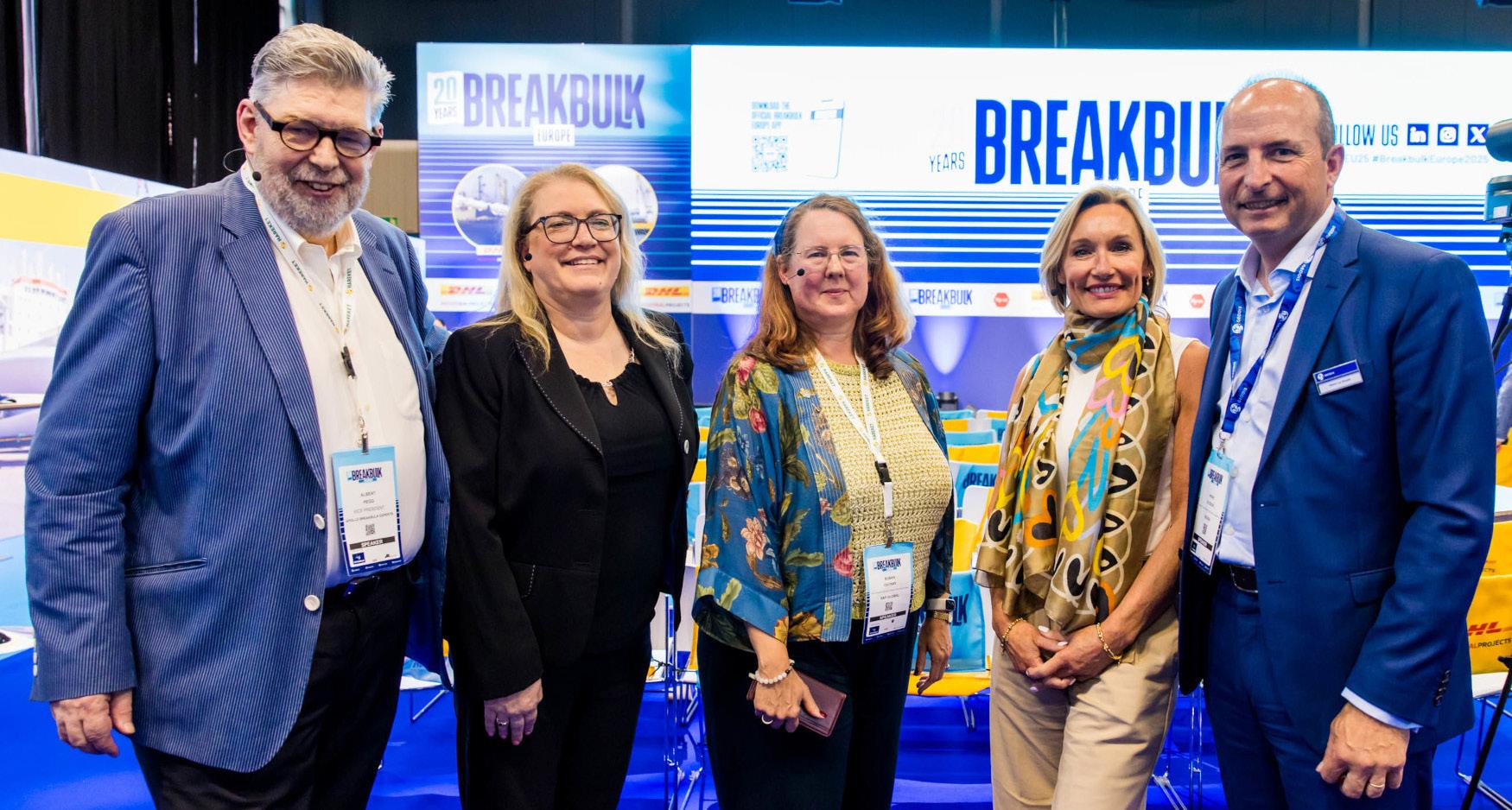
ASK THE EXPERTS: TARIFFS,
TRADE AND WHAT COMES
NEXT
How are global supply chain adapting to the shockwaves of U.S. tariffs, and what comes next? At Breakbulk Europe, leading trade and logistics experts took the stage to answer live audience questions, offering sharp insights on customs challenges, rerouting decisions, and evolving sourcing strategies. The session was moderated by Susan Oatway, senior research analyst for breakbulk and project cargo at the Journal of Commerce, and featured speakers Diana Davila, senior vice president of U.S. operations, UTC Overseas; Albert Pegg, vice president, Apollo Breakbulk Experts; Nikki Sayer, managing director, Casper Customs; and Henri Le Gouis, executive vice president of global freight forwarding, GEODIS. Below are edited highlights from the discussion.
Audience question:
What is the most common question you are being asked about tariffs, and what advice can you give them?
Davila:
The most common question from our importers in the U.S. is what tariffs they are going to be paying on any given day. And this affects everybody globally. Most people are more
concerned about the cost of importing into the U.S. than anything else.
Pegg:
Have you got a crystal ball! But really, the most common question is, where do we go from here? And the answer is quite simple – talk to experts in the U.S. who know what’s going on. Don’t just throw a dart to find out the answer – there are people that actually know
what could happen, going forward.
Sayer:
The problem that we’re facing is actually finding the details – the U.S. trade tariff is not clear at all. And when all the changes are happening, it’s not as if you can just go to one central place to find the information to give to the customers. We try to engage with people who might give us
L-R: Albert Pegg, Apollo Breakbulk Experts; Diana Davila, UTC Overseas; Susan Oatway, Journal of Commerce; Nikki Sayer, Casper Customs; Henri Le Gouis, GEODIS. Credit: Richard Theemling Photography
some updates on where we stand. So, again, just talk to people who can try to help. Talk to everybody you can!
Gouis:
I think it’s very ambitious to call yourself an expert for this question because the rules are changing so fast. It’s very difficult to give expertise. In the U.S., GEODIS operates four million square meters of warehousing, in which 30% of the products are Chinese origin. The question for us is how we are going to replace these products in the short and mid-term, knowing they’re essential and cheaper than what you can buy anywhere else?
Audience question:
How sustainable is global trade if tariffs are constantly being added, changed, or removed each week – and are you seeing signs of shifts in trade lanes as a result?
Gouis:
We have to stay calm, because as logistic providers, we are used to
dealing with major external shocks. This (tariff announcement) is one more, which yes, was completely unexpected, but we still have to stay calm. The level of inventories in the U.S. is 15% higher than the same period last year, so we have goods in the world to deal with the situation. We also have to prepare to be agile when the dust settles and when we have more clarity on what the exact ruling will be. Then will come the time for defining the exact supply chain strategy we have to go for.
Oatway:
What sort of changes are we expecting to see longer term?
Pegg:
Well, I can give examples of changes. According to the U.S. Bureau of Economic Analysis, out of Belgium, in March 2025, the value of the cargo that was imported was US$3.4 billion, which was a whopping 100% more than February 2025, and 46% more than last year. What does
that mean? It’s quite simple. Importers are rushing to stock up on essential cargo in the U.S. amid uncertainty over whether a deal with the EU will be reached within the next 90 days. Are those vessels going to sail empty come June, July, August? I don’t know.
Sayer:
I’ve been speaking to people about those five-to-ten-year plans that most businesses put in place. The people that we’ve been talking to are saying, yes, all of that is stopping right now. They’re now looking at different countries to trade with that they hadn’t traditionally thought about. So there’s potential for new routes and sourcing goods from different places.
Oatway: Has project cargo been less impacted by the tariffs?
Davila:
We haven’t really seen the impact because it’s so short term right now. And projects are planned

Credit: Richard Theemling Photography
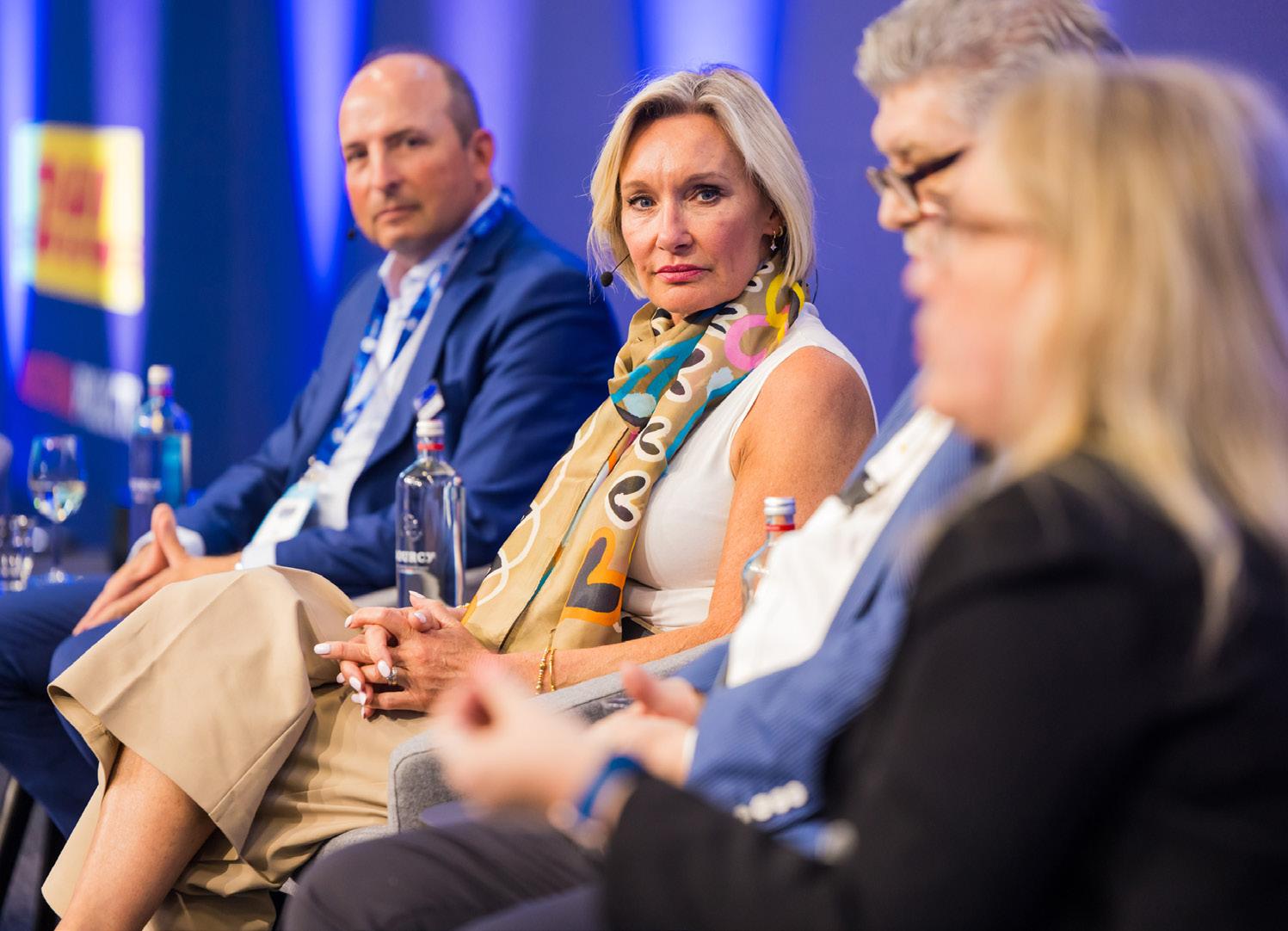
one, two, maybe five years down the road. But questions are being asked about sourcing. If companies are working on projects right now, they’re estimating what that project is going to cost. So it does put the onus on the owners when they’re pulling together a project. They’re probably delaying or going a little slower to see how all this will work out.
Audience question:
Are you concerned about steel and aluminum tariffs, and in particular the country of origin relating to the composition of steel?
Davila:
When importing steel into the U.S., there’s a new component called melt and pour. It’s not just the country of origin where the item is manufactured; you’re required to advise, on entry, the melt and pour origin. And as it’s new, not a lot of manufacturers track this. We have the MTRs (material test reports) that tell us what batch it was, where it was manufactured – but within that, it doesn’t say the origin of the melt and pour of the steel. So that’s a new thing that everybody needs to have on their radar when they’re purchasing steel or aluminum.
Audience question:
Is it true that vessels have been diverted or turned back, and what
impact will trade disruptions have on capacity and freight costs?
Gouis:
What we see at GEODIS is that for the moment, the shipments have remained quite strong, especially in the first quarter. For the moment, we don’t see a major change in the services out of Asia – especially China – to the U.S. There could be some blank sailings to reduce capacity, but I think it’s too early to say there will be a major disruption. In a broader view, you cannot change supply chains overnight – it’s too
complex. You cannot replace Chinese capabilities and technology in industry after one day or one month or even one year. So this will take time. Of course, this will eventually change the sourcing strategies of the major shippers. But for this, we need to know what level the tariffs will stay at, and we will know it certainly after the one-to-one discussions in a few months. But for the moment, I think it’s too early to say that we are going to see a major collapse.
Audience question:
How hard is it to keep your dayto-day operating systems up to date so you are clearing against the most updated tariffs?
Sayer:
It’s about properly understanding the U.S. tariff. We had a customer whose product was partially excluded from the tariff, but it also included a component that wasn’t. They wanted to know how much that non-excluded portion would end up costing them. It’s about trying to ensure that everyone’s still compliant, that the commodity codes that they’re using are correct, and that we’re interpreting the U.S. tariff
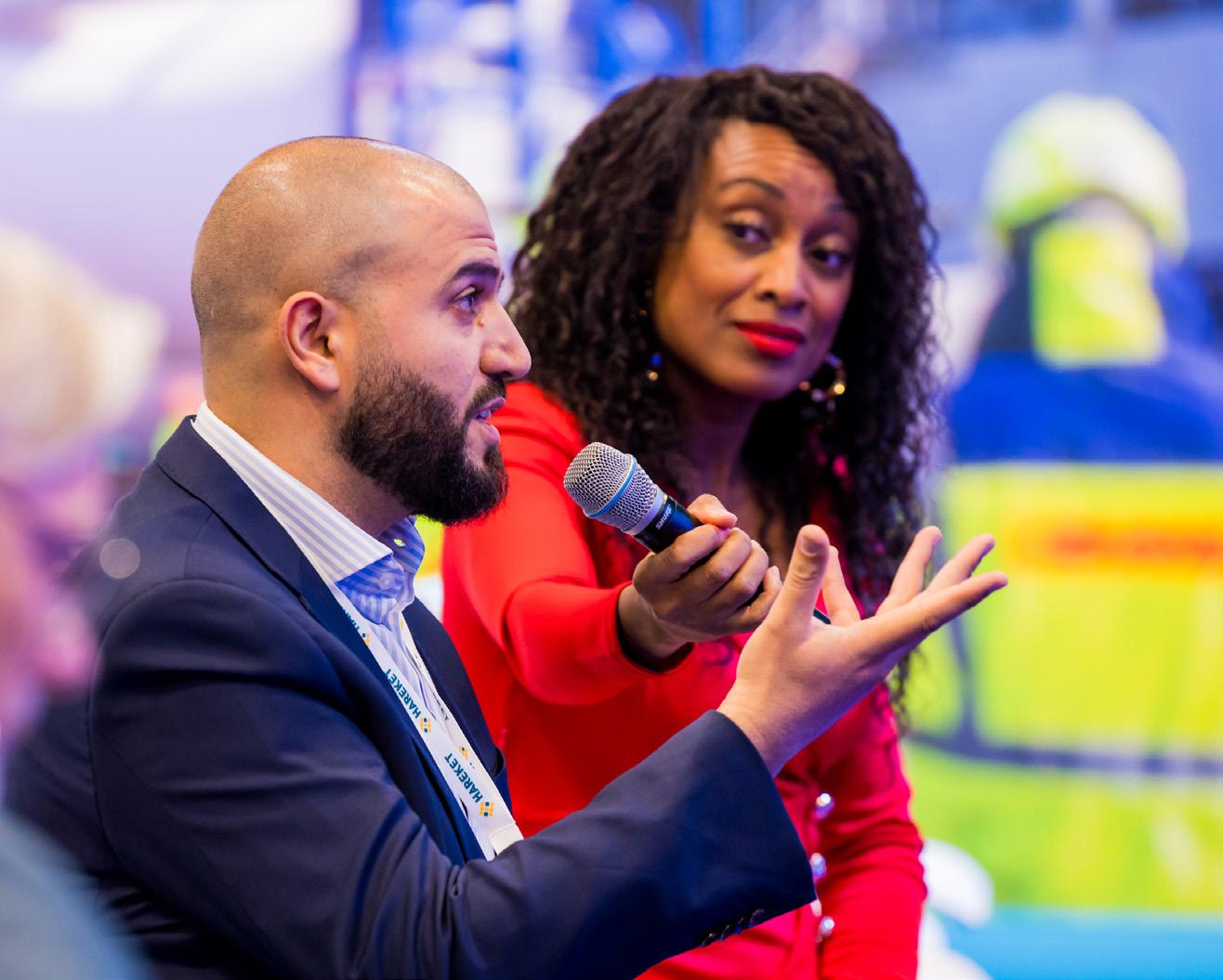
The panel offered sound advice on customs, rerouting, sourcing strategies, and much more.
Credit: Richard Theemling Photography
Credit: Richard Theemling Photography
correctly. It goes back to ensuring you’re talking to the right people to make sure that what you’re doing is right.
Audience question:
At what point do you think there’ll be a step back to the long-term approach to bring back manufacturing into the U.S.?
Davila:
I believe that we have large numbers of individuals within our government and within associations that are really pushing for manufacturing to come back to the U.S. We realize that we don’t have enough stuff onshore. So, is manufacturing coming back to the U.S.? Yes. Even after the four years are over, manufacturing will come back. We’re seeing it slowly – we’ve already got a lot of investment. And I think in time there’ll be some major exports and alongside, some major infrastructure for that.
Gouis:
I think mid-term, yes, maybe there could be more industry in the U.S. Short-term, there is certainly a potential recession because nobody is able to absorb the price increase resulting from these tariffs. So, we as logistics providers cannot, for sure. So, we have to pass on to the final customers. And this will definitely increase the cost for the products imported. I don’t see any other consequences.
Audience question: How can businesses effectively communicate the impact of tariffs to their clients?
Pegg:
The first thing they do is talk to their American counterparts and try to find out what’s the best way forward. That’s the only thing they can do. And then dig deeper and try to get a proper answer and bring that to their customers. And that’s why we’re in a global network of freight forwarders that help out each other.
Davila:
You have to state the facts. And we all know that things change every day, every minute, every tweet. But when you’re speaking to the customer about what’s going on, you just have to be transparent. We have an influx of new inquiries, and I feel like shippers want different answers. As long as you give the right answers that are available, I think that’s how we communicate and make sure that everything flows correctly.
Sayer:
It’s about honesty. We were struggling with the tariff – we weren’t promising that we knew all the answers. Yes, we’re the customs experts, but this is completely new. We immediately went out to all our customers who were shipping to the U.S. and said, do you need any help? It’s about partnerships and communicating with each other.
Audience question:
There’s been a strong increase in bonded warehousing demand in light of the tariffs. Is this just a short-term trend?
Davila:
By shipping cargo to a bonded warehouse, you still pay the duties at the time it enters the warehouse – you’re not changing the amount you have to pay. The advantage is that the unexpected duty doesn’t have to be paid today. If you quoted a customer to pay duties at 2% but when it arrives it’s 35%, you have a little leeway – you put the cargo into a bonded warehouse and you don’t pay the duty until you pull it out. So it’s buying you time to pay. Or you can hope that the tariff will be reduced, and it will have a retroactive effect on it.
Audience question: How are you planning to cope with uncertainty in the long term?
Gouis:
The key is to buy your time until we have good visibility. I would not suggest playing with the rules, because at the
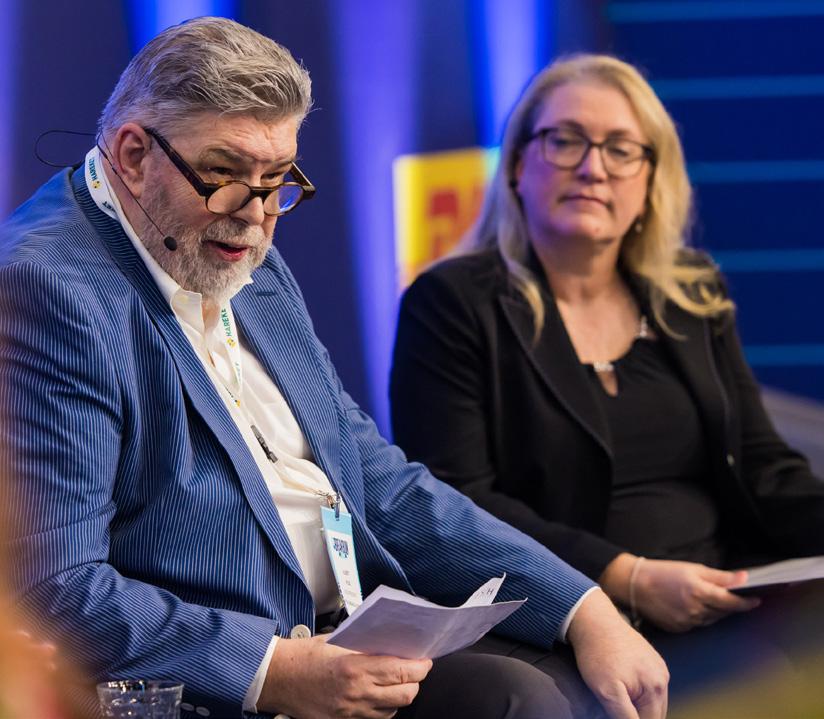
end of the day who’s going to pay the fine? But once we have visibility we can talk with our customers and put in place the right supply chain strategy.
Sayer:
We’ve talked a lot about U.S. tariffs, but there are obviously other trade agreements out there as well, which means other opportunities for doing business.
Pegg:
Indeed, opportunities! We see now there are other continents besides North America. Every crisis is an opportunity, and people are looking at other destinations.
Davila:
I do believe that out of challenges come good things, so there is a lot of good trade that can happen between countries without the U.S. I’ve seen several companies that have said, now we have to sell to other places. And it challenges us to really look at what we’re doing on a day-to-day basis – where we’re buying from and making sure our terms are applicable. We’re definitely looking a lot longer term than short term. And this is good for the new generation, because they’re the ones who are going to be working with this going forward.
*Breakbulk Exhibitor
Albert Pegg and Diana Davila field questions from the audience.
Credit: Richard Theemling Photography
WE’RE OUT OF OPTIONS
Tariffs don’t come easy, but they’re the only tool left to fix America’s budget woes
By John Vogt
At a personal level, an individual has to live within their means to remain solvent. If you approach a bank for a mortgage, they’ll review your debt and income before lending. These requirements are in place to ensure you can meet the payments. If not, the property can be reclaimed and sold to recover the loan.
Spending within your means applies to countries as well. Nations use Gross Domestic Product (GDP) to determine revenue. Countries with high debt-to-GDP ratios earn poor credit ratings, facing consequences much like individuals who accumulate too much debt.
US Debt: Not So Different From Personal Debt
For its first 250 years, the U.S. accumulated US$11 trillion in debt. From 2009 to 2024, that figure tripled to US$35 trillion. More concerning, the debt-to-GDP ratio rose from 84% to around 125%, signaling a country living well beyond its means.
A major cause is the negative balance of payments: we import far more than we export, especially from countries that don’t buy American goods. As those countries grow, we see no benefit to our own GDP, worsening our debt ratio. Like an individual who triples debt without raising income, the U.S. risks economic collapse unless we change course.
What to Do?
The only tool available is tariffs to influence imports and encourage investment back into the country. As with personal budgeting, we must

Vogt
reduce spending on foreign goods and bring production home, shrinking the trade deficit and increasing GDP.
Equally important is trading with countries that buy from us. Balanced trade relationships don’t harm our balance of payments. We need both: a sharp reduction in the deficit and increased investment to grow GDP. Tariffs are one of the few tools that can achieve this quickly.
This will shift trade agreements toward more balanced partners like the UK or EU, while countries with large trade surpluses, such as BRICS, may face higher tariffs. Domestic investment will be promoted, and higher
tariffs imposed on others. While some worry tariffs raise inflation, customs revenue has increased and inflation remained low in recent months. Long term, doing nothing risks a downgraded credit rating and insolvency.
The Forgotten Link
Many companies that moved production overseas ignored the impact of longer supply chains. International logistics raise costs and increase inventory levels, eroding the expected savings. Domestic supply chains are faster and more reliable. Long transit times from abroad require higher inventory levels to meet service standards, and
John
that stock comes at a cost. The real comparison isn’t just the price of goods and shipping, but also the capital tied up in inventory. That can make offshoring far less economical than it appears.
Trade Reorganization Ahead
The U.S. won’t stop consuming, but the sources will change. Trade will shift to countries with more balanced payments, and investment will increase in the U.S., Mexico, and Canada. The USMCA agreement still allows free trade across this region for goods with qualifying origins, contrary to some news reports. This reorganization may be disruptive in the short term. Shipping patterns will change as supply shifts away from countries with large trade imbalances. Container services may adapt to new routes and ports. Some larger vessels might not suit these routes, but that remains to be seen.
Internal trade within North America will rise. This will happen more gradually than sourcing shifts, which are driven directly by tariffs. Strategic companies will plan for these changes. Firms that understand USMCA rules, like Country of Origin determination, will have an advantage in managing efficient regional supply chains.
On Balance: Pain Then Gain
This transformation will take time. Investment decisions and project development don’t happen overnight. But more infrastructure will be built to support new trade flows. These projects will likely center around strategic sectors such as semiconductors, information technology and materials like steel and aluminum, rather than traditional heavy industrial equipment. That said, project cargo will still be required for new infrastructure. While we may see fewer oversized
refinery components, we’ll likely see increased movement of specialized equipment for hightech and value-added industries. These represent new opportunities for project logistics companies.
The U.S. has overspent and must now reduce debt and increase GDP just as individuals do when their finances go off track. The country can’t get a second job, but it can use tariffs to bring production home and drive investment.
The logistics and project cargo sectors will face uncertainty in the transition. But as sourcing shifts and USMCA trade expands, companies that adapt quickly will find opportunity. For those positioned to respond, this is a positive time for project logistics.
John Vogt, former Halliburton vice president of global logistics and visiting professor at the University of Houston-Downtown, is a regular contributor to Breakbulk, specializing in trade and Incoterms.

Spending within your means applies to countries as well.
Credit: Towfiqu Barbhuiya, Unsplash
TWO STATES , TWO STRATEGIES

California and Texas Fuel Different Cargo Booms
The powerhouse states of California and Texas are forging distinct paths in pursuit of their project priorities. One is pushing hard on renewables, the other doubling down on fossil fuels and other forms of energy. Both strategies are driving demand for project cargo.
Texas, the nation’s top exporter, is capitalizing on the Trump administration’s policies of deregulation, expanded leasing and lifted liquified natural gas (LNG) export restrictions. The
result: fast permitting and infrastructure buildout.
By Simon West
“Texas is the energy capital of the world, leading the nation in energy and electricity production. That success comes from our ‘all of the above’ strategy, driving investment across diverse energy sectors,” said Adriana Cruz, executive director of Texas Economic Development and Tourism within the Office of the Texas Governor Greg Abbott.
“Our great state is the No. 1 producer of crude oil and natural
gas in the U.S. We also rank No. 1 for wind energy and No. 1 for solar growth projection over the next five years. Not to mention, Texas is the fastest-growing battery storage market in the nation.
“This diverse range of innovation in our energy industry, supported by our strategic approach in attracting all kinds of new and expanding energy businesses, fuels our state’s economy and moves the nation forward towards achieving energy independence.”
“BEING
AT THE FOREFRONT OF INNOVATION IS INHERENT IN CALIFORNIA’S CULTURE.”
JOB NELSON, PORT OF SAN DIEGO

California Keeps It Clean
The creative spirit is also alive and kicking in the Golden State.
“Being at the forefront of innovation is inherent in California’s culture,” said Job Nelson, chief government and public relations officer at the Port of San Diego. By focusing on innovation, he said, the state is showing that it is possible to invest in new technologies while also maintaining a thriving business sector.
“California’s success is evident with its ranking as the world’s fourth largest economy.”
But while Texas answers to President Trump’s call to “drill baby, drill”, California remains focused on building a clean energy economy, driven by state mandates and a commitment to hitting environmental and net-zero targets. The state has signed various Memorandums of Understanding (MoUs) and other agreements with more than 20 countries – including the UK, China and Australia – focusing on climate change and clean energy collaboration.
Nelson pointed to how California’s leadership on tackling air emissions dates back to the 1960s, when thenGovernor Ronald Reagan established the California Air Resources Board (CARB). That legacy continues today, with mandatory renewable energy targets signed off by Governor Gavin Newsom that include a zerocarbon electricity grid by 2045.
For the logistics sector, zeroemissions (ZE) policies direct all drayage trucks and off-road equipment in the state to be ZE by 2035 and all medium- and heavy-duty vehicles by 2045.
These ZE goals helped drive the port’s decision to adopt its 2021 Maritime Clean Air Strategy (MCAS), billed as the most ambitious plan of its kind by a U.S. port. Supported by robust state-level incentive programs, the port has zeroed in on cutting emissions, improving air quality around San Diego Bay, and modernizing aging infrastructure to better support its maritime operations and the breakbulk sector.
“An example of this is the deployment of our two all-electric mobile harbor cranes, each of which has a lifting capacity of 200 tons and a combined capacity of 400 tons, making us the port with the heaviest lifting capacity on the West Coast,” Nelson said.
According to the executive, the port and its partners have so far committed more than US$227 million to projects ranging from electrical upgrades and
electric cargo handling equipment to berth rehabilitation and at-berth emissions reduction equipment.
Further up the coast, the Port of Long Beach is planning to invest more than US$3.2 billion over the next decade in capital projects, including more than US$220 million dedicated to ZE infrastructure. The port plans to switch all cargo-handling equipment to ZE models by 2030.
Long Beach is also developing Pier Wind, a proposed 400-acre facility to stage, store and assemble floating offshore wind turbines. Set to be the largest of its kind at a U.S. seaport, the project would support California’s 25 gigawatt (GW) offshore wind target by 2045.
Suzanne Plezia, managing director of engineering services at the Port of Long Beach, said fully assembled turbines “the size of the Eiffel Tower” would be towed by sea from the port to wind lease areas 20 to 30 miles (32 to 48 kilometers) off California’s central and northern coasts. Pier Wind’s preliminary design plan was completed last year.
“Local, state and federal regulatory agencies started an environmental review in late 2023, and the Port of Long Beach is now gathering input from the community. The port is now completing engineering, environmental, business planning and community outreach requirements needed to begin construction,” Plezia said.

Suzanne Plezia, Port of Long Beach
Port of San Diego’s all-electric mobile harbor cranes have a combined lift capacity of 400 tons.
Credit: Port of San Diego

“If approved, construction of the US$4.7 billion project could start as soon as 2027, with the first 200 acres completed in 2031, and the final 200 acres coming online in 2035.”
Riding the LNG Wave
Back in Texas, energy is also driving sustained demand for breakbulk, although here it is LNG emerging as the Lone Star State’s fastest growing sector, according to project professionals speaking to Breakbulk
A Trump executive order in January effectively overturned the Biden administration’s temporary “pause” on approvals of LNG exports to non-free trade agreement countries, spurring new project development and investment in the industry.
In late June, Bechtel was given the go-ahead by Cheniere Energy to build two new midscale liquefaction units at Cheniere’s Corpus Christi LNG terminal in Texas. Trains 8 and
9 are expected to add three million tonnes per annum (mtpa) of LNG capacity to the plant, located on the La Quinta Ship Channel along the north shore of Corpus Christi Bay.
The trains will be built adjacent to the seven-train Corpus Christi Liquefaction Stage 3 (CCL3) project, which has already entered construction and commissioning phases. Once complete, the CCL3 project, trains 8 and 9, and other debottlenecking operations are expected to double overall capacity at the Gulf Coast facility to more than 30 mtpa.
“We expect all nine trains to be operational later this decade,” a spokesperson for Cheniere told Breakbulk. Cheniere, the largest producer of LNG in the U.S., also operates Sabine Pass LNG on the U.S. Gulf Coast. The spokesperson said the company was developing further brownfield capacity expansions at
both terminals, projects that could boost its LNG platform to about 75 mtpa “by the early 2030s”.
Bechtel in June also inked fresh contracts with LNG producer NextDecade for the construction of two liquefaction units at the Rio Grande terminal in Brownsville, a port city located on the southernmost tip of Texas. The deals include a US$4.77 billion updated EPC contract for train 4 and a newly signed US$4.32 billion deal for train 5. Construction of trains 1 to 3 has already begun, with start-up slated for 2027.
NextDecade said the Brownsville site has sufficient space for the installation of up to 10 liquefaction trains, making Rio Grande potentially one of the world’s largest LNG production and export facilities. The Houston-based developer is also looking to build a carbon capture and storage (CCS) project at the site to reduce emissions.
Rendering of Pier Wind, northwest facing, at the Port of Long Beach.
Credit: Port of Long Beach
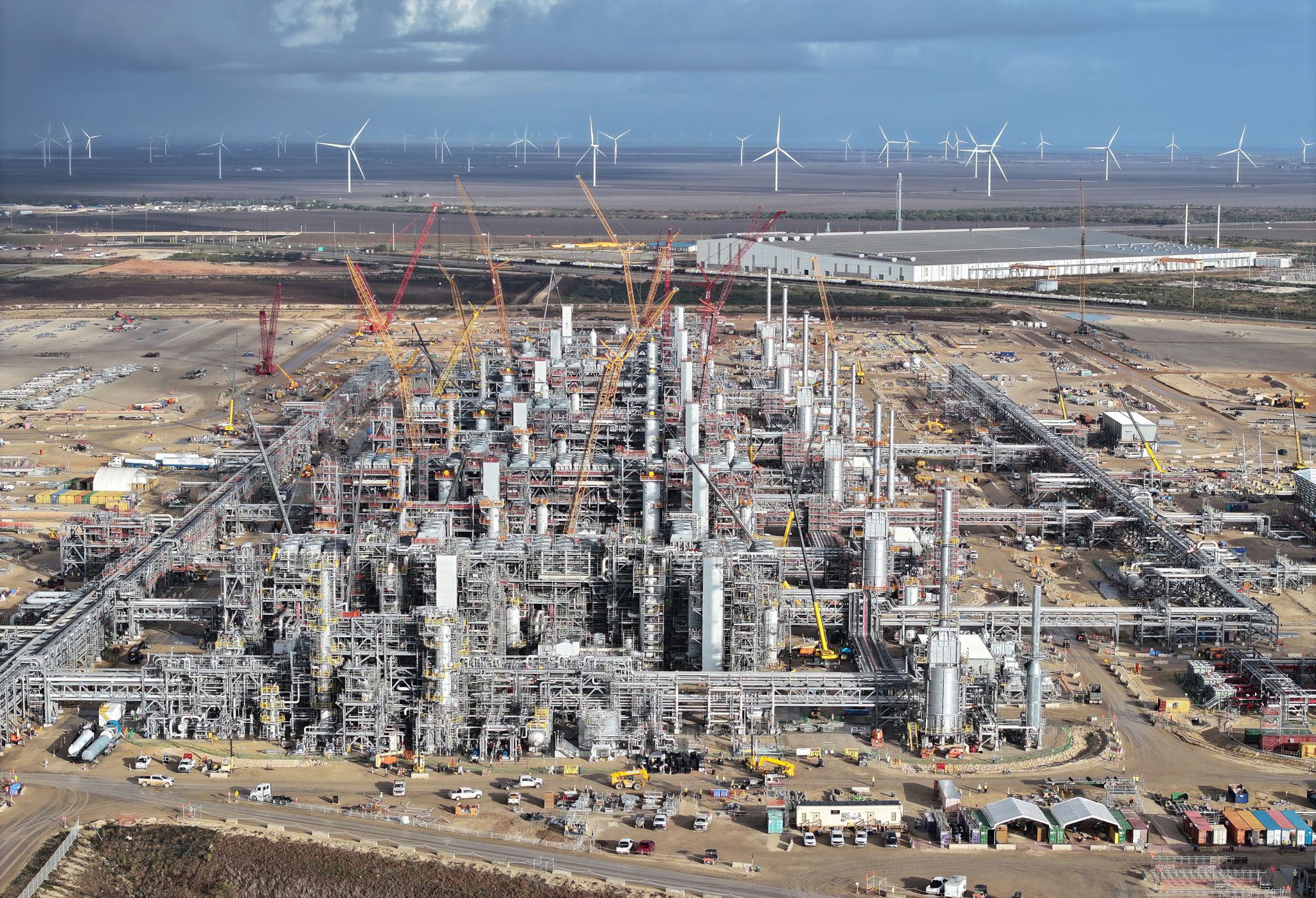
To illustrate the scale of these projects, building the first three trains of the Corpus Christi terminal required 250,000 cubic meters of concrete, 50,000 tons of steel, 340 kilometers of piping and 3,800 kilometers of electric cables.
Several news sources report that LNG exports from the Port of Corpus Christi – the largest U.S. port by revenue tonnage – are projected to double in the coming years, driven by Cheniere’s nine-train expansion.
The port has been undergoing significant infrastructure upgrades, announcing in June the completion of the US$625 million Channel Improvement Project, a decadeslong initiative to deepen the Corpus Christi Ship Channel from 47 to 54 feet mean lower low water (MLLW) and widen it to 530 feet.
Other infrastructure improvements at Corpus Christi include upgrades to its Bulk Terminal docks and a 35-acre
expansion of laydown storage on the Northside of the breakbulk-handling Cargo Dock 9. Omar Garcia, chief external affairs officer at Corpus Christi, previously told Breakbulk the Cargo Dock 9 project aimed to provide direct rail access to the dock as well as the capability to load a full unit-train in Rincon West, an open storage area designed to house general, project and roll-on, roll-off (RoRo) cargoes.
“Texas’ port infrastructure is the driving force behind our status as the top exporter in the nation,” Cruz said. “We are already home to the No. 1 port in the U.S. for waterborne foreign trade – Port Houston – and the nation’s No. 1 international trade port – Port Laredo. The state continues to invest in new infrastructure projects, such as a US$240 million commitment to port development and seaport connectivity.”
LNG aside, Texas is also setting its sights on nuclear energy,
with plans to deploy large-scale nuclear power plants (NPPs) and small modular reactors (SMRs).
New legislation signed off by Governor Abbott is set to put Texas at the center of the country’s nuclear revival. The law establishes the Texas Advanced Nuclear Energy Office and allocates US$350 million to advance next-generation nuclear technology and deployment.
Green Hydrogen for the Golden State
California, meanwhile, is expected to remain the top U.S. market for renewable energy-related project cargo through 2035, driven by exciting new initiatives such as the H2Hubs program, which could unlock significant new cargo-carrying opportunities.
Managed by the Department of Energy’s (DOE) Office of Clean Energy Demonstrations (OCED) and funded through the 2021 bipartisan
Construction work at Cheniere Energy’s Corpus Christi LNG terminal in Texas. Credit: Cheniere Energy
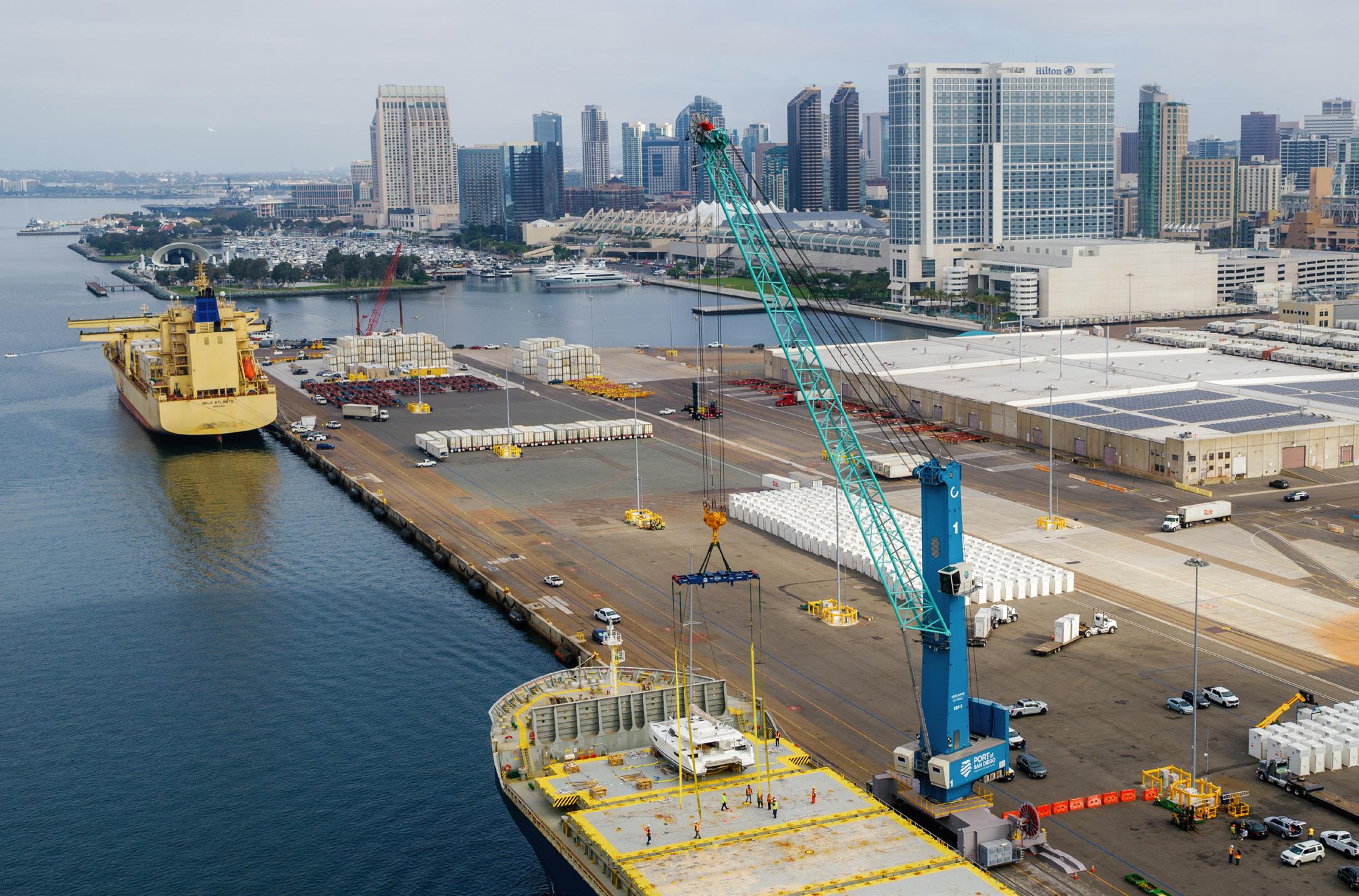
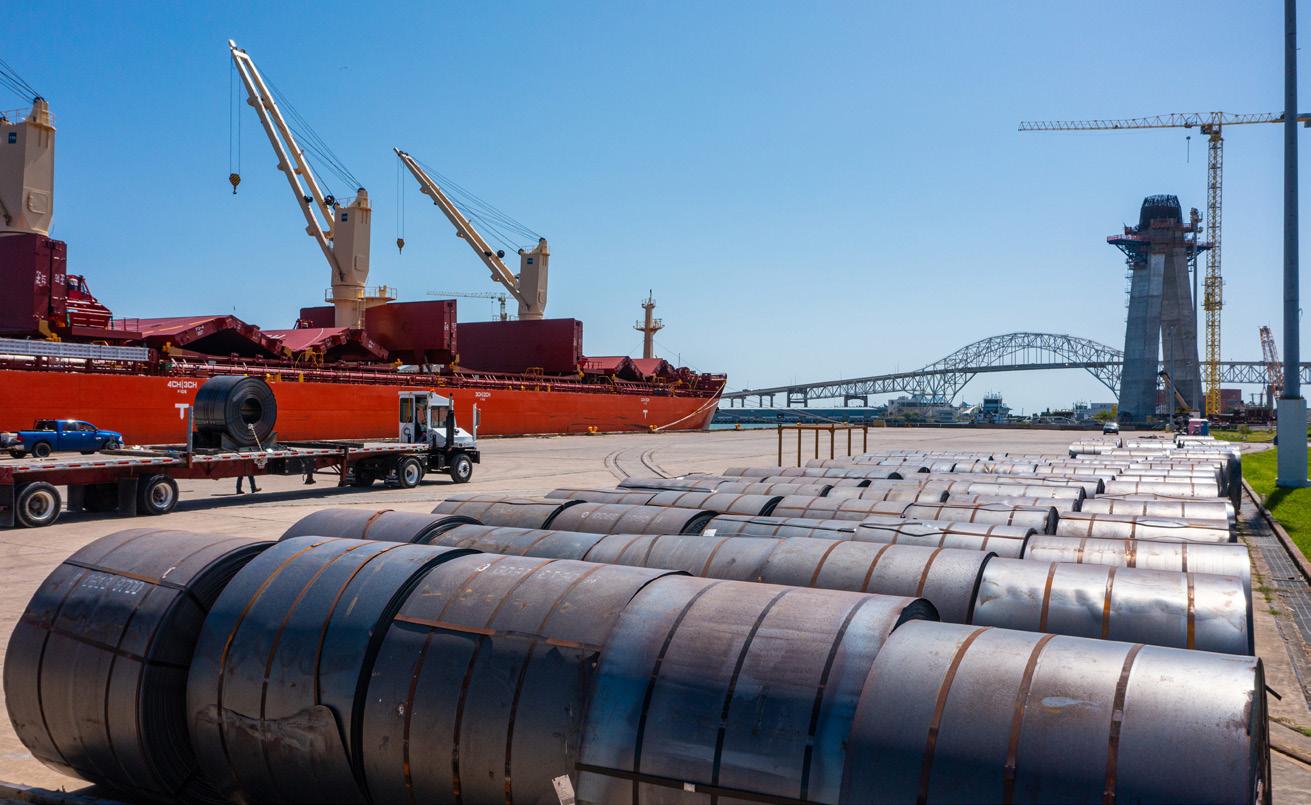
infrastructure law, the program comprises a network of seven green hydrogen hubs across the U.S. aimed at accelerating the development of a clean hydrogen economy.
The Alliance for Renewable Clean Hydrogen Energy Systems, or ARCHES, is the Californian H2Hub. With the help of up to US$1.2 billion in federal grants, ARCHES is developing more than US$70 billion in hydrogen infrastructure projects, including more than 10 production sites in the state’s Central
Valley, port decarbonization at the ports of Long Beach and Oakland, a first-of-itskind hydrogen-powered marine research vessel, and 60 fueling stations statewide for zero-emission trucks and buses.
According to Angelina Galiteva, CEO of ARCHES, these projects, now in the planning phase, aim to significantly expand California’s clean hydrogen economy. By 2030, the hub is expected to reach a balanced generation and offtake capacity of 450–500 tons per day.
“Many of the planned projects are being developed with a strong emphasis on renewable energy sources such as wind and solar and other diverse feedstocks including biogenic materials to support flexibility and resilience in hydrogen production,” Galiteva said.
Other developments of note in California include the Darden Clean Energy Project to produce largescale solar and battery components and the CAISO grid expansion, a US$4.8 billion effort to build 31 infrastructure projects, including transmission towers, transformers and high-voltage cables.
Green Goals, Red Threats
Still, large-scale industrial projects are often at the mercy of politics, where funding and momentum can shift with every administration. While Texas enjoys stronger alignment with federal goals, California’s renewables-led agenda is increasingly exposed to political pushback.
In May, U.S. Secretary of Energy Chris Wright announced that the DOE would be axing US$3.7 billion in
Port of San Diego deploys an electric crane for a yacht delivery.
Credit: Port of San Diego
Port Corpus Christi in Texas handles steel coils at Dock8.
Credit: Port Corpus Christi
funding for 24 clean energy projects, citing their lack of “economic viability.” The awards were issued by the OCED during Biden’s term and focused mainly on decarbonization and CSS.
Although just three of the two dozen projects were based in California, the DOE’s decision to withdraw this support made plain the Trump administration’s priorities.
One of the biggest cuts was a US$500 million award handed to the National Cement Company of California to convert its Kern County production plant into a carbon-neutral facility using limestone calcined clay cement, or LC3, and biomass feedstock. The company was also mulling a largescale CCS facility at the site.
A further blow to California’s climate ambitions came in late June when it was reported that the Trump administration was moving to end a 2012 agreement that gave state officials control over permitting oil projects on federal land. The decision drew praise from California Republicans, who called the deal outdated and a “significant barrier” to oil production.
More reductions in clean energy funding could further undermine California’s climate ambitions, with reports claiming that the H2Hubs program is particularly at risk. Four of the seven hubs, including ARCHES, are slated for cuts, according to documents seen by Politico. Lawmakers from both parties have urged the DOE not to eliminate the funding, arguing it would violate contracts and jeopardize thousands of jobs.
Responding to the threat, CEO Angelina Galiteva said ARCHES was “actively planning across scenarios to maintain momentum” and that the company was “committed to advancing clean energy, creating quality jobs, and driving economic growth statewide.”
Despite the uncertainty, port executives in California remain
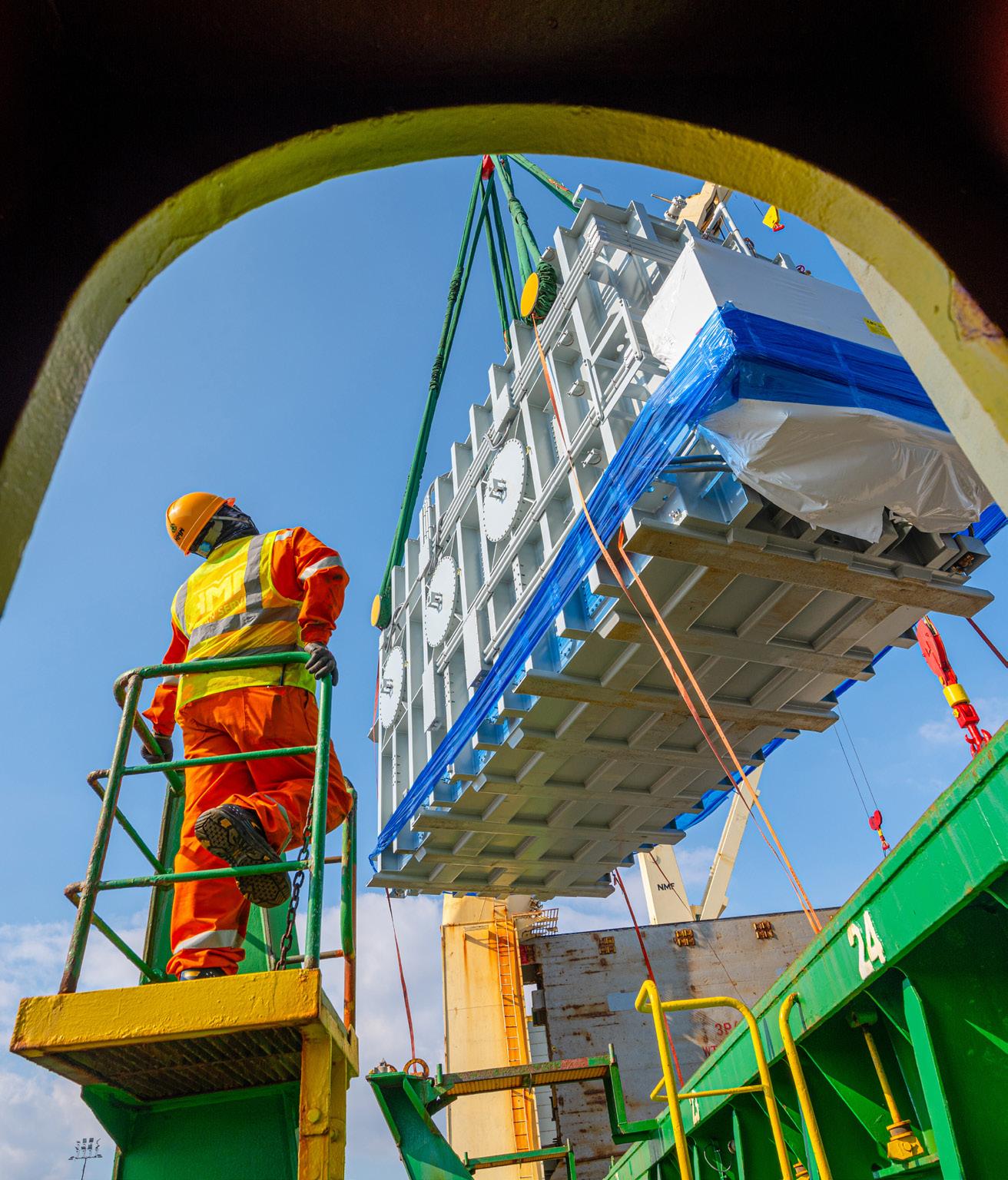
bullish, pointing to recent clean energy gains and a continued push towards net-zero emissions.
Plezia at the Port of Long Beach said two decades of sustainability efforts have delivered a cleaner harbor, green building benchmarks and major improvements in air quality, including a 92% drop in diesel emissions, 71% in nitrogen oxides, 98% in sulfur oxides and 17% in greenhouse gases.
“As a leader in trans-Pacific trade, the Port of Long Beach will not ease up on its environmental goals for cleaner air and water and will continue to work towards becoming the world’s first zero-emissions port,” Plezia said.
Nelson acknowledged that a stable source of public funds was “critically important” to ongoing port modernization but noted that the U.S. Department of Transportation was among the few federal agencies to receive a funding boost in the president’s proposed 2026 budget.
The Port of San Diego is already reaping the rewards from several awards programs administered by the DOE, Nelson said, including a US$58 million EPA Clean Ports Grant to electrify its Tenth Avenue Marine Terminal. Combined with US$28 million from the port and its tenants, the US$86 million project will nearly fully electrify cargo-handling operations.
“With these funds secure, port staff are fully focused on project implementation and demonstrating our commitment to our neighbors and responsible stewardship of public resources,” Nelson said. “The port also looks forward to laying the groundwork for future projects and continuing to lead by example, advancing not only air quality initiatives but also providing high quality service to our customers.”
Colombia-based Simon West is senior reporter for Breakbulk
*Breakbulk Exhibitor
*BGSN Member
Oversized transformers are discharged at the Port of Long Beach. Credit: Port of Long Beach
10 US POLICIES UNDER TRUMP: WHICH ONES MATTER TO PROJECT CARGO?
Industry leaders reveal which federal moves are driving projects, and those that aren’t
With nearly six months of experience under Trump’s second administration, do we have a clearer view of what the impact of a flurry of policy initiatives will have on the project industry here in the United States?
Fluctuating tariffs, trading partners falling into and out of favor, and a new conflict in the Middle East with direct U.S. involvement, complicate the outlook for industrial projects. Meanwhile, campaign promises related to where Americans will get their energy from and initiatives to strengthen domestic industry are underway, developing as we discussed in “5 Things Breakbulk Must Prepare for Under Trump” last fall. But, how those policy changes coupled with economic and geopolitical realities will play out is in question.
Current sentiment can be boiled down to one word: uncertainty. “301 and other tariffs have a huge impact, but nobody really knows what the answer is yet,”
Tarek Amine, principal vice president and chief supply chain officer at Bechtel Global Corporation, said during a panel at Breakbulk Europe in May.
It’s that uncertainty that can block decision-making, leading to a wait-andsee approach. The breakbulk community needs some measure of certainty, and that’s why we reached out to 10 senior leaders from across the industry, and asked them to rank 10 federal initiatives based on their impact to project development. Let’s take a look at the ranking and at evidence that shows the direction the industry is moving.

By Leslie Meredith
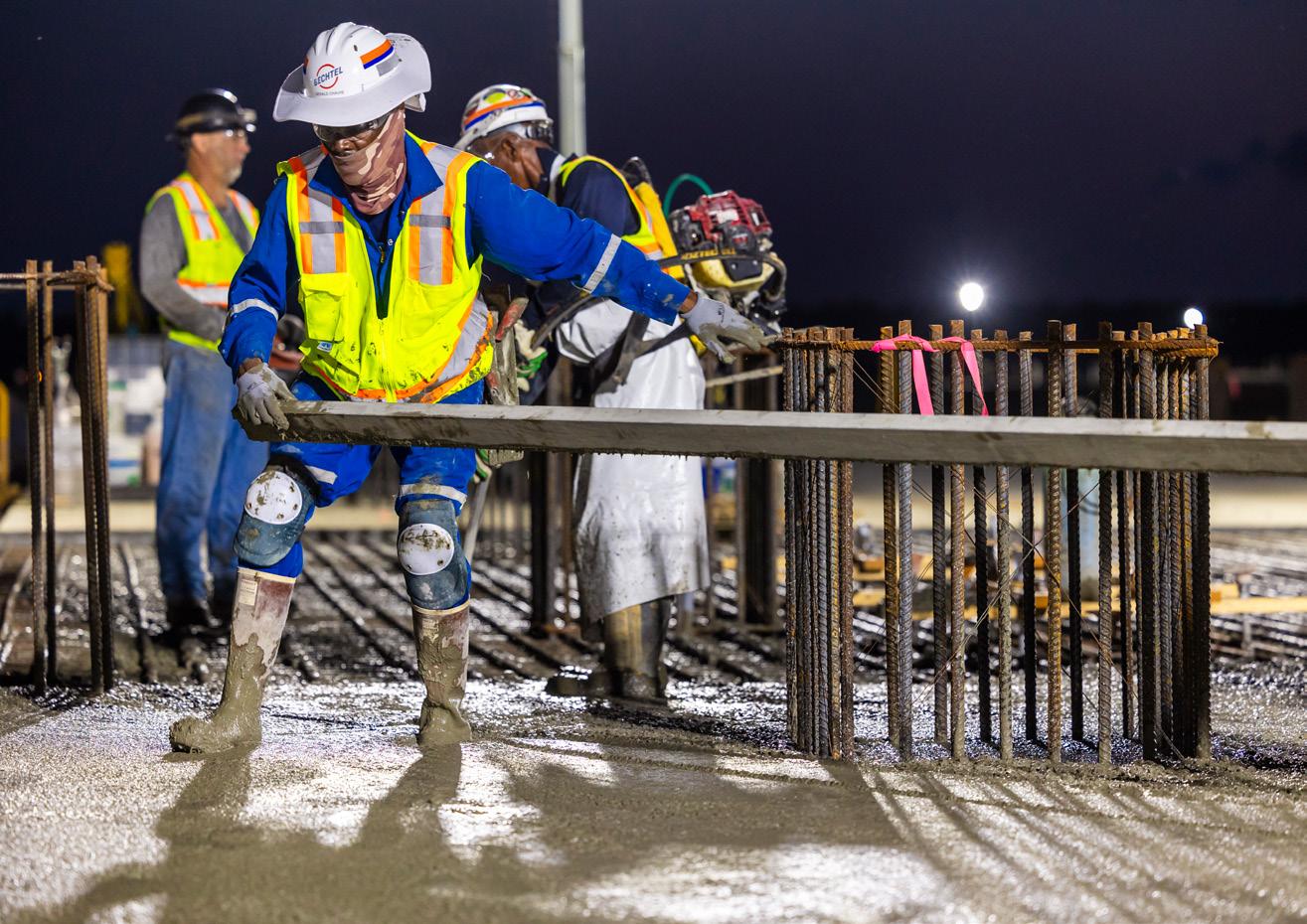
1. Steel & Aluminum Tariffs Raised to 50%
This action led the pack by a wide margin, receiving 7 out of 10 first place votes by the panelists. Everyone agreed it would have a substantial negative impact on the project market.
Marco Poisler, COO of UTC Overseas, rates the measure a “critical risk,” saying it raises costs “across virtually every manufacturing supply chain.”
For instance, the price for steel rebar, a component found in almost every construction project, is 8 to 9% higher than it was in March, with most of the increase coming after the tariff doubled from 25% in June. Analysts point to a coordinated mill price increase made by steel producers without
fear of being undercut by foreign suppliers due to the high tariff rate. The administration hopes to encourage new domestic steelmaking capacity. And it has done that with its approval of Nippon Steel’s acquisition of U.S. Steel for US$14.9 billion, which closed in June. The deal commits Nippon to investing US$11 billion into the steel sector. Nippon’s plan joins expansion programs from Nucor and others, positioning the sector as a steady source of heavy-lift activity in leading steel states such as Indiana, Ohio, Pennsylvania, Texas and Michigan. Bottom line: Because steel costs more, projects will cost more. Plan on some new steel mills over the next few years with ongoing transportation demand for finished goods.
Credit: Bechtel
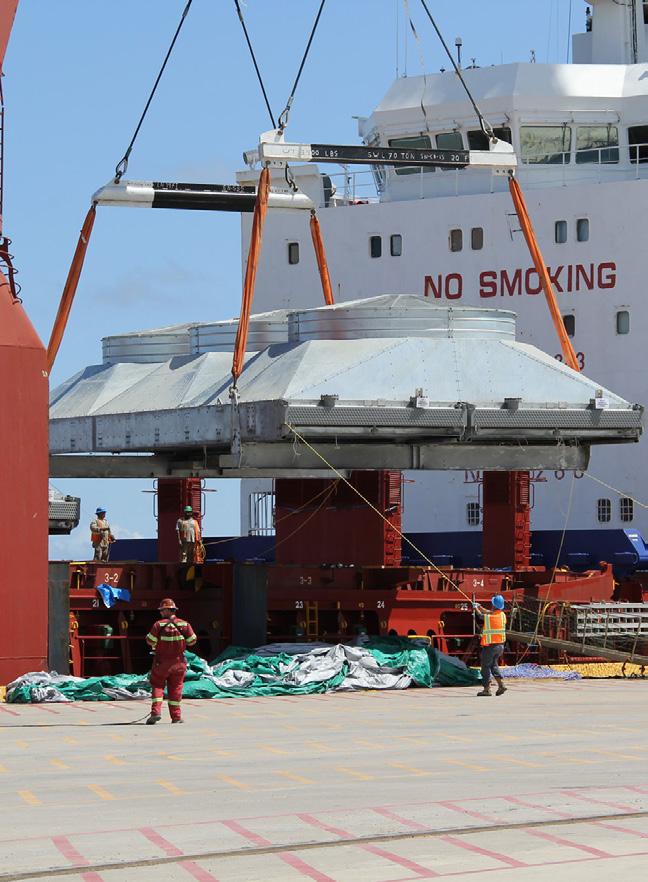
2. LNG Export Moratorium Lifted
Our industry panel ranked this political move as having the second highest impact on project development. When the moratorium was lifted in January, natural gas producers’ response was decisive. After a year of operating under the Biden administration’s pause on new LNG export approvals to non-free trade agreement countries*, the floodgates opened on a dozen projects, including Venture Global CP2 LNG, which received all government approvals. When the second phase of this US$28 billion project is completed in 2030, it will become the largest LNG plant in the country. “Whether used as a clean energy source or as a feedstock for ammonia, hydrogen, methanol or fertilizers, LNG continues to prove its worth in the global economy,” Edward Talbot, managing director of Roll Group, wrote in his analysis accompanying his ranking. “The logistics sector will heavily benefit from projects (pipelines, processing facilities, export terminals, etc) that are greenlit for construction.” LNG processing facilities are one type of project to benefit from this policy. Further, there are dozens of LNG terminals and pipelines approved or under construction,
and with all of these projects, modules, tanks, compressors and other oversized cargoes will need logistics support and transport.
The bottom line: LNG projects are a sure bet – watch for more FIDs, approvals in the coming months and open the conversation with project owners now.
*The U.S. has free-trade agreements with the following countries: Australia, Bahrain, Canada, Chile, Colombia, Costa Rica, Dominican Republic, El Salvador, Guatemala, Honduras, Israel, Jordan, Mexico, Morocco, Nicaragua, Oman, Panama, Peru, Singapore and South Korea.
3. Section 301 Tariffs on Industrial Equipment
Section 301 tariffs on Chinese port equipment prompted mid-level concern from the panel’s aggregate results, and serious concern from our port panelist. Greg Borossay, principal maritime business development at the Port of San Diego, said “The impact will be negative and immediate.”
Covering over US$18 billion in imports—including ship-to-shore cranes and their components, heavy machinery, turbines and electrical gear—these tariffs have sharply

increased costs for essential port equipment. Regardless of where the machinery is assembled, if it is associated with a Chinese company or contains Chinese parts, it will be subject to the new tariffs. Because the U.S. lacks the industrial base to manufacture large-scale port machinery, port authorities are left with few alternatives but to absorb higher prices or pass them on to shipping lines.
The clock is ticking: Unless targeted tariff exclusions are granted, ports will face higher project costs, more frequent delays and growing challenges in keeping up with cargo volumes. For shippers, this means more uncertainty in scheduling, budgeting and long-term planning.
The bottom line: With no current domestic alternatives, expect congestion, budget overruns and scheduling problems if exclusions or other solutions are not put in place.
4. Strict “Buy American” Rules for Federal Projects
The current administration has embarked on a sweeping overhaul of the “Buy American” rules for federal projects, but its focus is on
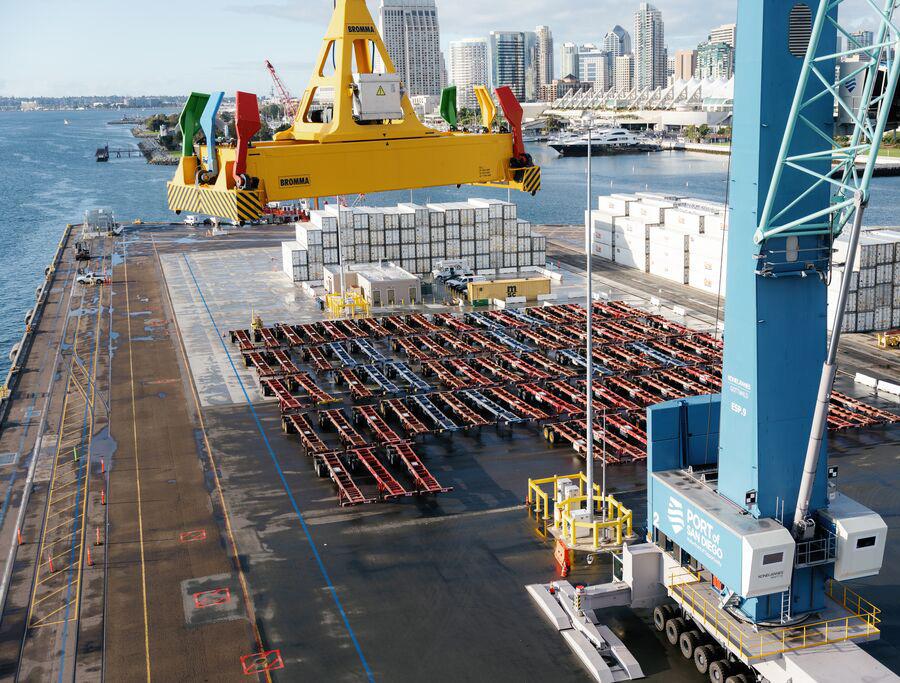
Credit: Port of San Diego

streamlining rather than changing the criteria for either domestic content thresholds or price preference for domestic goods.
Under Biden, the FAR amendments raised domestic content thresholds from 65% in 2024 to 75% starting in 2029. The premium on foreign goods increased from 6% to 20% on large businesses, making it more difficult for a non-U.S. company to win a federally funded contract. While the new reforms don’t change these regulations, the process for government contracting should be simplified. For example, the executive order stipulates that for every new requirement added, ten existing ones must be repealed.
Have we seen an uptick in domestically produced components for federal projects? While there is no public data to support such a trend, we do see movement, which could be the start of growth in the sector. In 2024, Siemens announced it would expand its transformer plant in North Carolina with production set to begin in 2026. The move supports growing U.S. demand for grid capacity and aligns with Buy American preferences. As energy infrastructure spending rises, more foreign manufacturers may consider local production to compete.
The bottom line: No change to content thresholds. Growing grid demand may spur domestic transformer manufacturing and thereby increase transport by road, rail and barge in the sector.
5. Offshore Wind Leasing & Funding Rollbacks
For a brief time, offshore wind looked like it was going to finally take off in the U.S., but prospects have dwindled. New administration directives temporarily withdraw all areas of the Outer Continental Shelf from new or renewed wind energy leasing and suspend the issuance of new permits, approvals and loans for wind projects (offshore and onshore) pending a comprehensive federal review. Project developers were swift to respond.
RWE has paused its plans for leases off the coast of New York, Louisiana and California. Atlantic Shores developers Shell and EDF Renewables have formally requested the cancellation
of their regulatory agreements. In a recent Wood Mackenzie report, the analyst downgraded its wind capacity projections through 2029 by 40%. New capacity will come from projects that were already approved or under construction.
It’s no surprise that our industry panel ranked offshore wind rollbacks in the middle of the pack. Offshore wind has struggled to gain momentum here in the U.S., and faced challenges from Jones Act regulations, environmentalists and insufficient infrastructure. While offshore wind projects provide significant work for project cargo professionals as we’ve seen throughout Europe and other parts of the world, it was still a little early to count on big volume business from these projects in the U.S.
The bottom line: Offshore wind is off the table for now. Leasing is frozen, funding suspended and developers are pulling out. This sector could return in 2028.
6. Nuclear Revival
AI’s voracious need for computing power has put nuclear back in play largely because of new small modular reactor technology.
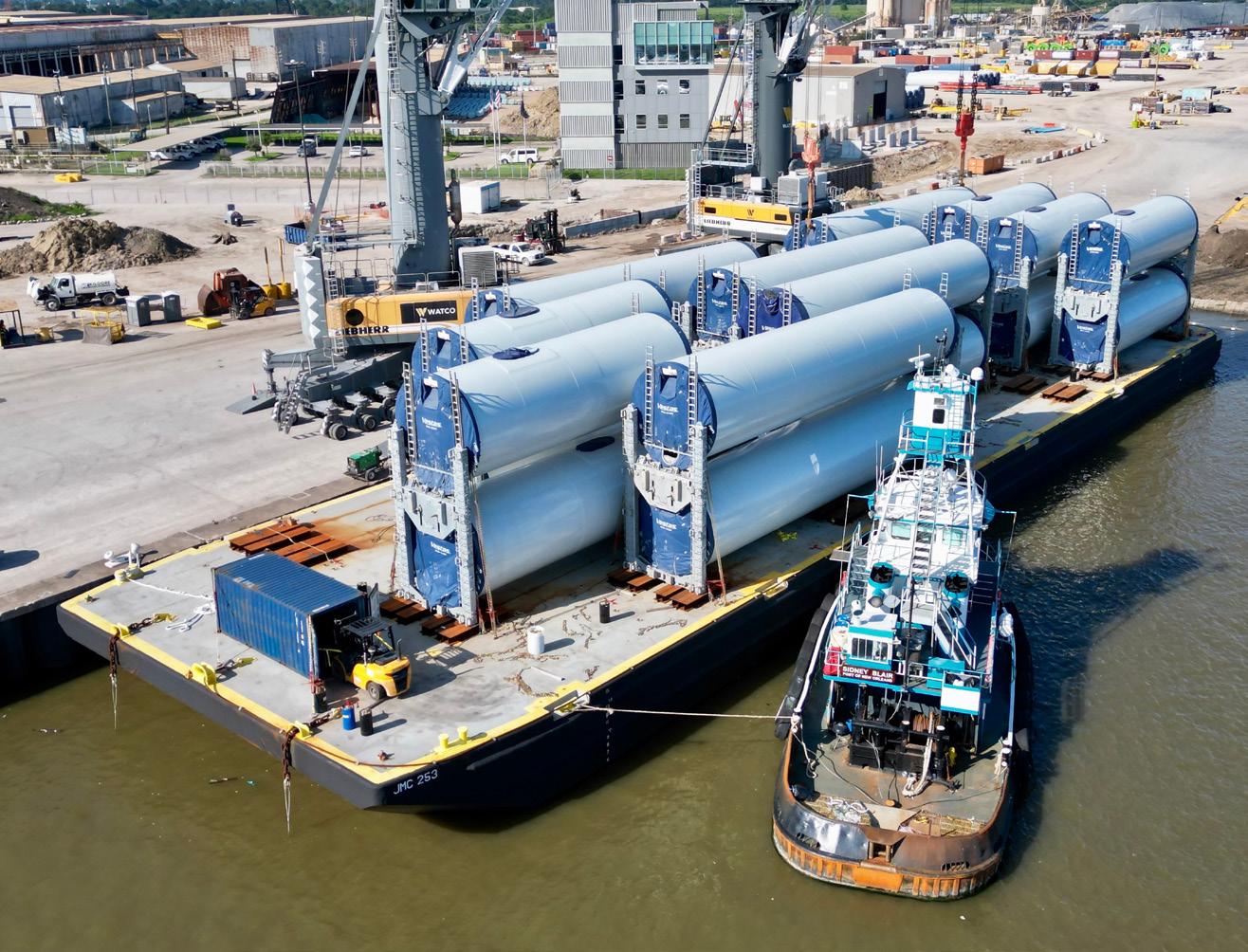
Credit: Edwards Moving & Rigging
Credit: Ceres Barge Line
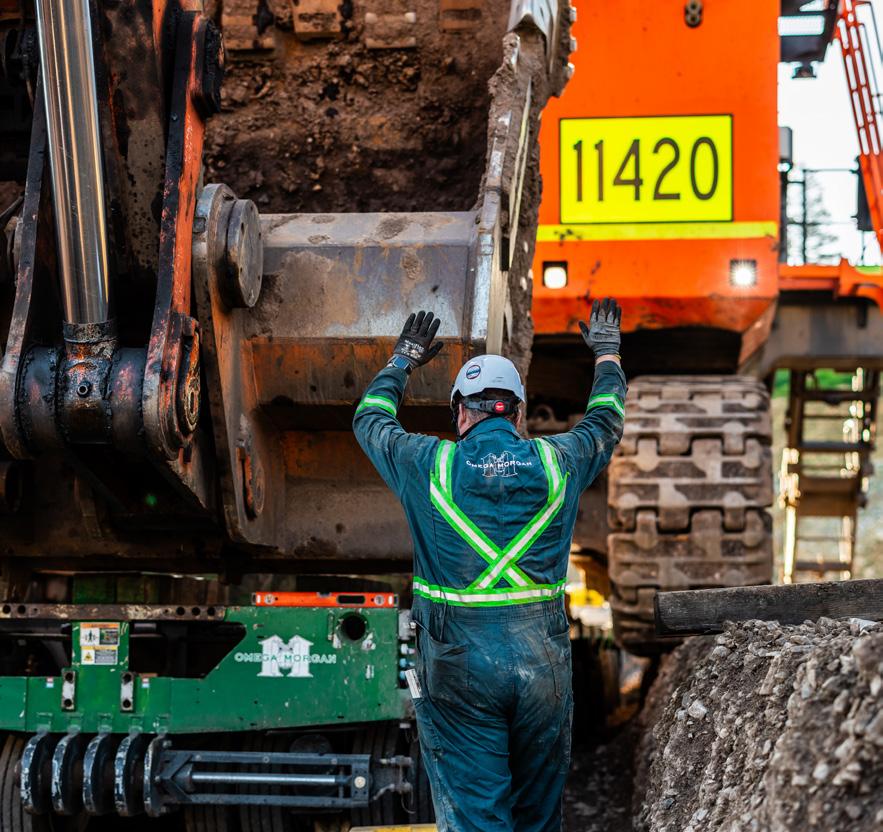
But it’s not the only reason.
To capitalize on existing infrastructure, Constellation Energy will restart Three Mile Island Unit 1 by 2028, a year ahead of schedule, to supply Microsoft data centers. It will be the first U.S. reactor ever returned to service after a shutdown.
Fermi America will build a huge multi-power source data center complex from scratch. The company recently announced its partnership with Texas Tech University, saying the project will integrate “the largest nuclear power complex in America, the nation’s biggest combined-cycle natural gas project, utility grid power, solar power, and battery energy storage.”
Around US$35-45 billion in SMR and fuel supply chain projects have been announced. Executive orders have shifted parts of the licensing pathway from the Nuclear Regulatory Commission to the Department of Energy to reduce approval times.
Nuclear fuel security is advancing quickly as well: new uranium mines are planned for Utah, while Wyoming and Texas are fast-tracking restarts and expansions of existing sites.
For project-cargo specialists, that means a steady stream of oversize cargoes throughout the country. Panelist Dennis Devlin, managing director USA of DT Project America, said of his ranking of nuclear, “It’s the only good thing on the list.”
The bottom line: AI and data centers are fueling a nuclear comeback. From SMRs to uranium mines, this sector promises steady oversize cargo demand and longterm project opportunities.
7. Fast-Track Permitting for Energy & Infrastructure
The Trump administration has aggressively pursued permitting reform to fast-track infrastructure projects, primarily through Executive Order 14154 (“Unleashing American Energy”) and a 2025 memorandum launching a government-wide Permitting Technology Action Plan. These directives have prompted multiple federal agencies to overhaul their National Environmental Policy Act (NEPA) procedures, including the Department of Transportation’s changes that cut its procedures by half.
USDoT added strict deadlines and page limits on environmental reviews, and made it easier for agencies to use exclusions and adopt other agencies’ analyses to avoid duplicate work. A project that previously required years of environmental assessment and hundreds of pages of documentation may now be reviewed in months.
Talbot said: ”Streamlined permitting may spur growth and accelerate capital and domestic infrastructure,” but continued with this warning, “This could have unexpected short term negative effects as the upstream supply chains struggle to keep pace.”
While these reforms are already accelerating some project approvals, their long-term impact is uncertain.
The changes could be reversed by future administrations, as seen in the past, and are likely to face legal challenges from environmental groups. Based on our panel’s ranking, they are aware of the possibly fleeting nature of these reforms.
The bottom line: Use this window while it lasts; future environmentrelated lawsuits or political shifts could shut down controversial projects. Don’t be left unable to do the work.
8. Domestic Shipbuilding Incentives & Port Fees
While few dispute the appeal of revitalizing American shipyards, industry leaders placed this policy initiative in the lower third of priorities. That likely reflects the current reality: Section 301 port fees on Chinesebuilt vessels apply only to container and ro-ro ships. Most heavy-lift vessels—essential to project cargo— fall below the 55,000 dwt threshold and are exempt at this time.
As for the SHIPS for America Act, its goal of rebuilding a U.S. commercial fleet is ambitious but faces serious obstacles. U.S.-built ships can cost 2–3 times more than those from Chinese, Korean or Japanese yards, and delivery times are significantly longer. The shortage of skilled labor and yard capacity adds to the challenge.

Credit: Omega Morgan

New preferential cargo laws now require 100% of U.S. government cargoes—including U.S.-manufactured goods for overseas projects financed by EXIM Bank—to sail on U.S.-flagged ships, up from the previous 50%. But with so few ships available, this mandate may be difficult to meet.
But several domestic shipyards are making moves, including Philly Shipyard whose new owner Hanwha Ocean said it was expanding the yard and looking to increase the facility’s revenues from $368 million per year to $4 billion per year by 2035, largely through military contracts. The company may also build the country’s first U.S.-flagged LNG tankers.
The bottom line: Port fees could be applied later to heavy-lift vessels. Domestic shipbuilding at scale is a long way off. Higher costs are inevitable.
9. Opening Federal Lands & Waters for Drilling
True to his campaign promise, the Trump administration moved early to open millions of acres of U.S. coastal waters and public land for oil, gas and mining development, including 23 million acres across the National Petroleum Reserve in Alaska. A Gulf oil lease sale covering about 80 million acres is scheduled later this year in December.
This is part of the “Unleashing American Energy” package and includes streamlining the permitting process as well as lifting some environmental requirements. Our panelists were not impressed, ranking this policy change near the bottom of the list.
Energy companies haven’t announced big plans for new exploration and production projects, due to volatile oil and gas prices, instability in oilproducing regions, legal action from environmentalists, and potential regulatory changes in the future.
But there’s one big exception: Glenfarne Group is advancing its US$44 billion Alaska LNG project with Worley as lead EPC. The project includes an 807-mile pipeline carrying North Slope natural gas to the Anchorage region and an LNG export terminal at Nikiski. A final investment decision is expected by the end of the year.
The bottom line: As long as a project has its approvals, go for the work. Energy security policy will likely continue to be prioritized
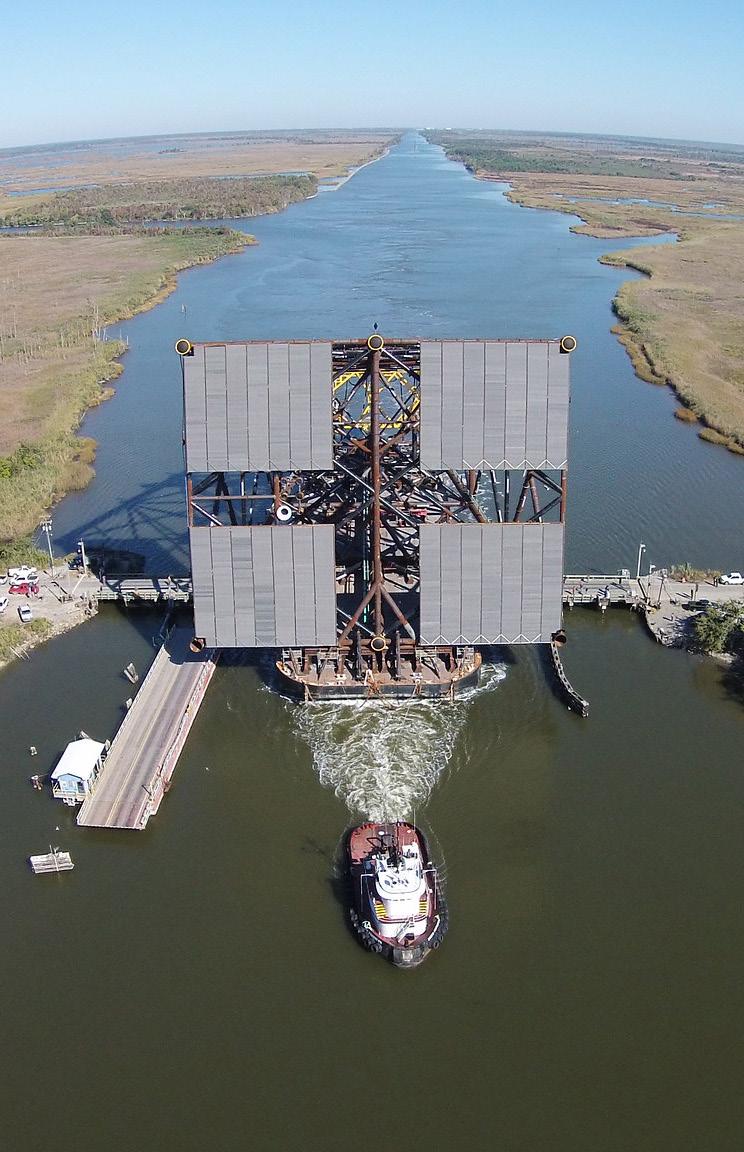

10. Coal Comeback
Our executives put coal at the bottom of the list, despite President Trump’s backing of coal as part of Executive Order 14154, “Unleashing American Energy.” The order supports mine reopenings, life extensions for coal-fired power plants and revokes the moratorium on coal mining leases on federal land.
But coal has been on a steady decline since its peak in 2008, according to the government’s Energy Information Administration, due to the abundant supply of natural gas and the falling costs of renewables, affecting both domestic use and exports. Even in steelmaking, coal use has declined as steelmakers turned to Electric Arc Furnaces that use scrap metal rather than coal to produce most types of steel, a process that reduces emissions and is cheaper.
Yet it serves as a political rallying point, supporting jobs in states that rely on coal mining such as West Virginia, Pennsylvania, Kentucky and Wyoming. There are only around 40,000 coal mining jobs today compared with 180,000 in the 1980s.
“Coal revival efforts represent the policy with the largest gap between political commitment and economic viability,” Marco Poisler, COO of UTC Overseas, said.
The bottom line: Coal has political backing but little economic case. Cheaper, cleaner alternatives dominate energy and steelmaking. There’s no hope for reversing its trajectory.
Leslie Meredith is the product and editorial director for Breakbulk Events & Media.
*Breakbulk Exhibitor
*BGSN Member
Credit: Shutterstock
Credit: ARC
Credit: Smith Marine Towing


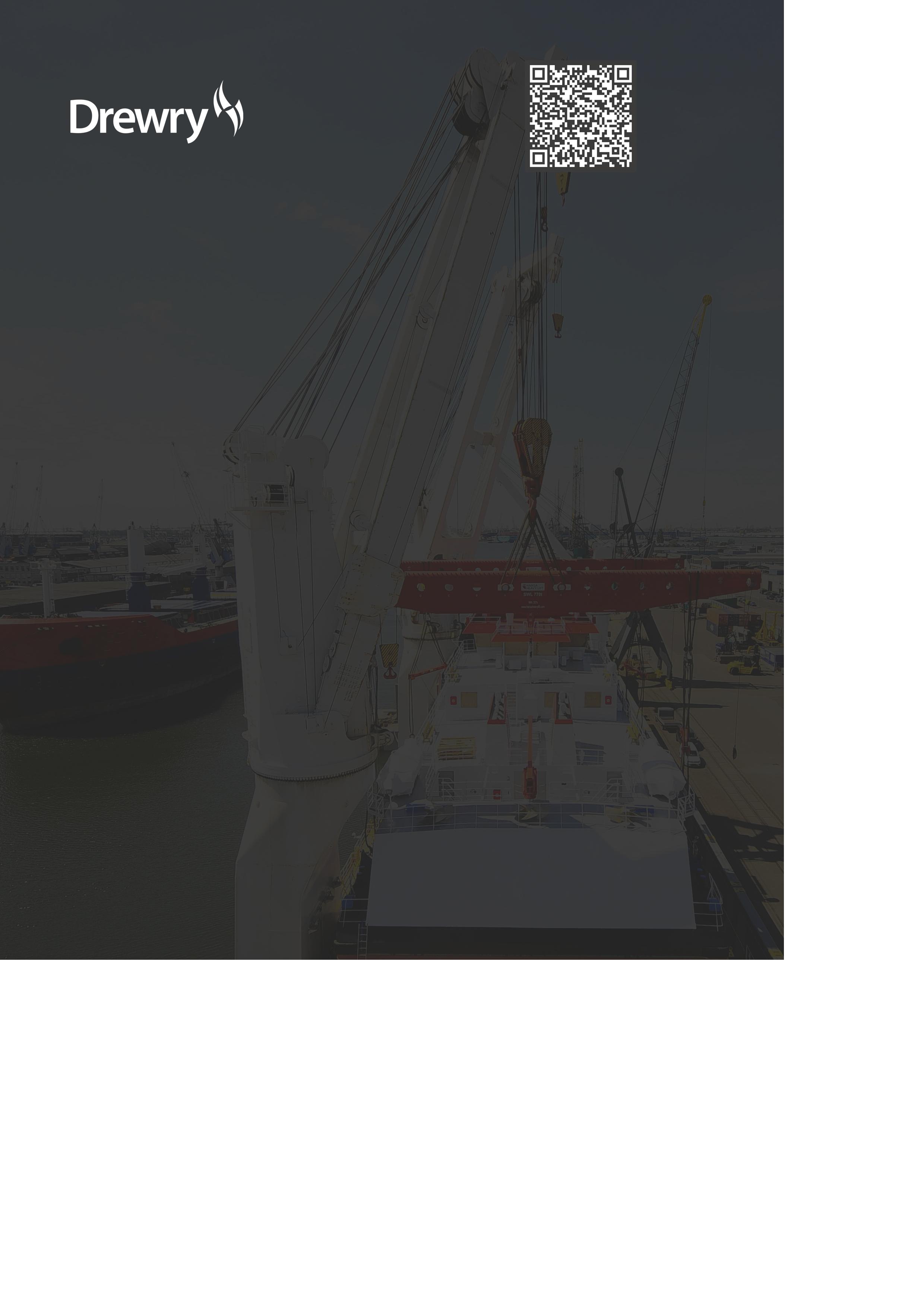

“GAME OF CHICKEN” TARIFFS AND U.S. LNG EXPORTS
Tariffs, trade wars and the power of American gas
The U.S. Energy Information Administration (EIA) projects that global natural gas demand will rise 29% by 2050, driven by the industrialization of emerging economies and decarbonization efforts in regions dependent on coal. Shell’s LNG Outlook 2025 projects a 60% increase in global liquefied natural gas (LNG) demand by 2040, reinforcing the fuel’s growing importance.
As of April 1, 2025, the U.S. had eight Federal Energy Regulatory Commission (FERC) approved LNG export terminals operating, eight under construction, and 12 approved but not yet built. One of the most significant developments of the past fifty years is globalization—integrating national economies into a global economic system—which has driven exponential growth in international trade in general, particularly within the energy sector. With abundant, low-cost gas, the U.S. is well-positioned to supply and dominate global clean energy needs for the long term despite current trade tensions attributed to the Trump Administration’s Executive Order for implementing reciprocal tariffs on major trade partners on April 9 of this year. While a full-scale trade war with China has officially launched, and potential short-term headwinds exist with other global trading partners, the U.S. remains a leading producer of LNG, delivering much-needed capacity to the world. During 2024, the U.S. exported 4,367,305.54 MMCF of LNG
Margaret Kidd
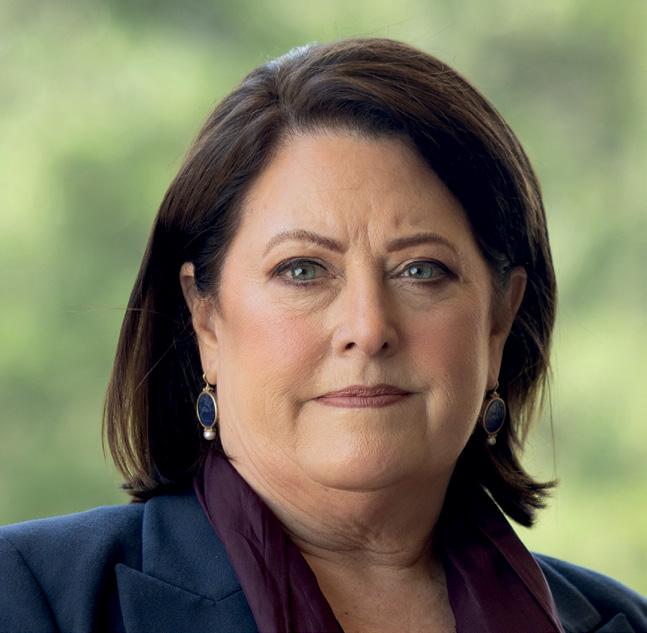
(EIA). Europe accounted for 48% of U.S. global exports of LNG in 2024, of which 22% was exported to the Netherlands, 16.9% to France, 11.9% to the United Kingdom, 10.1% to Germany and 10% to Spain. Within the Asia/ Asia Pacific markets, which represented 33.2% of U.S. LNG exports in 2024, 23.2% was exported to Japan, 20% to South Korea, 17.7% to India and 14.7% to China. The Middle East/Africa accounted for 9.6 % of U.S. LNG exports, and Central & South America/Caribbean accounted for 9.2%, respectively.
Game of Chicken
Piercing the veil as policymakers, money managers and corporate executives, along with supply chain, transportation, and trade professionals, digest the impact of U.S. reciprocal tariffs on 90 countries and the recent volatility of stock, bond and commodity markets globally, the economic sentiment has moved to a nexus that these tariffs
By Margaret A. Kidd
are coming at a time when the global economy is showing signs of slowing. Without a doubt, many Americans support President Trump’s concern for fixing a global system of tariffs that sometimes is a disadvantage to some U.S. industries and exports. However, fears of inflation, the slowdown in consumer spending, the delay or sidelining of business investment, the potential for canceled manufacturing orders and conceivably weak freight demand point to the growing concerns and probability of a recession. Despite this backdrop and the concerns of leaders across the globe, a “game of chicken” is distinctly underway between China and the U.S., Europe and the U.S., and Canada and the U.S. It’s a game lacking transparent goals, rules, a fail-safe switch and off ramp.
The Pivot
In the week leading up to “Liberation Day,” equity markets in Asia, Europe and the U.S. were under pressure, along with the U.S. Treasury Bond market and energy prices. Less than 24 hours after implementing U.S. reciprocal tariffs on April 9, President Trump pivoted to simply imposing a 10% baseline tariff for a 90-day pause on countries versus reciprocal tariffs, except China, which was raised to a high of 145% but has settled at 55%. It remains to be seen if this was the operationalization of the “Art of the Deal” or, more saliently, the power of a market
U.S. LNG Export Destinations

+ Europe
- Europe
- Asia/Asia Pacific South
Pacific
Credit: Shutterstock

meltdown and reflection of the impact of the 125% tariff China levied on U.S. imports and then reduced to 10%.
Energy Trilemma
U.S. LNG is key to supporting the energy security of countries that have historically been our allies. Following Russia’s invasion of Ukraine, the U.S. was able to replace substantive capacity in Europe due to sanctions on Russian energy. Europe’s “energy trilemma” of balancing supply security, environmental sustainability and affordability has seen political efforts prioritizing renewable and zero-carbon energy systems versus gas infrastructure investment and negotiating long-term LNG contracts (Collins & Miles, 2023, p. 5). Table I below provides a breakdown of U.S. LNG exports in 2024 by destination country, volume of LNG delivered, U.S. reciprocal tariff and U.S. trade balance with export country (surplus/deficit).
The U.S. has a trade surplus. with several European countries in general, specifically the Netherlands, United Kingdom and Spain, which rank in the top 10 countries for U.S. LNG exports. While winter is over in Europe, now is
the time to replenish next year’s heating.
While a gradual shift toward diversification is likely to occur, limited spot LNG availability from other regions and Red Sea disruptions affecting Qatari cargoes have reinforced U.S. LNG dominance in Europe; at the same time, African producers currently face production constraints that limit their market share (Drewry, 2025, “Short-term Scenario” section). Nations aiming to reduce trade surpluses with the U.S. or avoid future targeted tariffs could consider a negotiating strategy to rebalance trade by committing to increased U.S. LNG purchases. Regardless of tariff timelines, U.S. LNG exports are poised to become one of the key bargaining tools in upcoming trade negotiations.
Conversely, China has not imported LNG from the U.S. in the last several months, opting to resell long-term contracts due to tariffs. According to the Institute for Energy Economics and Financial Analysis (IEEFA), LNG faces intense competition from coal, renewables and other gas sources in terms of both cost and energy security in China (IEEA, 2025, p. 1). With the
55% tariffs imposed on Chinese imports to the U.S., China remains highly unlikely to be a destination for U.S. LNG. In contrast to China, other Asia/Asia Pacific nations appear more willing to negotiate trade deals with the U.S. versus retaliate with tariffs.
The Art of War
The Trump administration masterfully demonstrated the “Art of the Prestige” and the “Art of the Pivot” this April, igniting what could have been and might still be the most significant economic tsunami to hit global economies and the world order. As the administration tackles the trade war with China, perhaps a refresher on Sun Tzu’s The Art of War would be timely as they seek to maintain a strategy for U.S. energy dominance.
Margaret Kidd currently serves as the executive director of the Houston Maritime Center and Museum. She is also an instructional associate professor of supply chain and logistics technology at the University of Houston. She is frequently in the media including, BBC World News, Fox Morning with Maria, Fox Sunday Night in America with Trey Goudy, NPR, Transport Topics, CNBC, Washington Post and many more, discussing supply chain disruption and solutions.
The lifting of LNG exports has prompted a flurry of development around LNG facilities.
U.S. NATURAL GAS: FROM DRILLING TO GLOBAL MARKETS
Energy Explainers – A new series by Breakbulk Staff
Natural gas is a vital part of the U.S. energy system, powering homes, industry and exports. For the project cargo transportation and logistics sectors, understanding the journey of natural gas from drilling to export reveals where opportunities for new contracts can be found, and equips you with a basic understanding of the process to show your customers you understand their projects.
Location, Location, Location
The process begins underground in some of the nation’s most resourcerich regions: Texas, New Mexico, Oklahoma, Louisiana, North Dakota, Pennsylvania, Colorado, Wyoming, West Virginia and Ohio. The Permian, Marcellus, Utica, Williston and Haynesville basins are especially active.
Operators use seismic surveys to locate gas-rich formations. Drilling rigs that often use horizontal drilling, penetrate deep rock layers. Once the well is drilled, it is cased, cemented and frequently hydraulically fractured to release trapped gas. Major players like Chevron and Mewbourne Oil Company are among the most active, with the U.S. maintaining a robust rig count of around 740 in 2025.
Gathering, Processing and Transport
Once extracted, natural gas travels via gathering pipelines to processing plants. Here, impurities such as water, sulfur and carbon dioxide are removed, producing pipelinequality gas. Cleaned natural gas is pressurized and sent through
a nationwide network of largediameter transmission pipelines. Compressor stations keep the gas moving efficiently to power plants, industrial users and residential customers across the country. However, if the natural gas is intended for export, it undergoes an additional process to change it from a gas to a liquid so that it can be transported by ship. First, the gas is further purified to remove any remaining impurities. Using multistage refrigeration, the gas is cooled to -260°F (-162°C), condensing it to 1/600th of its original volume. The resultant LNG is stored in insulated, cryogenic tanks at export terminals.
Export Terminals and Shipping
U.S. LNG export terminals such as Sabine Pass, Corpus Christi, Freeport, Cameron, Cove Point, Elba Island, Plaquemines and Golden Pass, are hubs of activity. Here, LNG is loaded onto double-hulled, temperature-controlled LNG carriers for shipment to global markets, primarily in Europe and Asia.
Recent Policy Wins and Opportunities
LNG exports are expected to rise. In 2024, the U.S. exported nearly 12 billion cubic feet per day (Bcf/d) of LNG, with capacity set to exceed 14 Bcf/d in 2025 as new projects come online. The 2025 lifting of the LNG export moratorium and the federal government’s June 2025 decision to drop proposed fines on nonU.S.-built LNG ships have provided regulatory certainty and spurred further investment and construction.
Every stage, including drilling, processing, liquefaction and export, requires moving oversized and specialized equipment. Drilling rigs, compressors and fracking gear are moved to well sites, cryogenic tanks, refrigeration modules and compressors need delivery to LNG terminals, while pipeline segments and port infrastructure upgrades provide work at multiple LNG sites, many of which are located at ports along the Gulf.
From the wellhead to the world, U.S. natural gas relies on a sophisticated supply chain. For project cargo professionals, each link in this chain creates opportunities to deliver the critical infrastructure that keeps America’s natural gas flowing to domestic and global markets that will continue to grow over the next several years.
THE THRILL OF MAKING THE IMPOSSIBLE POSSIBLE
UTC’s Diana Davila on the Importance of Hard Work and Great Mentors
By Liesl Venter

Diana Davila never set out to conquer the logistics sector — but somehow, it found her. As a teenager facing more obstacles than options, she stepped into the working world out of necessity rather than ambition.
Today, as senior VP of U.S. operations at UTC Overseas, she stands among the most respected women in an industry still largely led by men. Her journey to logistics may not have been planned, but it’s a space she has come to master, with resilience, grit and a deep understanding of what it takes to keep things moving, even when the road is anything but smooth.
Davila grew up in Central Illinois, a place she says instilled in her a
strong work ethic and a deep sense of curiosity about the world. “That’s where my dream of becoming an international au pair started. I was drawn to the idea of bridging cultures,” she recalls.
After graduating from Charleston High School in the late 1980s, those ambitions remained, but financial realities meant college wasn’t an option. “Instead, I enrolled in what I call the ”University of Hard Knocks,” learning through real-world experience and the guidance of incredible mentors who crossed my path.”
Her first job came at the age of 15, when she began working at a local restaurant, serving tables, receiving stock, checking in goods and managing supplies. “Looking back, it was my
first exposure to supply chain work. I just didn’t know it yet,” she says. It is also where she quickly learned the value of customer service and developed a drive to do more.
Laying Foundations
A “life-changing” trip to Mexico at the age of 19 would set Davila on the path to logistics. While there, she worked briefly as a teacher before joining a local exporter. “It was basically an apprenticeship,” she says. “I was learning every part of the process without realizing it was building the foundation for my future.”
Reflecting on the early days of her career, Davila is the first to admit that logistics did not feel like a calling at
“DIGITALIZATION AND SUSTAINABILITY ARE RESHAPING OUR INDUSTRY, WHILE POLITICAL AND TRADE PRESSURES, INCLUDING TARIFFS AND SHIFTING POLICIES, ARE ADDING NEW LAYERS OF COMPLEXITY.”

the time, and she certainly did not step into a top position. “I started at the bottom, and it didn’t matter what the role was, I had to succeed. Failure was not an option for me.”
It’s a mindset that has carried her throughout her career. “In every role I’ve had, I started at a lower level and worked my way up. Even when I took new opportunities that meant stepping back initially, I always ended up surpassing where I was before.”
For Davila, every challenge is an opening, not a setback. “What defines you is not the challenge itself, but your ability to figure it out and move beyond it. There are always going to be things you cannot control. The key is how you respond.”
It wasn’t until she joined a global logistics company, Fritz, that it all clicked. “That’s when it stopped being just a job. Fritz opened my eyes to how big this world really is: it’s not just about buying a pair of shoes, it’s about who made them, how they got here and everything in between. That’s when I realized: this is what I want to do.”
Her subsequent career progression, she says, was achieved not only by hard work, but also the people who believed in her along the way.
“My career wouldn’t be what it is without the mentors who recognized potential in me early on,” she says. “Jorge Trevino at La Reynera and Alice Dovey at Grocers Supply International taught me the basics of logistics and
client relations. Paul and Tony Garcia at Fritz Companies sharpened my operational skills, while Pam Holdrup at WTS prepared me for leadership.”
For Davila, mentorship has been invaluable. “Even now in the position I hold it is important. At UTC Overseas, Marco Poisler has been my greatest supporter, giving me the confidence to lead boldly. Each mentor has given me a piece of the puzzle, encouraging me to grow and embrace new challenges.”
Empowering Others
The ongoing support from people around her has not only shaped Davila’s career, but inspired a deep commitment to pay it forward. “What keeps me going?” she asks. “It’s
Davila speaks on an “Ask the Experts” panel session at Breakbulk Europe in May.
Credit: Richard Theemling Photography.
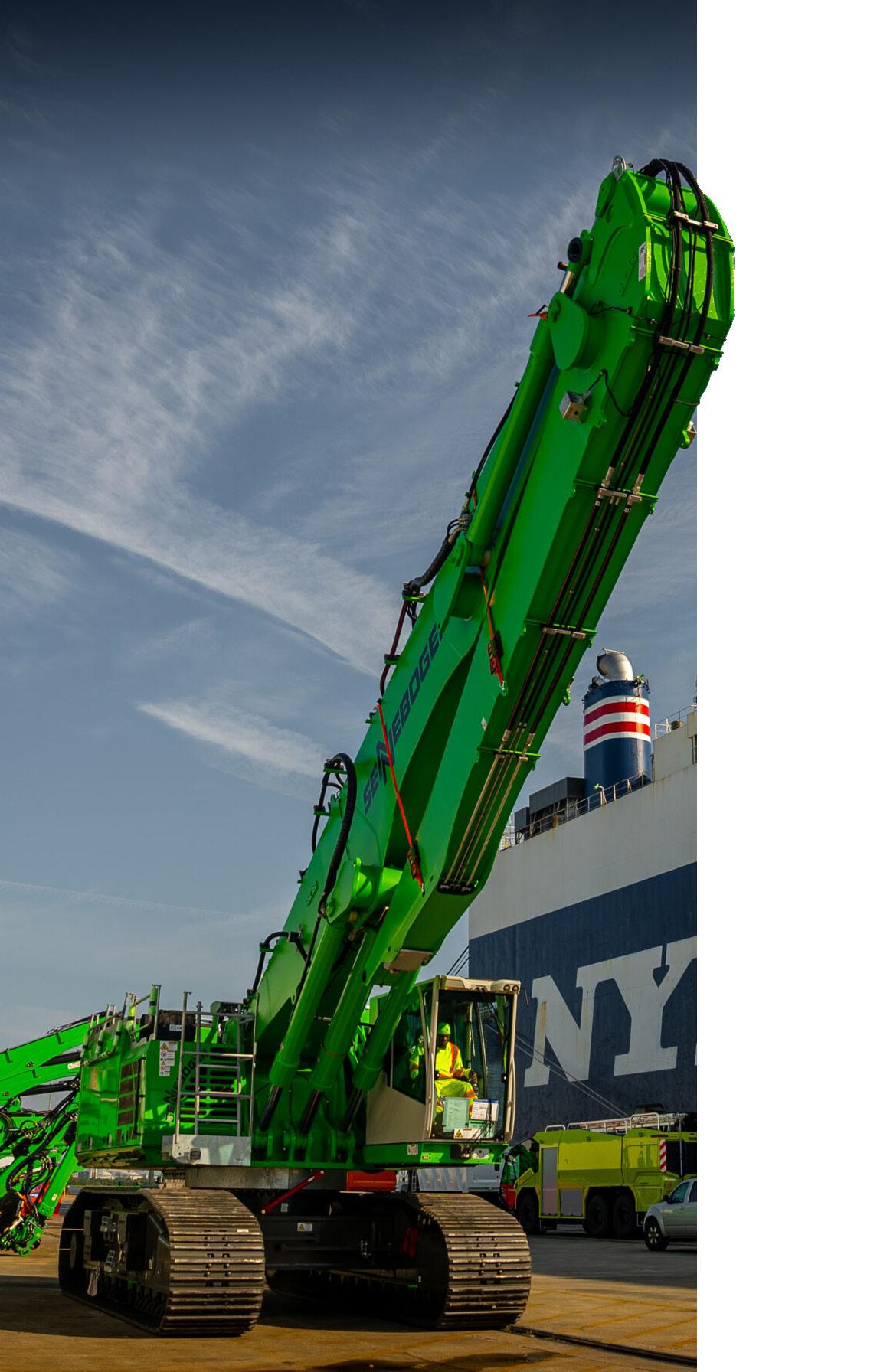
the thrill of making the impossible possible. Logistics is about solving complex challenges, but my true passion is empowering others.”
Driven by this purpose, she founded the Women in Logistics Leadership (WiLL) in 2016, a Houston-based non-profit that supports women in logistics, engineering and supply chain management. “This is my new season,” she says, “a time to grow the next generation of leaders alongside us.”
The journey hasn’t always been smooth. Like many organizations, WiLL faced significant setbacks during the COVID-19 pandemic, which slowed momentum. But the vision endured. Last year, more than 200 women attended WiLL’s annual conference and even more are expected at this year’s event, set for September.
Beyond WiLL, Davila remains deeply engaged in shaping the future of the industry. She is active with the Council of Supply Chain Management Professionals Houston Roundtable and the Port of Houston’s Partners in Maritime Education program, where she works to nurture young talent. She is also currently the chairperson of the Exporters Competitive Maritime Council (ECMC) and is leading the steering committee of the ISPM 15 Coalition where she helps shape policies that support U.S. exporters.
Our conversation inevitably turns to work and what’s happening in the industry right now. “The project cargo and breakbulk sectors are at a turning point,” says Davila. “Digitalization and sustainability are reshaping our industry, while political and trade pressures, including tariffs and shifting policies, are adding new layers of complexity. If you don’t embrace and adapt to these changes, you risk being left behind.”
At UTC Overseas, she’s leading a technology-first approach to improve transparency, boost efficiency and elevate the customer
UTC’s Heavy Equipment Division coordinated the transport of 81 Sennebogen cranes from Bremerhaven, Germany to Charleston, South Carolina.
Credit: UTC Overseas
experience. “Customer service is at the heart of everything we do and technology is the key to delivering on that promise,” she explains.
Unprecedented Change
The logistics industry is no stranger to disruption. Recent trade barriers, from shifting tariffs to evolving Section 301 actions, have only added to the complexity. For Davila, these constant shifts demand more than agility, they require leadership rooted in clarity and calm.
“Being a leader today means bringing peace, patience and understanding to everyone involved, both to our teams navigating the chaos and to our clients grappling with rising costs,” she says. “Logistics is about more than moving cargo, it’s about connecting people and possibilities even amidst unprecedented change.”
The impact on business is real, she says. “We recently saw one of our key project’s timelines impacted by the tariffs. I brought my team together to calmly explore alternative routing options while being transparent with clients about costs. By empowering my team to innovate and keeping open communication, we delivered successfully. I’m so impressed by our UTC team’s ability to make it happen, balancing immediate needs with long-term planning.”
She says tariff and trade disruptions are forcing every stakeholder in logistics to rethink their approach, even though the crystal ball is pretty cloudy right now, and future expectations are hard to pin down. “Much depends on where you sit in the supply chain, whether you’re a shipper navigating sourcing decisions in a volatile environment, or a carrier adjusting lead times and rerouting based on new compliance rules. Contingency plans are no longer static. They’re living strategies, evolving with shifting trade dynamics, changing regulations and geopolitical factors.”
She encourages industry to remain

involved. The uncertainty surrounding proposed penalties on Chinese-linked vessels under Section 301 has left many importers unable to effectively plan or project future costs. Carriers, on the other hand, are struggling to strategize fleet planning long-term.
“By advocating for a balanced approach, we can bridge the gap between policy goals and industry readiness, fostering progress toward a stronger American maritime sector,” says Davila. “There is much uncertainty at the moment and these are challenges for everyone. It’s important for our industry to not only be involved, but to actively voice their comments.”
With such a full plate, it’s hard to imagine Davila ever slowing down. She laughs when I ask what she does in her free time. True to form, her answer is project-based: “I like to buy property and refurbish it. I enjoy the organization that goes into it, figuring out the what, who and when of each project,” she says. “My
husband and I used to do everything ourselves, though I don’t as much these days, he is still very hands-on.”
Davila also dabbles in digital marketing when time allows. “I think I’m an IT person at heart,” she says, but her greatest joy comes from family. Davila and her husband of 36 years live near their daughter in Houston, while their son and his family are based in Dallas. “Family is so important to me,” she adds.
“I’m a grandmother of four little ones under the age of five and I spend as much time as I can with them. They’re my foundation.”
Whether at work or at home, there is no doubt that Davila is a relentless force, driving forward with purpose, perspective and resilience, and she clearly has no plans to slow down any time soon.
Liesl Venter is a transportation journalist based in South Africa.
*Breakbulk Exhibitor
Davila fields questions from audience members during a live Q&A at Breakbulk Europe.
Credit: Richard Theemling Photography.
“WE ANSWER INSIDE THE RAPID-RESPONSE
WORLD OF MILITARY FORWARDING
ICAT Logistics moves critical cargo smarter, faster and with tighter precision when global conflict disrupts significant trade lanes
By Leslie Meredith
“When geopolitical conflicts arise, our team is in motion within hours and on the ground in affected areas shortly thereafter, establishing crossloading hubs, configuring multimodal routing options, and assessing transit licensing requirements,” says Tyler Sullivan. “Providing immediate information on which transportation options are available, and which are not, is vital to saving lives and minimizing damage. That kind of response isn’t reactive, it’s immediate, deliberate and engrained in how we operate.”
Sullivan, who is the executive vice president of defense solutions at ICAT Logistics, was describing multiple instances in which, within hours, ICAT issued important updates to defense customers. “Anywhere in the world, we work to get customers ready within two or three hours of conflict coming to fruition,” he says. “We’re able to do all of the things defense organizations need and share information on what’s happening on the ground to help them pivot as needed.”
“We execute in real time while also feeding clients ground-level intelligence to help recalibrate their operations.” Recognizing ICAT’s specialized capabilities, new clients are often able to onboard immediately thanks to the company’s flat operational structure, which eliminates bottlenecks and accelerates decision-making.
“When the world turns volatile, the months of forecasting, demand planning and budget alignment can collapse quite suddenly,” he adds. “That’s when flexible, executionready partners aren’t just helpful, they’re critical.” As a U.S. Army Ranger veteran, I asked him if he saw military logistics in the role of emergency forwarding. He responded, “100%.”
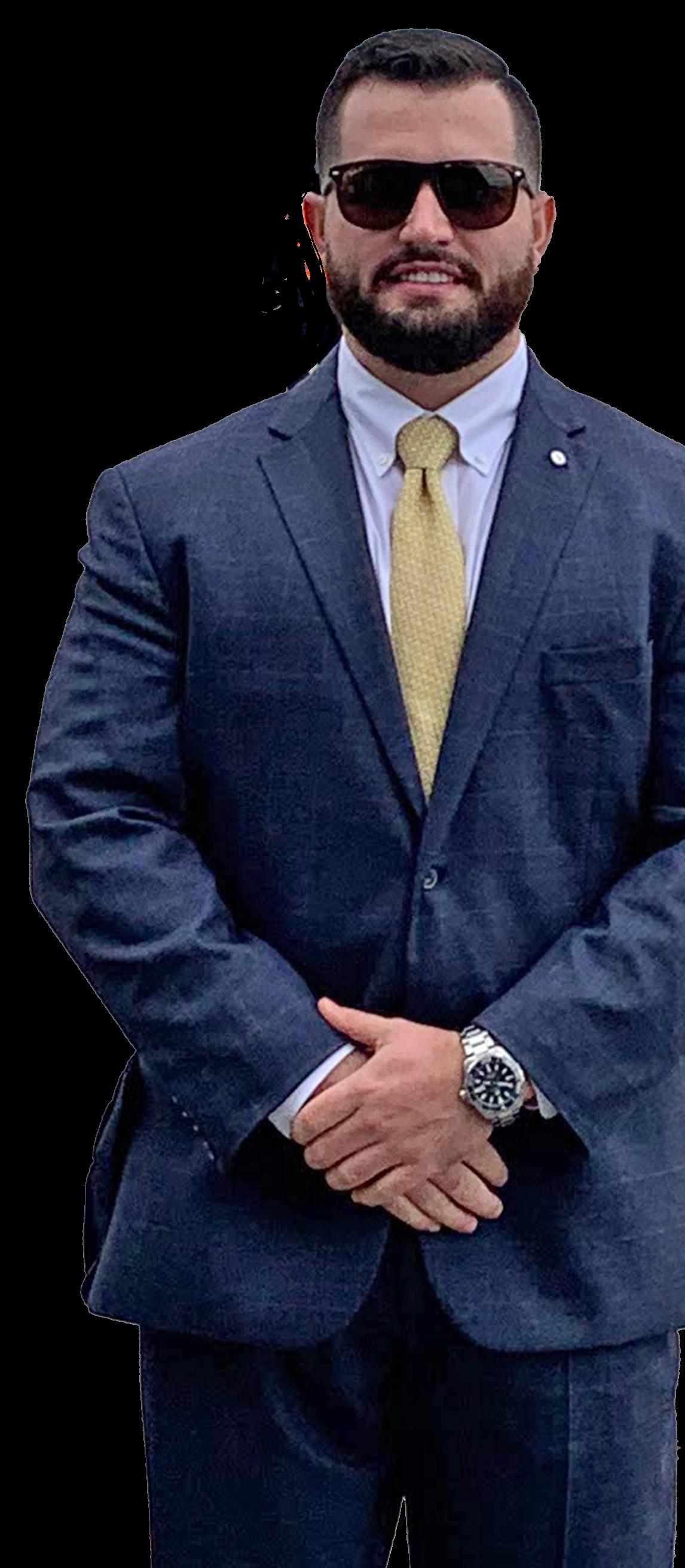

Tyler Sullivan on site in Baku, Azerbaijan, inspecting strategic gateway operations supporting Middle East logistics corridors.
Credit: ICAT Logistics
FIRST”:

Emergency Freight Forwarding
“We specialize in high-consequence cargo,” Sullivan explains. “It’s not about what the commodity is, it’s about what happens if it doesn’t move.” Whether it’s a basic part or highly specialized equipment, the urgency stems from the impact of a potential delay or disruption. On the energy side, that might mean a plant or offshore rig offline overseas, costing hundreds of thousands of dollars per day. On the defense side, it could mean troops in the field lacking the gear they need to complete their mission.
“One of our energy clients in Houston called with a rig-down emergency in the Middle East,” Sullivan recalls. “They said, ‘Just get it there now.’ Rather than default to a full charter, which would have missed the mark due to permitting delays, the ICAT team sourced a commercial aircraft already en route.”
We delivered the cargo five days sooner than expected and saved them financially in the process,”
he says. The result avoided rigdown losses and transportation cost reductions, which are easily as important as budget.”
“Speed, flexibility and adaptability … that’s what sets us apart,” Sullivan says. “While others are still drafting charter contracts, we’re already executing. In most cases, we’re moving same day, within moments of the first call.”
How Bad Can It Get?
When key shipping corridors close, the ripple effects are immediate and far-reaching. “If you can’t move through the strait into the Red Sea, you’re now forced to reroute around the Cape, adding 14 days of transit time,” Sullivan explains. “That ties up vessels, delays backhauls and puts pressure on other trade lanes where those same ships were supposed to cycle.”
Once ocean freight is underway, options become limited. “You can’t just stop a vessel mid-transit, pull your cargo off and throw it on a plane. Once it’s booked, it’s booked.
That container’s not coming off until the vessel arrives,” he says. For time-sensitive operations, especially in energy, those delays are costly. “If your customer is counting on that cargo to arrive on time, and it doesn’t, they’re not just frustrated, they’re penalized. Every day that material is late, costs them,” Sullivan said.
When Planning Isn’t Enough
He recalls one such client who had followed all the right steps: “They thought, ‘We had the demand planning, the forecasting and everything was mapped out. The shipment was even set to arrive a month early.’ Then suddenly, that was no longer the case.”
Costs began to mount almost immediately. “Insurance premiums spiked, emergency surcharges were applied, and just like that, they were upside down on the deal,” Sullivan explains. “They were being penalized for late performance and faced a tough decision.
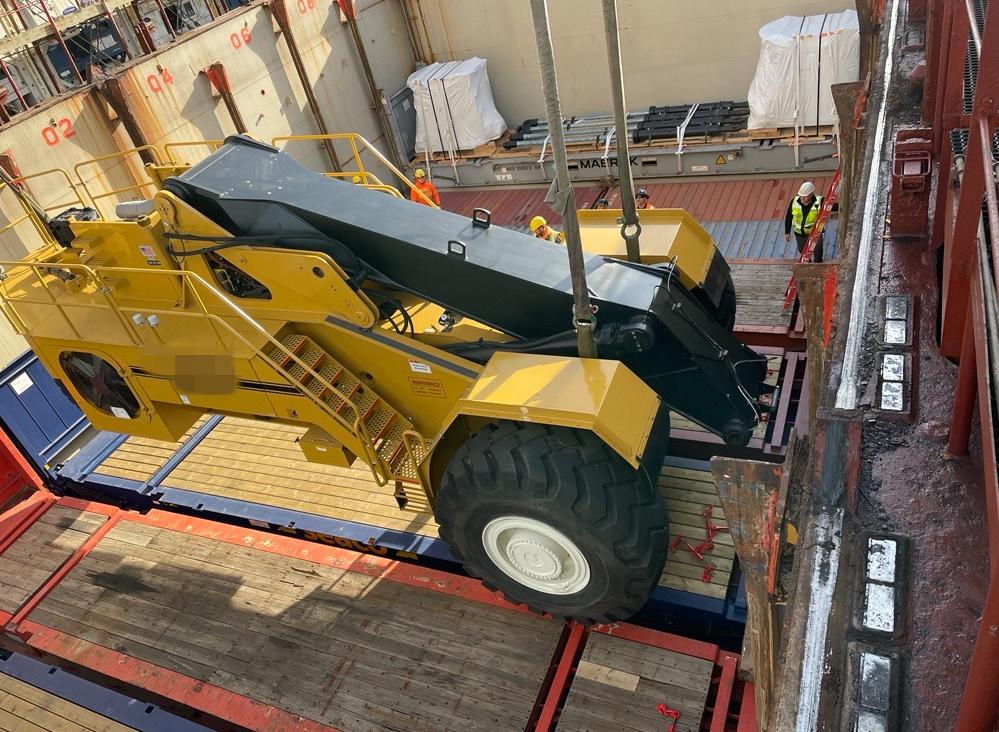
Either absorb the loss or pass the added costs onto their customer, risking the entire relationship.”
And how long could disruptions like this last? Sullivan doesn’t offer predictions. “It’s nearly impossible to say. I’ve never seen information move this fast,” he says. “When geopolitical intel starts circulating, not shipping updates, but state-tostate political moves, it changes behaviors quickly and unpredictably.”
He points to recent patterns of instability in the Middle East: “Even after cease-fires are announced, incidents can still occur. There are non-state actors and groups that operate independently, and their actions can trigger broader reactions, making a situation unpredictable.”
Which is why, in his view, “there’s almost no way to guarantee that any cease-fire will hold fully.” His advice to defense companies: focus on what’s within their control. “This is where diversifying your carrier base and maintaining close, proactive
relationships with your logistics partners becomes critical.”
Know Where You Stand
When flyover rights are revoked, ports shut down, or routes close, “stuff often just gets stuck,” Sullivan says. “When things finally start moving, there’s typically a backlog.”
Larger carriers begin prioritizing higher-margin or contracted business, quickly consuming available capacity and leaving the spot market with limited options. Shippers with smaller volumes or urgent needs often find themselves priced out or pushed aside.
“We protect our customers with everything we have. We don’t want to lose their business, and we don’t want them to lose business,” he says. “When they have a problem, we mobilize immediately.”
Transparency Cuts Both Ways
Transparency goes both ways in this
type of partnership. When clear and open conversations don’t happen, consequences follow. “If we don’t know what an organization’s priorities are, it’s virtually impossible to know how to prioritize and get creative about a solution, and that’s where we excel beyond most logistics companies.”
He urges shippers to invest in meaningful relationships with their logistics partners. “Because when the unexpected happens — and it will — you want to be the call they answer first. You want them building solutions they don’t even offer to others.”
He encourages prospective customers to be equally transparent. “Whether you’re a new partner or a long-term one, if there’s no stability, consistent order patterns, or EDI connectivity, then we’re not operating at full alignment,” he says. “The question then becomes, ‘How do we get there? What does it take for us, as the buyer, to earn your attention across all levels of your organization, especially when it matters most?’”
Heavy log stacker being loaded onto breakbulk vessel for outbound shipment to Europe, supporting industrial supply chain mobilization.
Credit: ICAT Logistics
The Outlook: More Demand, More Complexity
Sullivan predicts the military and defense logistics sectors will continue to grow significantly, but shift away from centralized, legacy providers. “I believe we’re going to see a lot more mid-size regional players enter the space,” he says. “Everybody wants to get into what we’re doing because the global landscape is changing, and the demand for agile, high-consequence logistics is only going to rise.”
This decentralization is being driven by geopolitical shifts and a rebalancing of military investment around the world. “As some regions reduce their forward posture in some areas, other nations are ramping up defense spending and investing heavily in domestic manufacturing and supply chain autonomy,” Sullivan explains. “That creates new sourcing patterns, supplier bases and logistical challenges that aren’t going to be solved by the big global players alone.”
“The requirement for flexibility, and the ability to respond quickly and effectively as situations unfold, is going to increase substantially,” he says. “We’re already seeing it in the form of higher intake and surge volume from our defense clients. They’re asking for support not just in transport, but in strategy, compliance and coordination on the ground.”
According to Sullivan, this is opening the door for nimble logistics providers who can operate globally but with regional depth: “The opportunity is there for those who can blend speed, compliance and execution without getting bogged down in bureaucracy.”
Leslie Meredith is the product and editorial director for Breakbulk Events & Media.

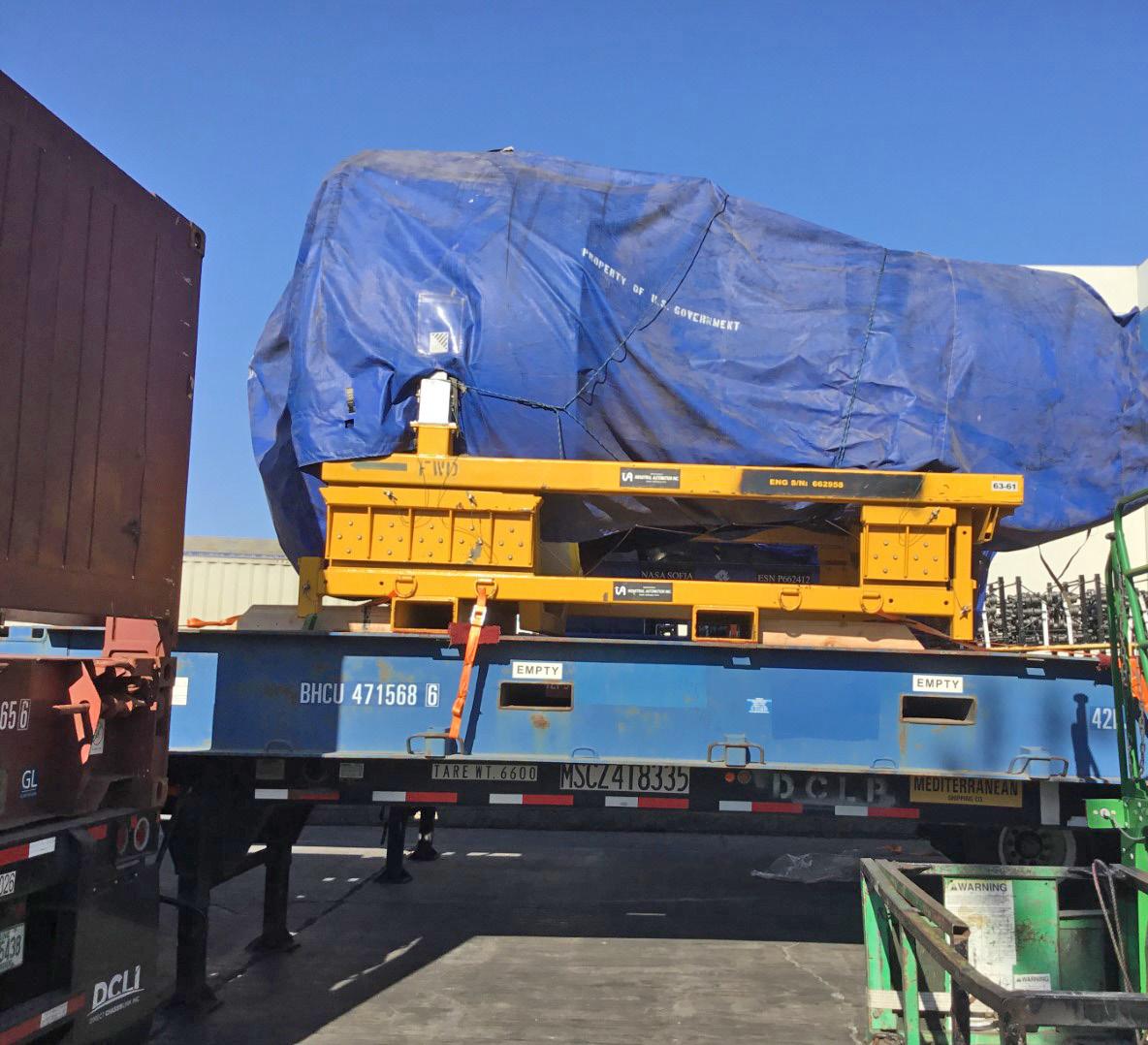
Sullivan conducting final inspection of CH-47 Chinook prior to air transport into the Middle East theater of operations.
Credit: ICAT Logistics
Oversized government-owned cargo in transit via ocean freight to Oman in support of U.S. Government operations in the CENTCOM area of responsibility.
Credit: ICAT Logistics
NUCLEAR HOPES STIR IN LATIN AMERICA
Fresh Momentum Throughout Region Fuels Prospects for Project Progress
Nuclear power has historically played only a minor role in Latin America’s energy mix, but that may soon change. As countries search for reliable, low-carbon solutions, nuclear is gaining fresh momentum, with the emergence of small modular reactors (SMRs), advanced reactors with a generating capacity of up to 300 megawatts (MW), expanding investment options and opening up potential new project opportunities.
Recent moves across the region signal a shift, most notably in Argentina.
Earlier this year, Demian Reidel, head of President Javier Milei’s council of advisors, revealed plans to install four locally-designed ACR-300 SMRs at the Atucha nuclear site at Zarate, Buenos Aires province. The reactors would boast a combined 1.2 gigawatts (GW) of power, with the first unit slated to be operational by 2030.
“This (the installation of ACR300s) is just the first stage,” Reidel said at an energy conference in Buenos Aires province in June. “We will then license this technology to
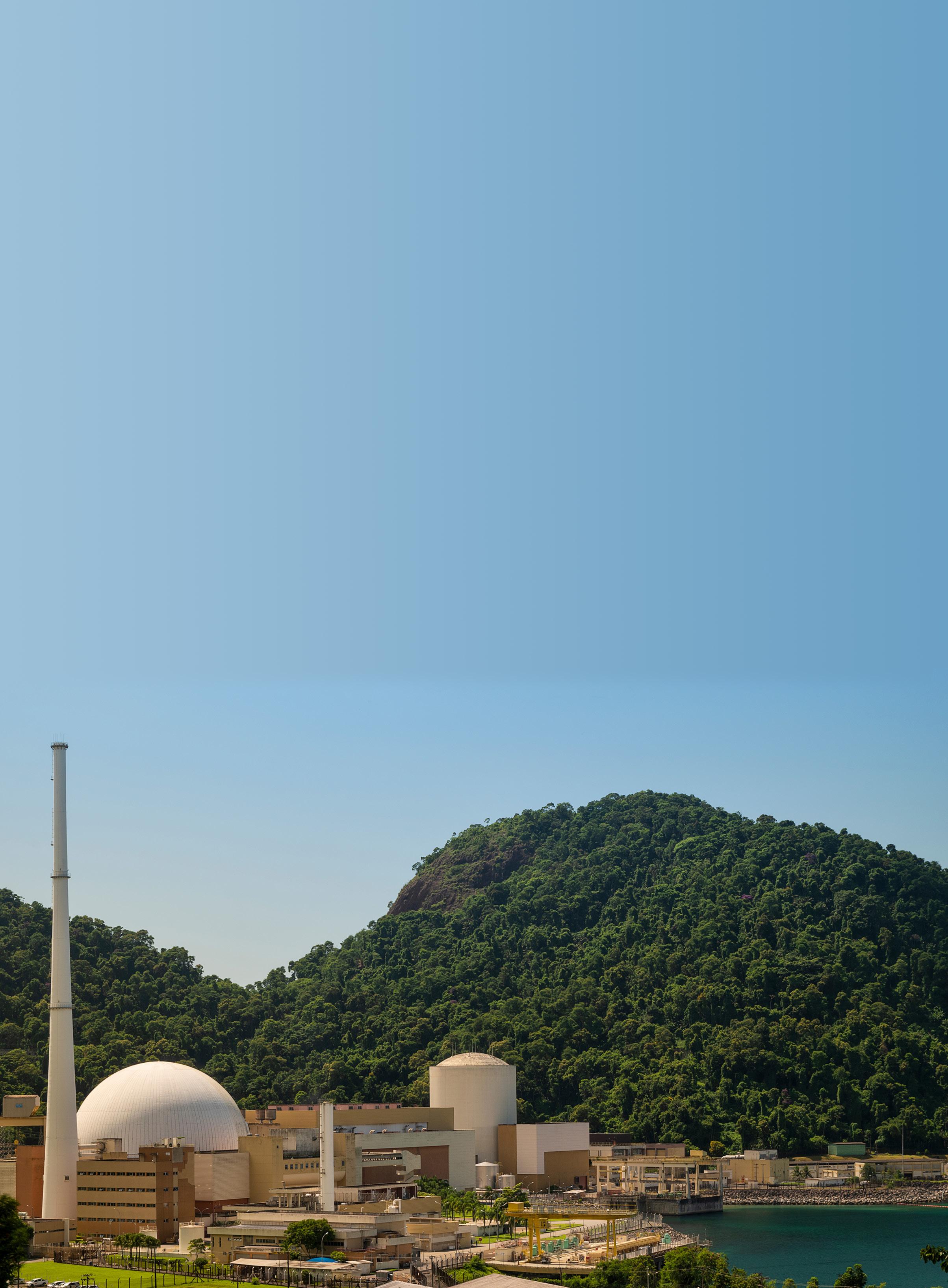
By Simon West
the rest of the world. This will not only transform our energy mix, it will also change Argentina’s export mix. We have an enormous competitive advantage: extraordinary human capital and our own technology.”
As part of the government’s broader push to launch a new nuclear era, officials have also proposed restarting uranium mining and enrichment and even building a “Nuclear City,” a would-be clean energy hub for nuclear-powered data centers in southern Patagonia.
The Angra nuclear plant in Brazil, where nuclear energy is a key element of the country’s long-term energy transition strategy.
Argentina already operates three large-scale nuclear power plants (NPPs), Atucha I, Atucha II, and Embalse, with a combined capacity of more than 1.6 GWe. The facilities supply about 6% of the nation’s electricity. The country’s National Atomic Energy Commission (Comisión Nacional de Energía Atómica, or CNEA), which oversees research and development of nuclear energy in Argentina, is also developing CAREM25, a 29-MWe SMR prototype, at the Atucha plant site at Zarate.
Juan Turner, director and owner of Argentina-based project forwarder Rowners, said he expected project cargo for the buildout of the ACR-300 reactors to move in both directions: imports coming into the country and deliveries leaving it.
Rowners, a member of The Heavy Lift Group (THLG), has valuable experience in the sector. The company’s in-house customs broker supported the Atucha II facility for more than two years, managing the import of critical materials, mainly through air freight, for the facility’s start-up phase.
“There will certainly be import shipments arriving in Argentina to support the project,” Turner said. “And if the technology proves scalable for international markets, there’s potential for export cargo as well. While this won’t happen immediately, we do expect cargo flows both ways. We’re confident there’s room for nuclear energy growth in Argentina and the broader region.”
Brazil Looks Beyond Angra
Brazil, Latin America’s largest economy, also sees nuclear energy as a key element of its long-term energy transition strategy.
State-controlled Eletronuclear operates the Angra 1 and Angra 2 full-scale plants in Rio de Janeiro state and is currently building the Angra 3 facility, although the project has suffered numerous setbacks
Turner, Rowners
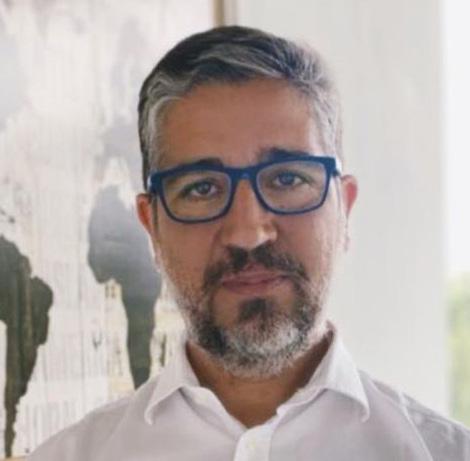
since plans were first drawn up four decades ago to build a third reactor at Angra dos Reis. Eletronuclear said the 1.4-GW plant is 65%complete.
“The completion of Angra 3 remains a central priority,” Leonam Guimarães, CEO of Eletronuclear between 2017 to 2022, told Breakbulk. “Once operational, expected around the early 2030s, it will add significant dispatchable capacity to the southeast grid.”
Guimarães, who currently serves as executive directorate advisor at Amazul, a Brazilian state-owned company that helps develop and manage nuclear and defense technologies, pointed to growing interest in deploying SMRs, especially in remote northern regions with weak infrastructure and variable hydropower. SMRs could also offer low-carbon energy and heat for heavy industries in states such as Pará and Minas Gerais and support clean hydrogen production for domestic use and export.
“While no SMR projects have yet entered the licensing phase, feasibility studies are underway, and Brazilian stakeholders, government agencies, research centers and industry players, are closely monitoring international SMR developments,” Guimarães said. “The country’s near-term focus remains on completing Angra 3, but the medium-to-long-term outlook includes a more diversified nuclear portfolio in which SMRs should play a role.”
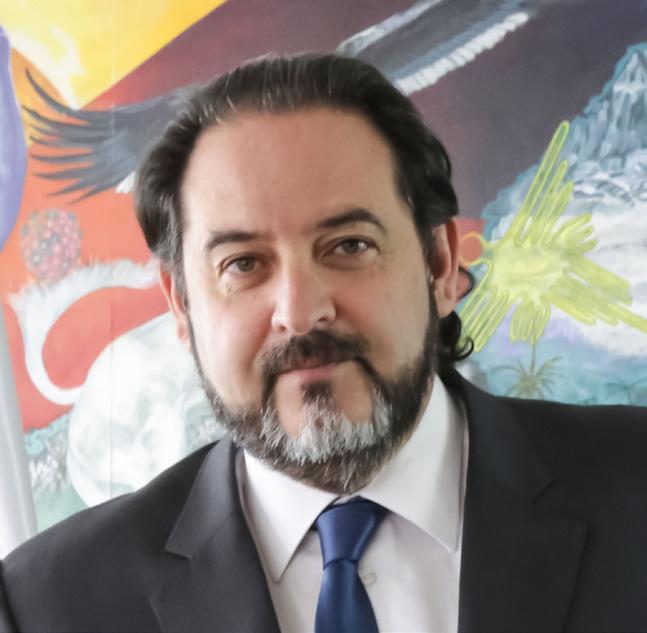
Nuclear Expansion Gap
Promising steps aside, Latin America’s nuclear expansion still lags behind other regions.
According to the World Nuclear Association (WNA), 440 nuclear power reactors are operating across 31 countries worldwide with a combined capacity of about 400 GWe. In 2023 these provided 2,602 terawatthours (TWh), about 9% of the world’s electricity. Latin America accounts for only seven of those reactors, three in Argentina and two each in Brazil and Mexico, with a total capacity of 5 GWe.
Additionally, around 70 reactors are under construction worldwide, with a further 100 planned. Just one of those is in Latin America, Argentina’s CAREM25, the world’s first SMR to reach construction stage. The project has been slated to come online by 2028.
Still, among the 30 countries pinpointed by the WNA that are considering, planning or starting nuclear power programs, seven are in Latin America and the Caribbean: Cuba, Chile, Ecuador, Venezuela, Bolivia, Peru and Paraguay.
Added to that list could be El Salvador, whose lawmakers last year passed legislation to create a regulatory framework for building and operating NPPs. Earlier this year, U.S. Secretary of State Marco Rubio signed a landmark civil nuclear cooperation agreement with El Salvador — the first such deal in Central America.
Andres Rebolledo, OLADE
Juan
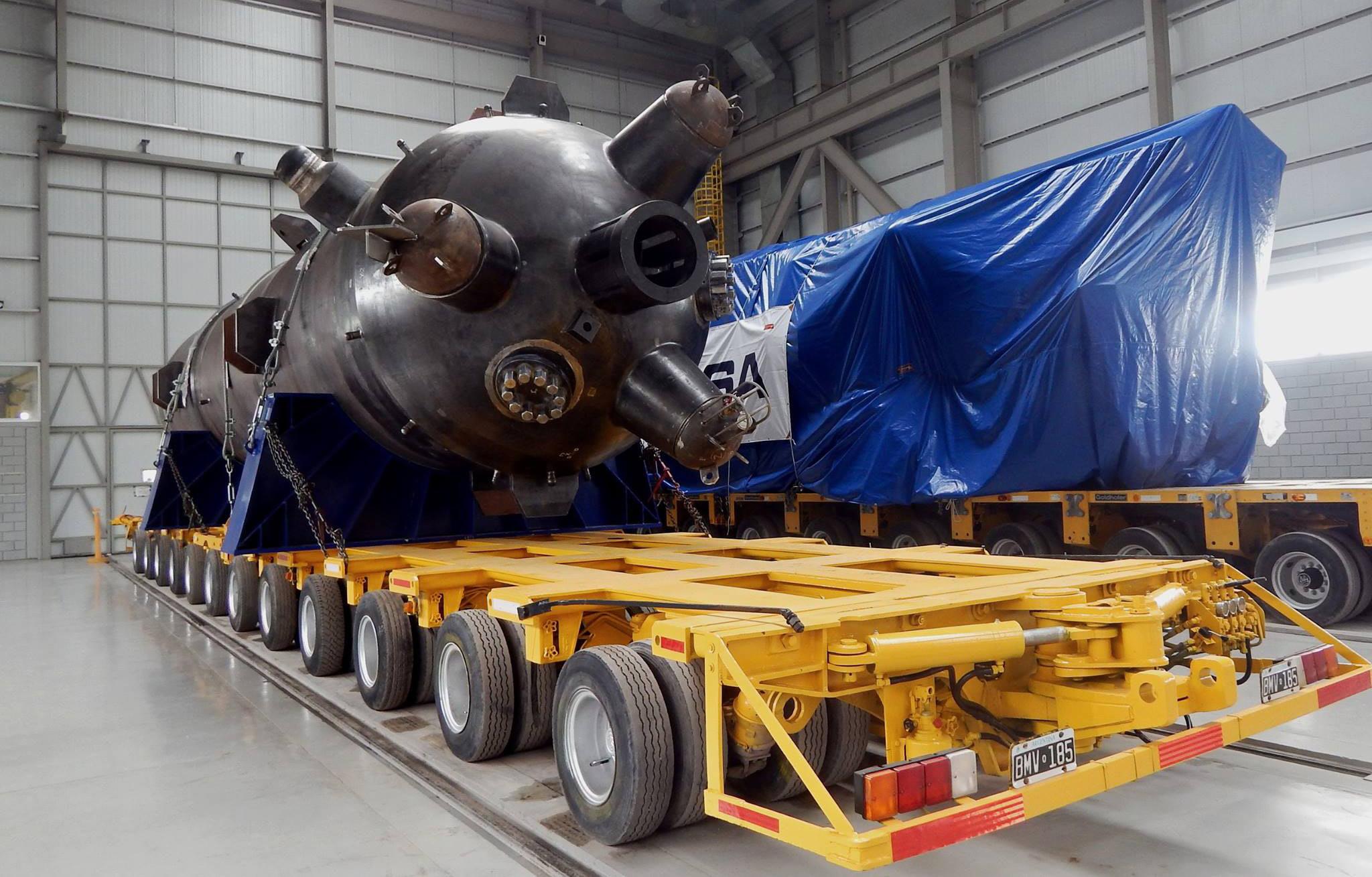
Unlocking the full potential of nuclear power will require the region to tackle several challenges.
Andrés Rebolledo, a former Chilean energy minister and now executive secretary of the Latin American Energy Organization (Olade), said priorities include updating regulations to align with international safety standards and streamlining the permitting system for new projects, particularly SMRs. Innovative financing models, including public-private partnerships and government guarantees, will be key, he said, alongside regional cooperation and support from bodies such as the International Atomic Energy Agency (IAEA).
Rebolledo pointed to the “significant advantages” of SMRs for Latin America, citing lower upfront costs compared with traditional gigawatt-scale reactors, modular designs that enable phased deployment, and easier installation in hard-to-access locations.
Infrastructure Constraints
Among those eyeing SMR deployment is Colombia, a country anxious to offset an over-reliance on hydro power, which accounts for about 70% of its electricity output. In its latest national energy plan, the
government included proposals to add up to 1.8 GW of nuclear capacity by 2052, specifically through advanced technologies such as SMRs and hightemperature gas-cooled reactors (HTGRs), a type of reactor designed to produce very high-temperature heat, typically above 700°C.
The country is working with organizations including the IAEA and the U.S. Department of Energy to expand the know-how and infrastructure to kickstart its nuclear transition.
Jorge Cassalins, business development manager at Colombiabased heavy-lift specialist Kando Global, also a member of THLG, said the country faces some major hurdles in developing a nuclear energy supply chain. Its success, he explained, will depend on securing a steady supply of components and services from technology providers and system integrators to equipment makers, subcomponent suppliers and raw material producers.
are highly desirable for nuclear energy projects,” Cassalins said.
Developing a skilled workforce is also a critical step for Colombia’s nuclear ambitions, he added, with human resource development needed long before plant construction and operations begin. Encouragingly, a new introductory course on NPPs and emerging technologies is being developed at one of the country’s top universities.
“We are taking the first baby steps towards nuclear energy academics, but we do need more sturdy and skilled university programs,” he said.
In Colombia and other countries across the region, particularly those without prior nuclear experience, closing these gaps will be crucial to unlocking development.
Worldwide, the WNA has estimated a mouthwatering US$2 trillion investment opportunity for the global nuclear supply chain over the next 15 years. “I think Latin America will account for quite a small segment of that,” said Henry Preston, media and communications manager at the WNA. “But there’s still a massive opportunity.”
Gaps in the transport system pose a significant challenge as well, with 74% of freight transport relying on roads and nearly half of the country’s 3,500-kilometer rail network inactive. “Colombia is very dependent on road transportation, and alternate options *Breakbulk Exhibitor
Colombia-based Simon West is senior reporter for Breakbulk.
A steam generator built by IMPSA was delivered to Argentina’s Embalse NPP.
Credit: CNEA
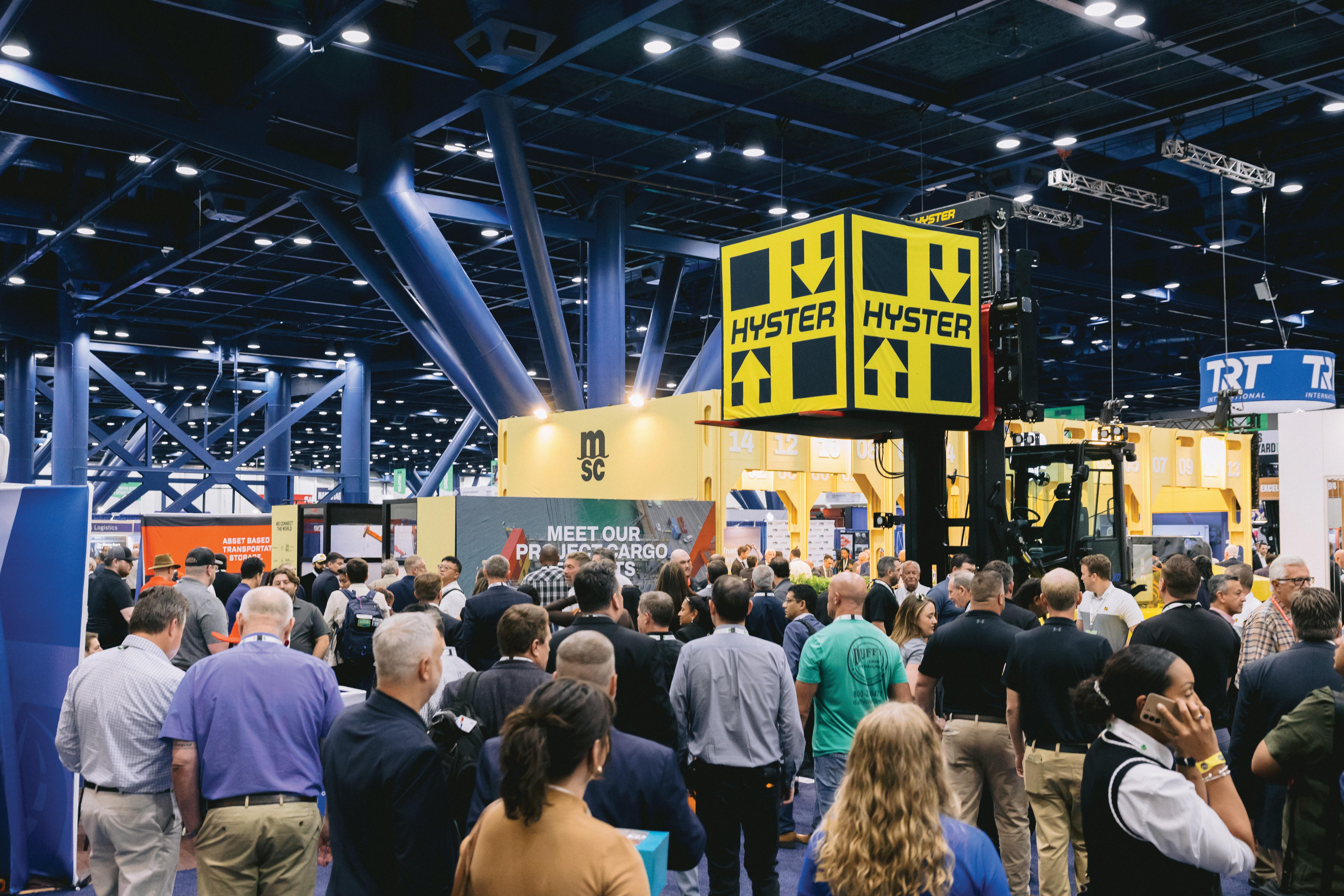
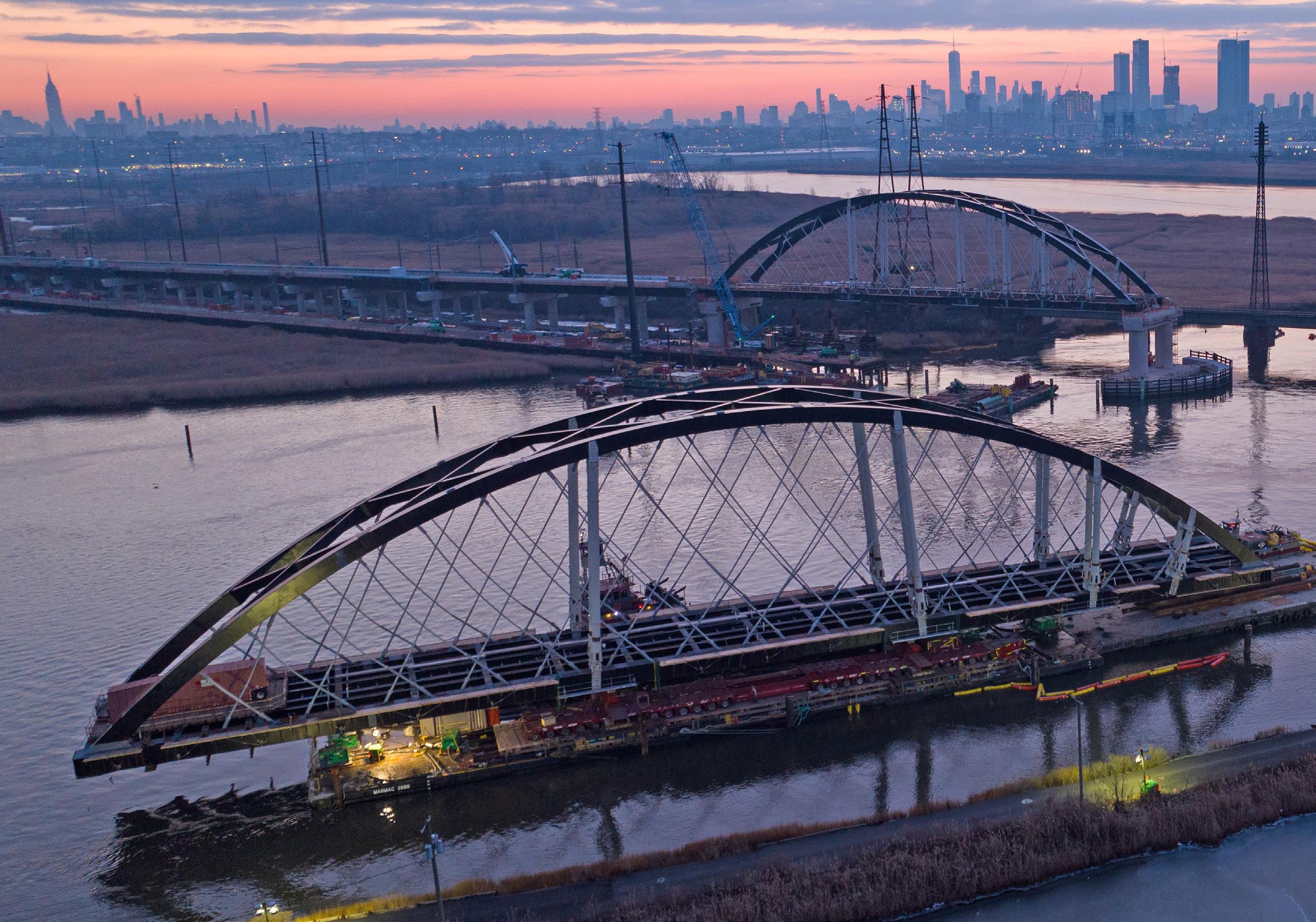
HEAVY LIFTING BREAKS THE BOTTLENECK
Mammoet Raises Massive Arches for $1.6B Rail Upgrade
Contracted to execute the heavy lifting scope for the replacement of the century-old Portal Bridge over the Hackensack River in New Jersey, Mammoet has played a critical role in a US$1.6 billion effort to modernize one of the busiest rail routes in the U.S. Working alongside construction joint venture partners SkanskaTraylor and Carver Marine, Mammoet
supported the installation of a new two-track, elevated fixedspan structure — known as the Portal North Bridge — to replace the outdated swing bridge.
The crossing handles up to 450 trains and 200,000 passengers each day, making it one of the most active sections of rail in the country and a longstanding bottleneck on
By Malcolm Ramsay
the Northeast Corridor between Newark and New York Penn Station.
“Communication and coordination were a strong focus on this project,” Sidney King, project manager for Mammoet, told Breakbulk . “Mammoet worked in close collaboration with Skanska-Traylor Joint Venture, Carver Marine, and other project stakeholders throughout all phases


of the operation. This proactive, transparent approach helped the project team stay aligned and adapt quickly to changing conditions.”
Running roughly parallel to the Hudson River, the Hackensack River is a vital commercial channel for the New Jersey–New York region. The Portal Bridge has long served as a critical rail crossing, but its advanced age and outdated swing mechanism have caused persistent delays for
both Amtrak and NJ Transit services.
The bridge upgrade forms part of the Gateway Program, a longterm infrastructure initiative led by Amtrak and New Jersey Transit to expand and improve the reliability of the entire Northeast Corridor between Newark Penn Station and New York Penn Station.
“The new Portal North Bridge is a key component of the signature US$16.1 billion Gateway Program,” said a spokesperson for infrastructure consulting firm AECOM, which provided construction management services for the project as part of a JV with consulting group STV.
High-Tech Modeling
To model the complex bridge replacement, Skanska-Traylor relied on an array of advanced technology, utilizing 3D Building Information Modeling (BIM) alongside
EarthCam setups and real-time monitoring systems. This allowed the team to verify performance and maintain phasing discipline, especially important given the site was surrounded by water, rail lines, areas of contaminated soil, and dense urban buildings.
Tasked with making the build as cost efficient and speedy as possible, Skanska-Traylor calculated that assembling the three new arches on land instead of over water would save over US$10 million on temporary foundations and falsework, as well as saving around 33% on labor. This approach also solved many safety issues as crew could assemble the components in a more controlled environment on land.
The downside of this approach, however, was that the massive units would need to be floated to the site and then lifted into position, sometimes with less than an inch of tolerance either way.
“Precision was critical throughout,” said Larry Guli, director of survey at Skanska USA Civil, noting that the survey team helped coordinate across all activities and that “we were within a 16th of an inch in the worst cases.”
The technical challenges in achieving this monumental infrastructure project were immense and involved several major project cargo moves, not least the installation of three giant arches, weighing over 2,200 tonnes each.
“It is a focal point for us, and New York looks at it that way too,” said Dan Payea, senior vice president of operations for Skanska USA Civil.
“You cannot close waterways in the U.S., which makes going over an active waterway particularly challenging. It was much more economical to build three separate bridges elsewhere, and we installed them on big jacks before lifting them into the final position.”
Leveraging their extensive experience in bridge installations,
Sidney King, Mammoet
The massive units forming the new bridge had to be floated to the site and then lifted into position.
Credit: Mammoet


Mammoet began the project by developing a detailed plan to plot the delivery of each section. Given the dense urban development that surrounds the bridge, the logistics of transporting the massive bridge sections to the site was not straightforward and the route had to be chosen to minimize disruptions and ensure efficient installation.
For this reason, the bridge sections were assembled at the Port of Coeymans, near Albany, some 130 miles north in upstate New York. The location was strategically chosen for its access to the Hackensack River and its ability to accommodate the large-scale assembly of the bridge sections. However, the distance from the site meant that the components would make a 30-hour journey downstream, and had to be carefully maneuvered past 19 bridges along the river.
River Transfer
To achieve this, the bridge sections were loaded onto barges at the Port of Coeymans for transit down the Hudson River
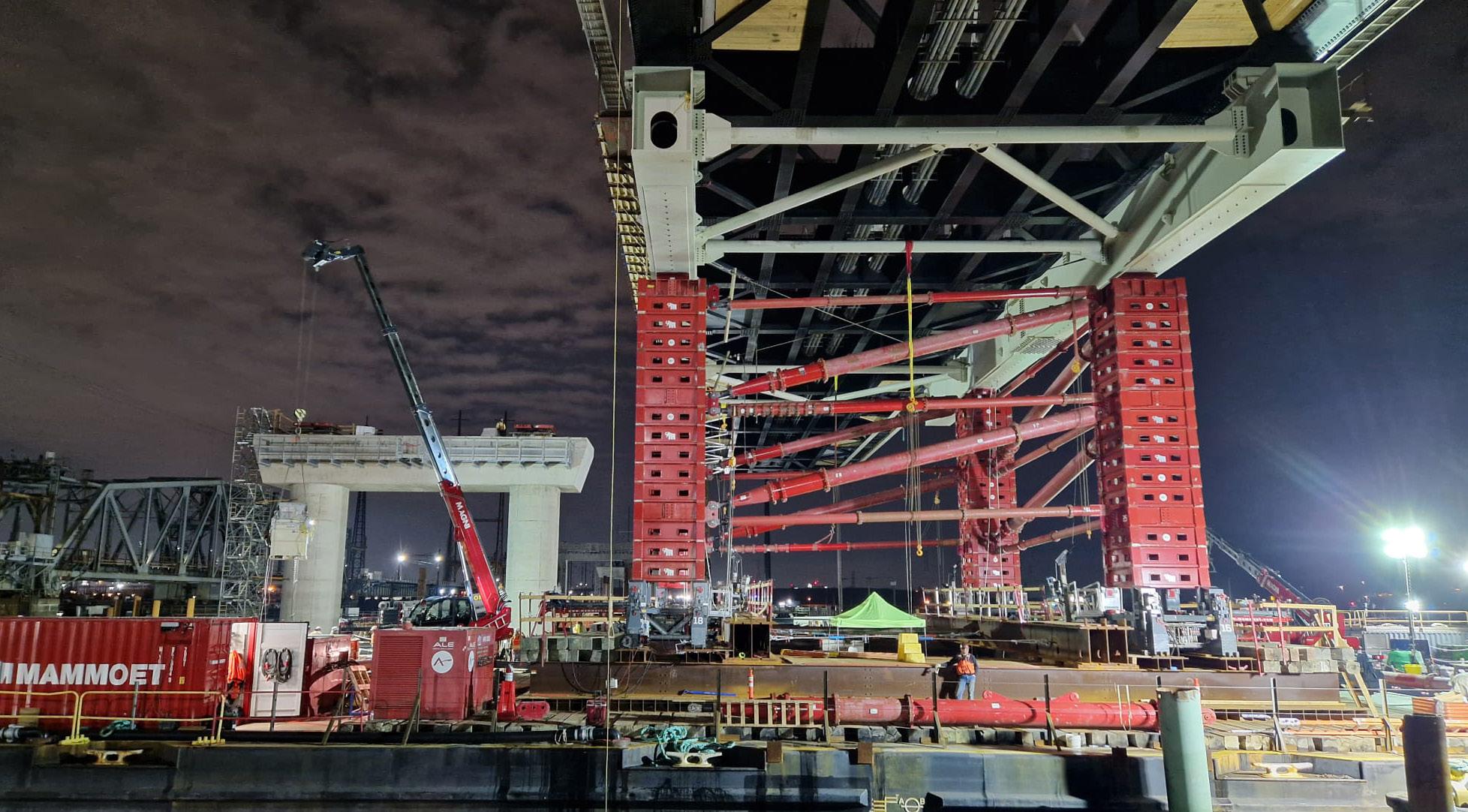
The technical challenges in achieving this monumental infrastructure project were immense and involved several major project cargo moves. Credit: Mammoet
The pieces were lifted into position, sometimes with less than an inch of tolerance. Credit: Mammoet
The bridge sections were loaded onto barges at the Port of Coeymans for transit down the Hudson River. Credit: Mammoet
to a temporary mid-river staging area called the transfer bent.
“One of the key contingencies we had to plan for was tide,” King explains. “Tidal variations impacted nearly every phase of the project – from roll-on at the Port of Coeymans, to temporary staging on the mid-river transfer bent, to final installation of the bridge sections.
“To mitigate this risk, the client performed daily tidal measurements well in advance of the operations. Roughly one week prior to each major move, Mammoet and the project team would analyze this data to make educated assumptions about the target windows for safe operations.”
Made of structural steel, the huge arches were painstakingly constructed at a yard in Coeymans, with teams from AECOM, STV, and Traylor Bros helping to oversee the project management.
Based on a tied arch system, the design allows the bridge to rise 50 feet over the river, providing sufficient clearance for maritime traffic without the need for a movable span. For transport from the yard, Mammoet utilized Self-Propelled Modular Transporters configured in a four-train setup, using a total of 112 axle lines with eight tires per axle line.
“Each axle line had a capacity of 40 tonnes, providing the mobility and load capacity needed to safely transport bridge sections – each over 120 meters (~400 ft) in length – from the assembly site at the Port of Coeymans to the rollon location,” King notes. “All the equipment choices were driven by the need for high-capacity handling, adaptability to tidal variations, and strict accuracy requirements.”
Precise Control
Having arrived by barge at the temporary transfer bent, the next phase for delivery of each arch was to move it onto a secondary barge
equipped with Mammoet’s Mega Jack system. The heavy-lift solution is designed to manage massive loads with unparalleled precision and is composed of multiple jacking towers which can be strategically configured to lift and position large structures.
For this project, its position on the back of the barge meant that the arches could be floated into position then jacked up in place.
“Mammoet selected the Mega Jack as it provided a superior degree of stability, speed, and safety compared to traditional climbing jack systems. The Mega Jack allowed us to jack the bridge sections 14–16 cassettes high, giving the project team precise control over final positioning,” King explains.
“Additionally, the Mega Jack was configured with contingency cassettes that allowed us to adjust for changing water levels. The fast operation of the Mega Jack was crucial for managing short tidal windows and ensuring precise, stable placement of the bridge sections.”
Alongside the calculable changes due to tides, Mammoet also had to contend with plummeting winter temperatures, bringing freezing wind and ice.
“Weather was a significant challenge, especially during the winter phases of the project,” King recalls. “High winds and extremely cold temperatures required additional precautions to maintain safety and equipment reliability. During these periods, snow was cleared from the barges prior to operations and heaters were used on critical equipment to ensure proper functioning.”
Lateral Positioning
To further mitigate risk for the move, it was necessary to schedule adjustments to take advantage of more favorable weather windows, as well as planning for shipment
at night when the waterway was quieter. Through a collaborative approach with other stakeholders, this allowed the project to maintain momentum and deliver safe, effective results, despite the environmental challenges.
“Prior to each major operation, Mammoet participated in daily planning meetings with the client to review updated weather and tidal forecasts and to jointly determine go / no-go thresholds – particularly for wind and tide conditions,” King notes, adding that Mammoet was “also actively involved in developing and refining the project schedule, providing recommendations to enhance operational efficiency.”
A further element in the project plan that eased delivery was the addition of Mammoet’s slide track system for installation of the East and West bridge sections. This enabled fine lateral positioning of the spans onto their permanent columns.
New Jersey Governor Phil Murphy welcomed the milestone, saying: “Together, we are transforming the Portal North Bridge into an access point that will provide our rail passengers with a more reliable commute, and our entire region with economic opportunity.”
With the third and final network tied arch successfully installed, the outline of the new bridge structure is now clear, and this has allowed construction to progress to “the installation of catenary poles, ballast, tracks, and power wires” a spokesperson for NJ Transit said.
The Portal North Bridge replacement project is expected to be completed in late 2027.
Based in the UK, Malcolm Ramsay has a background in business analysis and technology writing, with an emphasis on transportation and ports.
*Breakbulk Exhibitor
FROM THE FORWARDING FRONTLINES TO ENERGY STORAGE SPECIALIST
By Luke King
Fluence’s Lorena Alvarez on Her Move From Service Provider to Shipper
Few logistics teams can be as wellequipped as the one led by Lorena Alvarez, senior logistics operations manager for the Americas at Fluence, a global leader in battery energy storage systems. Her entire group, she says, is composed of former freight forwarders — a strategic advantage in a complex, high-pressure supply chain where experience can make or break a project’s success.
“We know all the tricks,” she jokes, “but that works both ways. It allows us to catch different things that may be coming our way, but it also allows us to work better with the freight forwarders and the different carriers, understanding the scope of their work and not expecting them to do something that is just not possible.”
Born in Nicaragua, Alvarez moved to the U.S. as a newlywed and soon found herself drawn into logistics. She started out at a family-owned forwarding firm in Florida, which opened the door to a career spanning more than two decades with some of the industry’s biggest names, including Panalpina, DHL, Kuehne + Nagel, Rhenus Project Logistics and Fracht
“I studied international relations and I wanted to be a diplomat, which didn’t work out,” she says. “I have family members who had a small forwarding company in the

committed to accomplishing a mission.

Demonstrating the importance of personal connections in the project cargo sector, Alvarez reveals she left forwarding in January 2022 in order to join her friend and mentor Agustin Harriague, who was then director of logistics at Fluence (and is now employed at Mitsubishi Power Americas).
“I’ll be very honest, I always wanted to work with Agustin,” she said. “I enjoyed working with him when I was at Fracht and he was my customer at Siemens Energy
“He’s tough, but he’s been a huge mentor, even though he’s younger than me. He taught me so much, and I wanted to continue the experience that I had with him, as he was able to impact the way I saw things and really bring another level of excellence to the projects we were working on.
“Going to the shipper’s side was not necessarily in my purview, in fact I wondered if it might be boring. I was used to solving problems all day long, that’s what you do in forwarding. Well, it turns out that Fluence has a plethora of internal customers, and there has never been a boring day!”
Logistics Challenges
Today, Alvarez helps manage the safe, timely, and often delicate transportation of Fluence’s energy storage systems, including lithium-ion battery enclosures and supporting components, to project sites across the Americas.
In her current role, the toughest logistics challenges aren’t necessarily about size or weight. More often, they involve the sensitivity of the cargo, and the remoteness of customer sites. Chief among the complexities is the material at the core of energy storage: lithium-ion batteries.
“In the U.S., there’s no federal guidance around the transportation and storage of lithium-ion batteries” she said. “So we take it upon ourselves to do hazmat consulting, make sure that we have contingency plans for battery storage and so on, to
reassure not only the warehouses and our logistics partners, but also our insurance companies.”
This regulatory ambiguity has created uncertainty across the supply chain. “Steamship lines are sometimes nervous about it, we understand that. They may not want to take large amounts of batteries on their vessels and we have to work around that.
“It’s a matter of working with all of our providers and sort of splitting the pie so we can keep things moving. You’ll see us charter vessels sometimes. Ultimately, I think there needs to be more education around lithium-ion batteries because the lack of guidance does sometimes create uneasiness for the people handling it.”
The complexity of Fluence’s deliveries varies widely, but some are particularly demanding, such as a recent job in the Chilean mountains that tested Alvarez’s team. “We work in locations where these heavy enclosures are hard to deliver,” she said. “There are sites that are mountainous, and you may have different roadblocks that prevent smooth transportation.
“We face numerous obstacles. Even though we’re not moving a huge turbine or generator or whatever, our units still require a lot of planning, a lot of surveying, making sure we can go on the roads we need to. In many places in Latin America, even here in the U.S., in fact, we aren’t always working with fully-developed roads.
“If I may say so myself, I do think that the logistics teams we have at Fluence are very robust, having come from the forwarding industry. Our customers can rest easy knowing that we’re going to deliver their product and that we’re going to find the best possible way.”
Incentives Drive Local Content
Fluence, an early pioneer in gridscale storage, now finds itself in an increasingly competitive landscape, along with evolving policy frameworks
SmartStack is a high-density, factory-built battery unit that can store more energy in a smaller footprint.
Credit: Fluence
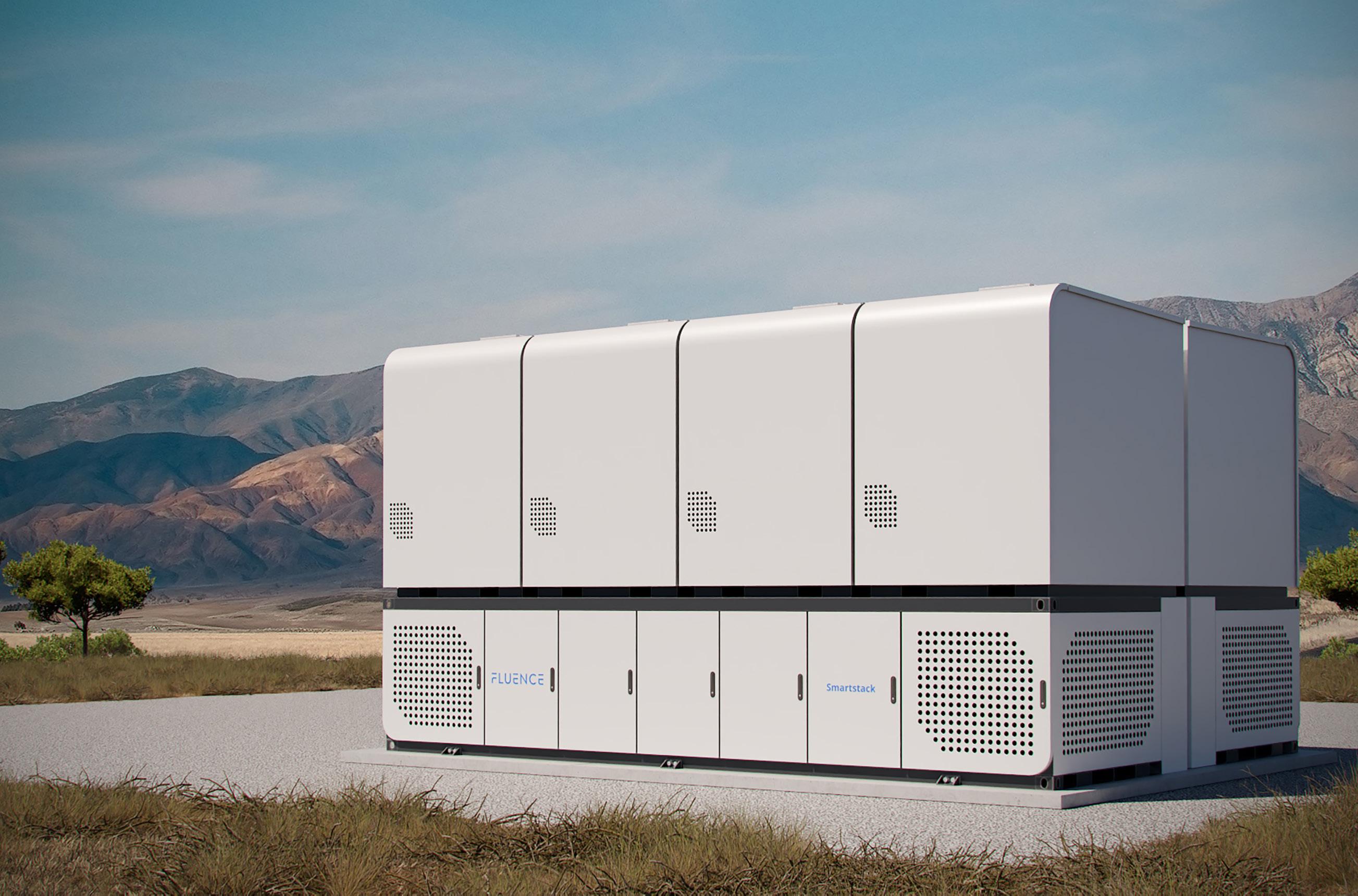
designed to promote domestic content. It recently hosted U.S. Senator John Curtis (R-UT) to its Utah facility that produces battery modules, and says its investment in U.S.-based manufacturing has been “accelerated” by the availability of federal tax credits.
Accordingly, the company is ramping up domestic manufacturing facilities in Arizona, Texas, Tennessee and Utah, which supply cells, modules, enclosures, thermal management systems and battery management systems.
And while manufacturing in Asia remains important for non-U.S. markets, the trend is clear. “A lot of it will come to the States,” Alvarez said.
“This didn’t just start recently,” she said. “This has been going on since before I started. By early 2022, we had already identified a location for the first contract manufacturing facility in the U.S.”
What has changed in recent months is U.S. trade policy, particularly as it relates to tariffs. “I think these times call for a more strategic procurement effort and creative
shipping solutions,” says Alvarez. “It’s not so different from COVID, really.
“Thankfully, right now we’re in a pause, and so it’s a matter of making sure that we take advantage of that tariff pause as much as we can. Our focus on domestic content has helped us tremendously because we have a lot being built here in the Americas now. That has definitely been a positive for us.”
Looking ahead, Alvarez says she is particularly excited about SmartStack, a new energy storage system launched by Fluence in February 2025. Designed for large-scale power projects, SmartStack is a high-density, factorybuilt battery unit that can store more energy in a smaller footprint, up to 7.5 megawatt-hours per enclosure.
The system aims to make grid battery installations faster, easier and cheaper by simplifying transport, setup and maintenance. “This is significant because it’s going to change the way that we’re shipping this enclosure,” said Alvarez.
“We’re used to shipping an enclosure as a whole, and now it’s going to be modular so we’ll be
able to ship it in pieces, which is amazing. It will make it easier and faster to ship, but of course there will still be customer locations that are hard to get into, so that level of planning won’t go away.”
As our interview draws to a close, I ask Alvarez about her experience navigating a male-dominated industry, and she doesn’t hesitate to offer some parting advice to women in logistics.
“I come from a place where it was very sexist, my father was a very sexist person. When I told him I was going to play soccer, he said: ‘Absolutely not. That is a man’s sport!’ So what did I do? I started playing soccer, of course.
“He never came to watch me play, but I did it anyway. So, if you want to accomplish something, you do it, regardless of who’s telling you otherwise. What I learned from my childhood was to be strong, do the right thing — and say your piece.”
Involved in the project cargo industry since 2007, Luke King is a regular contributor to Breakbulk magazine.
*Breakbulk Exhibitor
*BGSN Member
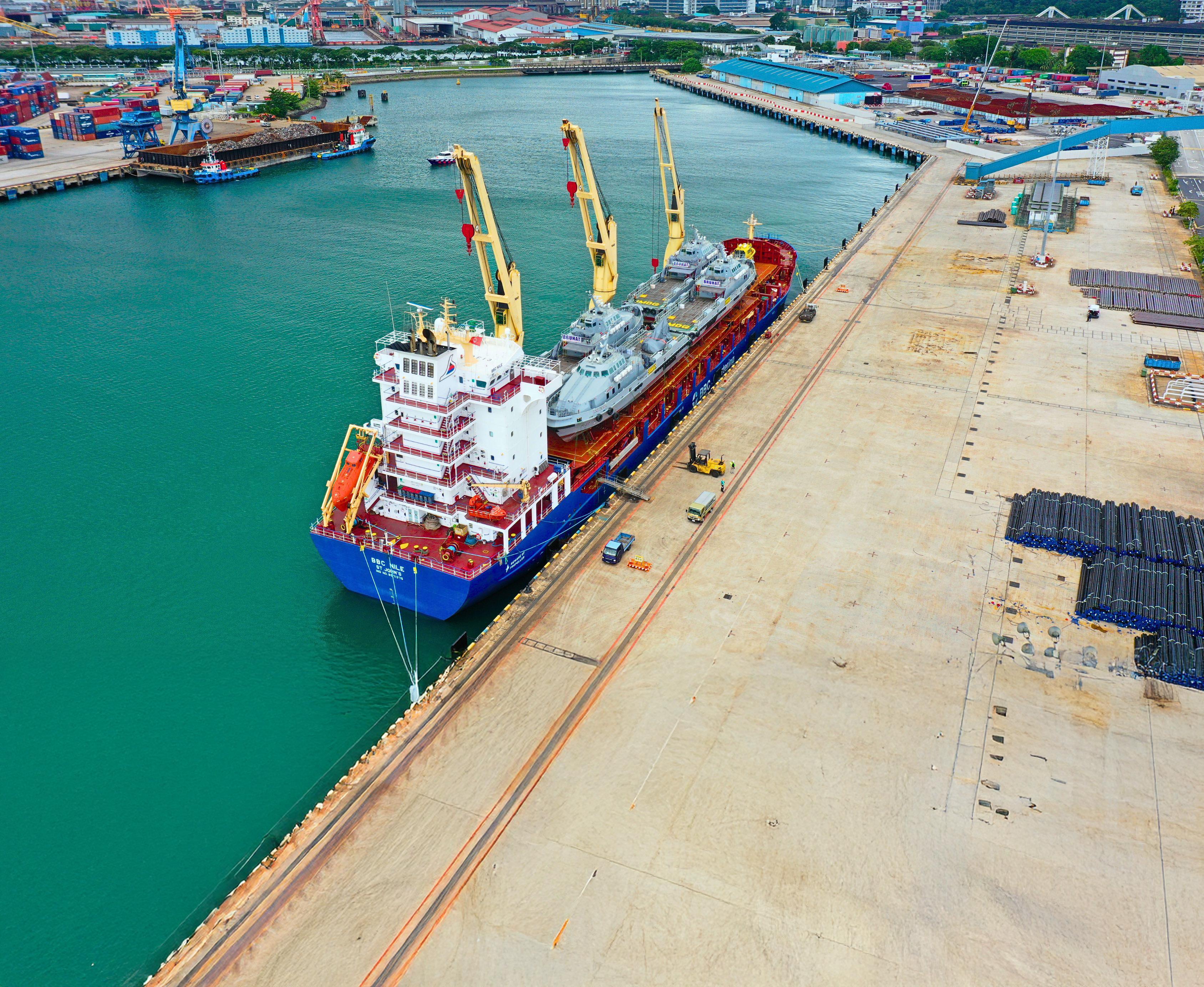
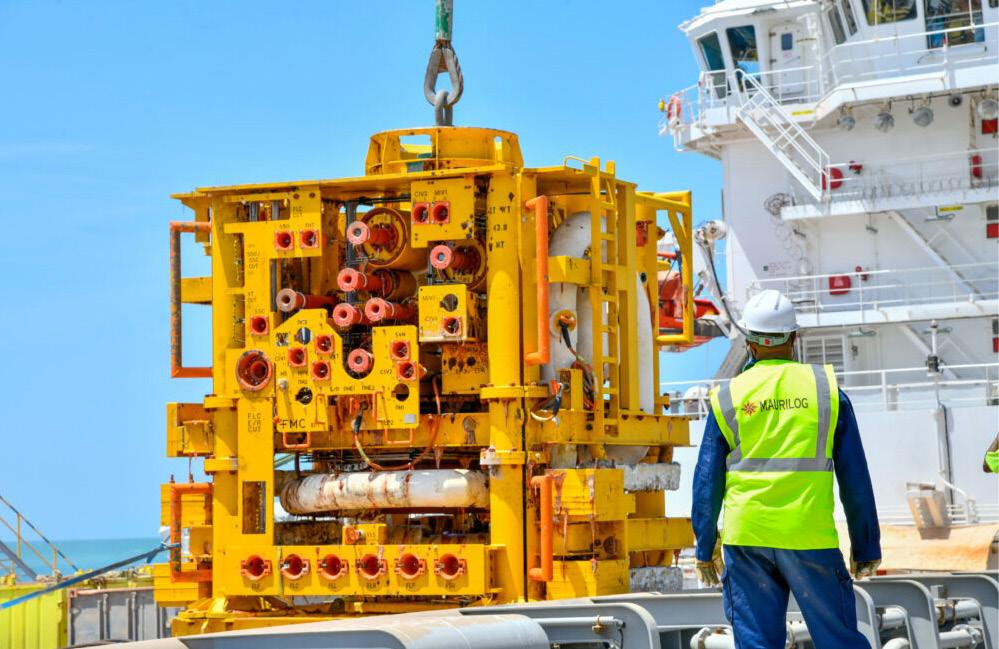
NORTH AFRICA GAINS GROUND AS TRADE FLOWS SHIFT SOUTH
Port Upgrades, Trade Corridors and Foreign Investment Are Redrawing Supply Chains — but Security Threats Loom
From new ports and railways to free zones and road corridors reaching deep into the west of the continent, countries in North Africa are investing heavily to position themselves as a critical hub linking Europe, SubSaharan Africa and the Middle East. Morocco, Egypt and Algeria are at the forefront of this shift, capturing volumes that once moved through Southern European ports. The result is a reconfiguration of traditional trade lanes and growing confidence among global investors and logistics operators in North Africa.
A member of
The momentum is promising, but not without obstacles. Geopolitical tensions in Libya and Sudan, the Red Sea crisis and inconsistent customs systems threaten to slow progress. And while initiatives like the African Continental Free Trade Area (AfCFTA), which aims to create a single market among its more than 50 signatories, signal long-term integration, the real impact will take time.
“It (AfCFTA) really is still in its inception phase and simply not mature enough yet to make a difference to trade barriers and other
By Liesl Venter
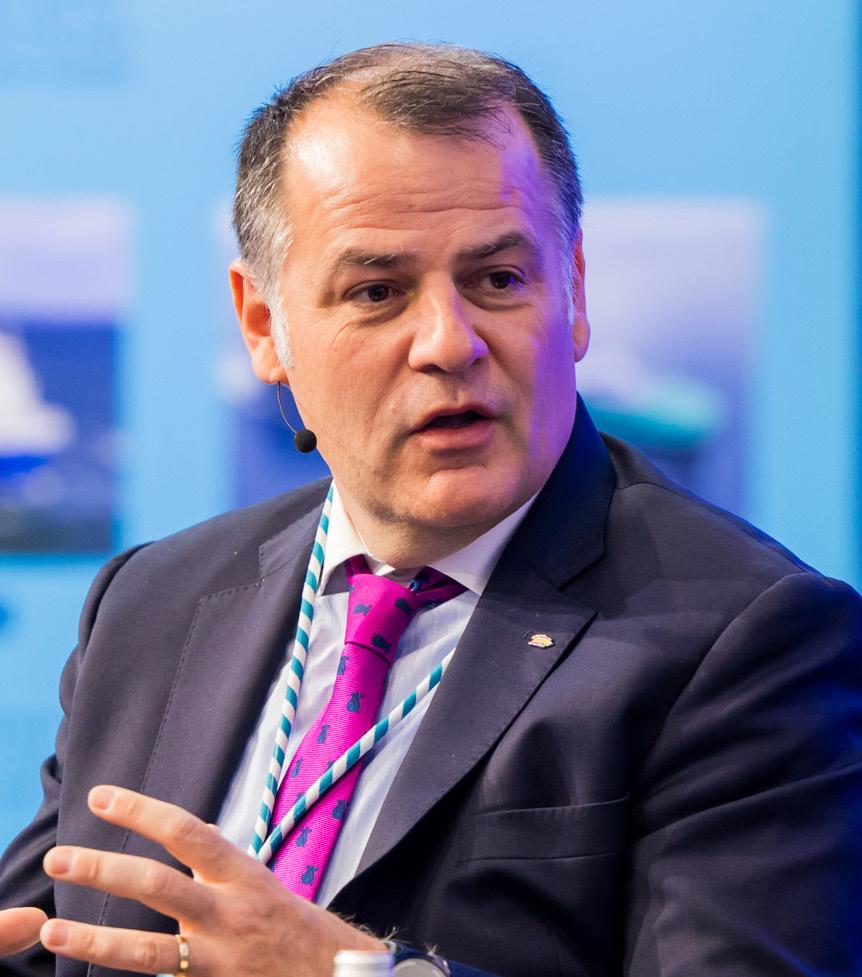
Rafael Vicens, DB Schenker.
Top:
Maurilog’s project team oversees the handling of breakbulk in Mauritania. Credit: Maurilog
Credit: Richard Theemling Photography
challenges faced by operators in Africa,” said Rafael Vicens, head of Global Projects & Industry Solutions MEA at DB Schenker Middle East.
But Ahmed El Dahshan, managing director at Khedivial Marine Logistics , said the agreement was already influencing investment trends across the continent. “Knowing that you can invest in a specific country and then export to another is an important aspect. It will facilitate infrastructure and logistics development.”
Region on the Rise
Few would deny the continent still has a long road ahead to realize the full potential of AfCFTA, which hopes to eliminate not only tariffs, but the many other barriers that hinder intracontinental trade. Yet, North Africa is already making significant strides, facing challenges head-on and laying the groundwork for long-term growth.
According to El Dahshan, North African countries are not only reshaping their trade corridors, but also driving major infrastructure development while attracting investment across key sectors such as energy, mining, industry and construction.
“The drivers of this transformation are Morocco in the west and Egypt in the east,” he said. “The projects taking place are extremely influential in terms of development and there is significant investment in key ports and other infrastructure.”
One of the biggest developments has been the upgrade and expansion of the Tanger Med Port, situated on the slope of the Strait of Gibraltar, about 40 kilometers from the city of Tangier, in Oued Rmel, northern Morocco. Following large-scale investment, the port is considered one of Africa’s largest and most advanced, a critical hub linking Africa, Europe and the Americas. On the other side of the continent lies Port Said at the northern entrance of the Suez Canal.
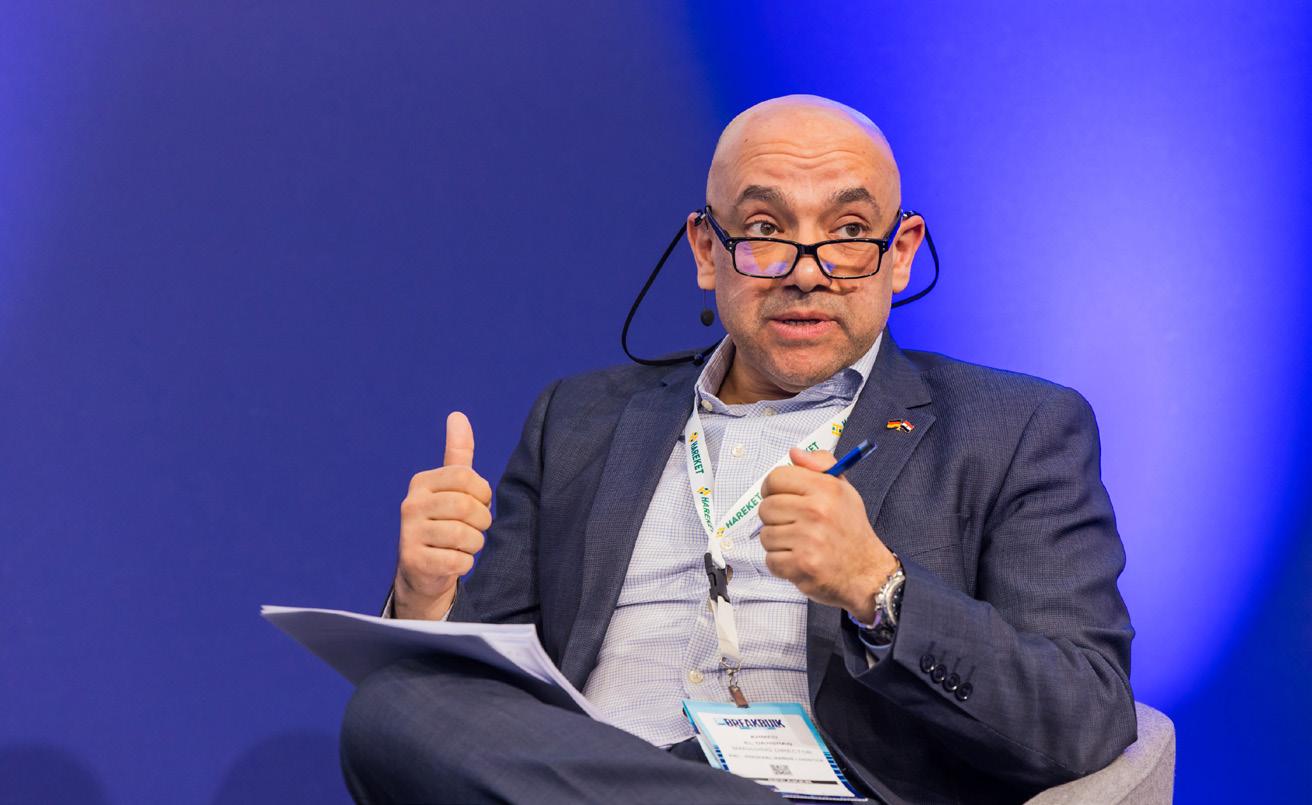
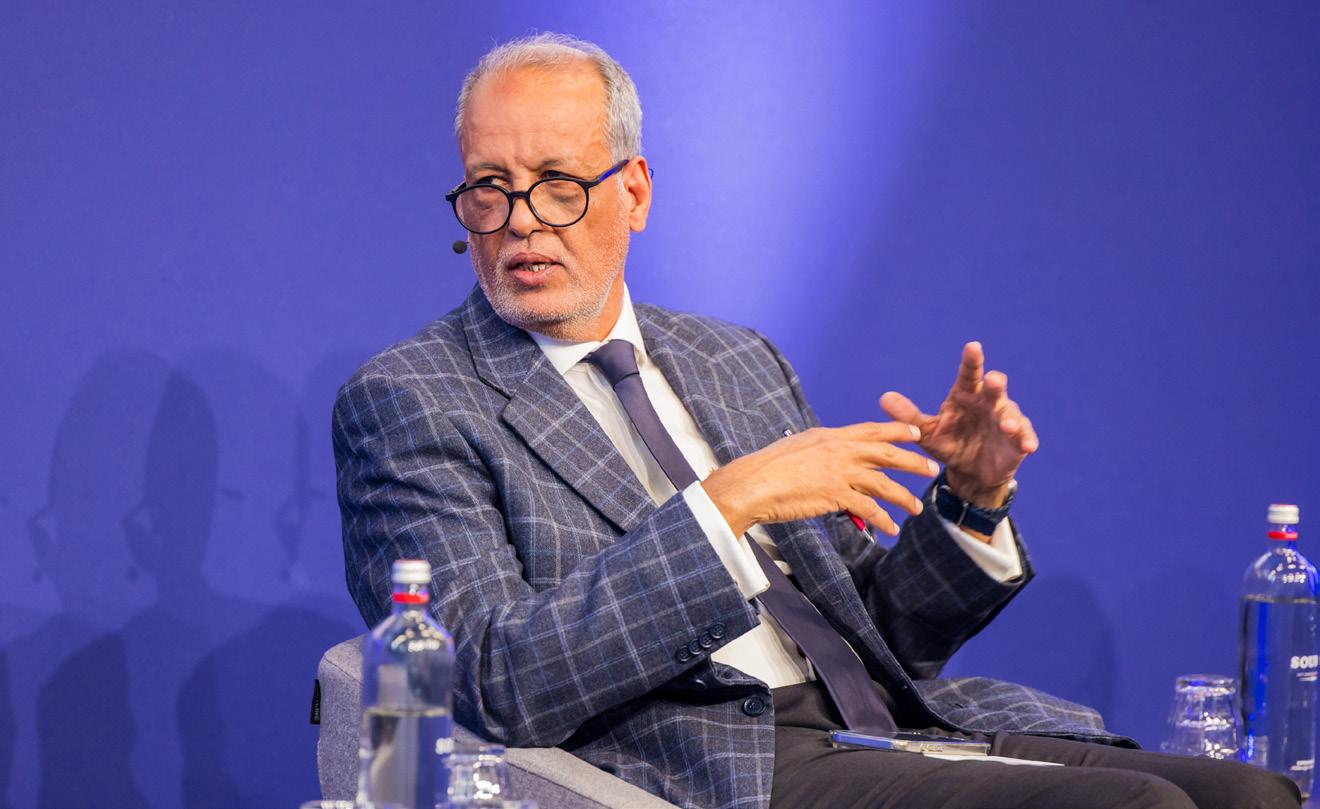
“The Suez Canal is naturally a vital maritime choke point and its surrounding Economic Zone has become a major focus of development,” said El Dahshan. “Egypt has invested heavily in this area and successfully attracted foreign direct investment from Europe, China and even Russia.
“Investors are leveraging Egypt’s strategic location, along with its extensive network of free trade agreements across Africa, the Arab world, Europe, the United States and South America. This unique positioning makes Egypt an increasingly attractive hub for global trade and manufacturing.”
In Algeria, construction of
the new deep-water Port of El Hamdania near Cherchell continues, creating yet another important regional hub development. “It is not just ports that are getting attention, but also road networks and railways,” said El Dahshan.
“The Trans-Maghreb highway and railway projects are just as significant and will connect Morocco, Algeria, Tunisia and Libya. Ongoing investment in dry ports and inland logistics hubs are also worth mentioning.”
Algeria is also investing in its road infrastructure and construction is underway on a new link to Mauritania. Stretching around 840 kilometers, the road will provide much-needed improved transport connections.
Credit: Richard Theemling Photography
Ahmed El Dahshan, Khedivial Marine Logistics
Mohamed Abdellahi Yaha, Maurilog
Credit: Maurilog
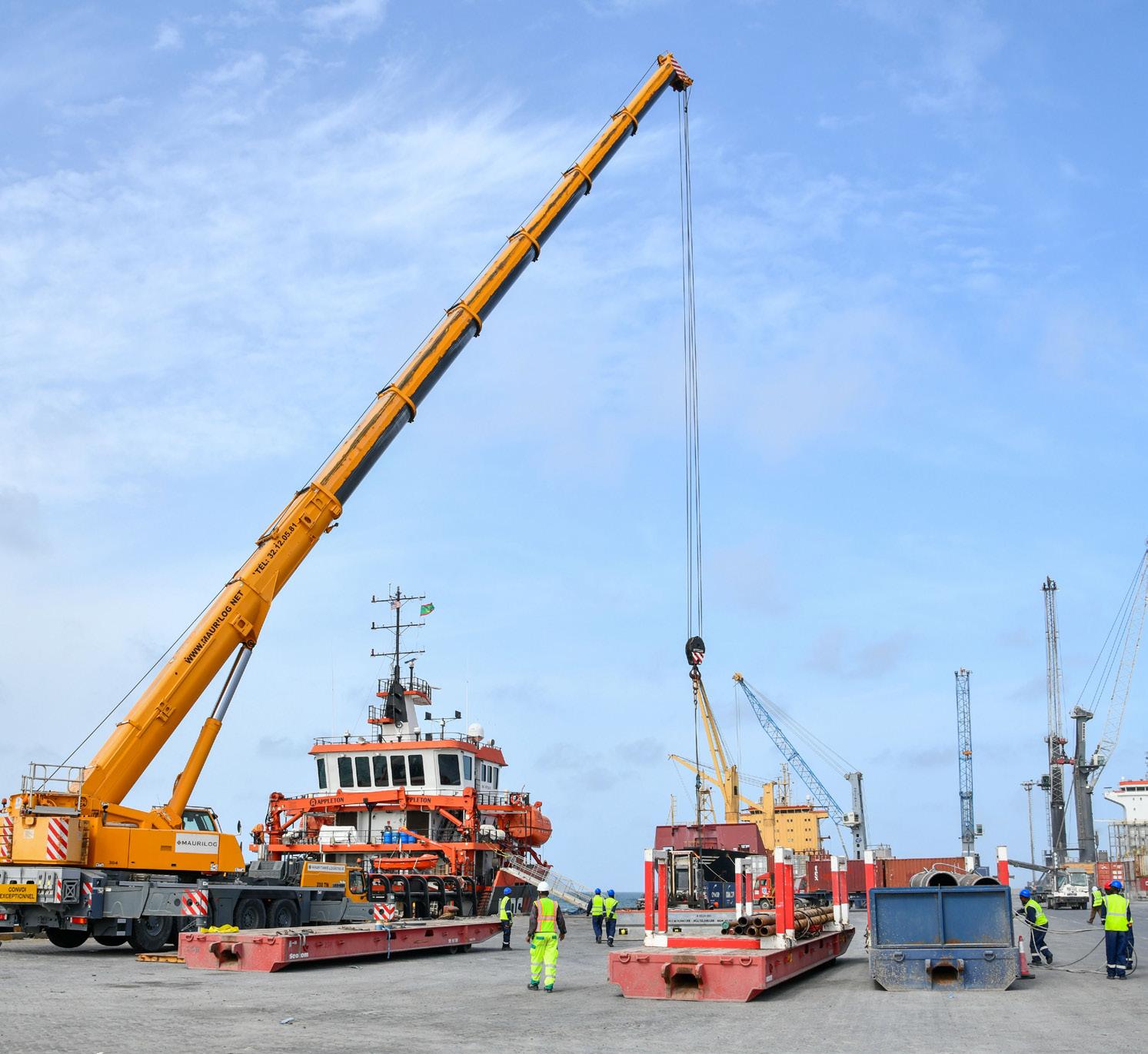
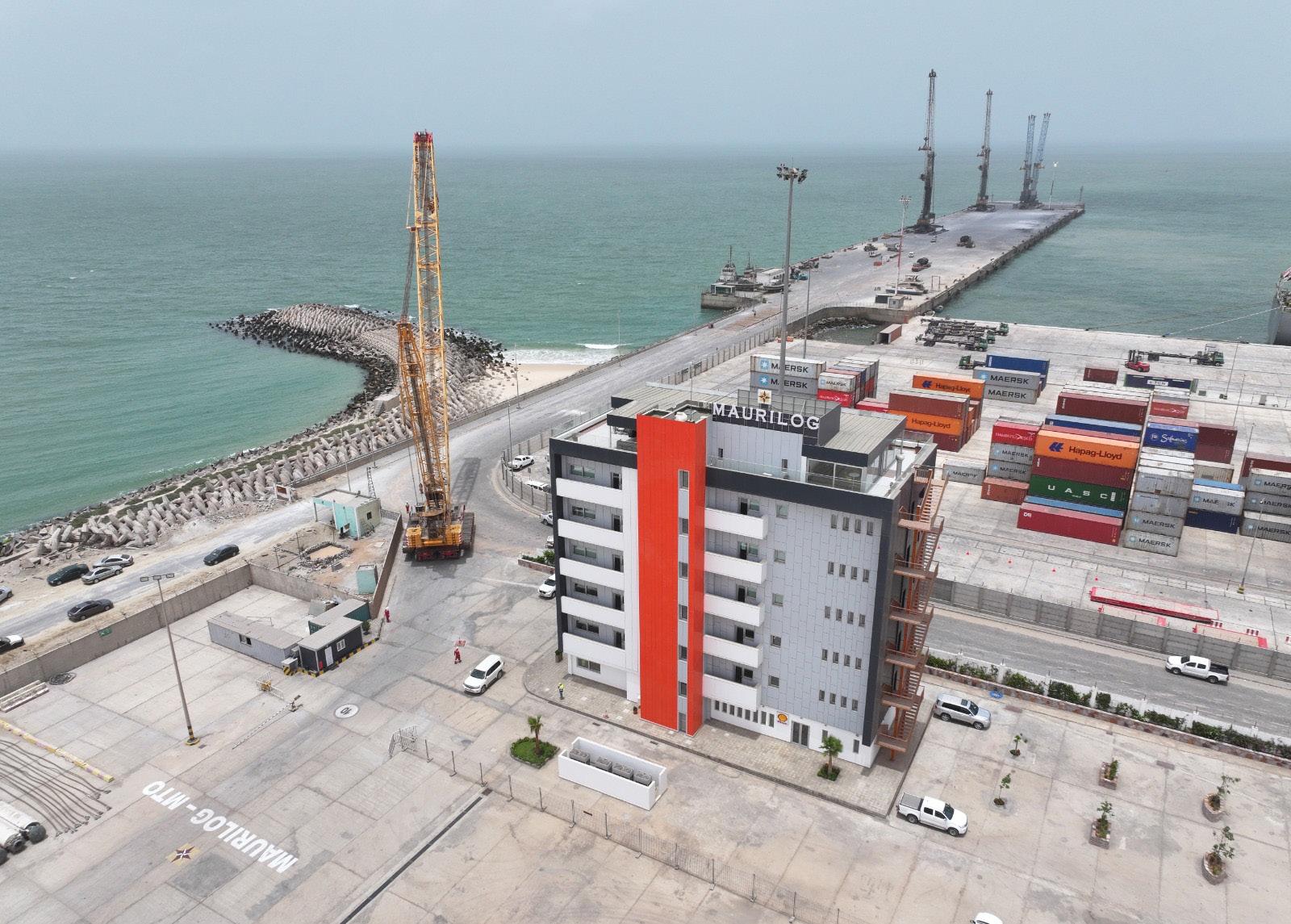
Trade Shifts
Mohamed Abdellahi Yaha, owner of Mauritanian logistics company Maurilog, said that countries like Morocco and Egypt were actively positioning themselves on the global stage.
“Each has its strengths and challenges but both are driving the continuous development of trade corridors as they work to establish themselves as gateways to both
Sub-Saharan Africa and Europe. Just as important are the developments from a regional perspective.”
He pointed to the Global Trade African (GTA) corridor as another example. “Spanning 4,500 kilometers and linking the Economic Community of West African States (ECOWAS) countries to Europe, this is an extremely important project forecast to attract US$2 billion of investment by as early as 2027.”
For Vicens, the efforts are already paying off. “We are seeing North African ports more and more capture volumes and trade lanes traditionally handled by Southern European ports, particularly in Spain. Several Spanish ports are experiencing a decline in traffic as carriers and companies increasingly opt for North African alternatives, driven by competitive infrastructure and strategic location.”
The region, however, is not without its challenges. Conflict remains one of the biggest risks across the continent, and North Africa is no exception. Security concerns persist in Libya, which continues to grapple with instability. Meanwhile, the ongoing civil war in Sudan has caused major disruptions, with no ceasefire in sight, casting a shadow over regional stability and trade prospects.
The Trans-African Highway, arguably one of Africa’s most ambitious infrastructure projects, designed to connect nine key corridors, remains aspirational, with progress stalled in part due to persistent security risks in countries like Sudan.
Surrounded by Conflict
The Red Sea disruption is yet another example of how conflict continues to impact trade and logistics in the region. “The Suez Canal’s revenues have declined dramatically because of the Houthis and the broader Red Sea crisis,” said El Dahshan.
“When a country’s main source of income drops by 60% to 80%, it signals real economic trouble. And when you’re surrounded by conflict, whether it’s in Libya, Sudan or across the border in Israel and Gaza, all sectors inevitably take a hit. These may be external factors, but they significantly impede progress, especially in the project sector.”
Logistics experts maintain that, conflict aside, another major obstacle to efficient trade is the inconsistency
Maurilog operations team coordinating the loading of specialized drilling equipment onto a supply vessel with a large mobile crane.
A heavy-duty crane is returned to Maurilog’s yard after a successful offshore operation for a major client.
Credit: Maurilog
and inefficiency of customs procedures across the continent. A key factor contributing to this is the lack of widespread digitalization.
While several countries, including Egypt, have made progress toward implementing online customs clearance systems, fully digital, end-to-end processes remain elusive. Many steps still require manual intervention, including physical inspections and approvals, resulting in delays, inefficiencies and sometimes corruption.
Compounding the issue is the lack of harmonization between countries. Customs systems vary significantly across borders, making regional coordination and integration under frameworks like the AfCFTA particularly challenging.
According to Yaha, while each country in North Africa faces its
own set of domestic challenges, the region’s strength lies in its potential to collaborate.
He said public-private partnerships were increasing. “The private sector is focusing on the business and if we are honest, the opportunities in Africa are far more attractive than those in, say, Asia or Europe. Africa is the future, and North Africa’s value proposition is increasingly compelling.”
He said project activity was set to increase, as the region was on a trajectory to increase investment in infrastructure, intermodal transport and energy capacity to reach its ambitious goals.
be it wind, solar or biogas. Oil and gas remain part of the mix as well.”
Both Yaha and El Dahshan agree that governments will need to increase investment in railway and road infrastructure, particularly if growing intraAfrican trade remains a priority.
“North Africa has several factors in its favor, of which the most important is its strategic location linking it to Europe and Sub-Saharan Africa, as well as the Middle East,” concluded El Dahshan, also highlighting direct access to maritime routes such as the Suez Canal.
“North African countries are all investing in capacity to handle breakbulk and oversize cargo.”
Solar and wind projects have seen an increase in project cargo, noted El Dahshan. “We have seen an uptick in volumes and we have handled several renewable energy projects, *Breakbulk Exhibitor
Liesl Venter is a transportation journalist based in South Africa.
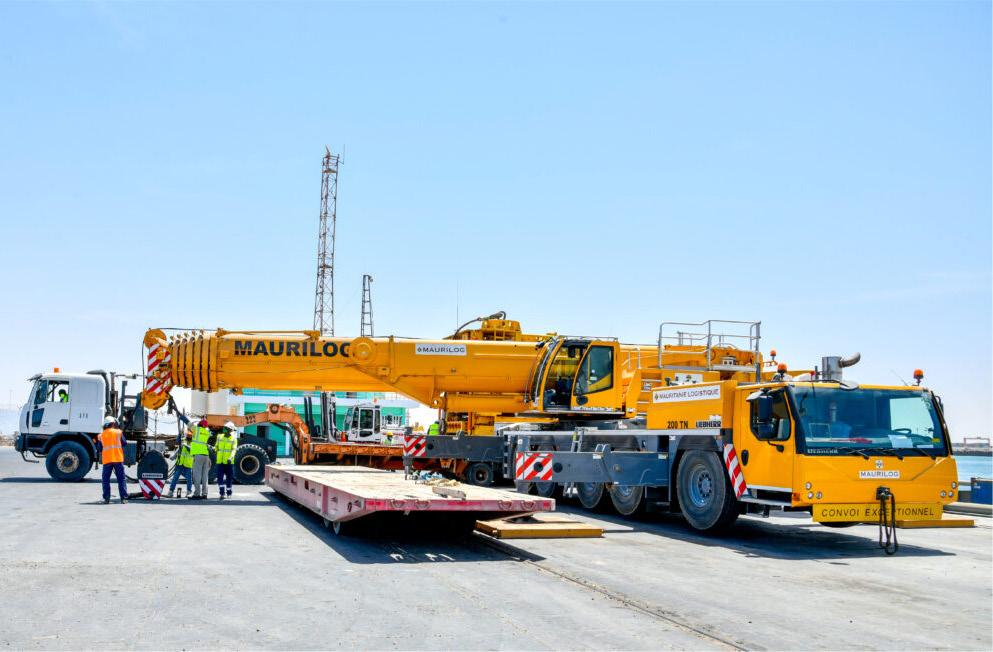
Maurilog plays a central role in major projects throughout Africa. Credit: Maurilog
signs concessions
Credit: RSGT

RED SEA GATEWAY TERMINAL EXPANDS INTO MULTIPURPOSE PORT OPERATIONS
“Natural evolution” to capture emerging opportunities
Red Sea Gateway Terminal (RSGT) in Saudi Arabia has secured 20-year concessions to operate and develop four port facilities on the Red Sea, expanding its footprint into multipurpose terminal operations. The deals, signed with the Saudi Ports Authority (Mawani) and backed by a planned
By Simon West
US$418 million investment, grant RSGT operational responsibility at Jeddah Islamic Port, King Fahd Industrial Port in Yanbu, Yanbu Commercial Port, and the Port of Jazan. In the following Q&A, we find out more about RSGT’s exciting move into multipurpose operations.
RSGT
deal with Mawani for four Red Sea terminals.
Q: What was the rationale behind expanding into multipurpose terminal operations at this stage in RSGT’s growth?
RSGT: RSGT’s expansion into multipurpose terminal operations is a natural evolution of our longterm strategy. Since 2020, we’ve grown from a single terminal into a diversified operator with six terminals across container and noncontainerized cargo. The move allows us to capture emerging opportunities in roll-on, roll-off, breakbulk, bulk and project cargo, all sectors aligned with Saudi Arabia’s evolving industrial base. By diversifying, we not only expand our service offering but also hedge operational risk and deepen our role in the regional and global supply chain.
Q: What kind of technologies and equipment will be introduced to bring these terminals to world-class standards?
RSGT: In the container terminal, we are investing heavily in automation, digital yard management systems and smart gate technologies, leveraging lessons from our Jeddah terminal, where remote-controlled cranes and automated gate solutions significantly reduced operating costs. Multipurpose terminals generally lag behind; however we will be applying the same digital-first approach to cargo handling and logistics management. We will focus on the digitalization of the documentation and information flows to achieve efficiencies through information and then progress this to automation of various cargo handling as the Saudi markets develop. We also plan to introduce future-ready green infrastructure, such as electric handling equipment and potential shore power systems, aligning with our ESG goals and investor expectations.
Q: How will the move into multipurpose boost RSGT’s capabilities in handling breakbulk and project cargo?
RSGT: Multipurpose terminals enable us to handle a broader range of cargo types, including breakbulk (dry and liquid), heavylift, ro-ro (vehicular and high and heavy), and oversized project cargo, which are essential to Saudi Arabia’s industrial and infrastructure ambitions. These capabilities position RSGT as a key partner for heavy industry in the engineering and construction sectors that rely on complex logistics as well as the significant automotive sector. The shift also complements our existing container operations, giving our clients a one-stop logistics platform with high-capacity throughput and the operational expertise to manage diverse cargo profiles.
Q: Which of the four new ports do you see as having the greatest potential for growth in breakbulk and project cargo handling?
RSGT: Jeddah Islamic Port is the most significant port in the Red Sea, being well established as a known international hub port. It is well-positioned to grow the steel and automotive imports, with two segments seeing strong growth tied to Vision 2030 construction and mobility goals. Additionally, Yanbu Industrial Port stands out due to its proximity to the petrochemical plants’ activities. It’s poised to become the highest volume terminal in our multipurpose portfolio, supporting both imports for major industrial projects and future exports of processed minerals.
Q: How do you see RSGT’s role evolving in serving inland infrastructure, industrial or giga-projects that require project logistics?
RSGT: Our role is shifting from being purely a terminal operator to becoming a strategic logistics partner for national development. The expansion into multipurpose terminals allows us to directly support giga projects and industrial zones that require specialized cargo handling. We’re aligning closely with inland demand by offering scalable, flexible logistics solutions that can accommodate timesensitive, heavy, or non-standard freight, essential for construction, mining and energy infrastructure.
Q: Do you have any plans to further expand RSGT’s operations within Saudi Arabia, or even abroad?
RSGT: While our current priority is the seamless integration and development of the newly awarded multipurpose terminals, we continue to explore strategic expansion opportunities both locally and internationally. Our focus remains on emerging markets where trade growth, infrastructure demand, and economic transformation align with our operational expertise. We’re not pursuing growth for its own sake; we’re selective, targeting opportunities that complement our capabilities, offer scalability, and reinforce our role as a resilient and forward-looking logistics partner.
Colombia-based Simon West is senior reporter for Breakbulk.
*Breakbulk Exhibitor
IBERIAN BLACKOUT A “WAKE-UP CALL FOR EUROPE”
Grid Upgrades Expected to Drive Demand for Specialized Transport Services
By Luke King
Just after midday on April 28, 2025, the lights went out across the Iberian peninsula. Within minutes, nearly 60 million people in Spain, Portugal and parts of southern France were plunged into darkness.
The blackout was initially linked to a sudden loss of power generation at a substation in Granada; however a subsequent Spanish government investigation, released in midJune, concluded the wider outage was triggered by a mass solar shutdown across the network.
On an exceptionally sunny day, wholesale electricity prices turned negative, prompting solar farms to switch off en masse, a chain reaction that reportedly destabilized the grid and ultimately cascaded across the peninsula and beyond.
Compounding the misery of the blackout, a number of phone networks also failed, as did the water supply in many apartments, where power is often required to circulate water among the homes. The major recovery phase for the electrical grid on the Iberian Peninsula came around 21:35 Central European Summer Time, though complete grid stability wasn’t achieved until the following day.
“It was absolutely crazy,” said Beatriz Pedrosa of the sales and service department at Portugalbased Laso Transport , who was working in the company’s Lisbon office when the blackout struck.
“We couldn’t talk to anybody because the phone signal also stopped,” she said. The company’s 900 trucks, active across Portugal, Spain and beyond, were suddenly isolated. “Some drivers said they had been calling us for hours, but couldn’t reach us. They didn’t know what to do.”
Although GPS still functioned, essential transport documents and permissions could not be accessed online. “If our drivers don’t have their routes because there is no signal or Wi-Fi, and he doesn’t know what bridges he can use, the cargo is at risk.”
Fuel shortages added to the chaos. “All the gas stations closed because you couldn’t pay with cards. They just shut everything down.” Pedrosa said some drivers were left without food and were stranded for hours without access to basic facilities.
Laso’s work includes highfrequency project cargo moves such as wind turbines and, while
Beatriz Pedrosa, Laso Transport

these loads weren’t impacted directly, the broader impact on the company’s operations was severe.
“We needed a week to recover from the disruption that the blackout gave us,” Pedrosa said. “Delayed deliveries created a backlog and clients, already facing system outages of their own, grew frustrated. People that have worked at Laso for twenty years said this never happened. I don’t think anybody had a plan.”
Unprecedented Disruption
For energy analysts, the scale of the outage was alarming. “This kind of blackout is highly unusual,” said Pratheeksha Ramdas, senior new energies analyst at Rystad Energy.
“While minor oscillation events and regional separations have occurred before, the scale and speed of this event make it one of the rare and severe incidents in the region.”
Ramdas pointed to “low grid inertia due to the high penetration of
Ramdas, Rystad Energy

Pratheeksha
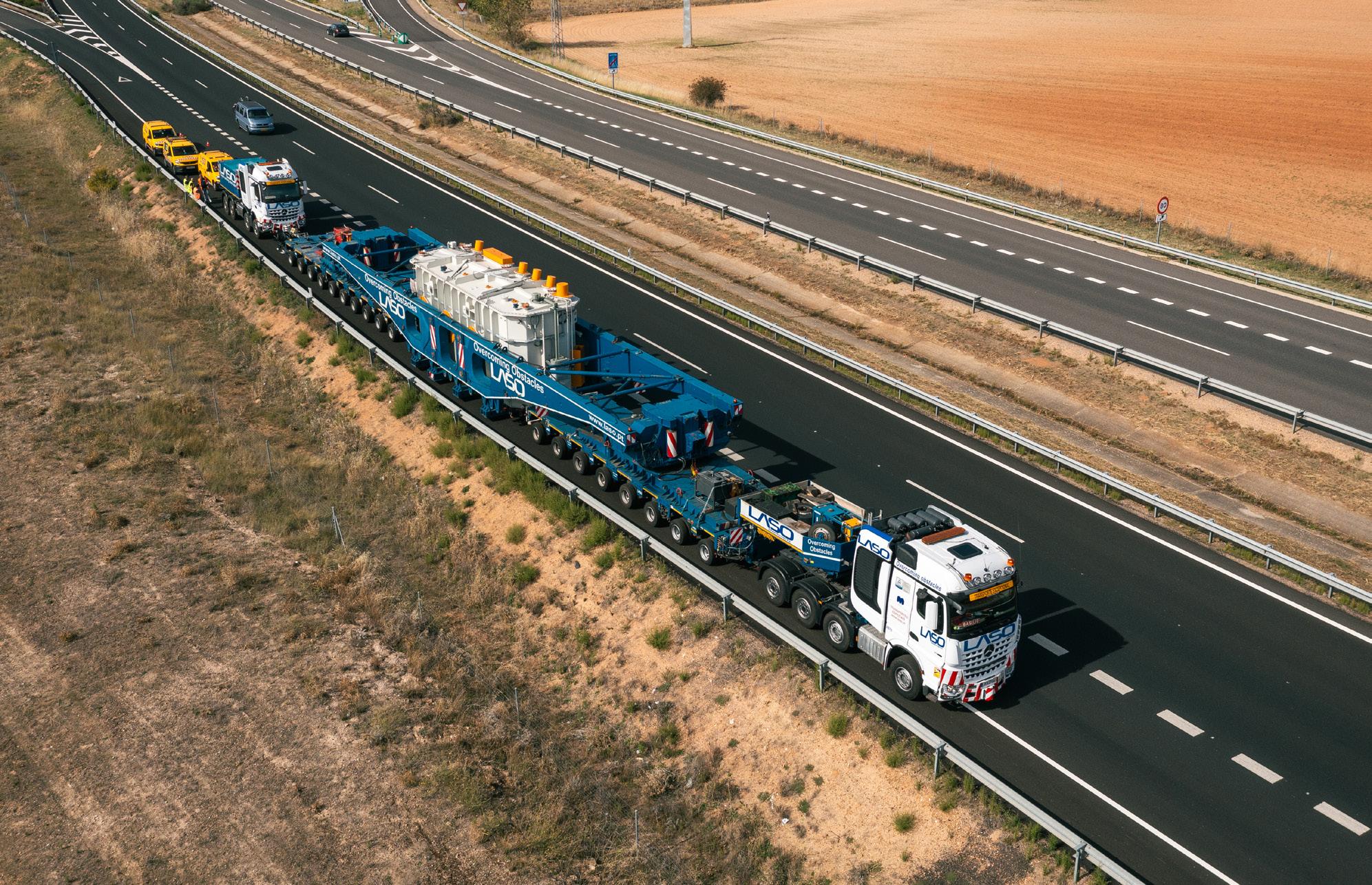
renewables, inter-area oscillations with the wider European grid, and limited interconnection capacity.”
She called the blackout “a wake-up call for the entire European Union regarding the vulnerabilities of aging infrastructure and the challenges posed by the energy transition if grid modernization doesn’t keep pace.”
Following the incident, both Spain and Portugal are now accelerating their interconnection plans with France and the wider EU. The Bay of Biscay HVDC cable, a €1.75 billion underwater line scheduled to come online by 2028, is expected to play a major role.
A key opportunity for the logistics community lies in the physical nature of the upgrades now required. For the project cargo sector, this means a likely increase in demand for specialized transport services, including high-voltage equipment, cooling systems and storage units. As more of these projects come online, shippers and their logistics providers will be expected
to deliver heavier, more sensitive cargo under tighter timelines.
Spain’s national grid operator REE has already received approval for 25 infrastructure projects across Andalusia, totaling €103 million in investment. “These initiatives involve the installation of substantial components like transformers and STATCOM systems, which necessitate specialized logistics for transportation and installation,” said Ramdas.
Grid Investment
Other upcoming works include the reinforcement of 220 kV and 400 kV substations in locations such as Puebla de Guzmán and Algeciras, which will require oversize loads to be moved overland to often remote and mountainous locations.
While the exact timeline for procurement remains fluid, Ramdas said “broader trends suggest a significant ramp-up in capital spending,” with many projects already in advanced planning stages. These
will span grid modernization, energy storage, hydrogen infrastructure, and capacity market implementation.
One of the key lessons, according to Ramdas, is that the energy transition cannot succeed solely on power generation investment. “The key takeaway is that renewable energy deployment must be matched by robust grid infrastructure investment.”
This is particularly urgent in southern Europe, where surging demand from data centers, electric vehicles and industry is placing new stress on an already-fragile grid. Ensuring stability for these assets will require new substations, automation, and more intelligent fault-tolerant design – all of which increase the demand for complex logistics services.
“Spain and Portugal are becoming attractive locations for data centers and the electrification of transport and industry to meet decarbonization goals will further increase electricity demand,” said Ramdas.
Laso Transport’s fleet of 900 trucks was severely disrupted by the April 2025 blackout. Credit: Laso Transport
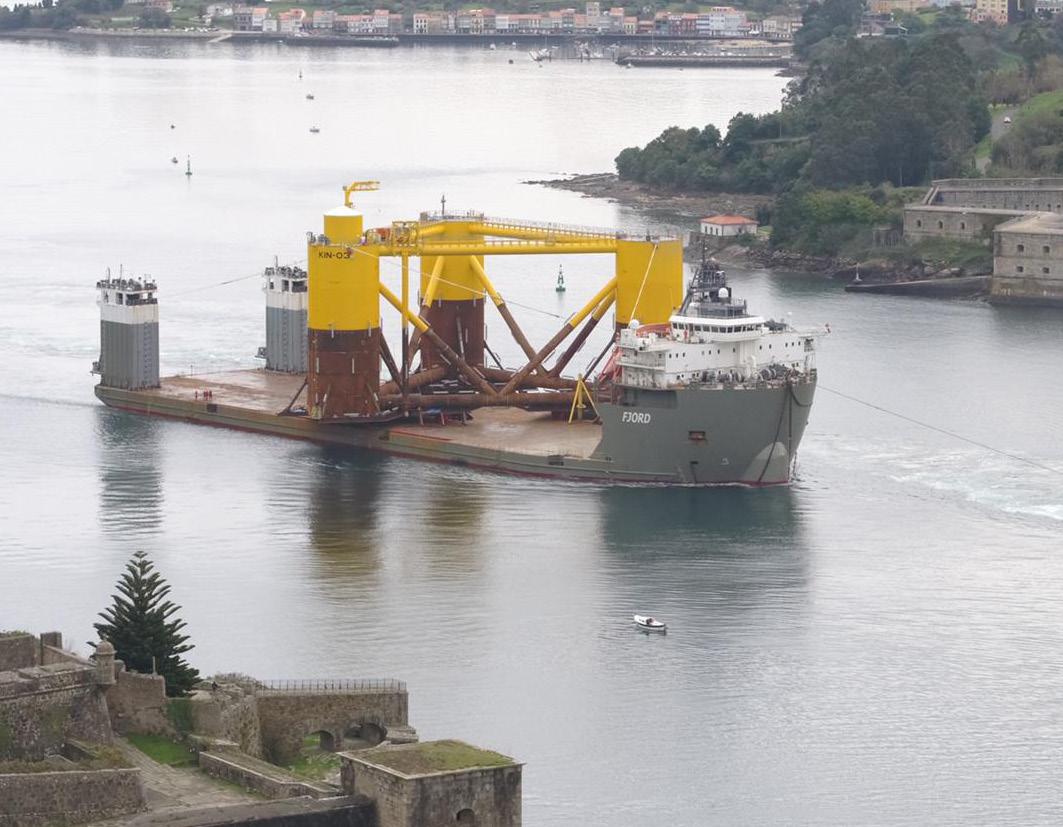
Supply Chain Vulnerability
From a project logistics perspective, the mass outage exposed just how reliant today’s supply chains are on stable power and connectivity, according to executives at Noatum Project Cargo
“The recent Iberian blackout highlights not only the critical need for diversified and resilient energy generation but also exposes significant logistical vulnerabilities that must be addressed as Europe’s energy landscape evolves,” said Juan Agustín Perez Gil de Zúñiga, manager of global sales and business development.
“The sudden loss of connectivity and payment systems left drivers stranded, cargo movements delayed and essential transport documentation inaccessible. In an industry where oversized and sensitive components must reach remote sites safely and on schedule,
such disruptions can cascade into substantial project delays and cost overruns,” he added.
“This blackout shows that while renewable energy sources like solar and wind are essential and increasingly cost-effective, relying solely on them, without adequate backup generation and robust grid infrastructure, introduces avoidable
Juan Agustín Perez Gil de Zúñiga, Noatum Project Cargo
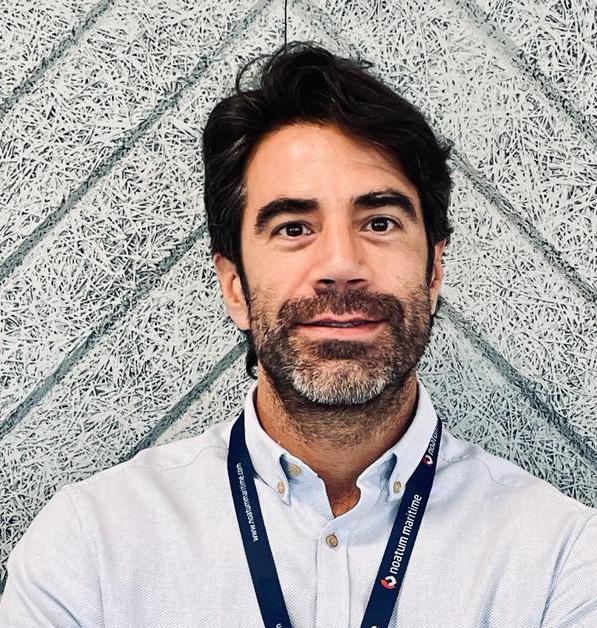
Noatum Project Cargo arranged the shipment of five floaters weighing 3,000 tonnes each from Ferrol, Spain to Rotterdam, bound for the Kincardine wind farm.
Credit: Noatum Project Cargo
risk. Nuclear power, among other stable sources, should remain part of a balanced energy mix to cushion such unforeseen events.”
Noatum also emphasized the role of grid-scale storage, smart automation and physical reinforcement of infrastructure corridors in reducing future risk, all of which translate into growing demand for complex cargo solutions.
“For the logistics sector, this means specialized transport of high-voltage equipment, transformers, storage units and smart grid components,” added Pablo Conde, vice president at Noatum Project Cargo.
“Project cargo operators must be ready to support these infrastructure upgrades with proven expertise in route planning, heavy lift coordination, and contingency protocols for remote or sensitive sites.”
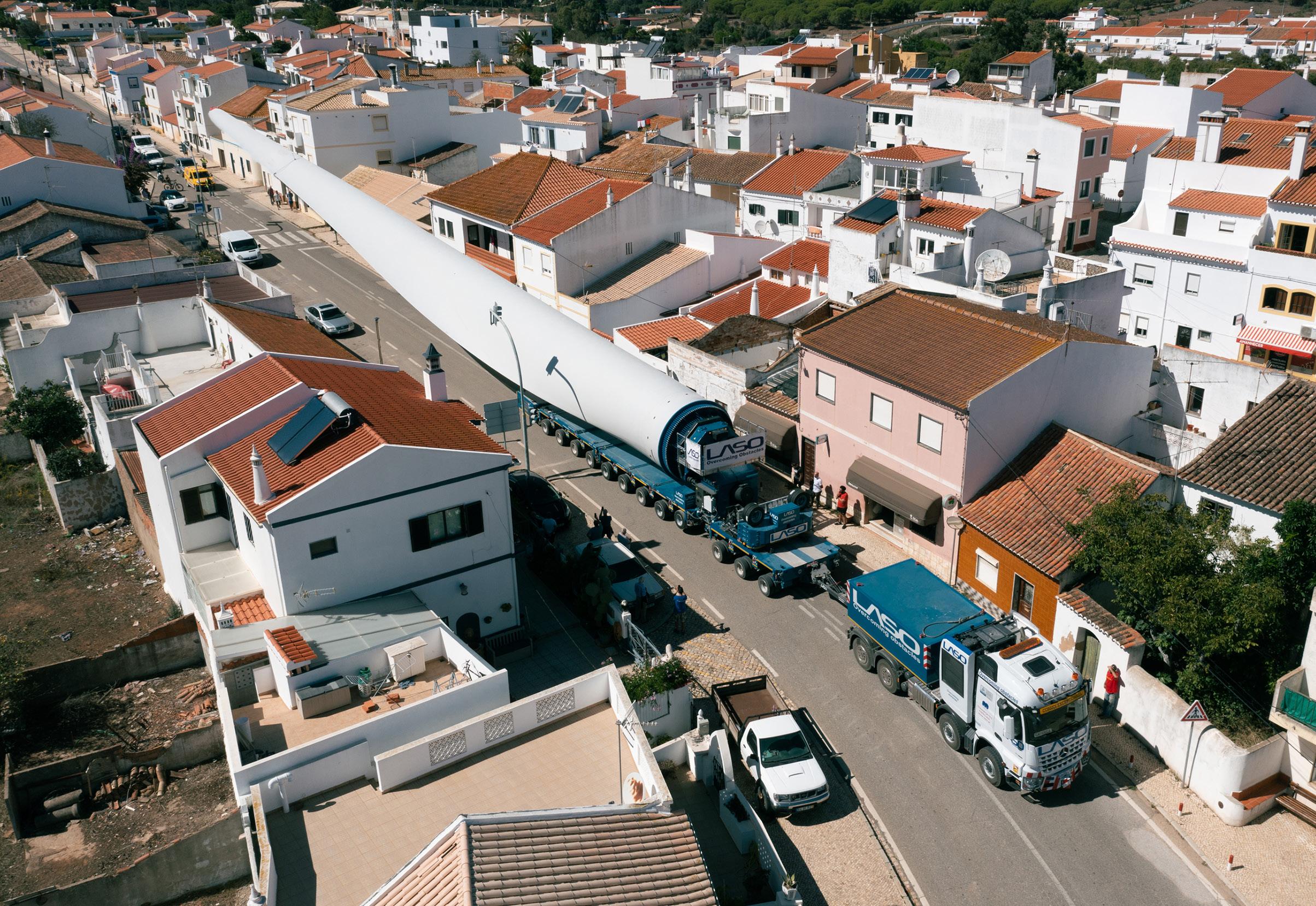
He said that developing robust continuity plans will be key: “Investing in driver training, redundant communication

methods and emergency fuel and supply strategies will be crucial to keep essential cargo moving even when digital systems fail.
“Securing Europe’s energy future demands both a resilient generation portfolio and a modernized grid, and project logistics will play a central role in delivering both.”
For Laso, the blackout delivered some hard lessons for the future. “We should prepare our drivers and our teams for a situation like this because it may happen again,” Pedrosa said, adding that she believes future readiness must include standardized guidance for logistics professionals, including what food and water to carry, where to stop and how to
proceed without digital instructions.
Pedrosa also emphasized the importance of involving staff in the process. “It’s important to listen to what our drivers have to say about this, to build a solution together. We need a plan.”
The question now is whether European governments and grid operators are listening, too.
Involved in the project cargo industry since 2007, Luke King is a regular contributor to Breakbulk Magazine.
*Breakbulk Exhibitor
Pablo Conde, Noatum Project Cargo
Laso said it would consult its drivers on how to respond to any future power outages.
Credit: Laso Transport
EVOLVING EXPECTATIONS IN PROJECT LOGISTICS
For Shippers, Adaptability, Trust and Data Are Key
By Luke King
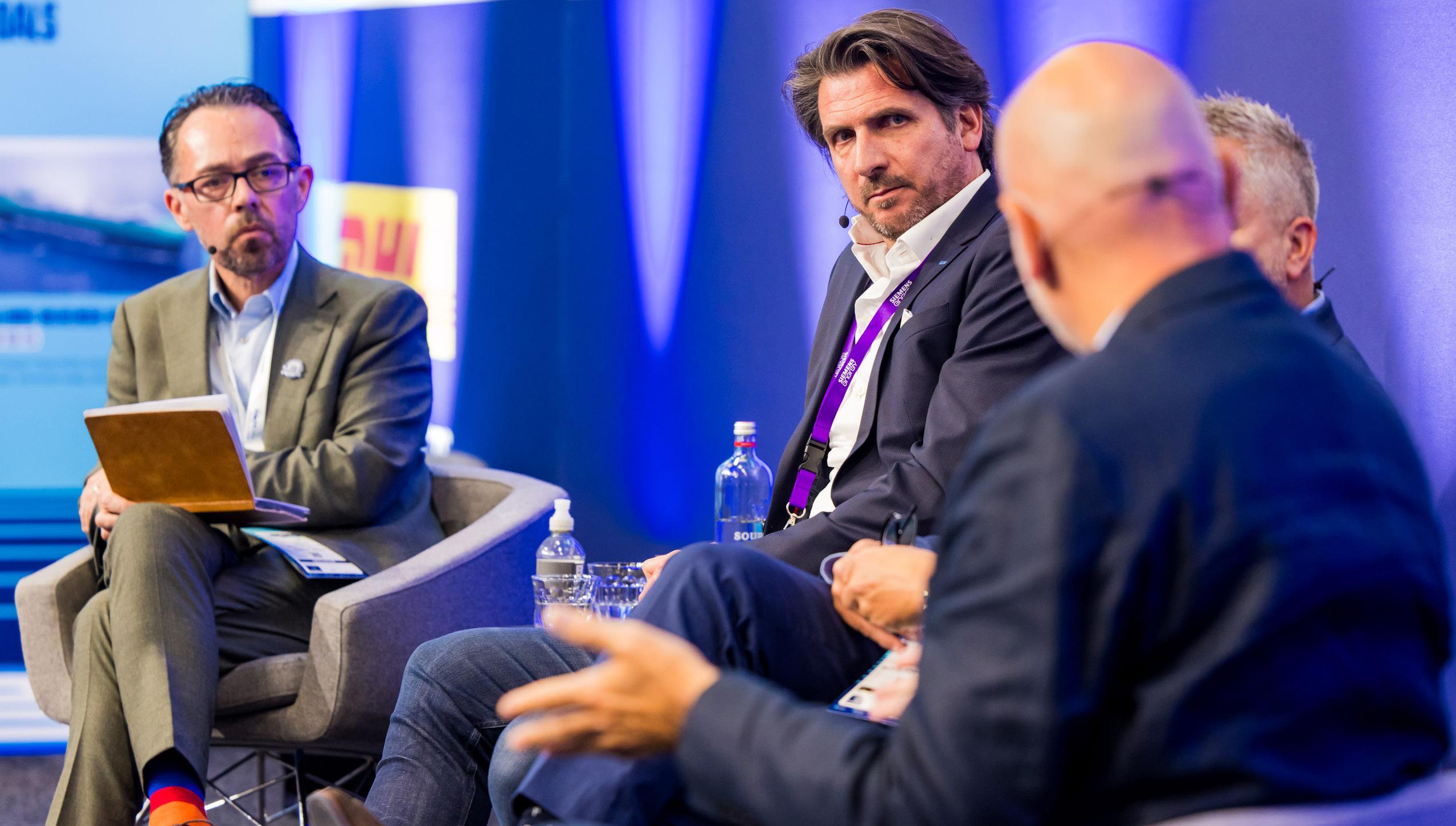
What do shippers need most from the project cargo community in trying times? At Breakbulk Europe, the answer was clear: strategic partnerships, not transactional service.
In a main stage session titled “Shipper’s Perspective: Navigating Today’s Logistics Challenges,” senior logistics leaders from Bechtel, Air Liquide and Siemens Energy shared how shifting global dynamics are transforming their expectations of logistics service providers.
Moderated by Tim Killen, head of
growth – project sector at Fracht Group, the panel featured Andrew Young, corporate manager of logistics at Bechtel Global Logistics; Richard Kaladji, project logistics manager at Air Liquide; and Ruediger Fromm, logistics business partner at Siemens Energy Global.
Killen set the tone when he told how a Fracht client summed up today’s market in three words: “Uncertainty, disruption and tariffs.”
Asked about a shipper’s primary needs and expectations, Fromm said: “In the past, it was all about cost,
speed and reliability of the service provider. Now, in changing times, we need strategic partners. We need data analytics support, which is a challenge for all of us – and to really learn from the data we have.”
For Bechtel, reliability and flexibility are top priorities. “The greatest need is global economic stability,” said Young. “Quality, safety and surety of delivery, that’s what we need to concentrate on. Our needs differ depending on the type of project. We’re dealing with governments, energy majors, they all lean on us in different ways,” he added.
Tim Killen, Fracht Group, and Ruediger Fromm, Siemens Energy Global, participate on a “Shipper’s Perspective” panel in Rotterdam.
Credit: Richard Theemling Photography
Kaladji pointed to rising design complexity. “Everything gets bigger in order to make erection as fast as possible,” he said. “We are validating solutions, then we have to go and find the right partners. Now, the challenge is higher, and you cannot mess up. The costs involved are so huge.”
In terms of evolving expectations, Young said modularization was one of the biggest changes in the last 10 years. “Clients want to construct faster. It’s not always that bigger is better, it’s optimization,” he said. “We are fortunate that, in Bechtel, logistics has a seat at the table at the design stage. There is an optimal size, not necessarily the biggest.”
Fromm noted: “In my new role in wind energy, I can say a nacelle is click and play, which is not that complicated. I hope the engineers aren’t listening! But the rest of the workflow is pure heavy-lift logistics. That plays a huge role in the realization of the project.
“In the past, logistics was thought about at the very end, and that’s changed now, and that’s very good.”
Another key shift has been customer involvement. “Clients are way more engaged in projects,” said Young. “Even in lump sum projects, they still want to manage risk, and to ensure that we are managing risk. Clients will put somebody in our office because they are so engaged.”
Killen added: “The costs of finance, the risk involved and the commitment to a return on investment as fast as possible are driving that engagement.”
As for risk mitigation, the panelists agreed that adaptability is critical. “Project logistics was always an industry where a high level of adaptability was required, but the level changed from high to super high!” said Fromm.
Kaladji added: “The main risk is not being able to deliver on time. We don’t win a project with logistics, but we can lose a lot of money because of logistics!”
Fromm emphasized the importance of trust: “With trust and open, honest communication, the risks can be
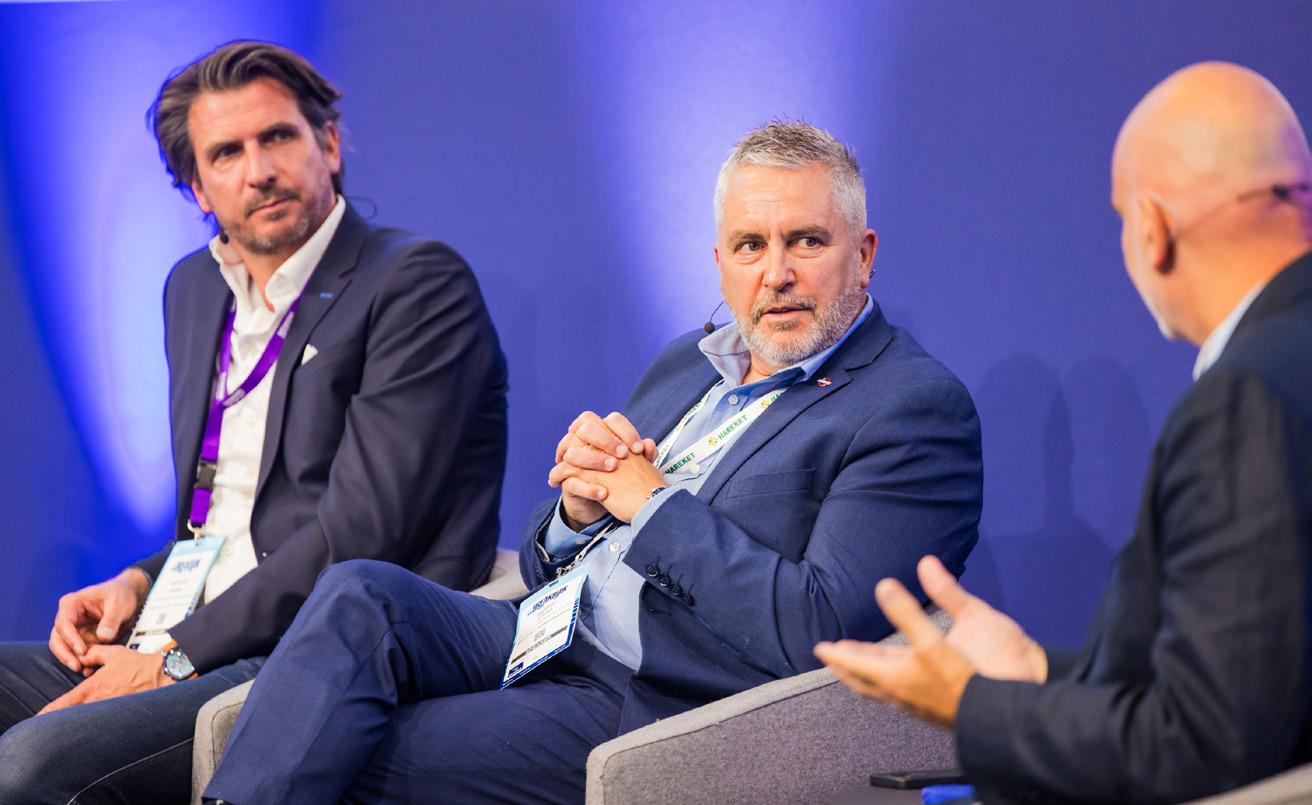
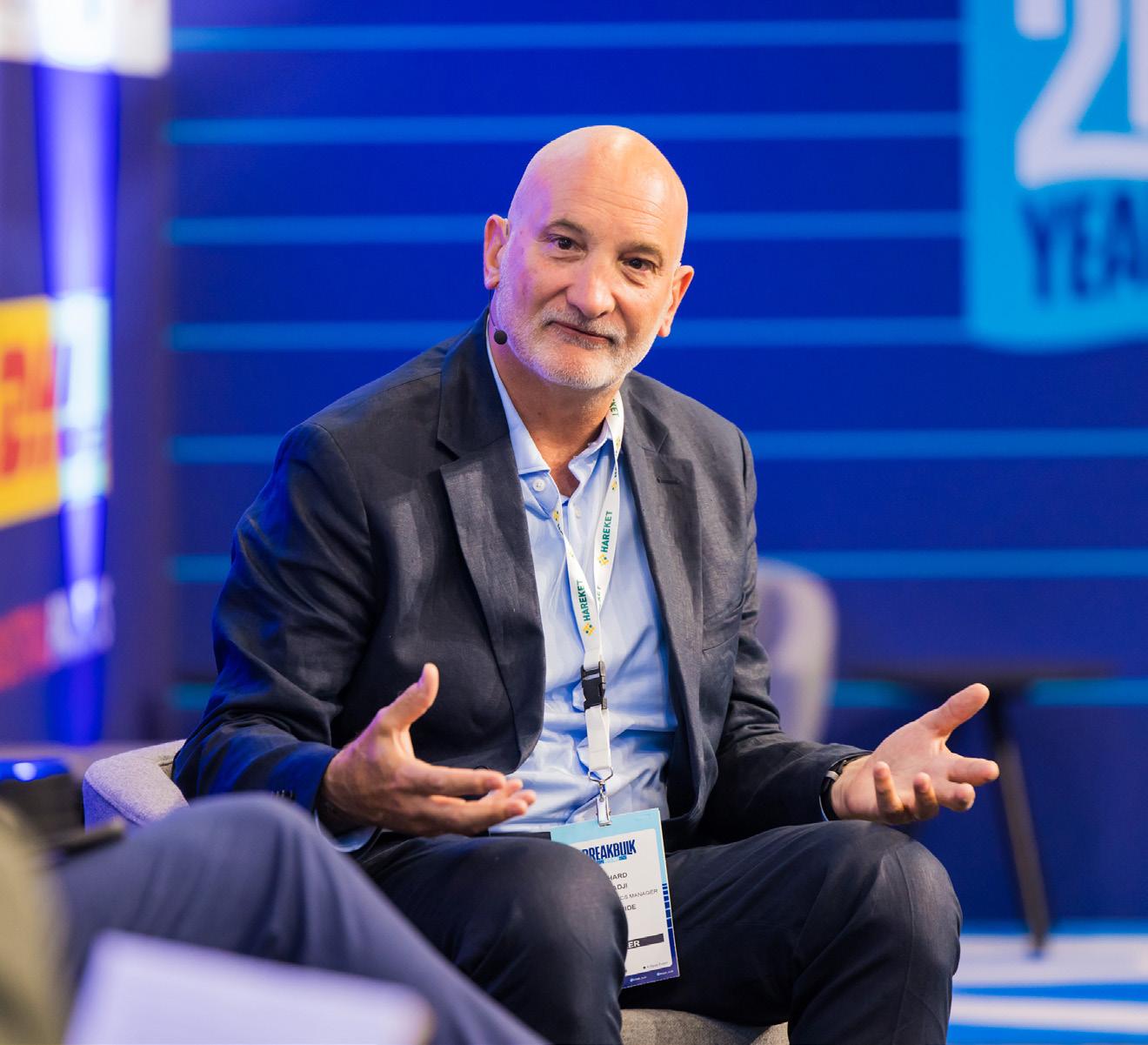
handled better. We all know something will happen in the execution of a project, but it does not make sense to hide it or not inform us. We need clear information to solve it.”
Underlying the important role played by project cargo logistics providers, Young said in closing: “At Bechtel we joke that we are often
dealing with a logistics project with a construction problem … That’s how prominent logistics is for us.”
Involved in the project cargo industry since 2007, Luke King is a regular contributor to Breakbulk Magazine.
*Breakbulk Exhibitor
*BGSN Member
(L-R): Ruediger Fromm, Siemens Energy Global; Andrew Young, Bechtel; Richard Kaladji, Air Liquide. Credit: Richard Theemling Photography
Richard Kaladji, Air Liquide. Credit: Richard Theemling Photography

LOGISTICS PROVIDERS BRACE FOR TAIWAN ENERGY BOOM
Surging Energy Demand Fuels Need for Specialized Transportation
By Damon Evans
The Taiwan-flagged vessel Green Jade carries out installation work at the Hai Long site.
Credit: Hai Long Offshore Wind
Taiwan is actively advancing its energy sector, focusing on expanding offshore wind power and liquefied natural gas (LNG) infrastructure to boost energy security and cut carbon emissions after phasing out its aging nuclear fleet.
Companies equipped to handle the complexities of transporting large-scale energy components are expected to find ample opportunity in Taiwan’s evolving power market. “Taiwan is a market full of promise, especially for the breakbulk and project cargo sector,” Felix Schoeller, director at AAL Shipping, told Breakbulk.
“According to data from Taiwan’s Ministry of Finance, the first four months of 2025 saw robust growth: exports surged by 20.6% year-on-year, and imports grew by 20.4%. While much of the export strength is being driven by the AI boom, we’re seeing solid gains in breakbulk-relevant industries as well: base metals and machinery exports rose by 7.6% and 7.1%, respectively,” he said.
A surge in data centers, and the increasing demand for power as a result, is fueling demand for power infrastructure, Schoeller noted. “That means more transformers, heavy electrical equipment and breakbulk exports from Taiwan to the U.S. and Europe in the medium term. On imports, Taiwan’s ambitious offshore wind program will increase demand for project cargo movements from Europe to Taiwan.”
AAL said its new Super B-Class vessels — designed with input from energy sector clients to improve stowage flexibility and crane capacity — along with its Asia-Europe Express Service, are positioned to support ongoing energy and industrial projects in Taiwan.
Abandoning Nuclear Power?
In May, Taiwan exited nuclear power with the retirement of its last legacy reactor. Premier Cho Jung-tai has

said renewable energy and gas-fired capacity will increase to meet rising electricity demand driven by new investments in artificial intelligence, semiconductors, data centers and other high-tech sectors through 2032. Taiwan is home to a world-leading chip industry, including Taiwan Semiconductor Manufacturing Co. (TSMC), the world’s largest chipmaker. While Taiwan remains the company’s primary manufacturing base, TSMC is also investing heavily in the U.S. Its planned investment in U.S. chip fabs totals US$165 billion, making it the largest single foreign direct investment in U.S. history. The centerpiece is a sprawling hub in Phoenix, Arizona, where the company began volume production at its first fab in late 2024. The company has plans for up to six fabs, two advanced packaging sites and a major R&D center.
In Taiwan, Kevin Liu, vice president of corporate strategy at local cable manufacturing conglomerate Walsin Lihwa Corporation, told Breakbulk that nuclear power could eventually make a comeback, with ongoing debate around next-generation reactors and small modular reactors (SMRs) expected to accelerate as energy security becomes increasingly important.
Natural resource-poor Taiwan, which has traditionally relied on coal to generate electricity, has set a target for at least 60% of its power generation to come from renewable sources by 2050, the year it aims to reach net-zero emissions.

The Rise of Renewables and Gas
According to Taiwan’s Ministry of Economic Affairs Energy Administration, LNG-fueled power generation is expected to rise from 42.4% in 2024 to 50% by 2030 and 54% in 2035. Renewables are projected to grow from an 11.6% share in 2024 to 30% in 2030 and 36% by 2035, while coal-fired power is expected to fall from 39.3% in 2024 to 20% in 2030 and just 9% by 2035.
“Taiwan’s aggressive push towards renewable energy, particularly offshore wind, coupled with infrastructure projects like LNG terminals, positions the breakbulk shipping industry for significant growth,” said Jimmy Yang, general manager in Taiwan of freight forwarding and logistics company EZ LINK CORP, a member of The Heavy Lift Group.
“The transportation of largescale energy components will continue to be a critical aspect of these developments, offering ample opportunities for logistics providers specializing in breakbulk and project cargo,” he added.
Taiwan aims to add 10 GW of offshore wind power between 2026 and 2035, as it seeks to have at least 15 GW installed capacity by 2035, positioning itself as a leading market in Asia Pacific.
“This expansion necessitates the transportation of large and heavy components, such as turbine blades, tower sections and substations,
Felix Schoeller, AAL Shipping
Jimmy Yang, EZ Link Corp.
AAL Nanjing transports a cable carousel from Dubai to Taiwan, destined for the Formosa 2 offshore wind project.
Credit: AAL Shipping
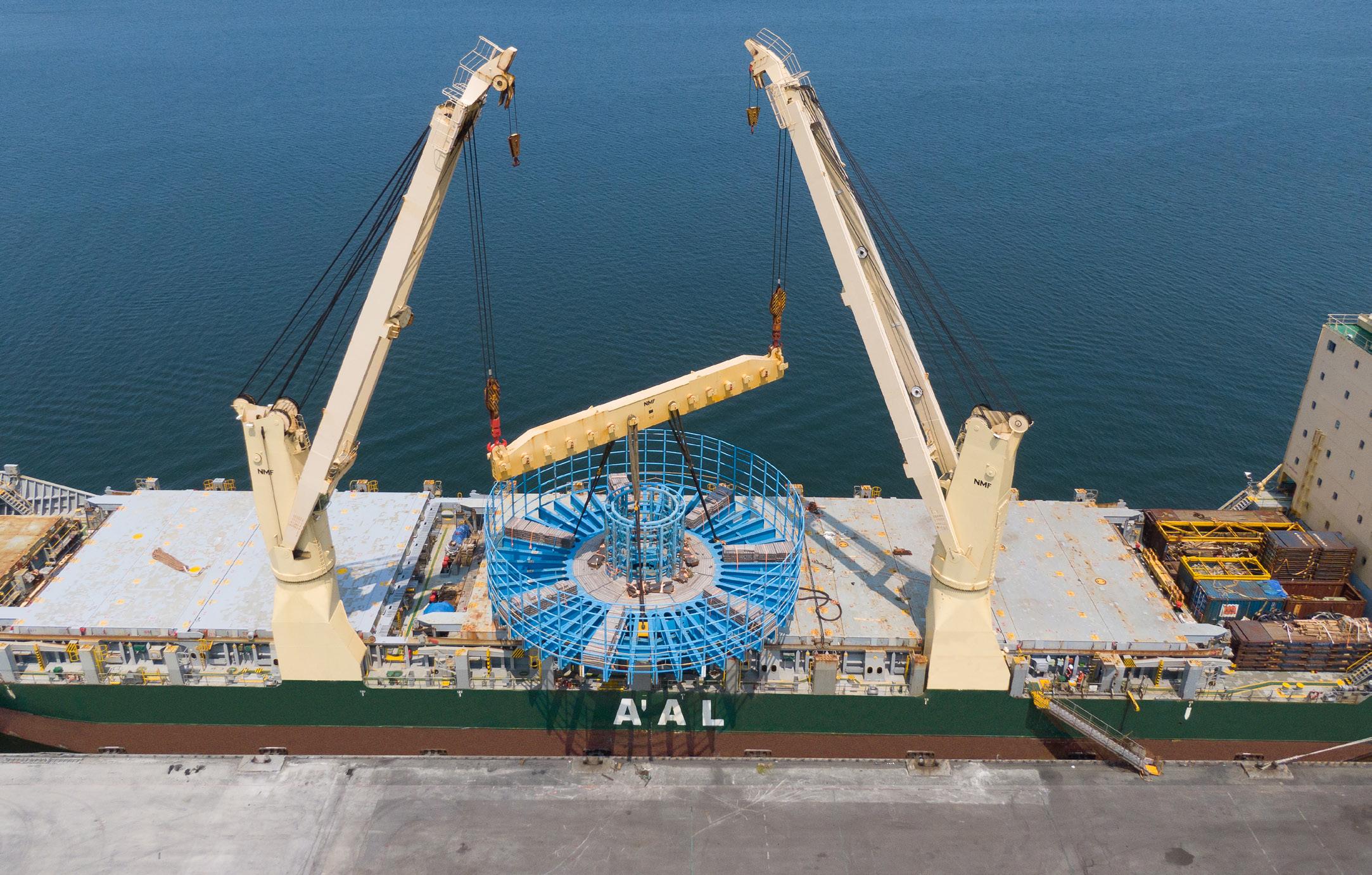
that are ideally suited for breakbulk shipping methods,” said Yang.
The development of specialized vessels and infrastructure further underscores this opportunity. For instance, the Green Jade, a heavylift installation vessel built in Taiwan by CSBC Corporation, has been instrumental in projects, such as the Hai Long Offshore Wind development, showcasing the nation’s growing capabilities in handling complex offshore installations, noted Yang.
Walsin’s Liu expects a lot of construction activity to take place for the offshore wind projects over the next two years, with potentially more developments being approved.
Offshore Opportunities
Highlighting the pace of offshore activity, the AAL Nanjing recently delivered a 370-tonne cable carousel from Jebel Ali, Dubai, to Taichung, Taiwan, which will be used to spool 3,000 tonnes of undersea power cables for an offshore wind farm. The Nanjing’s port-mounted heavy lift cranes were rigged at three points to a 22.5-meter lifting beam to load and discharge the cargo.
More projects are on the horizon. Clean energy fund manager Copenhagen Infrastructure Partners (CIP) said in March that it had reached financial close on its 495-MW Fengmiao I wind project, off the coast of Taichung.
“Fengmiao I is the first offshore wind project in Taiwan to be supported by a portfolio of corporate offtakers and will deliver much-needed clean energy to large energy users in Taiwan,” CIP said in a statement.
Construction for the project, which started in March and will feature 33 Vestas 15-MW turbines, is set to be completed by the end of 2027. A consortium comprising Semco Maritime and PTSC Mechanical & Construction has been awarded the engineering, procurement and construction contract. The transportation and installation of foundations are being handled by CSBC-DEME Wind Engineering (CDWE), utilizing the Green Jade vessel.
Other potential projects include Synera Renewable Energy’s 800 MW Formosa 6, Shinfox’s 700 MW Youde, and CIP’s 600 MW Fengmiao 2.
Taiwan, already a leader in fixed-
bottom offshore wind energy in the Asia-Pacific region, is also setting its sights on floating wind technology to harness wind resources in deep waters unsuitable for traditional foundations. This innovation will require specialized logistics solutions, offering new opportunities for project cargo service providers.
Floating developers were hoping the government would publish feed-in tariffs this year to encourage investment. However, the much-needed incentives do not appear to be coming yet, stalling momentum for now.
More LNG After Nuclear Exit
Taiwan’s energy sector growth is not limited to offshore wind. Gas and LNG are becoming a crucial part of its energy mix as the island phases out nuclear power.
There is a lot of activity in the LNG sector, as Taiwan is dependent on LNG to address the gap left behind by the nuclear retirement, which will not be plugged by renewables anytime soon, said Liu. “There’s an urgent and immediate need for LNG in Taiwan.
One thing is certain, Taiwan requires a lot more gas in the next five years, and energy security is becoming more important than net zero.”
GE Vernova, one of the world’s biggest gas turbine makers, noted that Taiwan is its fastest-growing Asian market. The company sees plenty of opportunities as electricity demand expands to fuel the growing chipmaking business. Taiwan also remains open to using new nuclear technology, and GE Vernova reported it could end up selling small modular nuclear reactors to the nation in the long run, if there is political consensus on safety and good waste management.
Various LNG projects are proposed and under construction, said EZ LINK’s Yang. “Projects like the Guantang LNG terminal,
expected to be completed this year, also require substantial breakbulk logistics support for transporting oversized equipment and materials.”
Taiwan Power Company plans to build an LNG receiving terminal in Keelung. The project includes converting the 2-GW oil-fired Xiehe power plant — currently the only fully oil-fired power plant in Taiwan — into a gas-fired facility.
Mai-Liao Power Corporation has proposed to build a 1.8- to 2.4-GW gasfired combined cycle power plant with an LNG terminal to replace a coal-fired power plant at the Formosa Plastics petrochemical complex in Mailiao.
Last December, Taiwan’s environment ministry approved state-owned CPC’s plan to construct an LNG receiving terminal, called Yung-An LNG, in the port city of
Kaohsiung, in the south of Taiwan.
In March, CPC awarded an EPC contract to compatriot CTCI and a unit of Japan’s IHI to build four aboveground, double-domed cryogenic LNG tanks, each with 180,000 cubic meters storage capacity, at the planned import terminal. The project is expected to be completed by late 2030.
As Taiwan’s energy transition gains pace, and offshore wind and LNG developments progress, a steady pipeline of project cargo activity awaits.
Damon Evans is a freelance journalist, analyst and consultant, specializing in the energy sector with 20 years of experience. He is based in Southeast Asia.
*Breakbulk Exhibitor
*BGSN Member
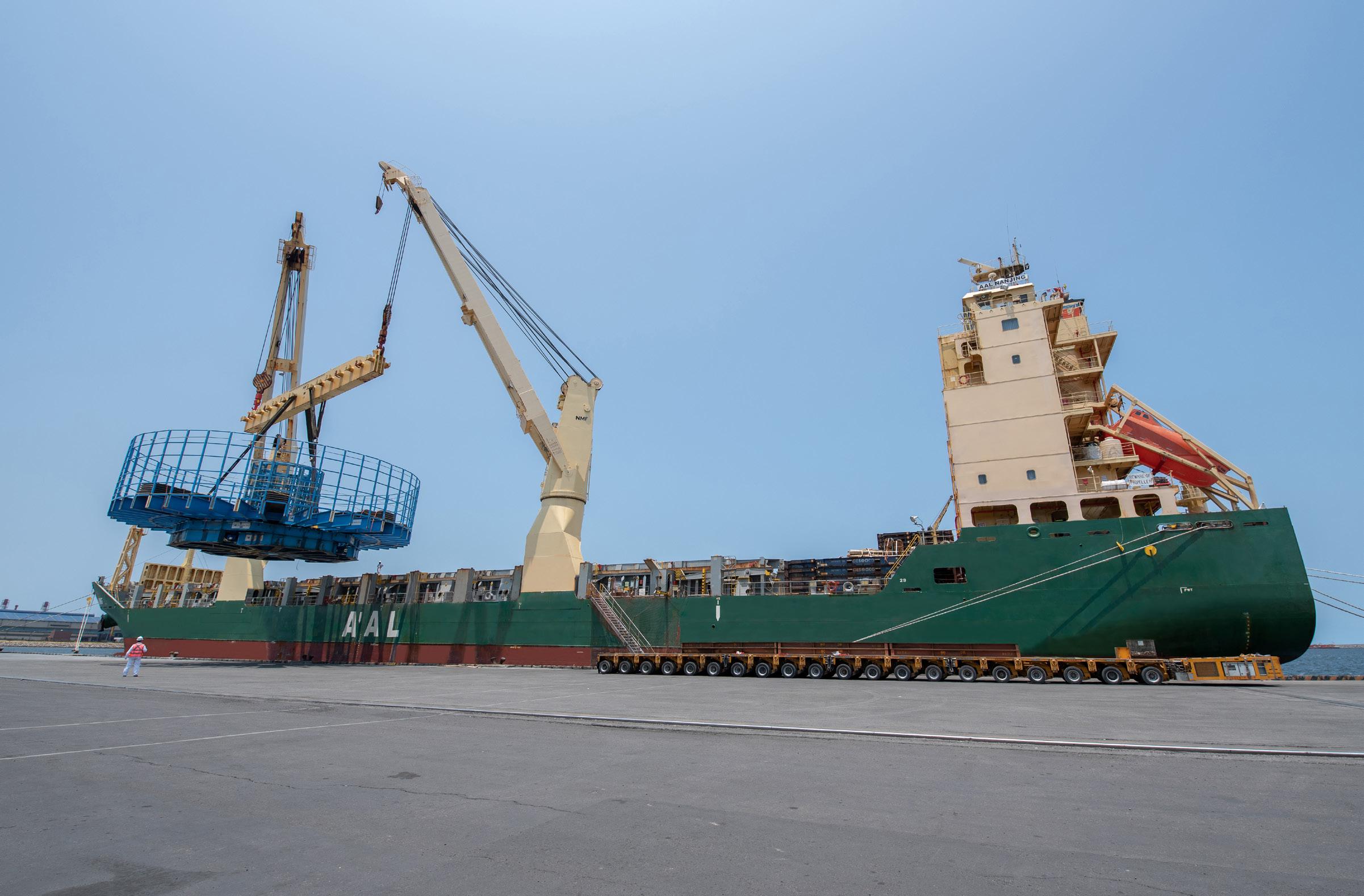
AAL Nanjing port-mounted heavy lift cranes were rigged at three points to a 22.5-meter lifting beam to load and discharge a 370-tonne cable carousel destined for Taichung, Taiwan.
Credit: AAL Shipping
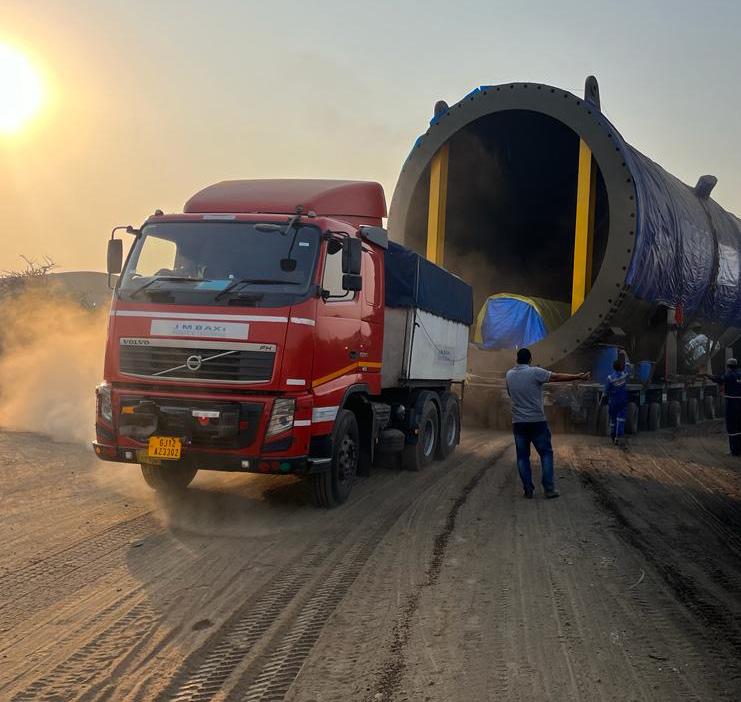
By Malcolm Ramsay
J M BAXI SETS HEAVY-HAUL RECORD FOR IOCL PANIPAT
Massive Reactor Moves Required Year-Long Coordination Across Three States
Over the last few years, India’s largest refiner, Indian Oil Corporation (IOCL), has been leading one of the country’s most ambitious infrastructure projects, expanding capacity at its giant Panipat Refinery and Petrochemical Complex in Haryana.
A critical component of this project was the transport of several outsized units for the expansion, most notably the delivery of two massive 1,005ton hydrodesulfurization reactors (HDS reactors). This movement,
engineered by J M Baxi Heavy, has set a national record as India’s heaviest and longest heavy-haul operation, requiring meticulous coordination across multiple modes of transport.
“It stands as a national benchmark in engineering-led multimodal logistics, demonstrating precision planning, technical innovation and operational excellence by J M Baxi Heavy,” Sameer Parikh, president and chief business officer at J M Baxi Heavy, tells Breakbulk
To execute this mammoth move, equipment manufacturer Larsen & Toubro (L&T) Heavy Engineering, based in Baroda, contracted J M Baxi Heavy to deliver a comprehensive logistics plan to ensure every engineering, transportation and loadout milestone was completed safely and reliably.
Alongside the HDS reactors, which measured 48 meters in length, 8.5 meters in width and 7.5 meters in height, two additional
A J M Baxi Heavy convoy hauls one of two 1,005-tonne hydrodesulfurization reactors for Indian Oil Corporation’s Panipat refinery expansion, marking India’s heaviest recorded overland move.
Credit: J M Baxi Heavy

over dimensional cargo (ODC) units weighing 650 tonnes and 450 tonnes respectively were also transported.
“The total transport weight, including hydraulic axle arrangements, amounted to 1,250 tonnes per reactor,” Parikh adds. “The project spanned 390 nautical miles by sea and 1,312-kilometers overland, all delivered ahead of schedule.”
Located in Panipat, Haryana, the refinery is one of the largest integrated petrochemical complexes
in South Asia. It plays a vital role in meeting the petroleum product demands of northern India and is currently undergoing major expansion to increase capacity from 15 million metric tonnes per annum (MMTPA) to 25 MMTPA.
The HDS reactors were central to the expansion, key to the hydrodesulfurization process that removes sulfur from crude oil, enabling the production of ultra-low sulfur diesel and cleaner fuels.
Demanding Journey
The logistics operation was split into two major phases. The first involved the movement of six heavy-lift components, totaling 3,593 tonnes from L&T’s Hazira facility in southeastern Gujarat to Kandla Port, covering 390 nautical miles at sea. The second phase involved a 1,312-kilometer overland journey of four units weighing a combined 3,102 tonnes from Kandla to IOCL’s Panipat site.
The first road convoy, weighing 640 tonnes, was originally projected to take 180 days but extended to 305 days, including a 90-day wait at Kandla. In contrast, the second convoy, weighing 1,000 tonnes, was delivered in 227 days, ahead of its 240-day estimate.
The route spanned Gujarat, Rajasthan and Haryana, and was dotted with logistical and civil engineering challenges, from electrified railway crossings to canal and major bridge bypasses, underpasses and low-clearance infrastructure. Each demanded tailored solutions in the planning and execution phases.
Challenging Weather
The sea leg journey began at L&T’s A.M. Naik Heavy Engineering Complex at Hazira, where the two 1,005-tonne reactors were rolled onto 250-class barges using hydraulic axles via a RoRo jetty. A spokesperson for L&T
notes that the entire loadout was conducted under a pre-approved mooring and stability plan using the port’s existing infrastructure.
“L&T Heavy Engineering and Modular Fabrication Facility (Hazira) stood by us, rain or shine!” said K.V. Raghavan, supply chain leader at L&T. “Their unwavering support was instrumental in ensuring timely equipment deliveries, even in challenging weather conditions.”
The L&T Hazira campus, near Surat, spans over 34,500 square meters and includes manufacturing facilities for defense, green hydrogen and modular fabrication, as well as a dedicated load-out quay on the banks of the river Tapi, making it well-placed to handle such high-stakes logistics.
At Kandla Port, J M Baxi Heavy faced a major challenge due to the jetty’s limited ground bearing capacity of three tonnes per square meter. To overcome this, an integrated load-spreading system using a Bailey bridge was deployed as a temporary load transfer platform. Steel packing and wooden dunnage were used across the barge and jetty to evenly distribute loads.
“The peak axle load was managed at 5.2 tonnes per square meter, safely distributed and brought under the jetty capacity,” Parikh explains. “The pre-tested Bailey bridge played a critical role in protecting port infrastructure during the roll-off.”
Circumventing Obstacles
From Kandla Port, the next phase of the journey involved an arduous 1,312-kilometer land transport operation, navigating a range of physical, infrastructural and regulatory challenges.
To prepare, J M Baxi Heavy’s engineering team conducted structural analysis of more than 70 bridges and culverts along the route. Based on this assessment, 22 custom bypasses had to be
Credit: J M Baxi Heavy

designed and constructed to avoid structurally weak infrastructure or geographically constrained passages.
These diversions were engineered to navigate around major rivers such as the Sang, Dudhwa and Luni, as well as canals, and included bypasses of narrow culverts and underpasses. The bypasses ranged between 300 meters and 1.2 kilometers in length and required the construction of compacted earth embankments with modular steel bridge spans rated for loads exceeding 1,200 tonnes.
“These solutions were tailored to suit local terrain, with compacted earth ramps and slope stabilization measures ensuring the structural integrity of each diversion,” said Parikh.
Once en route, the convoy navigated through 13 toll plazas, including key points at Samakhiyali, Pachpadra and Narwana. In six instances, the convoy’s 8.5-meter width exceeded the road infrastructure’s capacity, necessitating the dismantling or bypassing of toll canopies and booths to enable safe passage.
Regulatory Coordination
The route crossed 16 railway crossings, of which 10 crossings required temporary closures coordinated with Indian Railways, and six low-clearance underpasses necessitated full rerouting of the convoy. In addition, the convoy encountered 18 hightension electrical lines.
J M Baxi Heavy coordinated with state electricity distribution companies to execute scheduled shutdowns for safe passage. In specific stretches, crane-assisted lifting of live wires was used to provide temporary vertical clearance.
“J M Baxi Heavy worked in tandem with agencies such as the National Highways Authority of India (NHAI), Indian Railways and state electricity boards,” Parikh explained. “This included advance permissions, traffic clearances and temporary dismantling of infrastructure, executed without compromising safety or public convenience.”
In high-traffic zones, convoy movement was restricted to night
hours, ensuring minimum disruptions. These nocturnal shifts were executed under approved traffic management protocols, with advance local notification and traffic marshals deployed at critical openings.
After over a year of planning and phased execution, the massive cargoes arrived safely at the IOCL Panipat Refinery site. But Baxi’s work wasn’t yet finished: the final leg involved maneuvering through narrow internal corridors and access points within the refinery.
The final placement of the 1,005-tonne HDS reactors and accompanying ODCs was carried out using under-hook lifting operations, with a precision tolerance of ±25 millimeters to ensure alignment with the site’s expansion infrastructure.
New Benchmark
In total, the inland phase involved nine electrified railway crossings, 22 canal bridges requiring civil work or bypass, 24 major bridge bypasses, seven underpasses and 11 railway overbridge bypasses. All
One of the massive reactors is escorted through a remote section of the route on a modular trailer, with ground crew guiding the daylight movement.
A reactor convoy crossing a railway line en route to the Panipat refinery — one of 11 railway overbridge adjustments made during the inland leg.
Credit: J M Baxi Heavy
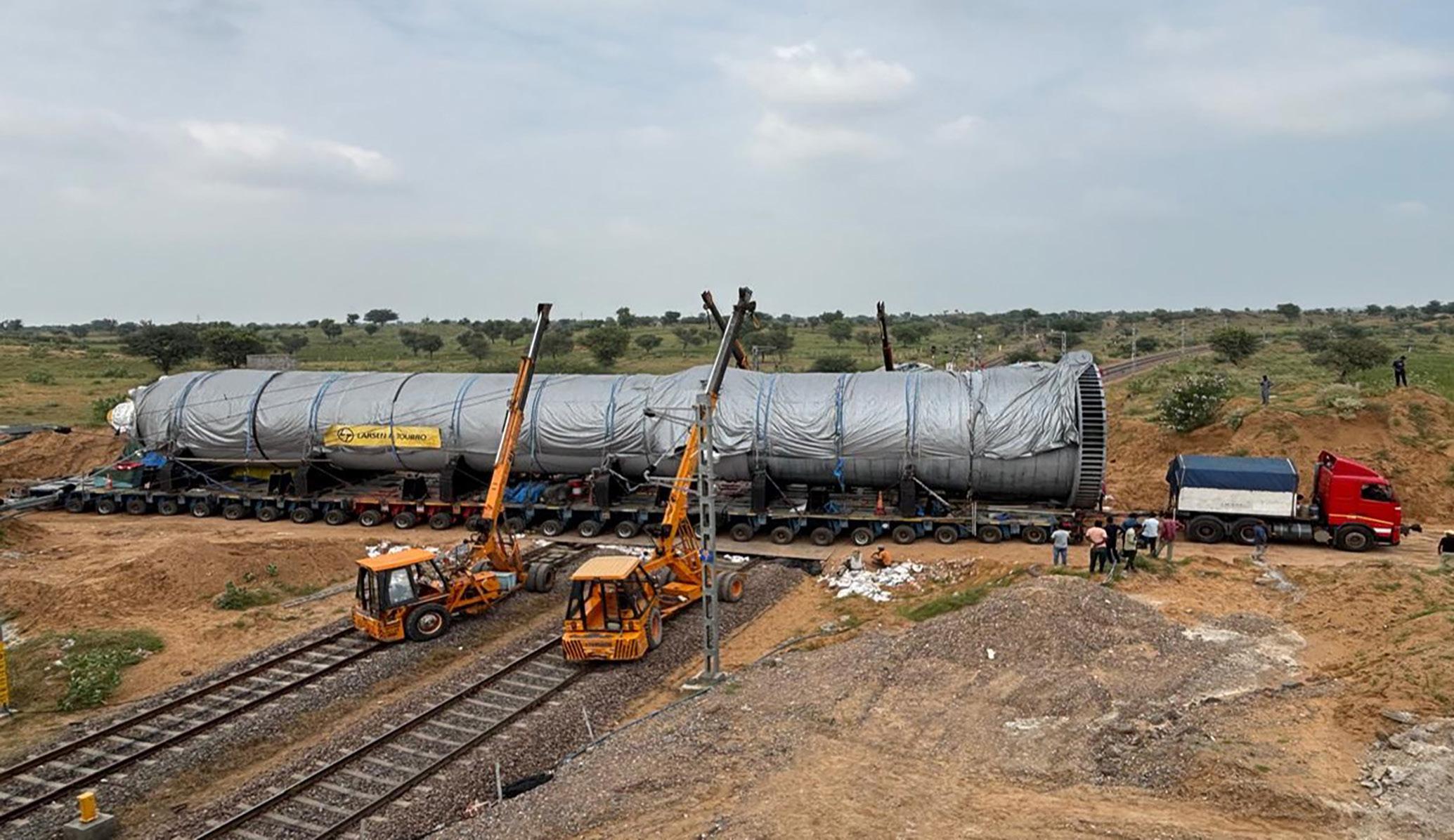
of this was achieved across three states, two transport modes and in record time, despite terrain, weather and infrastructure constraints.
Investment from IOCL has fueled substantial project cargo activity in recent years, as the country’s largest commercial enterprise ramps up development of India’s energy infrastructure. In addition to the landmark Panipat Refinery expansion, major works are underway at IOCL’s Gujarat and Barauni sites.
At Gujarat, refining capacity is being raised from 13.7 MMTPA to 18 MMTPA through a major revamp and installation of new units and supporting infrastructure. Meanwhile, the Barauni Refinery is expanding from 6 MMTPA to 9 MMTPA, part of a wider investment that includes a city gas distribution network to bring cleaner energy access across Bihar.
With cargo delivery now complete at Panipat, IOCL expects construction across all three sites to be finalized by the end of 2026.
In May this year, L&T announced that it had secured a contract from IOCL
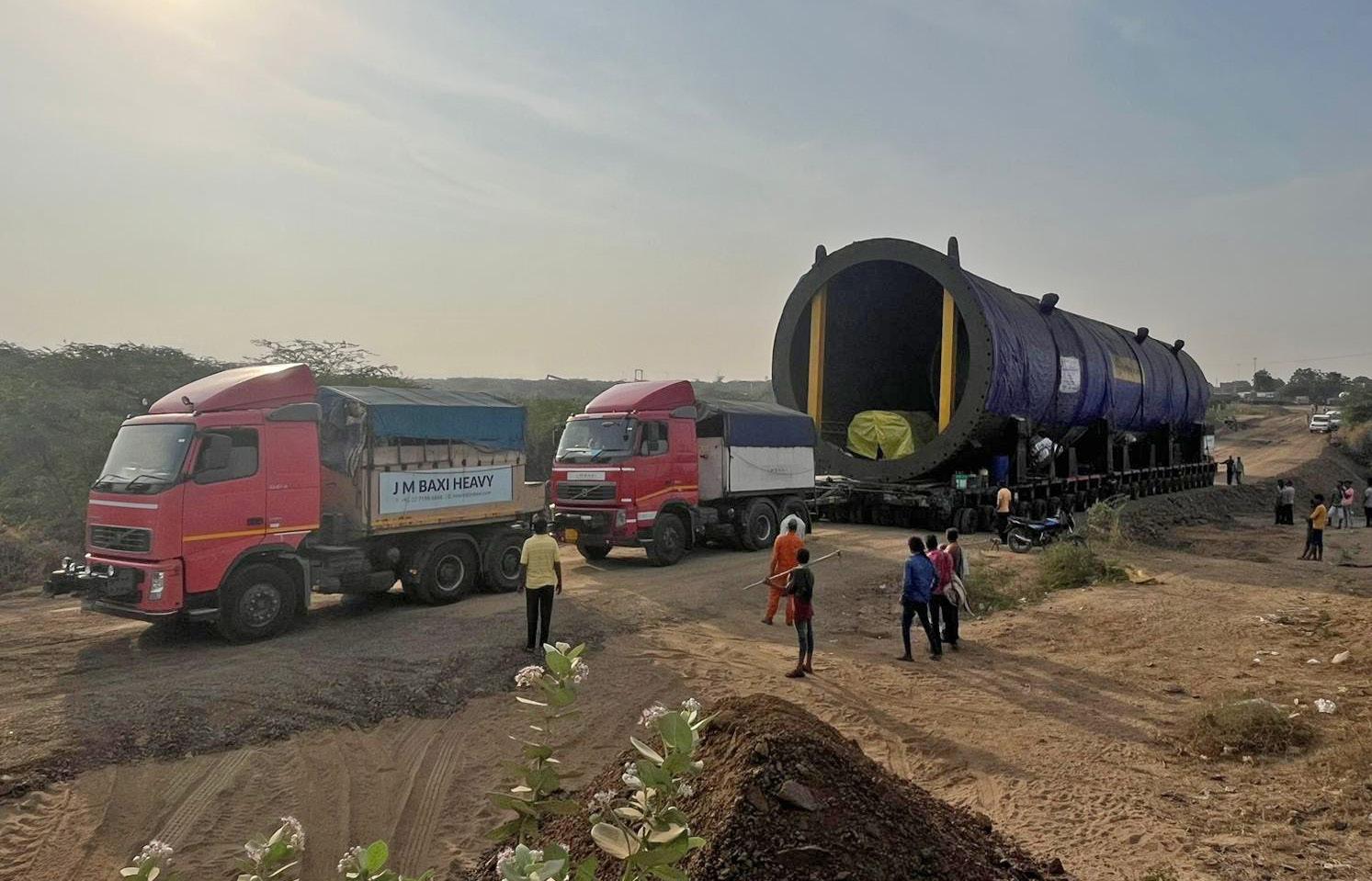
to build a green hydrogen plant at the Panipat refinery. The proposed facility will feature capacity to produce 10,000 tonnes of hydrogen per year and is expected to play a crucial role in India’s transition to cleaner energy sources.
Given the successful completion of the recent heavy haul project and the ongoing work at the refinery,
J M Baxi Heavy may find itself back at Panipat before too long.
Based in the UK, Malcolm Ramsay has a background in business analysis and technology writing, with an emphasis on transportation and ports.
*Breakbulk Exhibitor
*BGSN Member
The final approach to the refinery involved careful coordination on narrow roads.
Credit: J M Baxi Heavy


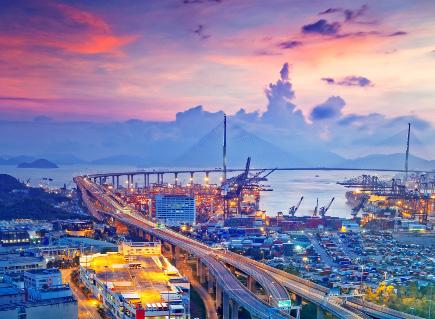
NEED RELIABLE PARTNERS TO HANDLE YOUR FREIGHT FORWARDING
Then join the international network with 100+ of the world’s top independent freight forwarders, located in 100+ countries, to increase your
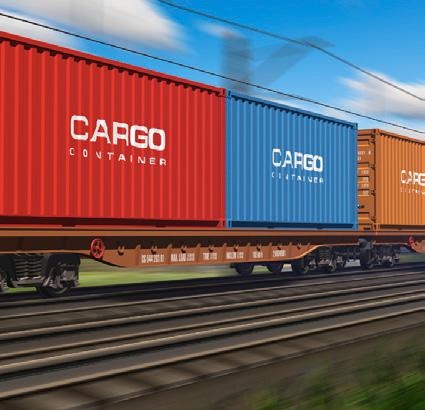
Cargo Connections provides independent forwarders access to a global network of agents who can handle their shipments, whilst working professionally under strict Membership Rules.
The ISO 9001 and ISO 14001 certified organisation offers a Restricted Representation policy, which means membership will only be offered to a limited

Freightbook is an
directory with over 2000 companies in more than 120 countries promoting their services on a global scale whilst at the same time driving traffic to their own websites.
now for only £50 for 2 years!



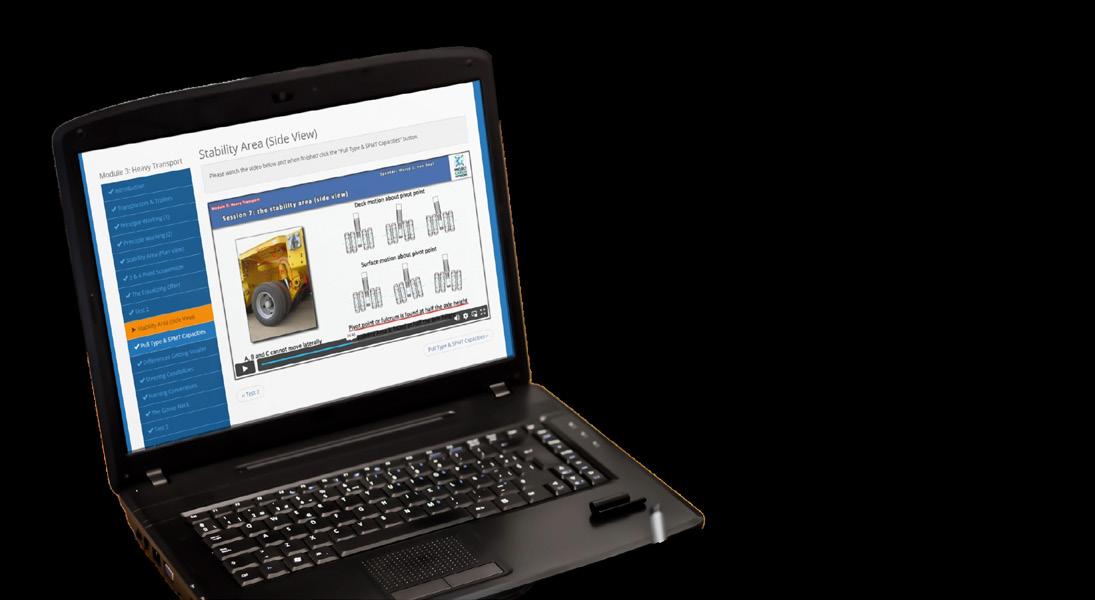

BIGGER AND BETTER THAN EVER
BREAKBULK EUROPE BY THE NUMBERS
Attendees
11,425
(All-time Breakbulk events record)
1,645
Meetings booked on the app Exhibitors 577
Global shippers in attendance
Rebooked for 2025 668
100%
BREAKBULK EUROPE BRINGS THE WORLD TOGETHER
Countries in attendance
Breakbulk Global Shipper Network members hosted
Air Liquide, Air Products, Alstom, Andritz, Aramco, Bechtel Corp., BMW, Bouygues Construction, BP, British Steel, Caterpillar, Chevron, Enel, Enercon, Enerkem, Europipe, FLSmidth, Fluor, GE, Glencore, Halliburton, Hitachi Energy, Jacobs Engineering, John Cockerill, Kiewit, Linde Engineering, McDermott, Mercedes-Benz, NOV, Nordex, Petrofac, Repsol, Saipem, Samsung Engineering, Shell, Siemens, SSAB, Sumitomo, Tata Steel, Technip Energies, Técnicas Reunidas, Tecnimont, thyssenkrupp, TotalEnergies, Vallourec, Vestas, Volvo, Volkswagen AG, Wärtsilä, Westinghouse Electric Company


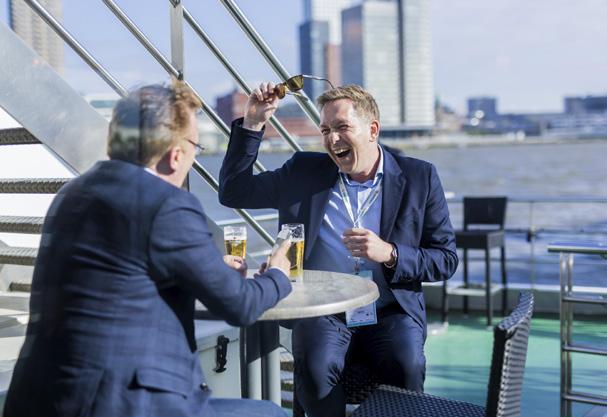

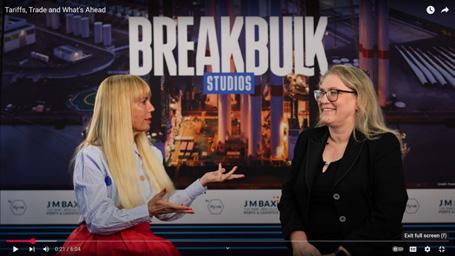


A recap of the stories that broke at Breakbulk Europe
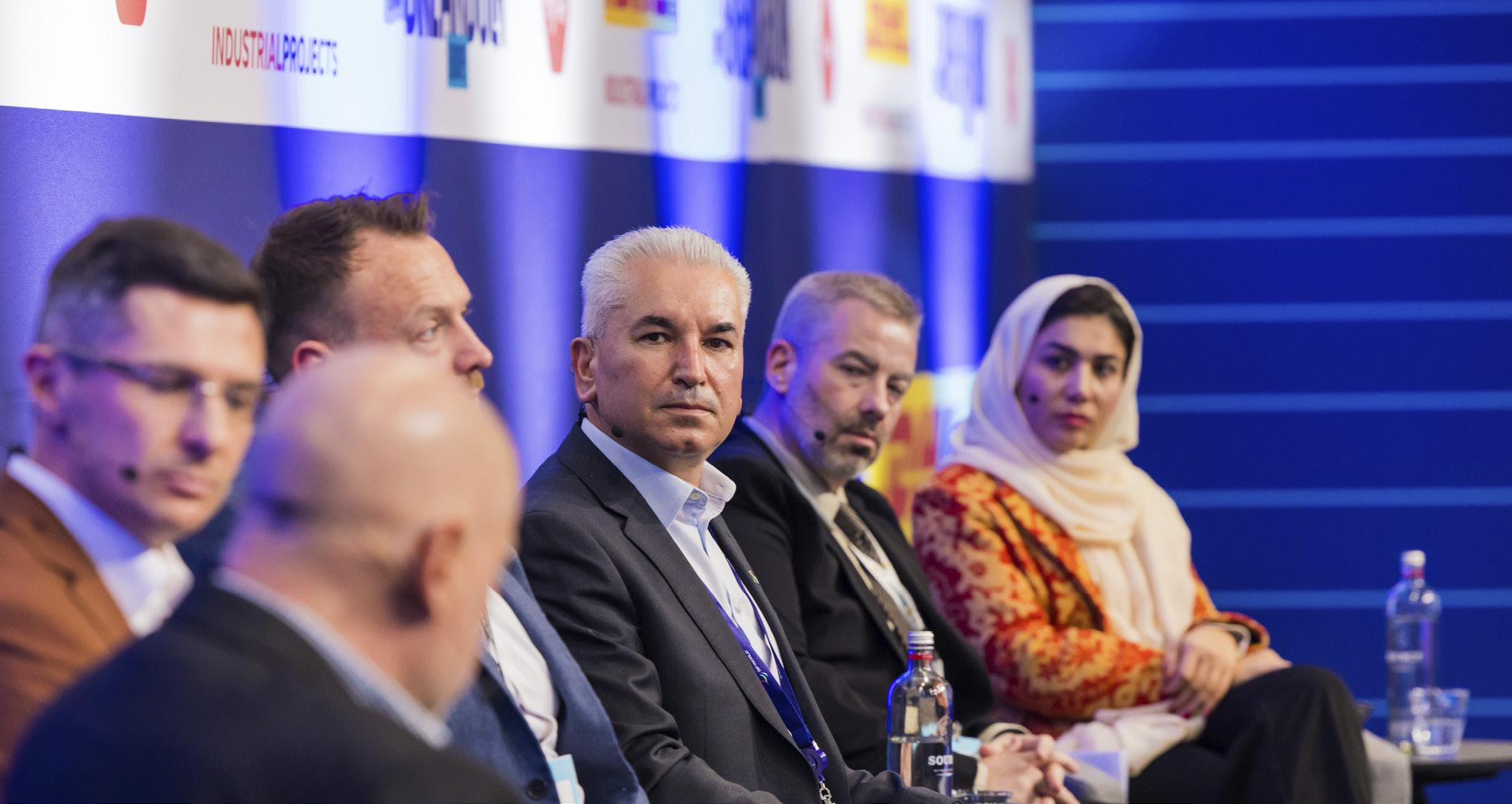
TACKLING EUROPE’S BREAKBULK BOTTLENECK
A fragmented permitting process, outdated roads and a lack of investment in logistics infrastructure are creating serious barriers for the effective movement of project cargo in Europe. That was the consensus among speakers at the “Modernizing Cargo Infrastructure: Overcoming Bottlenecks” session at Breakbulk Europe 2025.
The discussion, moderated by Dennis Devlin, managing director –USA at DT Project America, brought together representatives from logistics, port operations, EPCs and industry associations to explore practical solutions for Europe’s often creaking transport network.
Speakers included Andy Tite, global commercial head at DHL Industrial Projects; Edi Cioran, CEO of DP World Antwerp; Łukasz Chwalczuk, president of the Polish Heavy
By Luke King
Transport Employers Association and ESTA Europe board member; Mauro Varela Armas, logistics proposals manager at Técnicas Reunidas; and Parisa Kaveh, managing director at Nostrac Shipping.
Asked to identify the biggest challenge on the continent, panelists didn’t hesitate. “Bureaucracy,” said Chwalczuk. “When it comes to heavylift, there is no union in Europe.”
Kaveh agreed. “We have a lack of harmonized digital systems for permits within European countries, specifically for project cargo. You have to go to many governments, and that creates a very long process.”
From the shipper’s perspective, Varela Armas said the complexity leads to costly risks: “We face a lot of uncertainty. When we start executing, we see a huge amount of unforeseen problems. The issue
is political — the amount of money that gets lost because there’s no communication between countries. They all work in different ways.”
He added: “We need a single point in the European community that takes care of everything seamlessly — not country by country. We do this for other things in Europe, but we don’t do it for heavy-lift.”
For Cioran, the problem is rooted in historic priorities. “We are dealing with aging infrastructure. Twenty or thirty years ago, ports were rushing to develop container capacity. As a result, breakbulk was less represented in European ports.”
Developing new capacity for heavy cargo takes years, he warned. “If you want to build a new berth, you’re lucky if it takes five years, maybe ten, maybe more. With the drive for the energy sector,
(L-R): Łukasz Chwalczuk, Dennis Devlin, Andy Tite, Edi Cioran, Mauro Varela Armas, Parisa Kaveh. Credit: Richard Theemling Photography
especially renewables, our customers are asking for more breakbulk capacity and availability. This is not something you can build overnight.”
Kaveh highlighted persistent problems with quay strength, outdated bridges and labor shortages. “We need special corridors for heavy weight logistics. In the UK, we also have a lack of skilled workers — there’s a need for training schemes. Young people don’t see shipping as a career.”
Brexit, she noted, added another layer of confusion for operations related to the UK. “There were a lot of extra processes. It’s getting a bit easier now we understand the changes a little, but the challenges are similar to the rest of Europe: rural operations, weak bridges, very limited ports that can handle heavy-lift. We need new terminals.”
There may be some light at the end of the tunnel, however. “For the last 10 or 20 years, we have been trying to address this,” said Chwalczuk. “And it’s finally happening. The European Commission is working on a directive focusing on cooperation between member states and digitalization. The goal is harmonization, a onestop shop for permitting.”
Varela Armas welcomed the progress but said the private sector must also step up. “We have to work together. If I’m the EPC, and if I cannot execute the project because there’s no infrastructure, say in part of northern England where there is no port, it doesn’t work. One single organism needs to take care of ports, roads, permits — everything, and the requirements should be mandatory across Europe.”
Tite underlined the importance of early engagement and informationsharing. “No provider can be everything for everybody,” he said. “We need to speak to shippers to understand their pipelines way in advance. From there, we need to engage early, but also be cognizant of the procurement process.”
He added: “Our industry is fantastic through the variation of what we do but that’s also our Achilles’ heel. You can’t guarantee that what you need to deliver today is a consistent investment for the future, so governments are not always willing to make the infrastructure upgrades required. Our work is sporadic.”
Cioran stressed that ports can’t solve these problems in isolation.
“There’s a lot of expectation on ports but we’re only one player. Container terminals can do more breakbulk, but that relies on training and the new generation coming through. In the long term, the answer is investment through public-private partnerships and a long-term view of customer demand.”
*Breakbulk Exhibitor
*BGSN Member
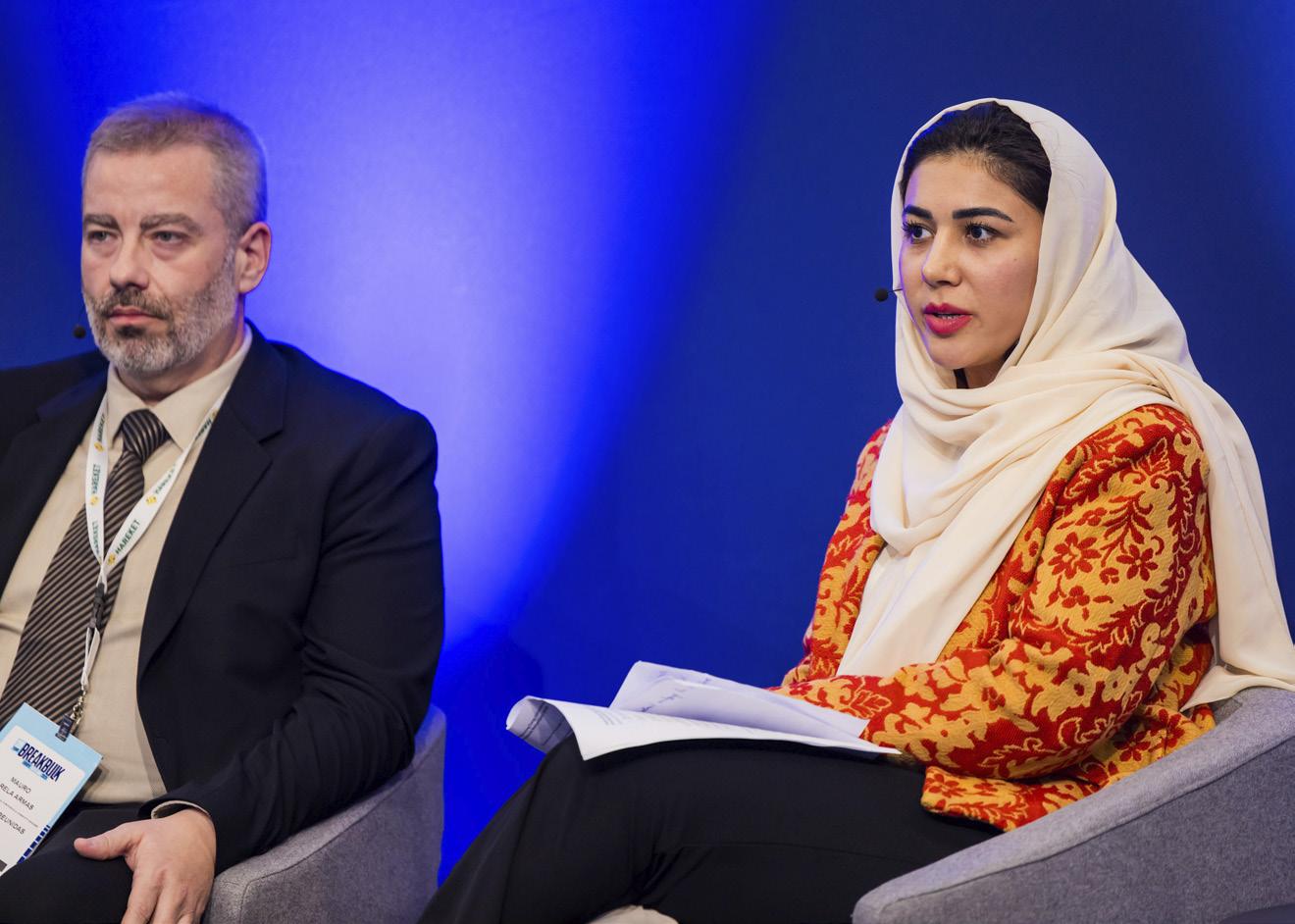

Mauro Varela Armas and Parisa Kaveh. Credit: Richard Theemling Photography
Dennis Devlin and Łukasz Chwalczuk. Credit: Richard Theemling Photography
NAVIGATING GEOPOLITICAL DISRUPTION IN GLOBAL TRADE
By Luke King
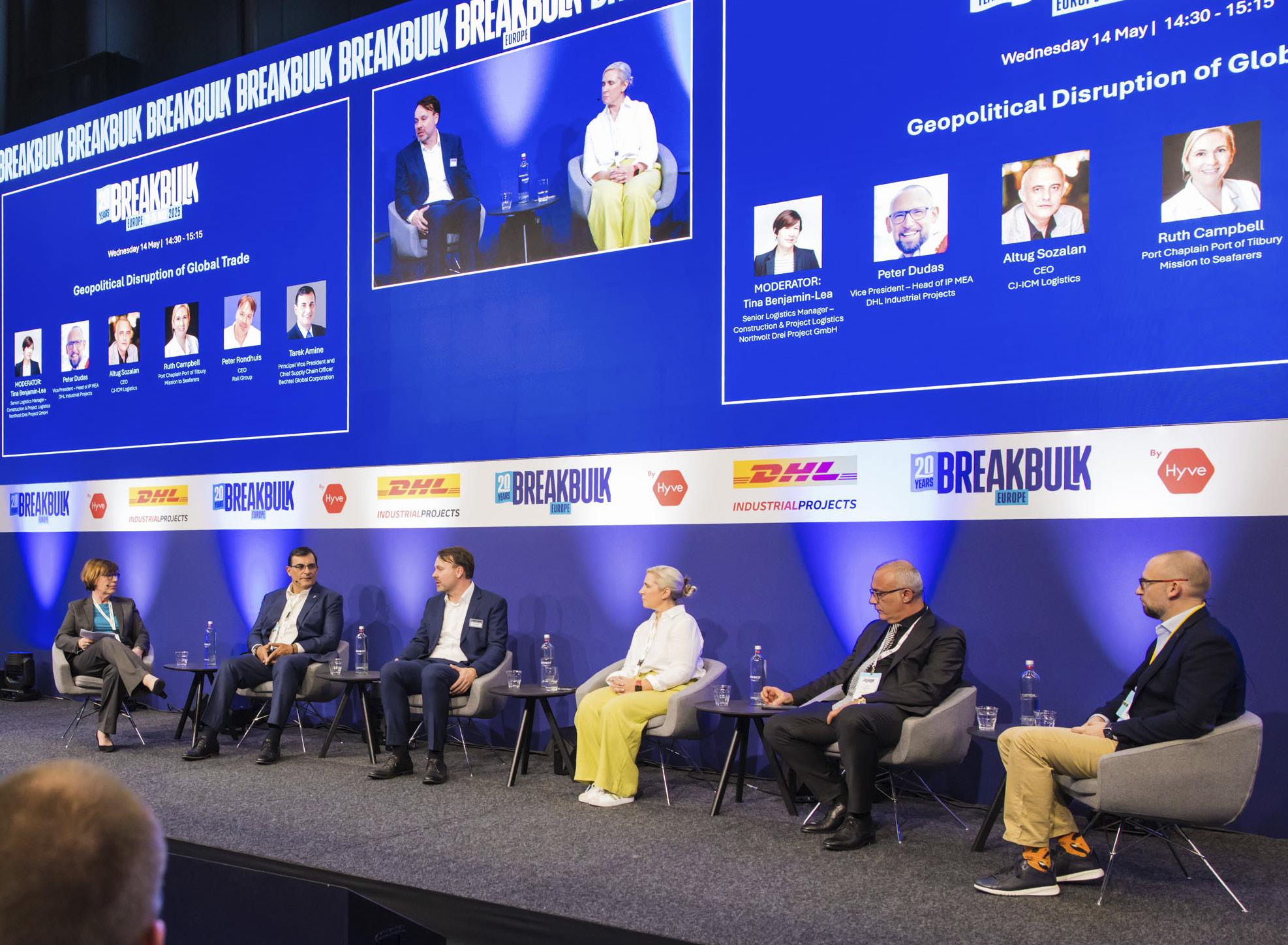
At Breakbulk Europe, a panel of senior project cargo leaders took the stage to examine the effects of geopolitical instability on global trade and how the industry is evolving to mitigate risks and respond to new realities.
Moderated by Tina BenjaminLea, senior logistics manager for Northvolt’s Drei project, the session titled “Geopolitical Disruption of Global Trade” addressed how trade wars, security threats and shifting alliances are complicating project logistics – from rerouted vessels to sanction compliance and rising tariffs.
Panelist Tarek Amine, principal vice president and chief supply chain officer at Bechtel, said the industry must plan around constant disruption, including challenges from Section 301 tariffs, a U.S. trade enforcement
tool that allows the government to impose duties on countries deemed to engage in unfair trade practices. Originally used to target China, these tariffs have had ripple effects throughout global supply chains.
“301 and other tariffs have a huge impact, but nobody really knows what the answer is yet,” Amine said. “We need to wait and see, but also develop strategies in parallel and that means deepening relationships with our partners.”
Amine emphasized that for a global, project-based business like Bechtel, supply chain maturity and close collaboration with owners and vendors are essential to navigating unpredictable terrain. “Your partnership is your navigation guide,” the executive said.
Peter Rondhuis, CEO of Roll Group, noted that Section 301 tariffs also affect shipowners by raising costs and contributing to shipper hesitancy.
“It’s constantly changing, nothing is a given,” he said. “We haven’t seen cancellations, but there’s fear among shippers about the high tax regime.”
Rondhuis added that governments must be made aware that “at the end of the day, the customer pays the bill.” He urged better communication and predictability around new trade measures: “If we can have longer lead times before these things come in, it’s at least more manageable.”
For DHL Industrial Projects, the key challenge lies in aligning longterm logistics planning with a news cycle that shifts by the hour. “We’re doing a good job reacting,” said
(L-R): Tina Benjamin-Lea, Tarek Amine, Peter Rondhuis, Ruth Campbell, Altug Sozalan, Peter Dudas. Credit: Richard Theemling Photography
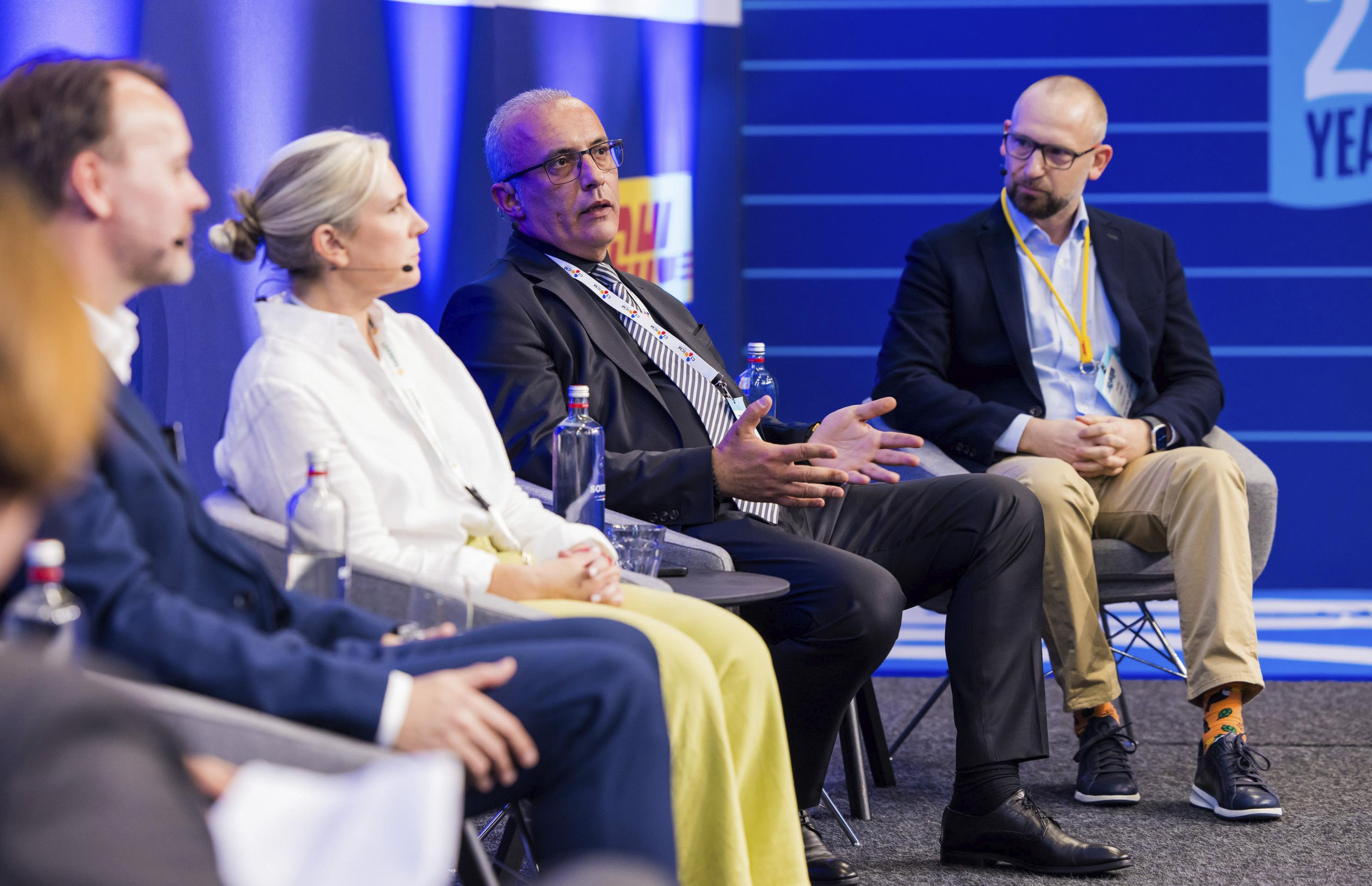
Peter Dudas, vice president and head of industrial projects MEA. “But the planning phase is where the real challenge lies. Our customer commitments span years, but we’re living in a world that changes daily.”
CEO of CJ-ICM Logistics, Altug Sozalan, said disruptions are more than just theory, they’ve already upended the routes his company traditionally relied on. “In the last three years, we’ve been impacted by the Ukraine-Russia conflict and the situation in the Suez Canal,” he said. “Even today, many EPCs are refusing to route via the Caspian Sea.”
Sanctions have become a growing area of concern. “That used to focus mostly on Iran, but now we’re having to build compliance structures around Russia, too. And not all clients are fully aware of the sanctions environment.”
In some cases, shipping decisions are having to be adjusted. Dudas said his team has had to consider alternative vessel options, including using Chinese carriers, to avoid high-risk regions such as the Red Sea. “That’s the environment we’re operating in,” he said.
Rondhuis said Roll Group made the early call to stop transiting the Red Sea altogether. “We turned
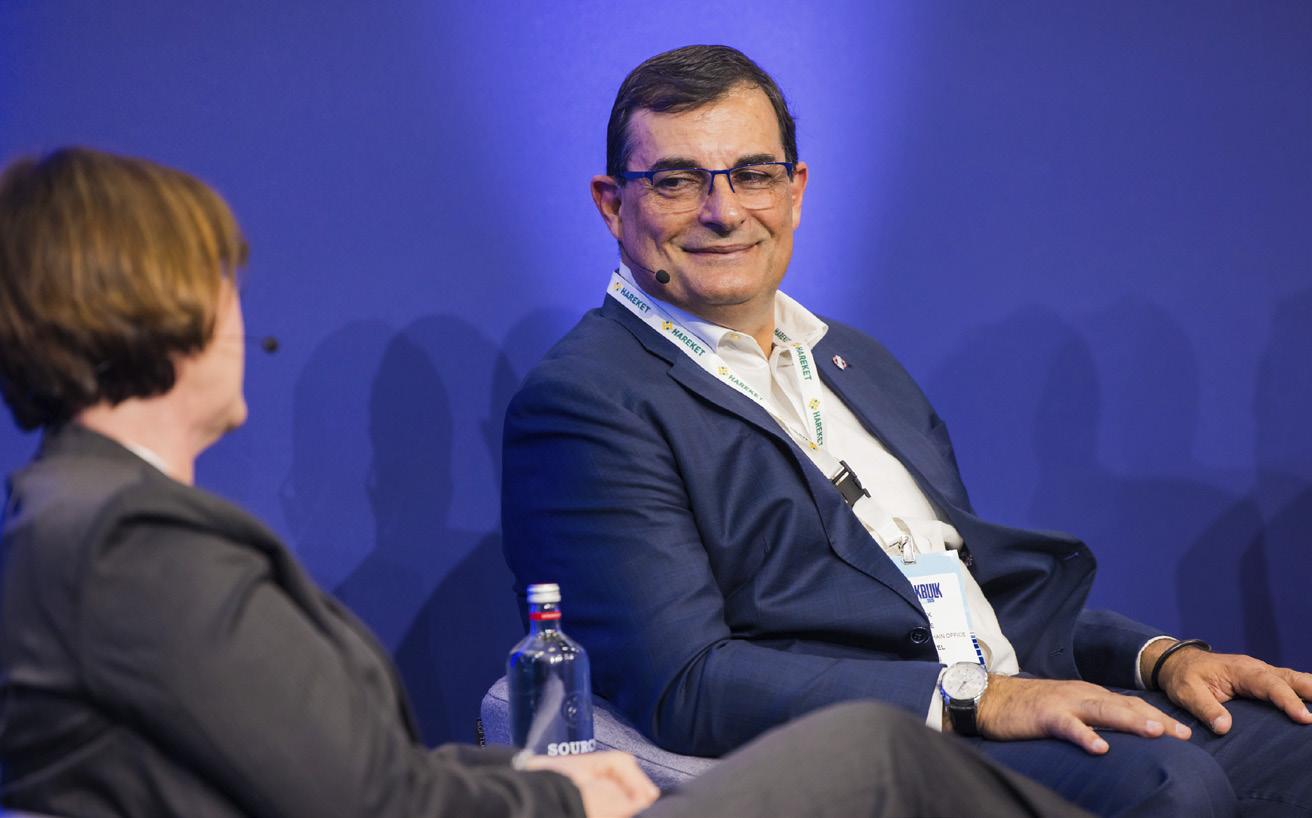
a ship around in the Suez Canal,” he said. “Our first priority is the crew, then the cargo, then our assets. It was an easy decision.”
But the human impact doesn’t end with cargo owners. Ruth Campbell, port chaplain at the Port of Tilbury’s Mission to Seafarers, highlighted the emotional toll on crew members operating in high-risk regions. “We’ve seen a rise in anxiety, loneliness and mental health issues,” she said. “Their families are worried for them, and many feel isolated. We have a moral obligation to support these people — without them, nothing moves.”
Campbell added that extended sea time can sometimes be a blessing. “Ironically, crew often enjoy longer transits, they’re not rushing in and out of port, they can socialize. Maybe that’s one silver lining.”
As the session closed, Dudas warned against normalizing instability: “Unpredictability encourages enhanced risk-taking in the supply chain, and that’s not good for our industry in the long term. What we need is stability.”
* Breakbulk Exhibitor
(L-R): Peter Rondhuis, Ruth Campbell, Altug Sozalan, Peter Dudas.
Credit: Richard Theemling Photography
Tina Benjamin-Lea and Tarek Amine. Credit: Richard Theemling Photography
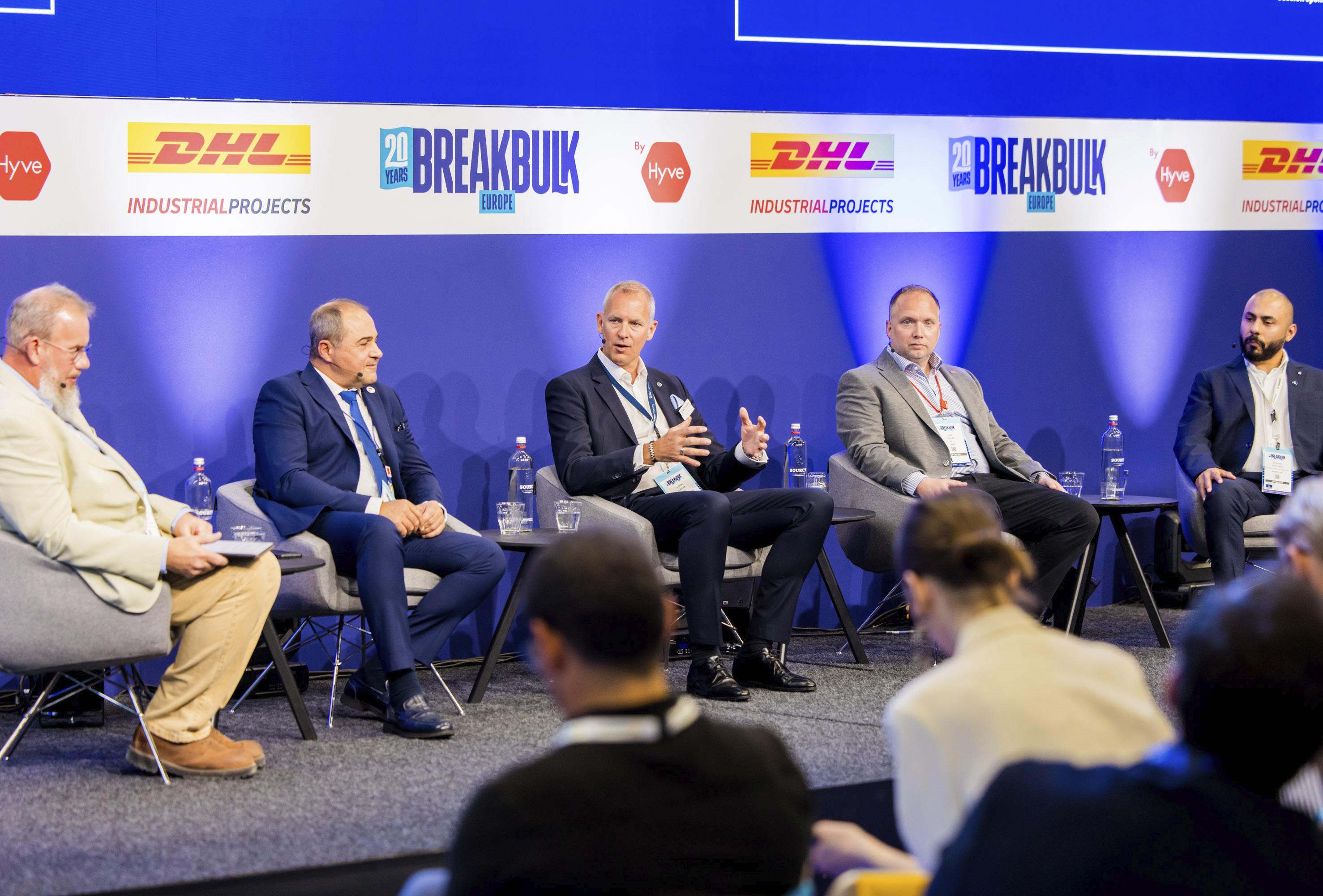
CREW SHORTAGES POSE “BIGGEST THREAT” TO CARRIERS
The looming threat of crew shortages has emerged as one of the most pressing challenges for the multipurpose vessel (MPV) market, according to a panel of industry experts at Breakbulk Europe in Rotterdam.
Speaking during a high-level discussion on future-proofing heavy lift and MPV fleet capacity, AAL Shipping CEO Kyriacos Panayides called for urgent action to secure skilled seafarers.
“It’s the biggest threat in the industry,” Panayides said. “We come from a group of ship management where we have 400 ships under management and 15,000 crew. The quality of officers and crew on board has been decreasing year by year, generation by generation. Recruiting new candidates is a challenge. The cost has also risen significantly, as
the traditional sources of lowercost crew from Asia and Africa are no longer as accessible.”
He said the increased demand for crew driven by the influx of newbuilds from shipyards, coupled with minimal scrapping of older vessels, was worrying. “The development in technology and in those regions that once sourced crew is far different from what it used to be. This is the biggest headache all ship management companies are now facing.”
Panel moderator Cris Partridge, managing director of Myrcator Marine & Cargo Solutions FZE, asked how the industry was addressing these challenges. In response, Panayides said the challenges were even more pronounced for MPVs, which require specialized skills to operate heavy-lift equipment and
By Liesl Venter
manage complex cargo operations.
“More especially in these ships, they’re specialized ships,” he said. “They require extra work time operating the cranes, extra work time looking after the lashing gear and all other equipment. These ships are even worse in terms of crew demand.”
According to Ulrich Ulrichs, CEO of BBC Chartering, while fleet owners work closely with crewing companies worldwide to source crew, experience remains a critical factor.
“We will always find people to sail a ship from A to B,” he said. “But in our industry, the crew needs to handle the cargo. They need to do the lashing, the loading, it’s so sophisticated. You don’t want just any stevedores touching a tandem lift with a 500-tonner. To get this experienced crew is a challenge. I think you have to source your own people.”
(L-R): Cris Partridge, Kyriacos Panayides, Ulrich Ulrichs, Lars Feller, Mohaned Alsheqaiq. Credit: Richard Theemling Photography
The panel agreed it was also important to ensure that crew members were content onboard vessels at sea. “You have to try and make life a bit more pleasant, whether it’s through internet access, better accommodation or paying more in the long run,” said Ulrichs.
“Maybe also the time they spend on board will be reduced to make or keep it more attractive, but it’s definitely a challenge for us. We see it in the overall performance of the fleet: where we have good crew on board, it’s a good time charter equivalent. If the owner or the crew don’t know exactly what they’re doing, you immediately see the result dropping. It’s a big factor for us in terms of margins.”
Lars Feller, CEO of dship Carriers , said crew accommodation was becoming an increasingly important
consideration when designing new vessels. “A lot, actually, because as the gentleman said, we have to make life more attractive,” he told listeners.
“Seafarers have been neglected for many years. When shipping was in a crisis, it became even less attractive and now we have to revise that. The problem is, if you reduce the time on board, you need even more people. But we have to find contractual items that make it attractive to go to sea again, and then you need to train them.
“It’s no surprise we’re running out of people. When shipping is in crisis, the first cuts are often to the marketing department and the crew on board.”
Mohaned Alsheqaiq, acting line vice president of Bahri Line, emphasized that crew members were central to the success of the
shipping industry. “Seafarers are the drivers for us. Without seafarers, none of us would be sitting here talking about ships,” he said.
“However, we do see a problem. The retention rate is decreasing because there are so many options in the market. Seafarers are moving around more than ever, and this is something we all need to address by being more accommodating and providing the services they need to stay. This is particularly important on specialized ships where the crew is responsible for loading, discharging, lashing, fitting and welding. You need to retain talent, but sometimes the market isn’t always making it easy.”
* Breakbulk Exhibitor *BGSN member
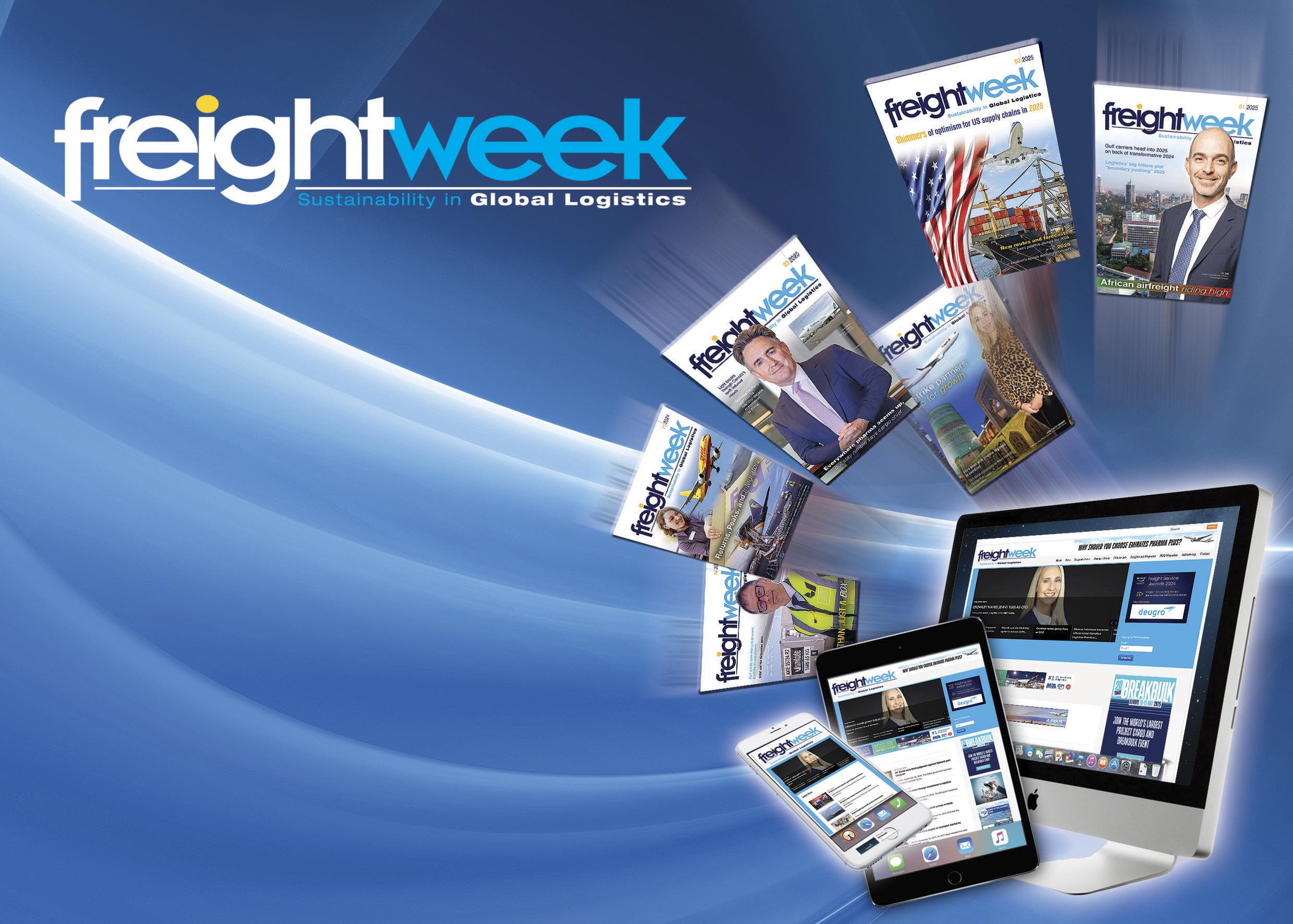

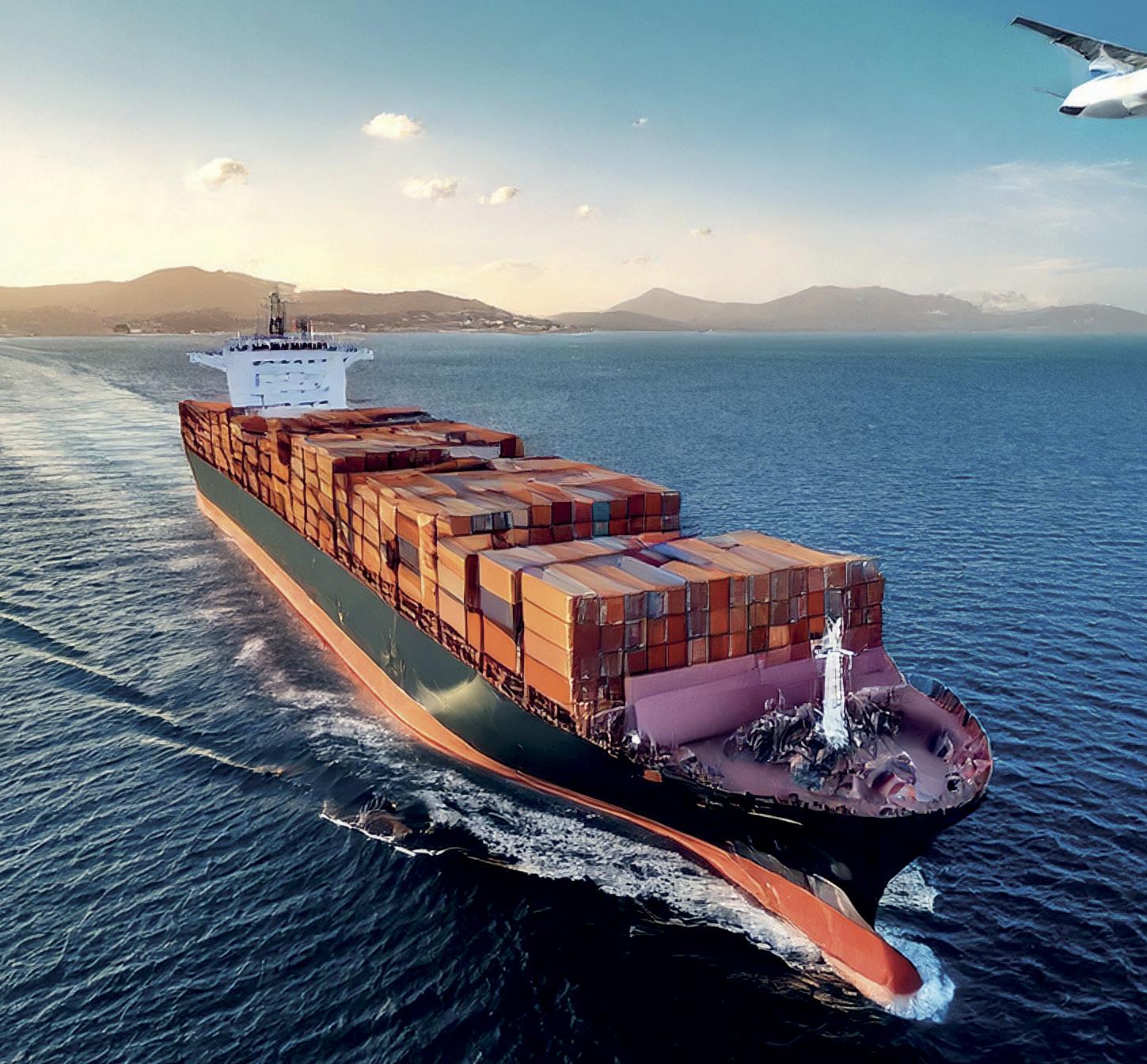


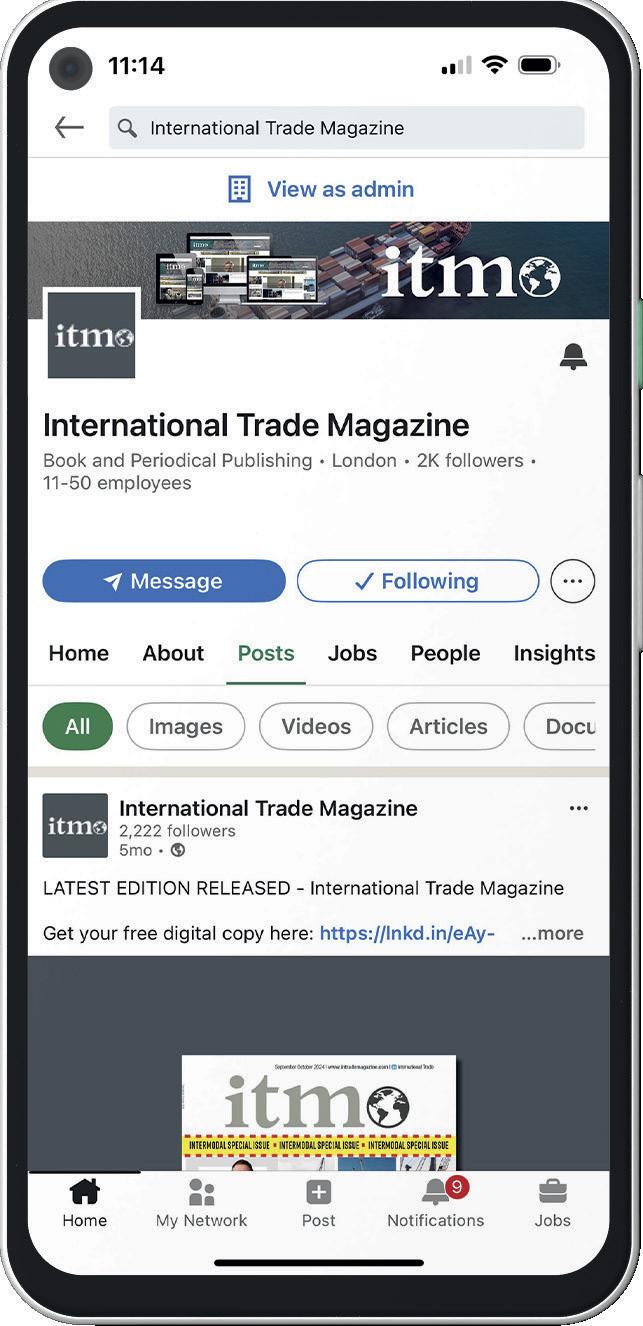
Breakbulk Events & Media’s monthly BreakbulkONE newsletter keeps the industry connected between Breakbulk events in Rotterdam, Houston and Dubai. Here’s a selection of recent subscriber favorites. Subscribe at https://breakbulk.com/page/one
DP WORLD READIES US$2.5 BILLION LOGISTICS INVESTMENT

DP World is planning to spend US$2.5 billion this year to expand its global logistics network, launching major infrastructure projects across India, Africa, South America and Europe.
The Dubai-headquartered ports operator said the investment will fund four major developments aimed at extending its end-to-end logistics capabilities and boosting capacity at strategic global hubs.
“This US$2.5 billion commitment reflects our confidence in long-term trade growth and our determination to build the infrastructure needed to keep the world connected,” said Sultan Ahmed bin Sulayem, chairman and group CEO of DP World. “We are building a unique array of assets and suite of capabilities, helping our customers stay competitive, support local economies and enable global access. Nobody can match
us for the diversity and breadth of our supply chain solutions.”
In India, DP World is building a new US$510 million terminal at Tuna Tekra in Gujarat, featuring a 1.1-kilometer berth and annual capacity of 2.19 million TEU. The facility will connect the country’s hinterland to global markets through a network of roads and railways.
Meanwhile, in Africa, the company is developing two major ports: a 450,000 TEU per year deep-sea facility in Banana, DRC, and the US$830 million Ndayane Port in Senegal, with an annual capacity of 1.2 million TEU.
In Ecuador, a US$140 million expansion at the Port of Posorja will extend the berth to 700 meters, allowing two post-Panamax ships to dock simultaneously. At the UK’s London Gateway, DP World is investing US$1 billion in two new berths and a second rail terminal,
aiming to make it Britain’s largest container port and adding 400 jobs.
DP World said the investments align with its strategy to build a globally integrated logistics platform, supported by more than 240 freight forwarding offices worldwide.
Separately, the company has also announced the launch of its first Singapore warehouse. The 13,000 square-meter multi-user bonded warehouse at the Mapletree Benoi Logistics Hub is the latest addition to its Asia Pacific warehousing network and follows the recent launch of similar facilities in Incheon, South Korea and Hong Kong. Supported by its global network of ports, terminals, and freight forwarding services, DP World now manages over 800,000 square meters of warehouse space across the region.
*Breakbulk Exhibitor
Breakbulk operations at Jebel Ali in the UAE, the region’s busiest port. Credit: DP World

ALLSEAS TO DEVELOP SMR s IN PIVOT TO NUCLEAR ENERGY
Allseas has unveiled a bold five-year plan to design, develop and deploy a small modular reactor (SMR) designed for energy-intensive offshore vessels and onshore industrial clusters.
The initiative, building on four decades of offshore engineering expertise, aims to deliver stable, high-density power to sectors facing mounting decarbonization and energy security pressures. Allseas has opted for high-temperature gas-cooled reactors (HTGRs) in the 25 electric megawatt (MWe) range for safety, zero-emissions output and resilience in extreme conditions.
According to Allseas, the maritime sector accounts for 3% of global CO2 emissions, and that alternative fuels such as hydrogen, methanol and ammonia currently face limitations in availability, scalability and cost, especially for remote, energyintensive operations. Nuclear, the company said, can fill that gap.
Onshore, the reactors promise
to ease grid congestion and lower energy costs for industrial clusters, offering consistent carbon-free heat and power as renewables fluctuate.
HTGRs use TRISO fuel, tiny poppyseed-sized particles with a uranium oxide core sealed in multiple protective ceramic layers. These layers safely contain fission products, even in extreme conditions. The reactor is “passively safe,” meaning it self-regulates and stays cool without active controls or external cooling, even in the event of a failure.
Allseas is also eyeing circular waste strategies, including graphite reuse and spent fuel reprocessing, to minimize environmental impact.
“As a family-owned company, continuity and preservation for future generations are central to how we work,” said Stephanie Heerema, project manager for nuclear developments at Allseas. “We’ve built our reputation on turning bold ideas into ground-breaking solutions to
meet the offshore industry’s evolving needs. That spirit of innovation, grounded in responsibility and reliability, drives everything we do.”
Allseas plans to advance the SMR design this year, followed by prototyping and regulatory engagement with bodies including the Dutch Authority for Nuclear Safety and Radiation Protection (ANVS), the International Maritime Organization (IMO), the International Atomic Energy Agency (IAEA), and Lloyd’s Register.
Heerema said the goal was to start production at a dedicated facility by 2030.
“Initial deployment will likely begin on land while offshore regulations are finalized, followed by application on our own vessels and broader industry adoption. This aligns with our own sustainability targets, 30% emissions reduction by 2030, and net-zero operations by 2050.”
*BGSN Member
Allseas is developing an onboard SMR to power its offshore vessels.
Credit: Allseas
PORT OF ANTWERP-BRUGES LAUNCHES EUROPE’S FIRST ALL-ELECTRIC TUG
The Port of Antwerp-Bruges has launched Volta 1 , Europe’s first fully electric tugboat.
The reverse stern drive (RSD) tug weighing 607 tons and measuring nearly 25 meters long has been developed alongside Dutch shipbuilder Damen and follows previous world firsts at the port such as the hydrogen-driven Hydrotug and the methanol-driven Methatug .
Powered by a 2,782-MWh battery, the fully emissions-free Volta 1 can operate for up to 12 hours and recharge in just two hours using a 1.5-megawatt (MW) charging station. The vessel has been designed with a double bow and a patented Twin Fin skeg and can be deployed for both forward and backward operations.
Its 70-ton towing capacity makes it as powerful as its diesel counterparts, the port said.
“The Volta 1 is a powerful example of our strategy to actively integrate sustainable technology into our operations,” said Jacques Vandermeiren, CEO of Port of Antwerp-Bruges. “As a global port, we are taking our responsibility to pull the maritime sector into the energy transition. The Volta 1 , together with the Hydrotug, Methatug and RSD tugs, represents a tangible step towards a climate-neutral port by 2050.”
Volta 1 is part of Antwerp-Bruges’ wider renewal of its tugboat fleet and was launched alongside five other energy-efficient RSD tugs. The tug service accounts for some 85% of port-related CO2 emissions, he said.
Damen, which built the world’s first electric tugboat in 2022 in New Zealand, began construction of the six vessels two years ago in Vietnam. The tugs arrived in Antwerp in late 2024 after a journey of more than 10,000 kilometers.
“Achieving this European first in the year when we are also celebrating 150 years of tug service makes it
Port of Antwerp-Bruges launches Volta 1, Europe’s first electric tugboat.
Credit: Port of Antwerp-Bruges
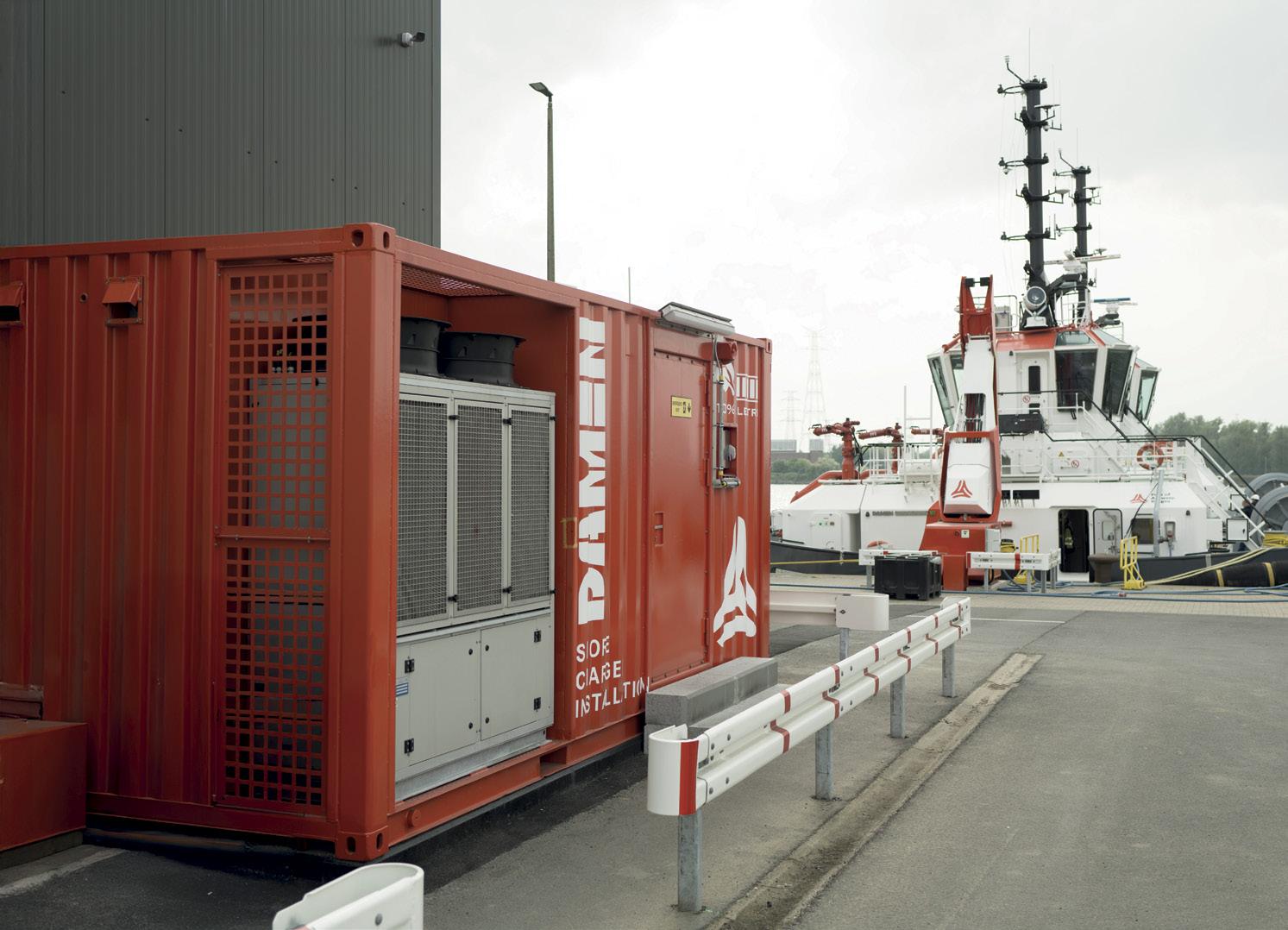
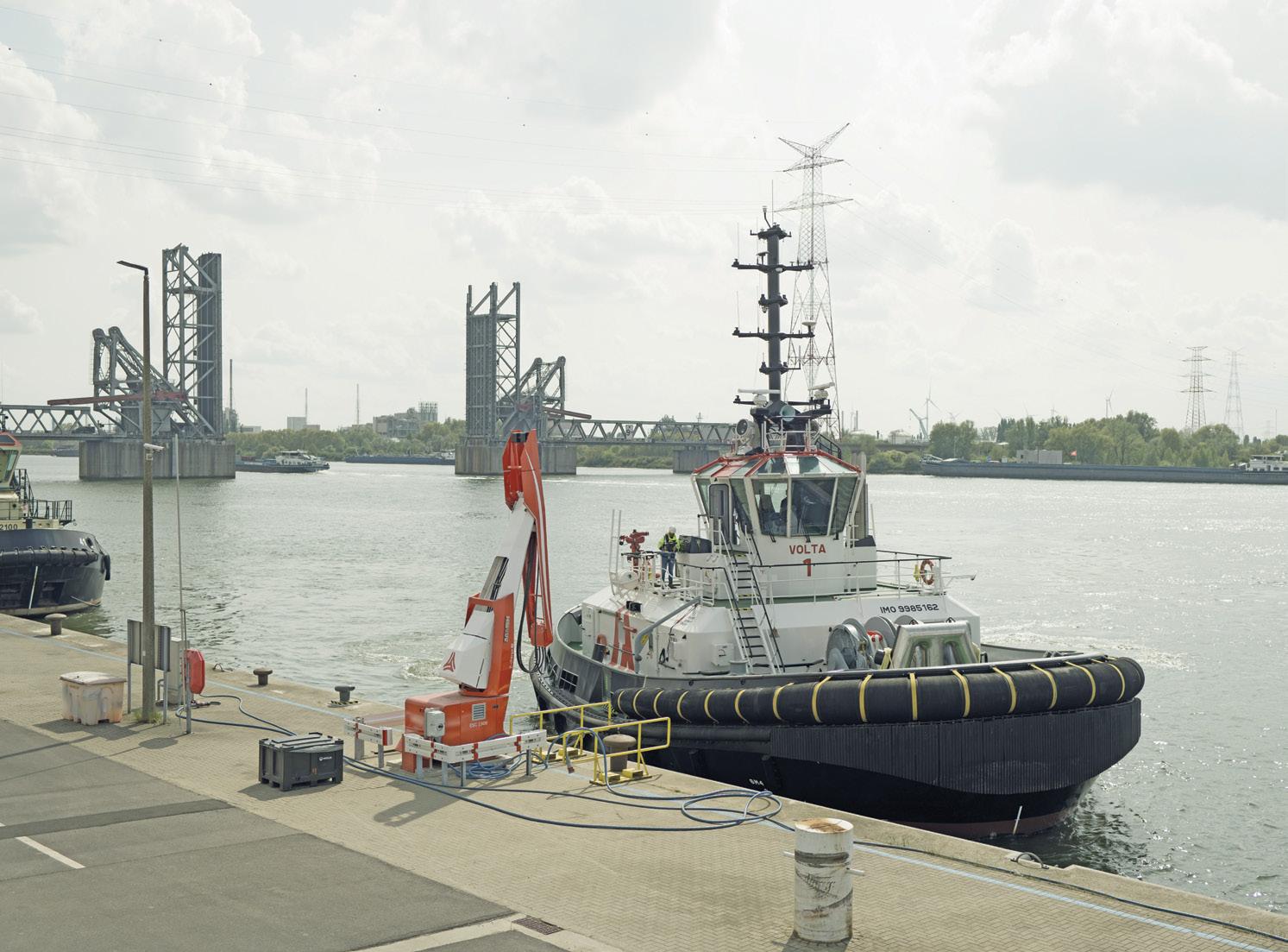
both symbolic and historic,” said Johan Klaps, president of the board at Port of Antwerp-Bruges. “It shows how our port and region continue to invest in sustainable
*Breakbulk Exhibitor innovation. Even in challenging times, we resolutely choose the future and take a leadership role.”
PROJECTS IN THIS ISSUE
Americas
Project: Pier Wind
Story: Two States, Two Strategies (p. 50)
Country: U.S.
Company: Port of Long Beach Sector: Renewables
Project: Corpus Christi Liquefaction Stage 3
Story: Two States, Two Strategies (p. 50)
Country: U.S.
Company: Cheniere Energy Sector: LNG
Project: Rio Grande
Story: Two States, Two Strategies (p. 50)
Country: U.S.
Company: NextDecade
Sector: LNG
Project: H2Hubs / ARCHES
Story: Two States, Two Strategies (p. 50)
Country: U.S.
Company: ARCHES
Sector: Hydrogen
Project: CP2
Story: 10 US Policies Under Trump (p. 56)
Country: U.S.
Company: Venture Global Sector: LNG
Project: Alaska LNG
Story: 10 US Policies Under Trump (p. 56)
Country: U.S.
Company: Glenfarne Group Sector: LNG
Project: CAREM25
Story: Nuclear Hopes Stir in Latin America (p. 74)
Country: Argentina
Company: CNEA
Sector: Nuclear
Project: Angra 3
Story: Nuclear Hopes Stir in Latin America (p. 74)
Country: Brazil
Company: Eletronuclear Sector: Nuclear

Middle East & Africa
Project: Port of El Hamdania
Story: North Africa Gains Ground as Trade Flows Shift
South (p. 86)
Country: Algeria
Company: Algerian Port Authority
Sector: Construction
Europe
Project: Bay of Biscay HVDC
Story: Iberian Blackout: A “Wake-Up Call for Europe” (p. 92)
Country: France / Spain
Company: Red Eléctrica, RTE Réseau de Transport d’Électricité
Sector: Power
Asia
Project: Hai Long Offshore Wind
Story: Logistics Providers Brace for Taiwan Energy Boom (p. 98)
Country: Taiwan
Company: Gentari, Mitsui, Northland Power
Sector: Renewables
Project: Fengmiao I Wind
Story: Logistics Providers Brace for Taiwan Energy Boom (p. 98)
Country: Taiwan
Company: Copenhagen Infrastructure Partners
Sector: Renewables
Project: Guantang LNG Terminal
Story: Logistics Providers Brace for Taiwan Energy Boom (p. 98)
Country: Taiwan
Company: CPC Corporation
Sector: LNG
Project: Keelung LNG receiving terminal
Story: Logistics Providers Brace for Taiwan Energy Boom (p. 98)
Country: Taiwan
Company: Taiwan Power Company
Sector: LNG
Project: Panipat Refinery expansion
Story: J M Baxi Sets Heavy-Haul Record for IOCL Plant (p. 102)
Country: India
Company: Indian Oil Corporation (IOCL)
Sector: Downstream
